India Part 7: On the road as backpackers in Himachal Pradesh & Ladakh
Ladakh: How we rediscovered our joy in travelling in the Himalayas (61)
Finding tranquility in a remote valley
After the first week in India, in which all our plans were thrown overboard and we were questioning our entire trip, we’ve escaped to the mountains. We are in the remote Tirthan Valley at the end of the valley near the village of Gushaini. The valley is accessible by public transport and has some tourist infrastructure, but without many tourists. A good combination in our opinion. But we soon learn that the lack of Indian tourists is clearly due to the extreme flooding and landslides during the monsoon this summer. Entire villages were washed away and some roads are still inaccessible. Many accommodations in the valley are empty and cafés and restaurants remain closed. A desolate picture in this picture-book landscape. The few locals we meet on the streets are surprised that we are here at all, as foreign tourists rarely visit the valley.
We stay in the lovely Raju Bharti’s Guesthouse near the village of Gushaini, which is only accessible via a basket cable car, a unique arrival. As there are only a few guests, we get our own cottage with a huge balcony. It’s so beautiful that we’d like to stay for a longer time. At night we can listen to the sound of the river flowing and the cottage has got this wonderful smell of fresh wood. We feel at home right from the start. So comfortable that we don't go out until the afternoon on the first day. Our balcony was just too cozy and we definitely needed some peace and quiet to process everything that has happened the last few days (find out more about our bumpy start in India in our blog Nr. 59).
We hike to the Chhoie waterfall, a very idyllic waterfall surrounded by greenery. Apart from us, there is only one other woman in traditional dress. She is carrying a large basket on her back and is busy chopping wood with an archaic machete. Otherwise, we are alone in this almost untouched natural setting next to a clean river. A rare sight in India. Back in the only open café, we treat ourselves to a sweet chai and observe everyday life, which suddenly has a lot to offer.
First, various men with their traditional kullu hats and large drums appear and then a stooped man joins them, carrying the local village deity on his back as he walks to the temple. Today is a special day, as this procedure only takes place once a year. On the way to the temple, the locals are blessed and rupee bills are given to the deity. And then we turn around and a walking curtain comes towards us, under which a man is hidden somewhere. We smile at each other, the whole situation is just too bizarre. I do a quick google search for the local deities and find what I'm looking for. This most certainly is the Shringi Rishi, but the man from the café quickly explains that it's a different and very regional deity and certainly not the Rishi (guru) who is worshipped 30 km away. A moment that can only happen in India. Sometimes it's just wonderful to be here.
Hike to the entrance of the Great Himalaya National Park
The next morning, India once again shows its arduous side. The most popular and easy hike in the Tirthan Valley leads to the entrance of the Great Himalaya National Park, which can only be entered with a permit. The trail is easy to find and safe to walk. Recently, however, a tour guide has been required as a woman had a fatal accident a few months ago. So now we trot after a local guide, even though there is really only this one path and it would be very difficult to get lost. But in India there are so many incomprehensible rules and questioning them never leads to a satisfying answer. It is what it is, again. It's starting to sound like a repetitive mantra of our trip: It is what it is. Why is it just so hard to accept sometimes?
After the small village of Ropa, there is nothing but wilderness and we encounter very few people. When we finally reach the entrance to the national park, we would like to hike on straight away and camp in the park for a few days. It gets really wild and lonely and we know that on the other side of the huge mountain ranges lies the mystical Spiti Valley, our original destination.
We return to our cozy cottage in the afternoon. In the evening, we are spoiled with delicious home-made food with vegetable curries, papadams, rice, vegetarian momos and a sweet dessert. We would have loved to stay longer in this homey place, but we want to see a little more of Himachal Pradesh and decide to head towards Manali the next day.
A test of patience on the way to Manali
We sit down at the side of the road and wait for the local bus that will take us to Kullu and on to Manali. It should actually take us three hours to cover this distance, but once again it will be a day's journey. If you want to travel through India by public transport, you have to be very flexible. This is not only because someone whistles every few meters (the unofficial “please, stop here” – sign), but also because of the many landslides that hit Himachal Pradesh in the monsoon months.
This monsoon season was particularly extreme and many stretches of road were washed away. Everywhere we see workers using only their bare hands to raise stone cage walls as new foundations for the road. The men and women here are doing hard work and the children are already helping too, only once do we see an excavator on the road. But we doubt very much whether these walls will really withstand a future flood. No one directs the traffic and so everyone is constantly blocking each other until nothing moves anymore. As a bus driver in India, you need nerves of steel. As spoiled backpackers we don’t have that patience and at every stop we get upset that things aren't moving forward instead of just staying "shanti". We should know better after so many months in India.
Laid-back traveller vibe in Vashisht & Old Manali
We reach Manali in the afternoon, a popular hangout on the former hippie trail due to the famous hashish that grows on the surrounding slopes and the beautiful mountain landscape. The place still attracts hippies and backpackers today, but also Indian tourists on their honeymoon, who mainly visit New Manali and stroll around on the mall in the evening.
We first base ourselves 3 km further in the village of Vashisht, known for the apparently 4000-year-old Vashisht temple, the hot springs and an alternative atmosphere. For the first time this September, we see a handful of tourists in India, but there is still very little going on and you can clearly see the effects of the monsoon, which prevent many local tourists in particular from visiting the mountains. As a result, stores, cafés and restaurants remain closed and the choice is limited. There are a few German bakeries, which, as always in India, are run by Nepalis, and some simple eateries serving the usual traveller’s fare with a mixture of Indian, Israeli and European cuisine. Nothing tastes particularly good, nothing particularly bad.
The village of Vashisht has flair with its mixture of backpacker-hangout and normal village life with cows in the front garden and some beautiful wooden houses standing next to faceless new buildings. Dishes and clothes are washed at the wells around the village and sports lessons for the little ones take place in the evening on the square in front of the temple. Right now, it’s the season for the apple harvest and everywhere apples are being diligently sorted and carried around in large baskets. It’s a busy time, even in the early morning.
Some long-term travellers also live here, some of them for years. They don't seem to work and speak almost no Hindi. The contrast could hardly be greater: On one side, the villagers who work from dawn to dusk and next to them the travellers who sit around in cafés, smoke marijuana and ponder the meaning of life. Of course, that's perfectly fine and we always find the exchange with them very interesting, but the question still arises as to what the locals think of them. Of people who are simply here, but don't have to participate in everyday life and don't have to work, as they live off their savings, inheritance or pensions from their countries of origin. For us, it’s unthinkable to stay in such a small place for so long without knowing the local language and being involved in some way. But perhaps we’re judging too quickly, as we don't know the stories behind.
We change location and move on to Old Manali, which still has some traditional buildings in the old part of the town and some interesting temples. It’s clearly more touristy than Vashisht with many stores selling Tibetan jewelry and the famous woolen shawls of the Kullu region, aimed at Indian and foreign guests. There are especially many Israelis and Russians here. After the quiet Tirthan Valley, we wanted to enjoy a little more choice again and decide to stay for 3 nights and find one of the cheapest rooms on our trip so far with USD 10.- per night, including a large balcony with mountain view. The perfect place to sit and figuring out new plans, as we still have two weeks left until our onward journey to Nepal. Looking at the weather forecast, it quickly becomes clear that staying in Manali and the surrounding area is not an option, as there will be some heavy rains the next weeks.
Spontaneous change of plans
So where should we go for the remaining time? The place with the best weather is clearly Leh, the capital of Ladakh. Images of picture-perfect gompas and arid mountains appear before our eyes. I’ve wanted to visit Ladakh for a long time and now we are so close. We want to take a day to decide, but it’s not even necessary, as we’re both full of anticipation at the thought of visiting Ladakh. Now we have to organize a transfer, book a hotel in Leh and then we're ready to go. We still can't quite believe that we could be in Leh tomorrow.
Ju-leh Ladakh: Journey to the land of high passes
The mysterious Ladakh (part of the Indian state of Jammu & Kashmir) is nestled between the imposing mountain ranges of the Himalayas and Karakoram and is the northernmost and least populated region of India. Until the 1970s, Ladakh was closed to tourists, and since then the high mountain passes have kept out anyone who didn’t want to come here urgently. A remote mountain region with an extreme climate, little rainfall (100mm per year), snow-capped peaks and a barren mountain landscape with little vegetation. The land of snow leopards, yaks (and yetis?). And despite the inhospitable conditions, people have settled here and built impressive Buddhist monasteries. It's a little corner of Tibet marooned in the furthest reaches of India.
Ladakh has an estimated population of 301,000, is about the size of England and is often referred to as a "mini-Tibet", as the region was an independent Tibetan Buddhist kingdom for almost a millennium. For a long time, Ladakh was also an important hub along the old Silk Road between China, Central Asia and India and experienced a cultural and economic boom as a result. Dried apricots, Himalayan salt and of course the fine pashmina wool, one of the most sought-after and expensive types of wool worldwide, were traded. We recognize some Central Asian influences in the architecture, which reminds us of the traditional Pamiri houses in Tajikistan with their wooden pillars and decorated ceilings. Yet another circle that closes on this trip. The majority of Ladakhis live in the countryside as self-sufficient farmers or earn money with the tourists, who come here in the summer months to experience authentic Tibetan culture, to see the breathtaking landscapes with high passes and mountain lakes or to hike in remote areas.
Epic journey to a different world
The journey to Ladakh is either via a spectacular flight from Delhi to Leh (3500 m.a.s.l.), via a scenic road from Srinagar and Kargil or over lonely high plateaus, winding roads and four high passes from Manali by bus or private transfer. We take a cab for CHF 30 per person for the 14-hour journey from Manali to Leh. Unfortunately, the jeep we booked turns out to be a normal car and it’s a very, very bumpy ride, which once again costs us a lot of nerves and patience.
Between Manali and Leh is probably one of the most epic roads in the world, a destination for motorcyclists and some hardy cyclists. The Manali-Leh Highway (479 km) is absolutely spectacular and only passable in summer. The journey takes us over four very high passes, the last of which is the highest pass of our trip so far at over 5300m. The passes serve as a weather divide between the humid and fertile plains of India and dry Tibet and at the same time separate the Hindu-influenced Kullu valley from the higher valleys of Spiti, Lahaul and Ladakh, where the original Buddhist culture has been preserved due to the remoteness.
The journey first leads along green hills and rivers to Keylong, the main town of Lahaul. There are still a few small villages around with some infrastructure and simple dhabas where noodle soups, parathas and sweet masala chai are served. This is followed by a stretch of several hundred kilometers without any settlement at an altitude of over 4000 meters along mighty gorges and a barren, high alpine plain. The steep mountain massifs become increasingly monumental and we are reminded of the Pamir Highway. What an epic landscape for a cycle tour! We look longingly out of the cab window and would much rather be out and about on our bikes right now, even though we probably wouldn't have the stamina for it after our long break from cycling. After the plateau, the road winds its way up to the Taglang-La (5330 meters), the highest pass of our trip and one of the highest motorable passes in the world.
After a very short stop in the thin mountain air, we now head down to Ladakh. The first small villages with their whitewashed houses, stupas and Tibetan prayer flags appear like a mirage after the deserted area; we have reached the mighty Indus Valley. We’ve reached Ladakh and are surrounded by three of the highest mountain ranges in the world, and it seems as if we have stepped onto another planet.
Arrival in Leh, one of the most pleasant cities in India
Leh has always been an important trading post along the ancient Silk Road and is one of the highest permanently inhabited cities in the world. Today, Leh's strategic value can be seen above all in the extensive military areas around the city. The first impression of Leh is lots of traffic and dust everywhere. But look closer and you’ll find the stunning Leh palace, an old town with a bustling bazaar and whitewashed houses, the traffic-free pedestrian street, hidden stupas and temples and many good cafés and restaurants. Leh offers enough variety for a longer stay and is one of the most pleasant cities in India for us so far. Where else can you get flat white with soy milk and good Wi-Fi at 3500 meters? We briefly think about Murghab in Tajikistan, which is at the same altitude and yet is a completely different world (Blog Nr. 53 - Cycling on the roof of the world).
Leh has definitely adapted to the tourists. We like it immediately. The air here is clearer, the sun is shining and somehow it also smells different. This is not the India we know. The people look different, have dark hair, often wear traditional Tibetan costumes and look more like Mongolians or Tibetans. If we had been blindfolded and dropped off here, we probably wouldn't have guessed that we were still in India.
We are particularly surprised by the Ladakhi cuisine, which was previously unknown to us. Like Tibetan cuisine, the dishes are rather simple, filling and rich in calories with lots of stews, soups and pasta and generally less spicy than Indian cuisine. In addition to the known Tibetan dishes such as momos and the noodle soups thukpa and thentuk, there are some local specialties that we would like to share with you.
Must-eats of Ladakhi cuisine
- Apricots: Ladakh has probably the best apricots in the world and we are here in September, the perfect season. The small apricots, apricot jam, apricot juice, apricot lassi etc. are on sale everywhere. Apricots have never tasted so sweet.
- Chu-Tagi: A special pasta that is twisted over the finger and folded in the middle and then cooked in a stew with vegetables and sometimes mutton.
- Drapu: the best appetizer ever. Small dumplings with apricot kernels in a walnut sauce with chives.
- Khambir: A local whole wheat brown bread with a thick crust. The round-shaped fermented bread is baked in the pan and it’s particularly delicious when served with apricot jam for breakfast.
- Skyu: Skyu is not very different from Chu-tagi - the pasta is simpler, torn from a rolled dough string, shaped between thumb and forefinger and also cooked in a "soup" of vegetables (or meat).
- Tingmo: A fluffy bun-shaped Tibetan bread made from wheat flour, which is often served with meat, dal and vegetables. The dough is kneaded and then artfully folded and twisted.
There are also healthy nettle soups, salted Tibetan butter tea (conclusion: it’s an acquired taste), rice beer and many other local specialties. However, it’s not that easy to find a restaurant with typical Ladakhi dishes, as Indian cuisine and international dishes are mostly on offer in the restaurants. We can highly recommended visiting the following restaurants to try Ladakhi food: De Khambir and Namza Dining in Leh and in the village Alchi Alchi's Kitchen.
We would love to spend a few weeks in Leh and explore the surrounding area. But we only have a week in Ladakh as we will be meeting Dario's family in Nepal at the beginning of October. And we can't spend the whole time in the city when the breathtaking landscape and all the beautiful monasteries in the Indus Valley are just waiting to be explored.
There are so many great things to see in Ladakh: the picturesque mountain lakes of Tso-Moriri and Pangong-Tso, the Nubra Valley with its sand dunes and rare Bactrian camels and the even more remote and mystical Zanskar. But that would take more time and, above all, it would mean many more hours of driving and we don’t feel like spending more days in a car. We want to get out into nature and this time on our own and decide on a 3-day hike into the Sham Valley.
Sham Valley: Out and about in the wilderness of Ladakh
The Sham Valley Trek is a relatively easy hike that is often referred to as a "baby trek" and is used by many as a preparation for a longer, tougher tour. For us it’s a preparation for the mountains of Nepal and it gives us a chance to be out in nature without a guide (not so easy in India). What we find particularly interesting is that you get to stay in homestays in villages and thus get a little insight into the rural life of Ladakh.
For a long time, the Ladakhis were able to live self-sufficiently from agriculture and even today the majority of the population (approx. 85%) lives on the land. Thanks to the exceptional sunshine and irrigation systems, farming can be carried out successfully despite the altitude of between 3000 and 4000 meters. However, the harvest season is very short due to the harsh climatic conditions. Mostly wheat and barley are grown, as well as apricots and apples at lower altitudes. The villagers live from sheep, goat and cattle farming and from tourists during the short summer season. Life at these altitudes is simple, barren and grueling and we have the greatest respect for what the people here do for their land and how much hard physical work is involved. This documentary provides a wonderful insight into the life of the Ladakhis and the lessons we can learn from this remote region: Ancient Futures. Learning from Ladakh.
A cab transfer takes us to the Likir Monastery, our starting point for the trek. Now we’re on our own. No signs to show us the way, far away from everything. We hike along the arid landscape, enjoying our solitude in nature. We don't encounter a single soul during the hike until we reach the hamlet Yangthang in the evening. We knock on the door of various houses and are then welcomed into the Padma Guesthouse in a beautiful room with a fantastic view. In the evening, they cook for us and while we eat, the owner of the guesthouse sits quietly next to us, turning his prayer wheel and mumbling mantras. Communication is difficult and our "Ladakhi" is limited to 10 words. The Ladakhi language uses the Tibetan writing system and is spoken by around 50,000 people (in India and Tibet). The people here speak Ladakhi and Hindi, but you won't get far with English.
During our short walk after dinner, we encounter some beasts of the northern wild. Or at least that’s what they look like when we first encounter the mighty Dzos (a hybrid of yak and cow) that have gathered in front of the main shrine of the village square. In the darkness, they look like figures from a Himalayan fairy tale with their horns. Thousands of stars shine above us and as we later wrap ourselves in thick blankets and we are simply grateful to be able to experience places like this.
The next day, we decide to make our route a little more difficult than the original trek. We head for the Rizong Monastery and hope to replenish our water supplies there. Unfortunately, we don't meet any monks. With very little water and provisions, we are now faced with an extremely strenuous stage. We climb steeply uphill on very small paths to a pass over 3900 meters high. There is no sign of life anywhere and the sunlight is extremely strong. We’re doubting our decision, but there is no turning back and so we fight our way over the pass and down the steep slope on the other side to our destination for the day, the pretty village of Hemis Shukpachan. Traditional houses and prayer wheels powered by water line the way. Completely exhausted and hungry, we reach a homestay. We are so grateful for the comfort here and fall asleep shortly after dinner.
Our last day on the Sham Valley Trek is finally a more pleasant walk that we can thoroughly enjoy. We reach the end point of the trek, the village of Temisgang, by midday. It’s far too early for us and so we decide to continue towards Alchi today. But there are no cabs far and wide. We just keep walking along the road and try hitchhiking. Luck is on our side this time, as we get a lift from three friendly boys in school uniforms and shortly afterwards from a nice young couple. The woman comes from the distant state of Arunachal Pradesh and the man from Leh. They must have met through online dating. Not such a different world after all. This encounter is a nice way for us to end our 3-day trek.
Buddhist monasteries in the Indus Valley
We spend the rest of our time in Ladakh in Leh and visit the monasteries in the Indus Valley, which are well worth seeing, and there are quite a few of them. On the way back from our hike, we make a stop in Alchi, one of the best-preserved temple complexes in the Himalayas with extremely rare wall paintings and sculptures from the 11th century. The excellently preserved, colorful murals depict episodes from the life of Buddha and are so vivid and detailed that we can't help but be amazed. As we spend the night in the small village of Alchi, we get to explore the temple complex completely by ourselves in the late afternoon, a very special experience.
We experience another moment that touches us deeply when we visit the Thiksey Monastery, which is architecturally reminiscent of the Potala Palace in Lhasa and sits impressively on a hill. The monastery dates back to the 15th century and is probably the most beautiful in the entire region with its yellow-brown-red temple complex. But what makes this place really special are the 70 or so monks who live and meditate here. A shiver runs through our bodies as we hear the sound of the conch shell horns calling the monks to prayer at sunrise. The echo comes back from all over the valley, touching my heart and bringing tears to my eyes.
Afterwards, we are allowed to attend the prayer ceremony in the monastery. For hours, the monks in their dark red robes murmur Buddhist mantras to themselves, interrupted by the archaic sound of horns and drums. Then the youngest monks walk around handing out breakfast, which consists of butter tea and tsampa (Tibetan barley porridge). Again and again, the younger monks look sheepishly in our direction and giggle. They have probably become accustomed to the tourists here and yet they are also curious about us. We feel welcomed in the monastery, but we definitely lack the patience of the monks and it doesn't take long before the first tourists start moving back and forth, scrolling on their cell phones and talking to each other, while the monks continue to mumble in prayer. We quietly leave the room and make our way to the next monastery, Hemis Monastery.
Compared to the other monasteries, Hemis Monastery is hidden in a rocky gorge and thanks to its location has been spared from plundering. It’s the largest and richest monastery in Ladakh and is crammed with art treasures in the museum. A quarter of all arable land in Ladkah is said to belong to the monastery. Every summer there is a big colorful festival here and every 12 years the largest Thangka (detailed Buddhist scroll painting) is presented here. The next one is scheduled for 2028, if you happen to be looking for a destination with a giant Thangka:).
Back in Leh, the crowning finale of our Ladakh trip follows, as it just so happens that the 3-day Ladakh Festival is taking place with market stalls, dance performances and religious mask dances. We immerse ourselves once again in this special world in the Himalayas, which has touched us deeply. We will remember Ladakh for a long time to come and haven’t regretted coming here. We hope to return one day with more time. A spectacular flight takes us back to Delhi over the Himalayas, with the snow-capped mountains below us. We look at each other and both feel the same: We’ve rediscovered our love for travelling in the Himalayas.

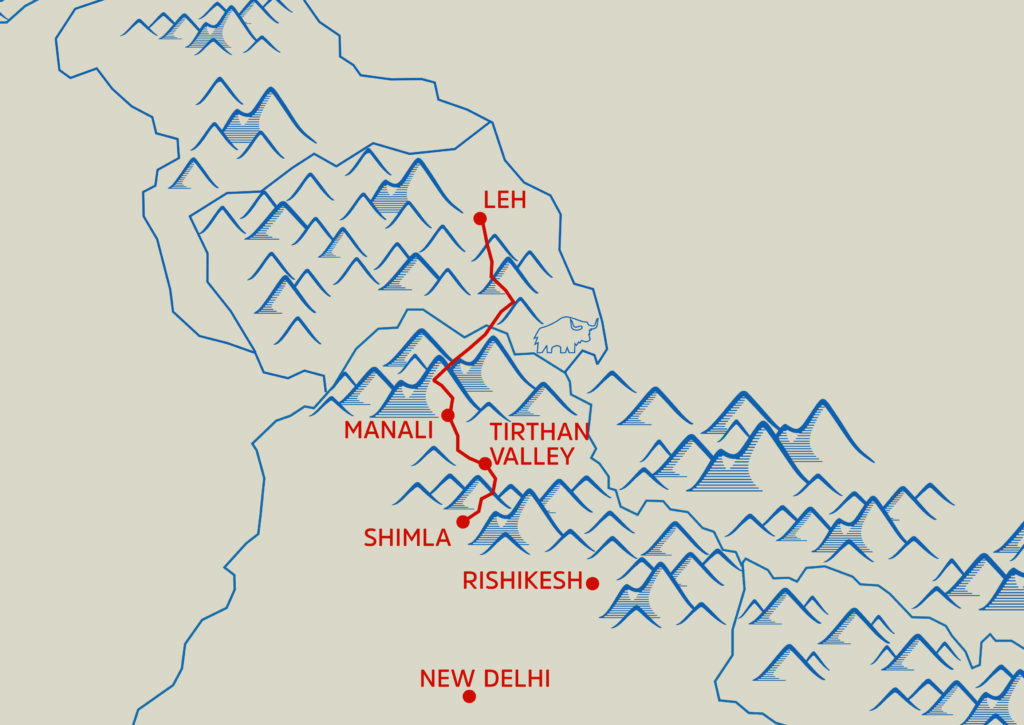
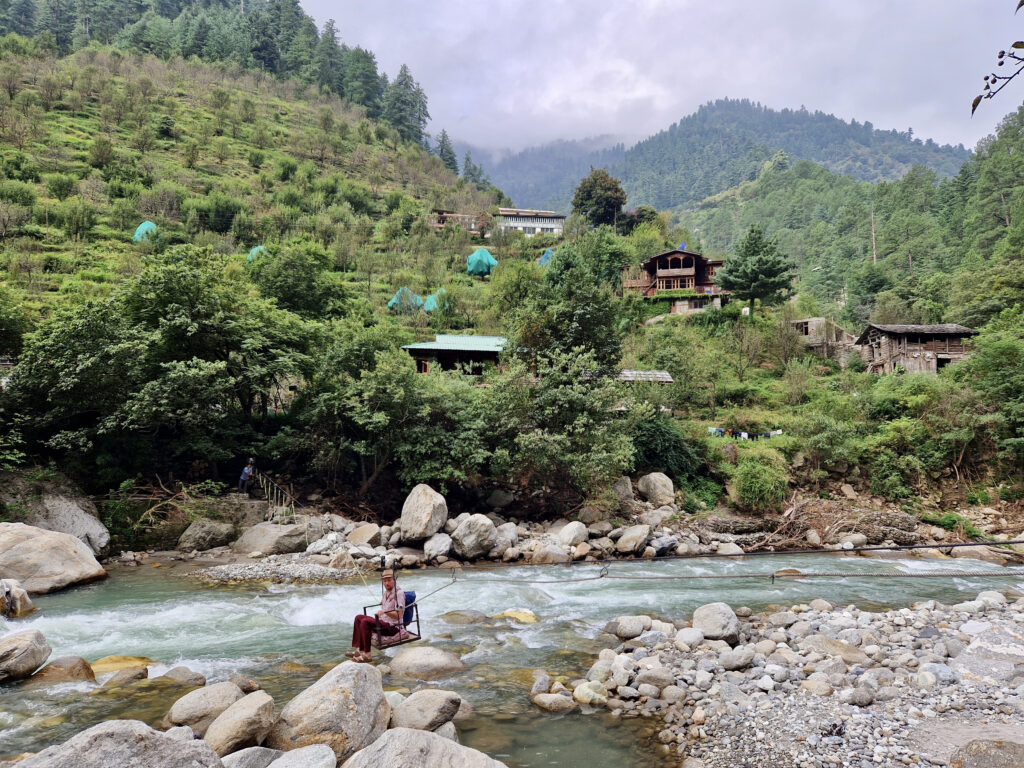
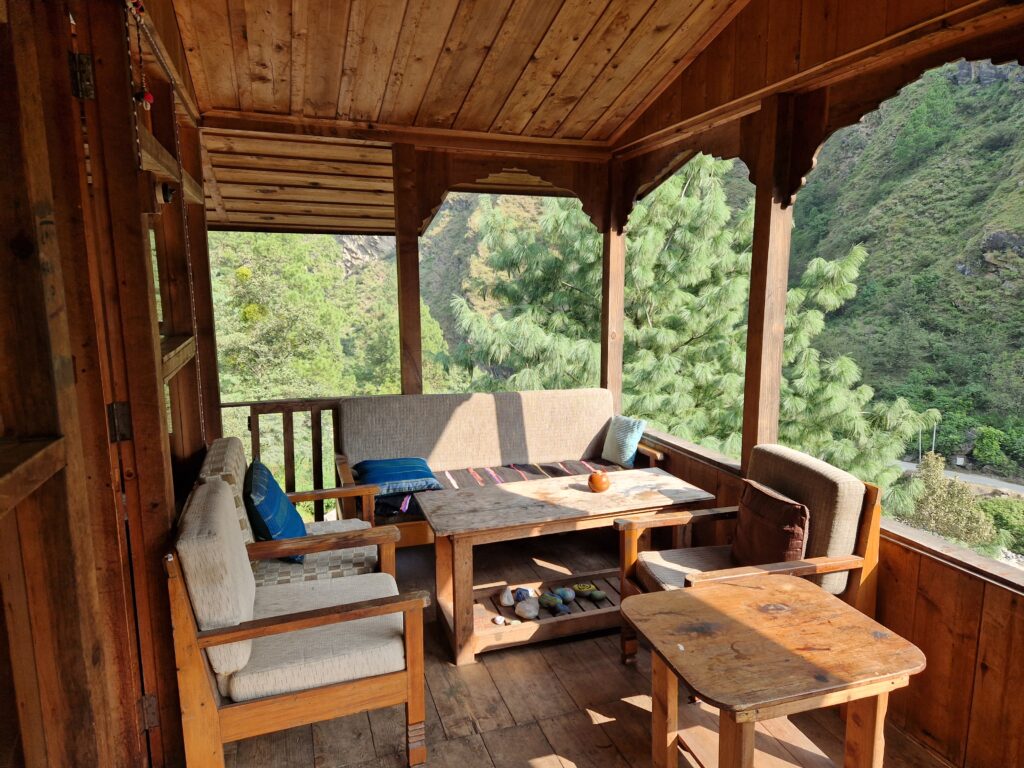
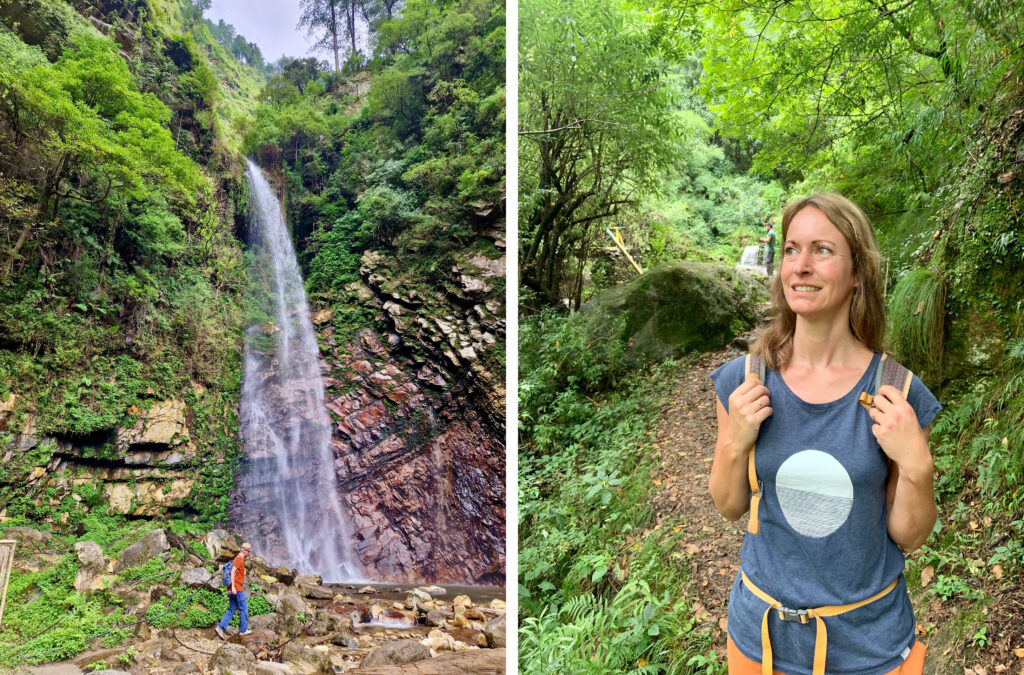
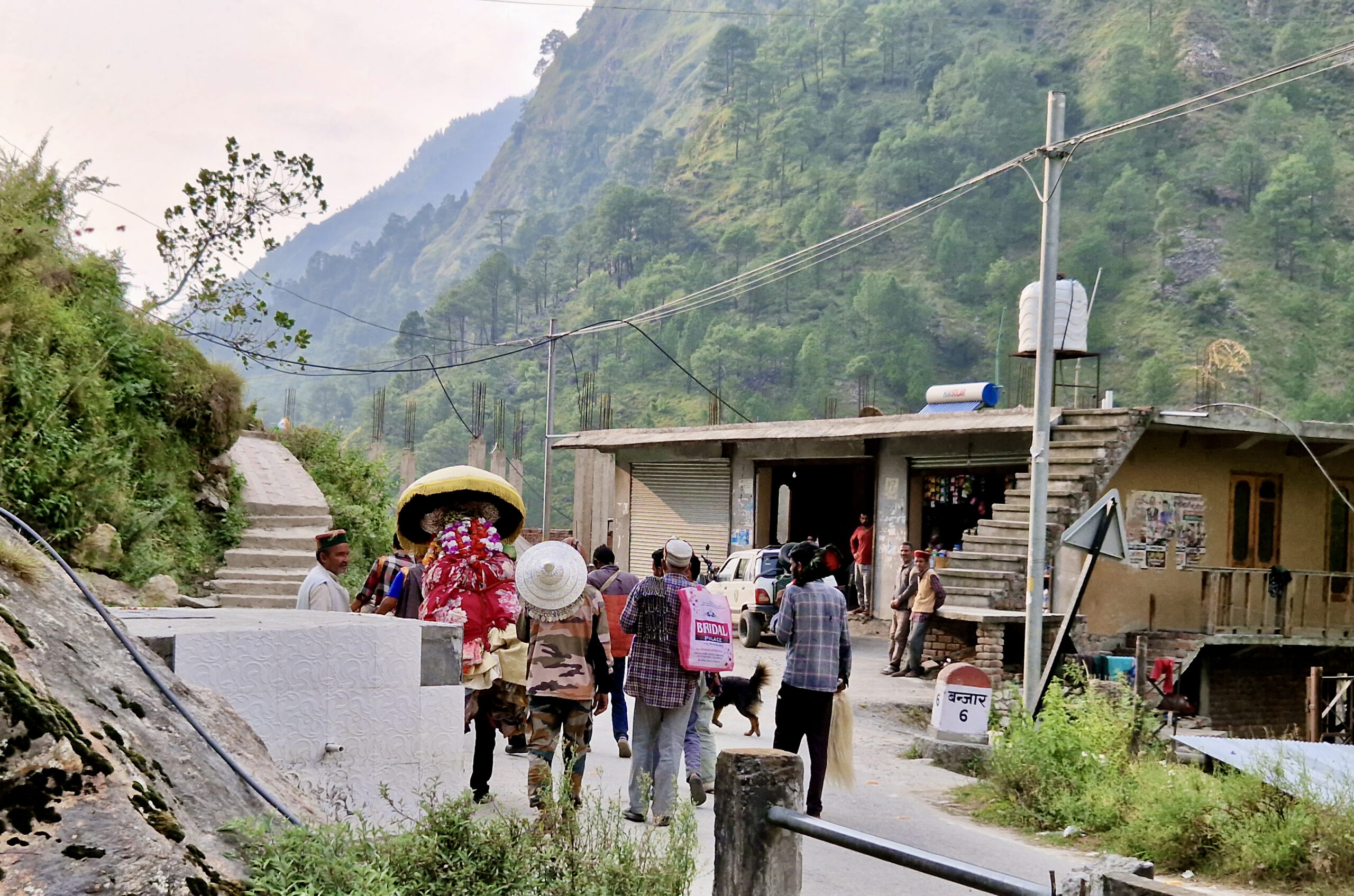
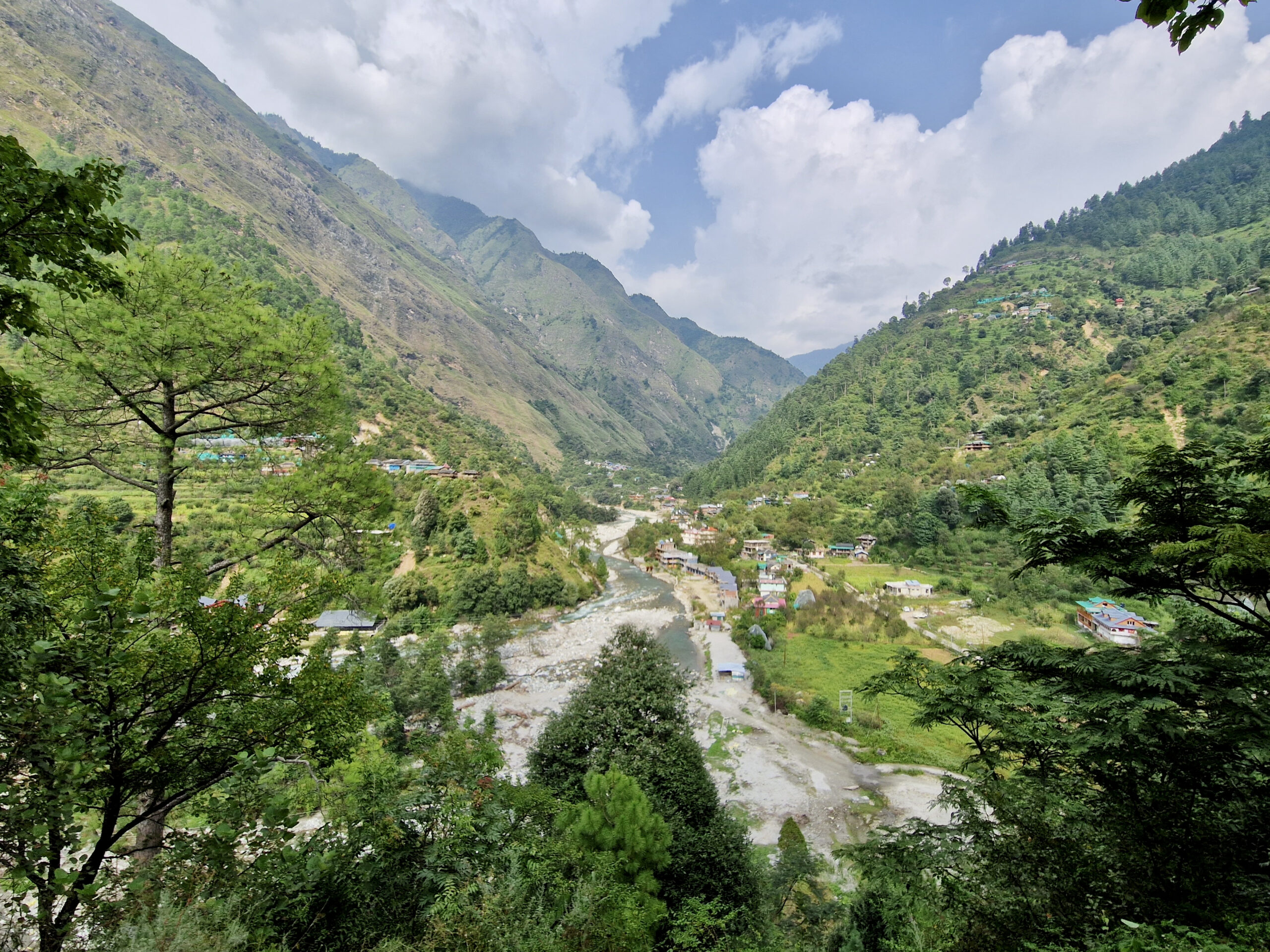
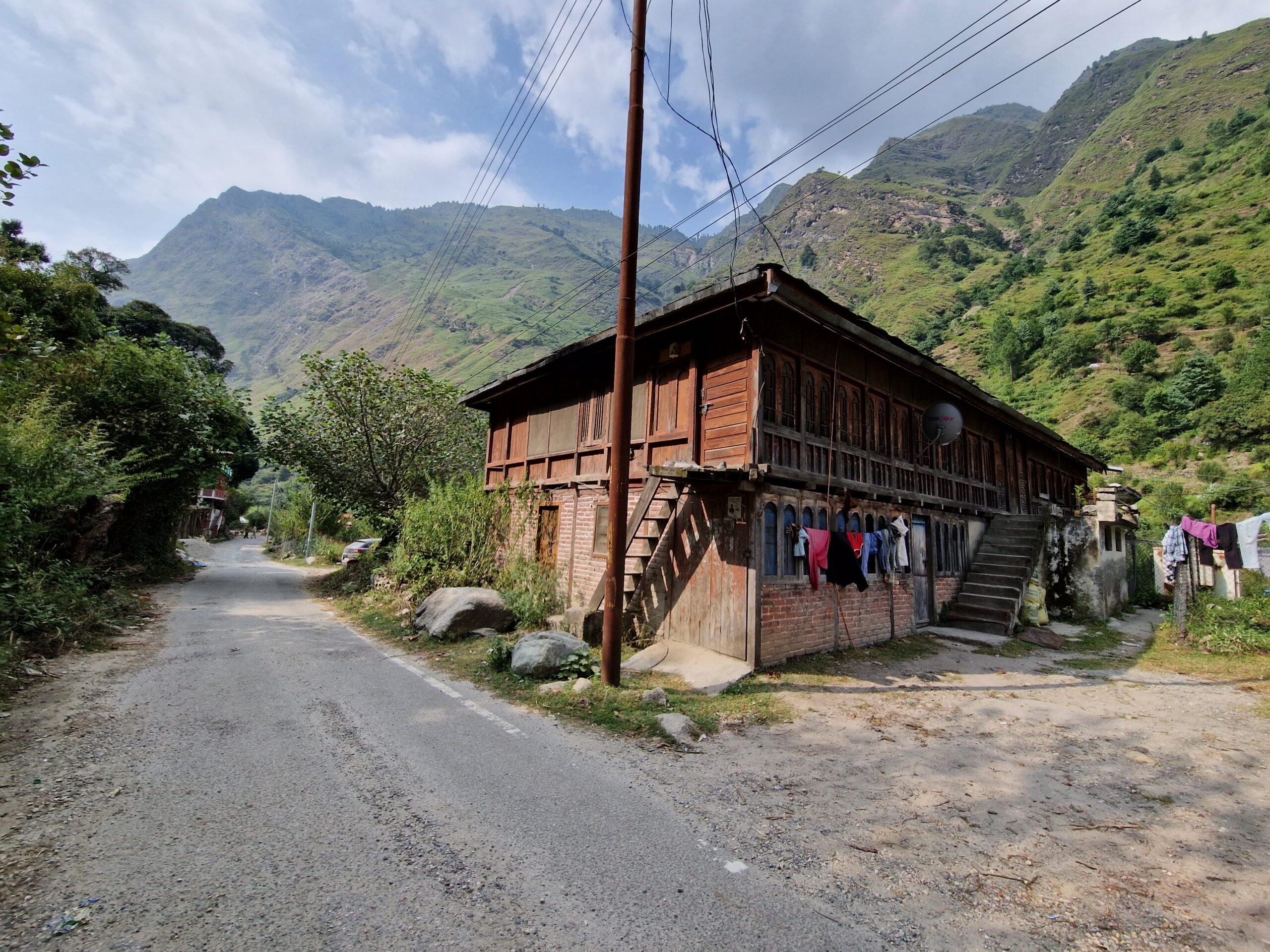
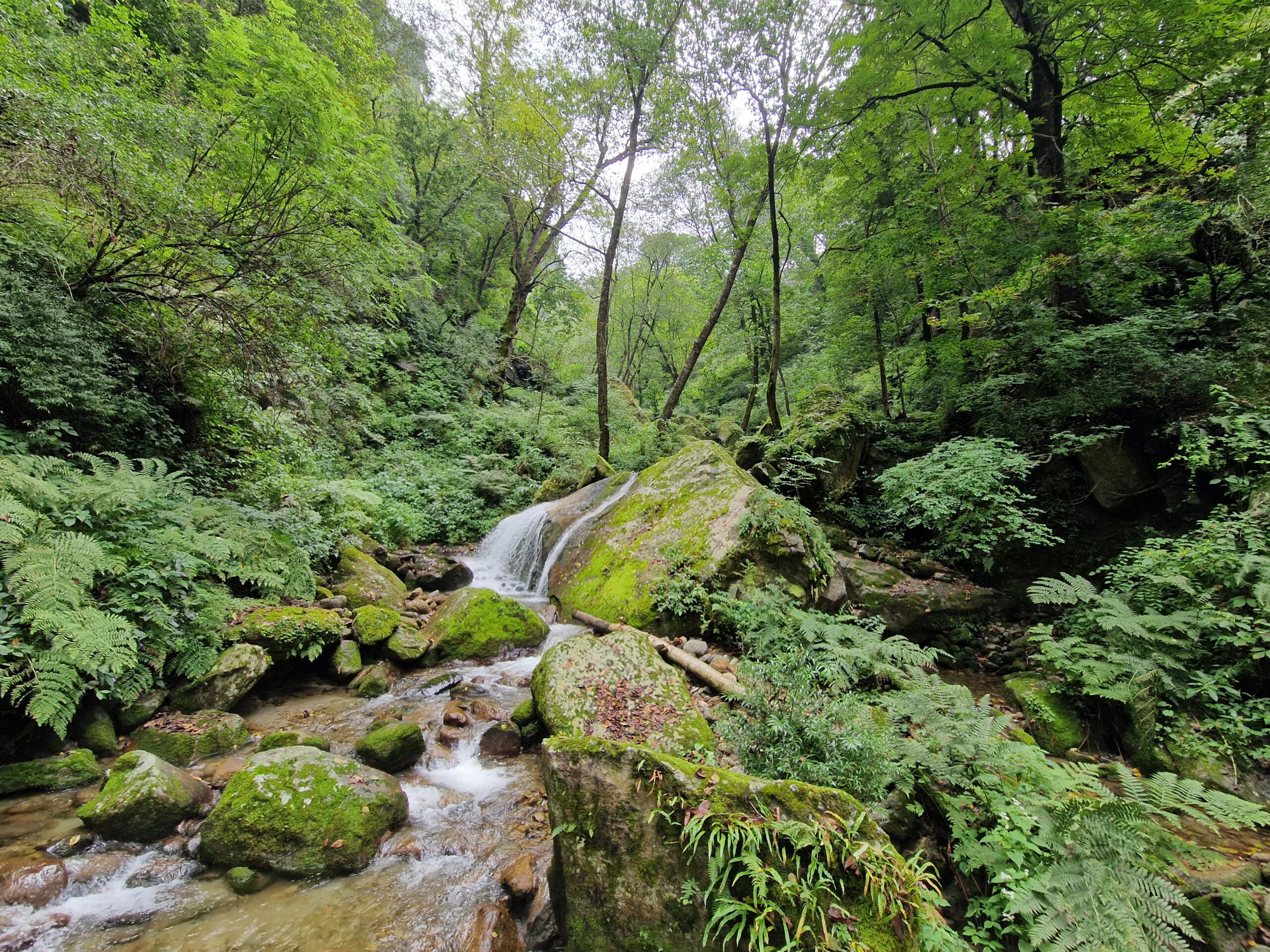
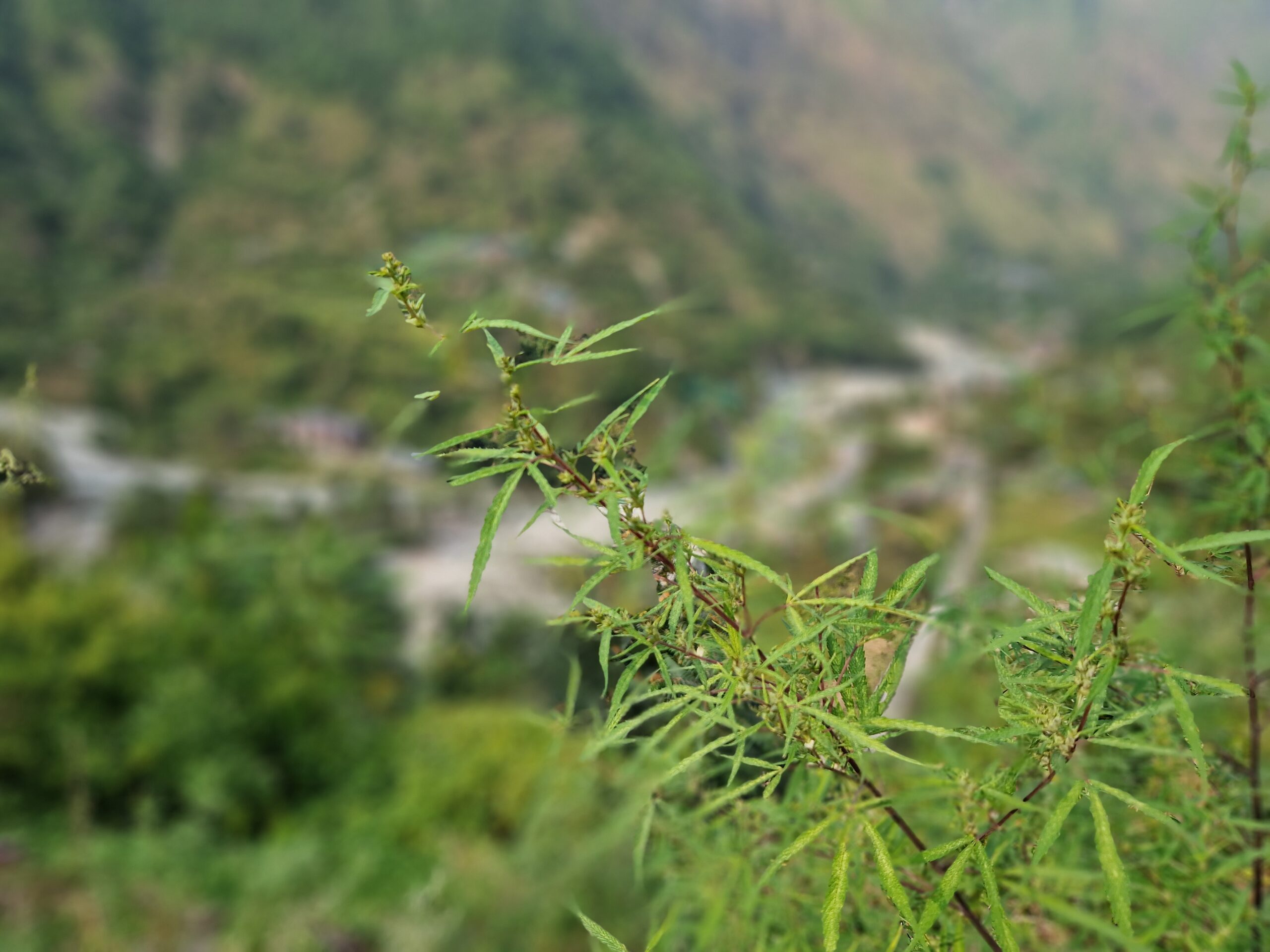
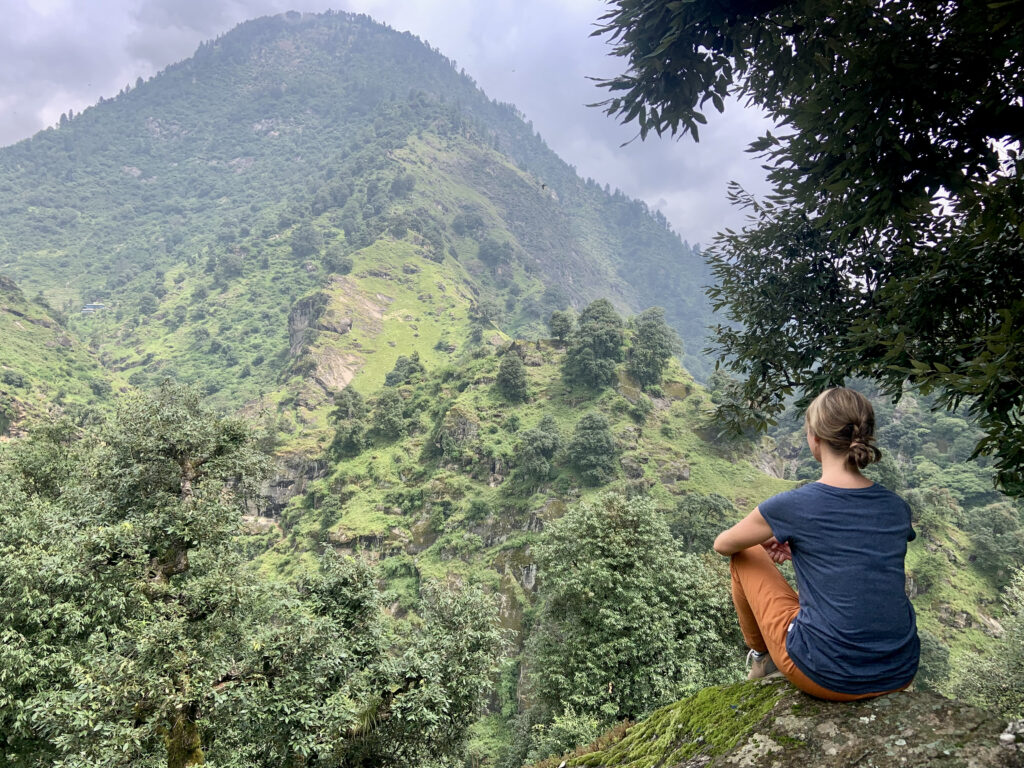
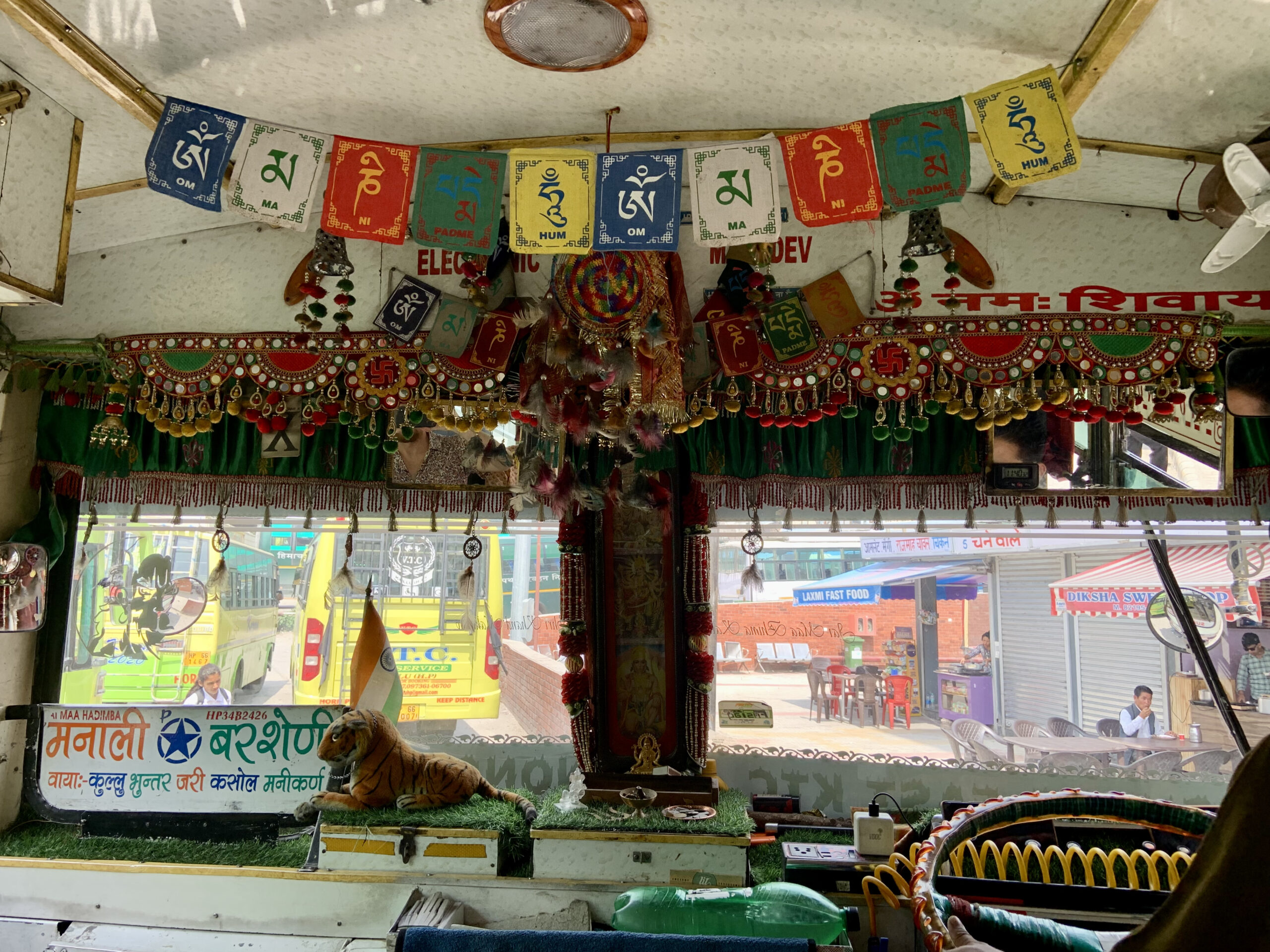
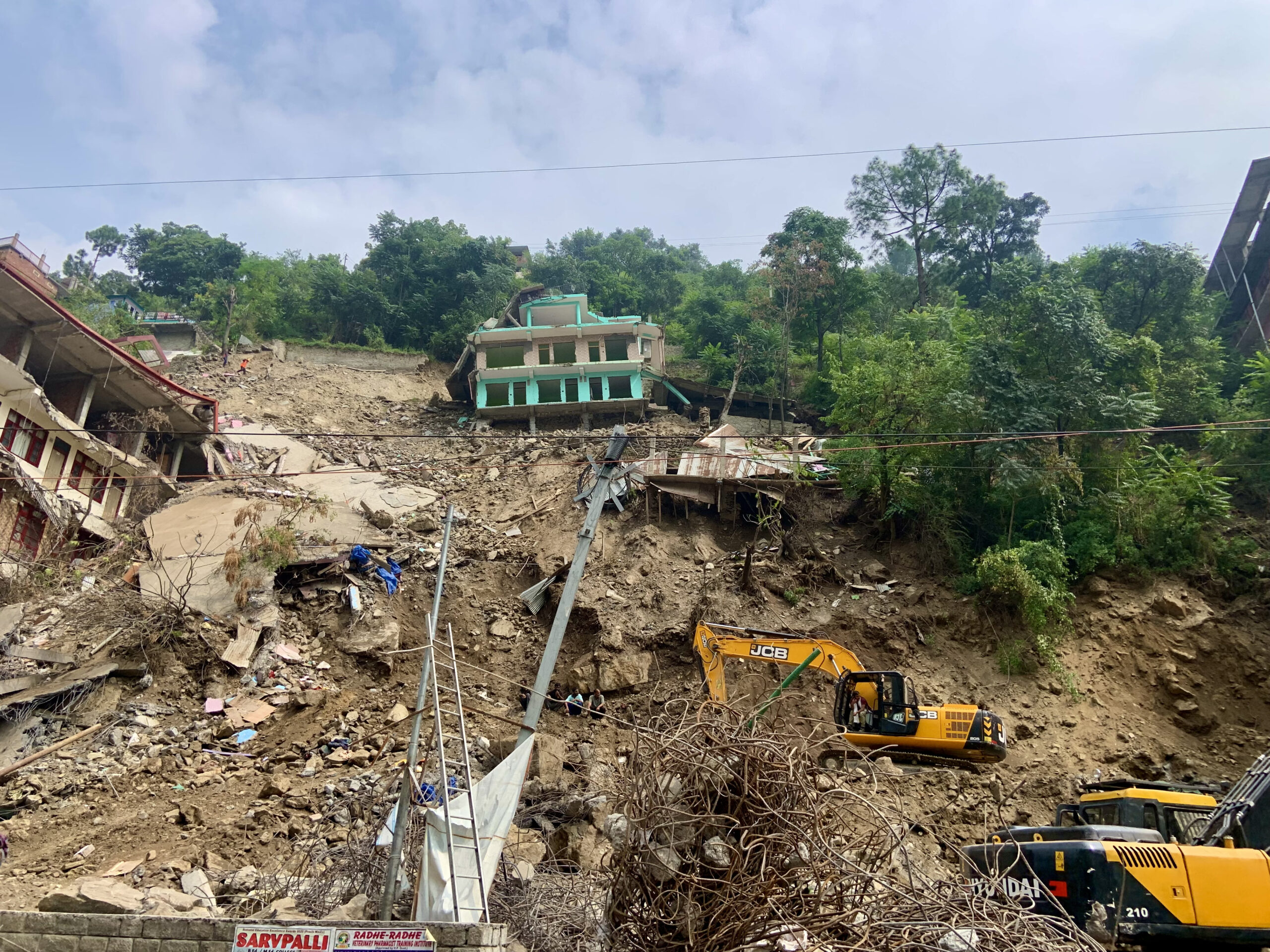
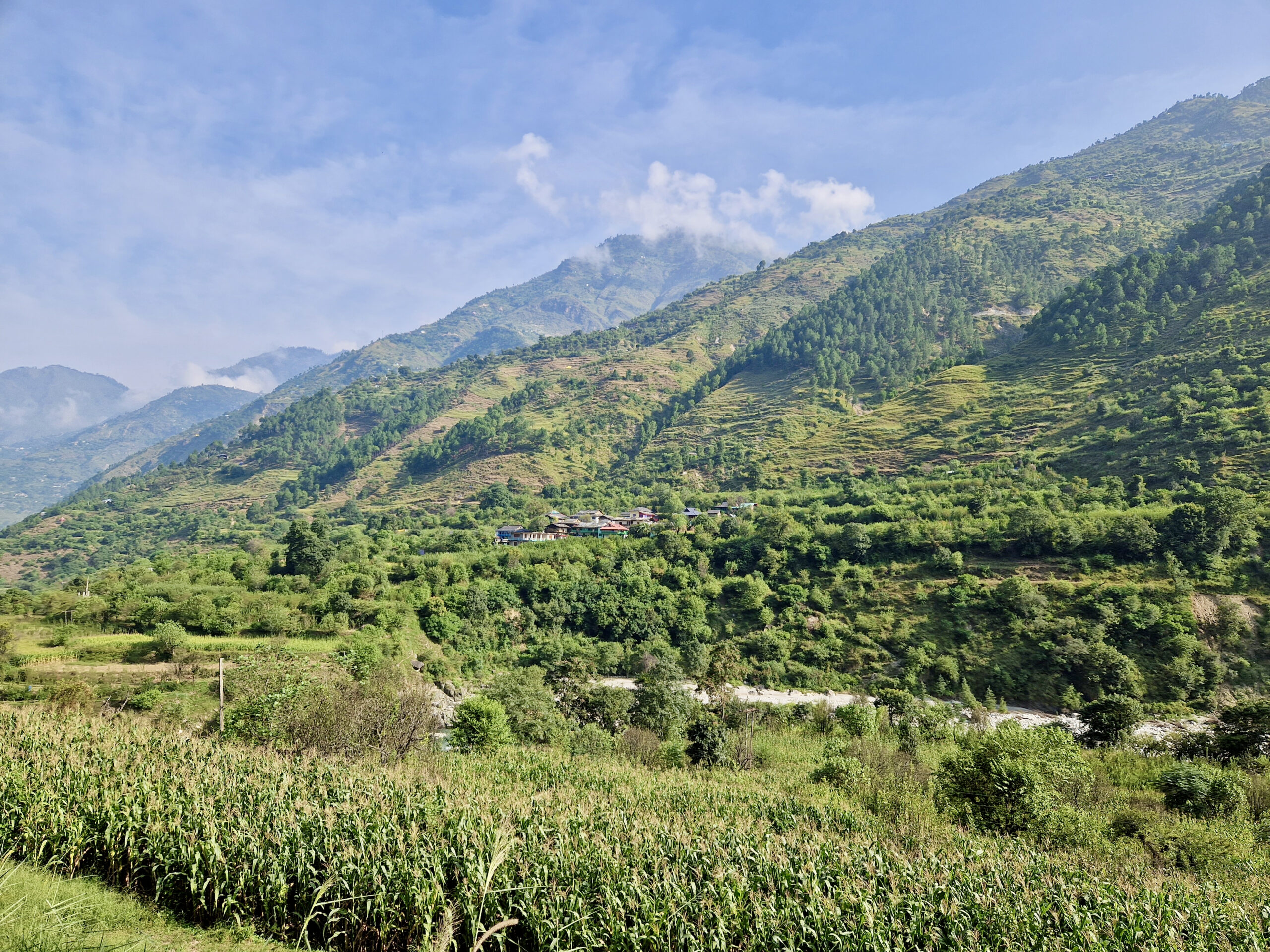


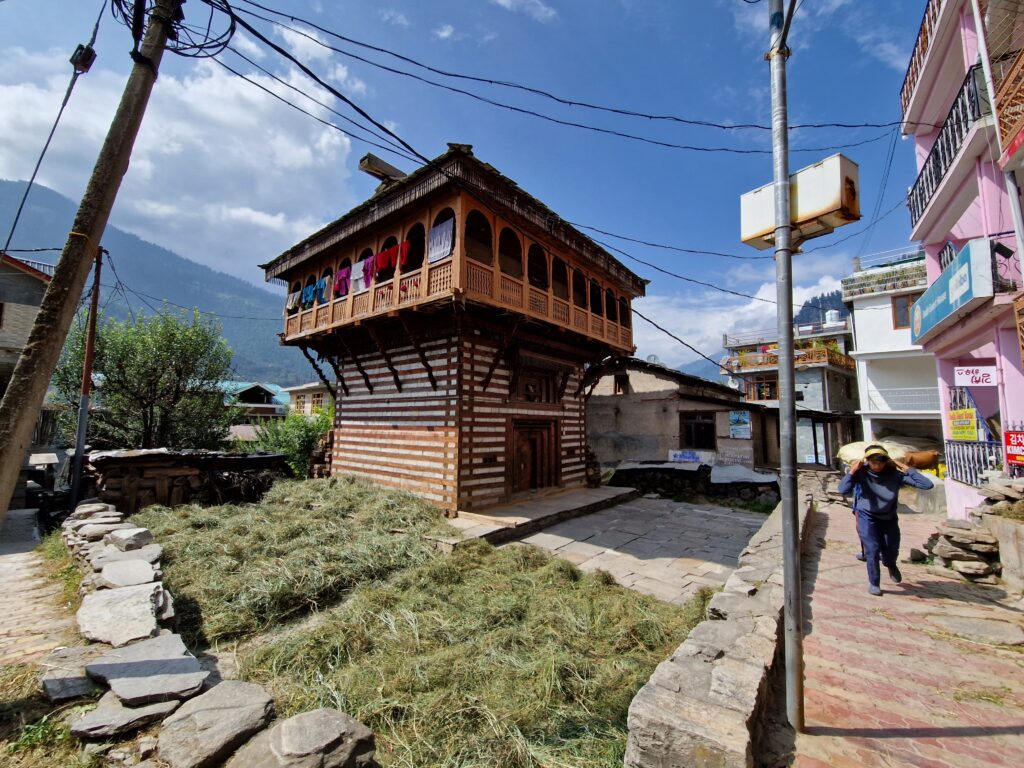
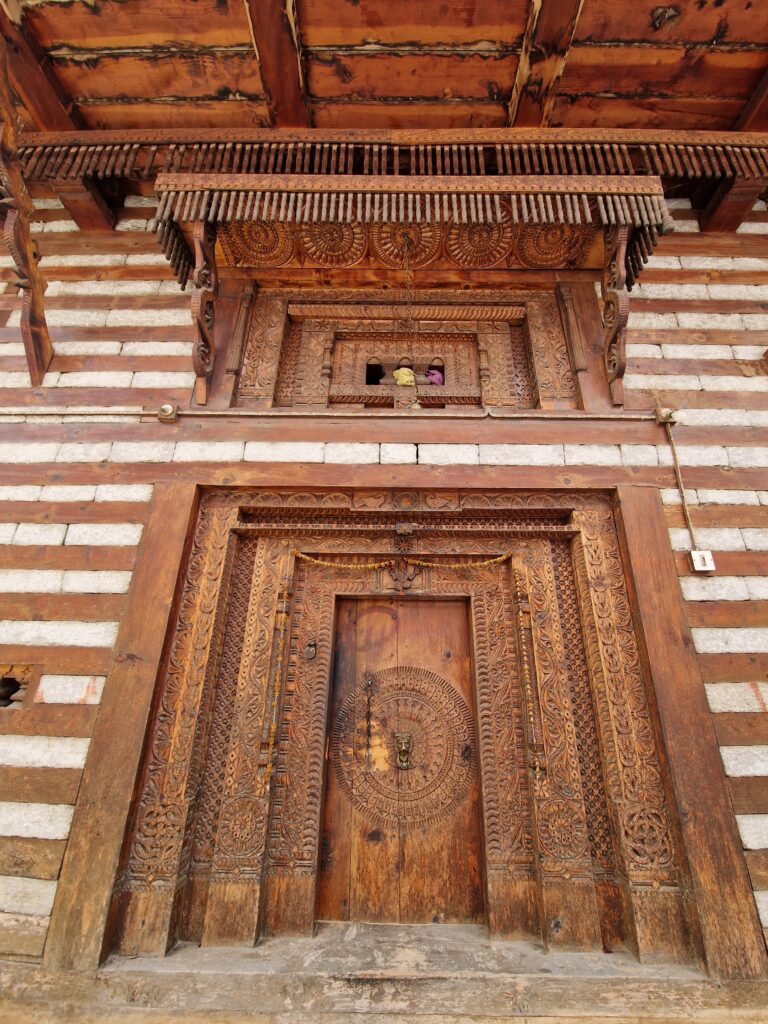
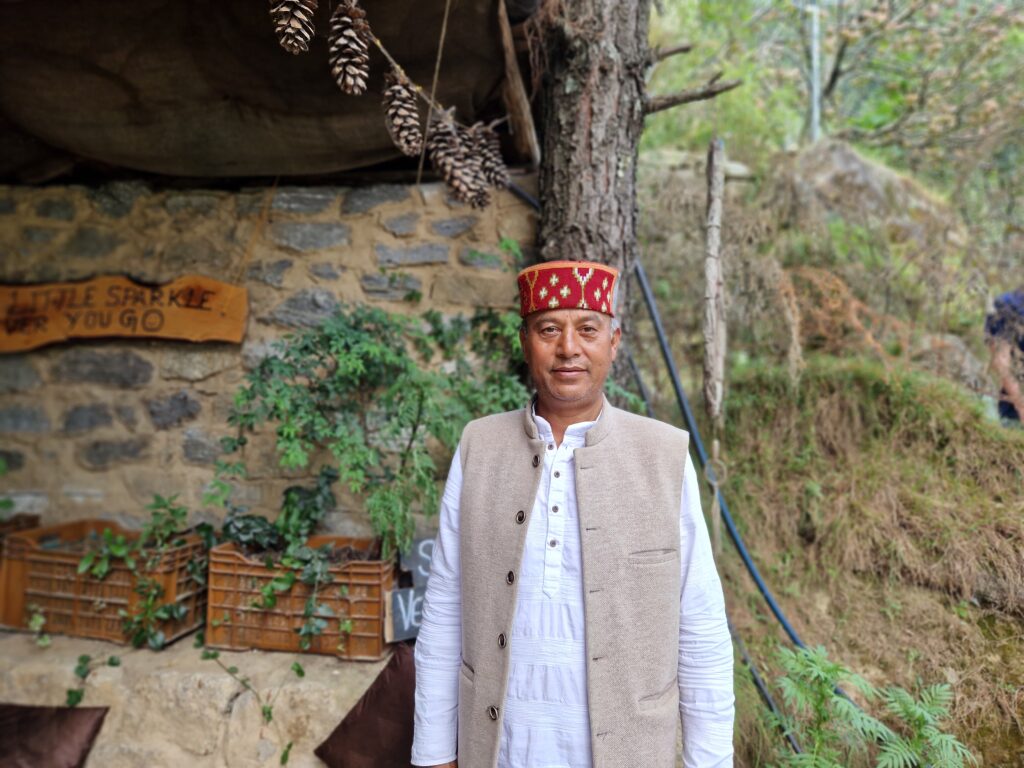
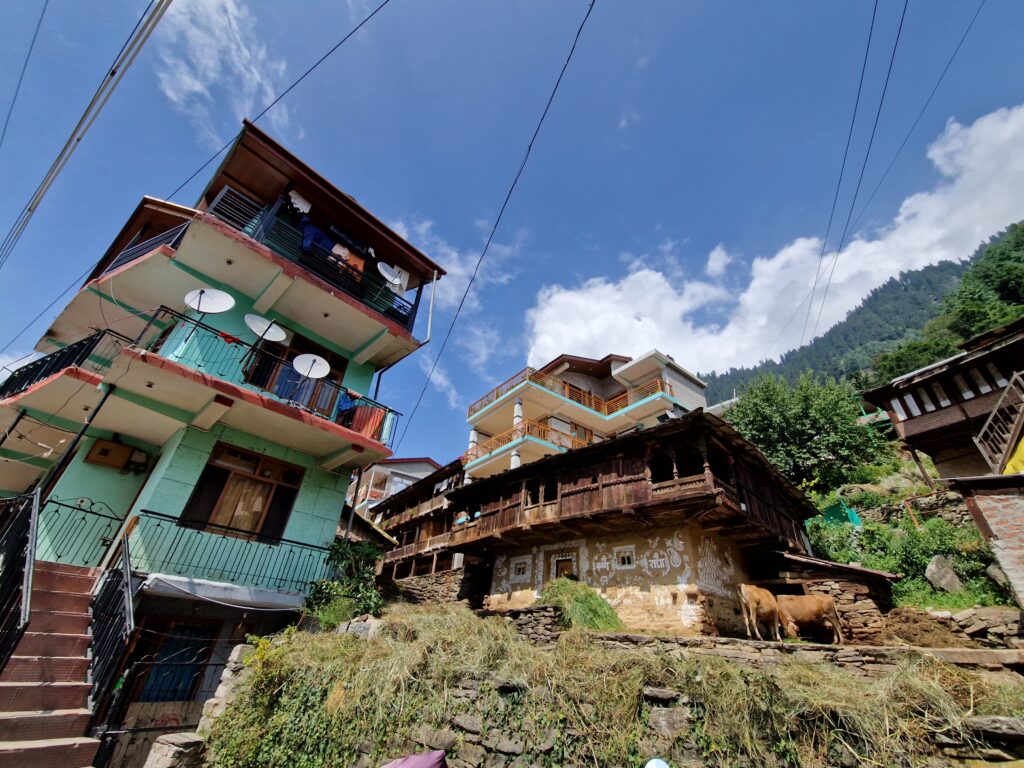
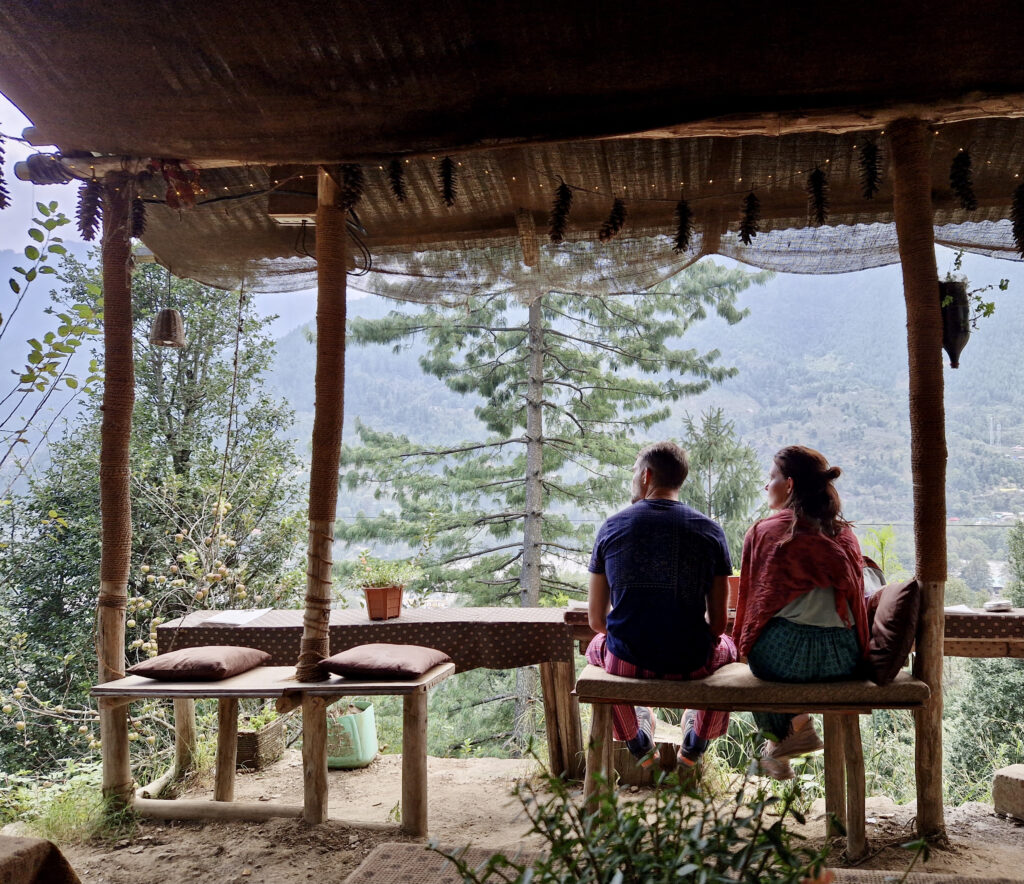
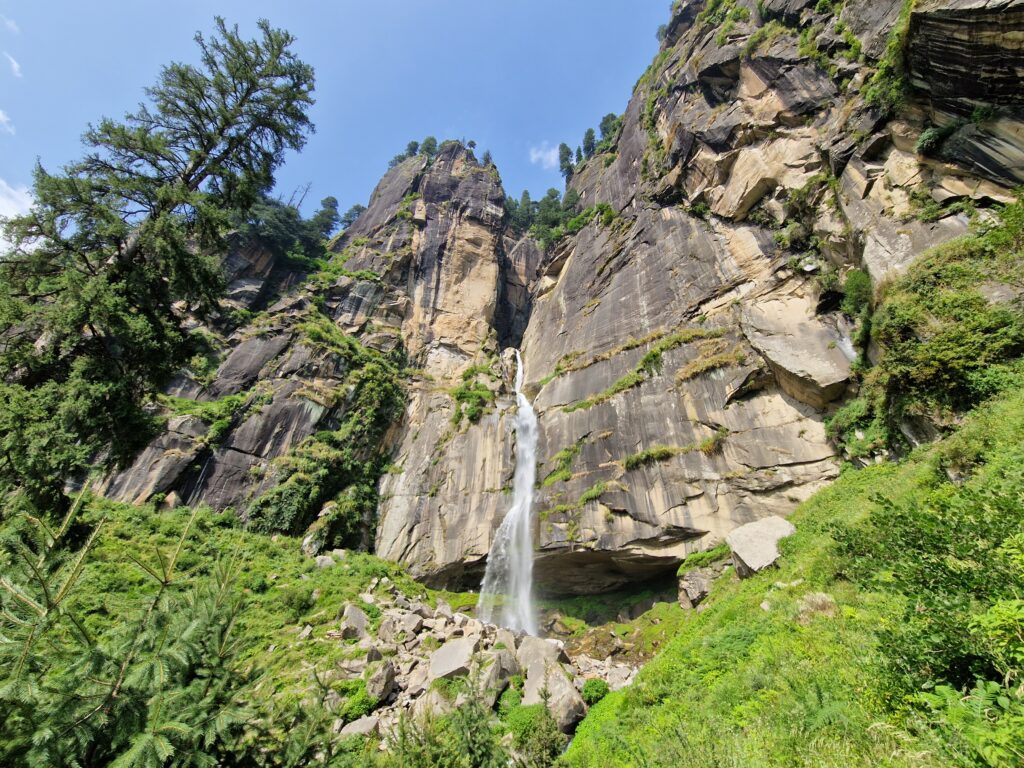
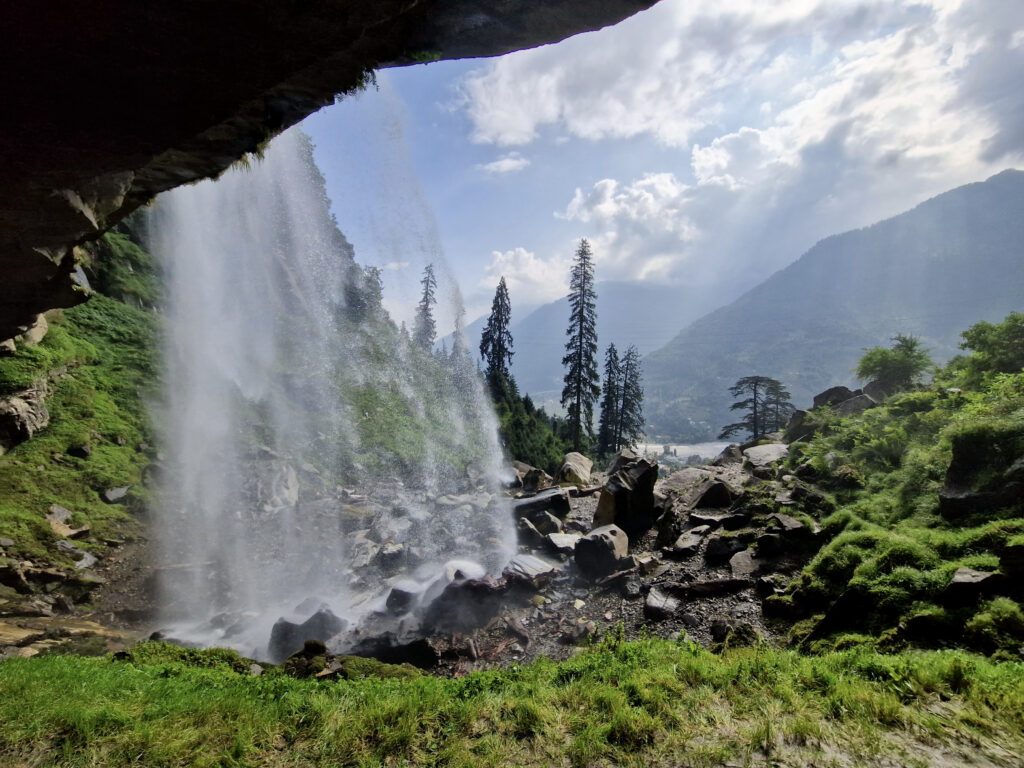
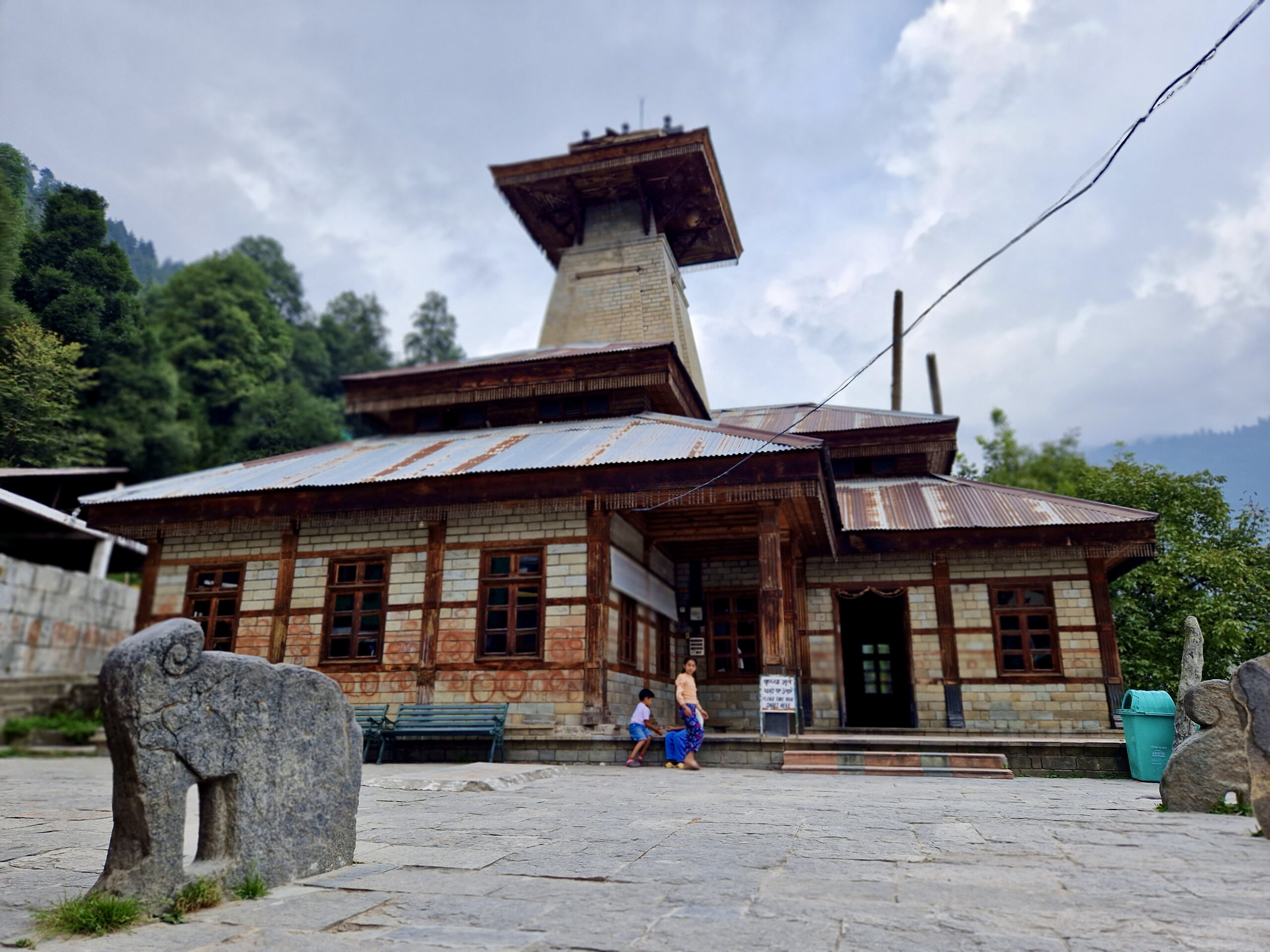
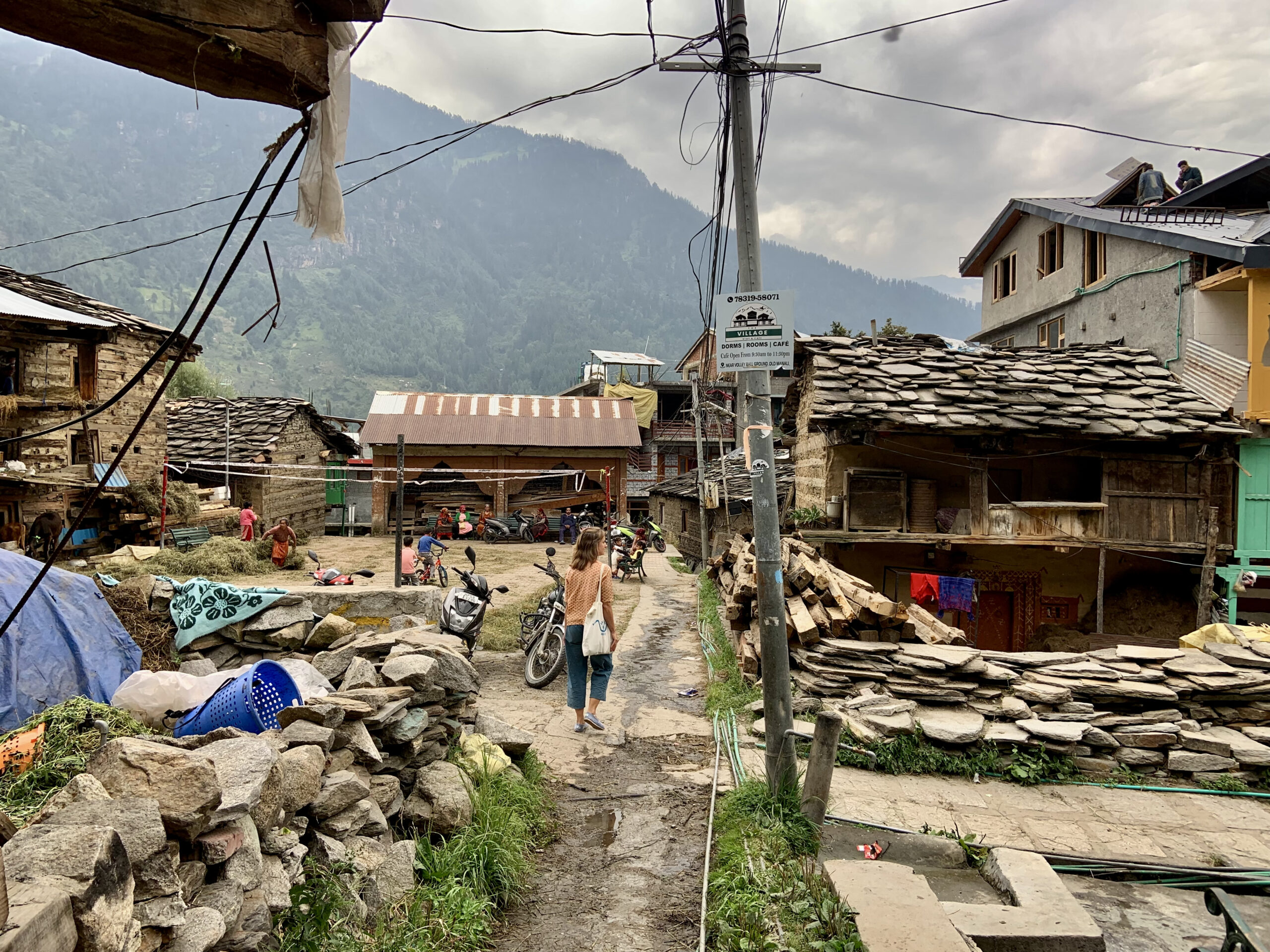


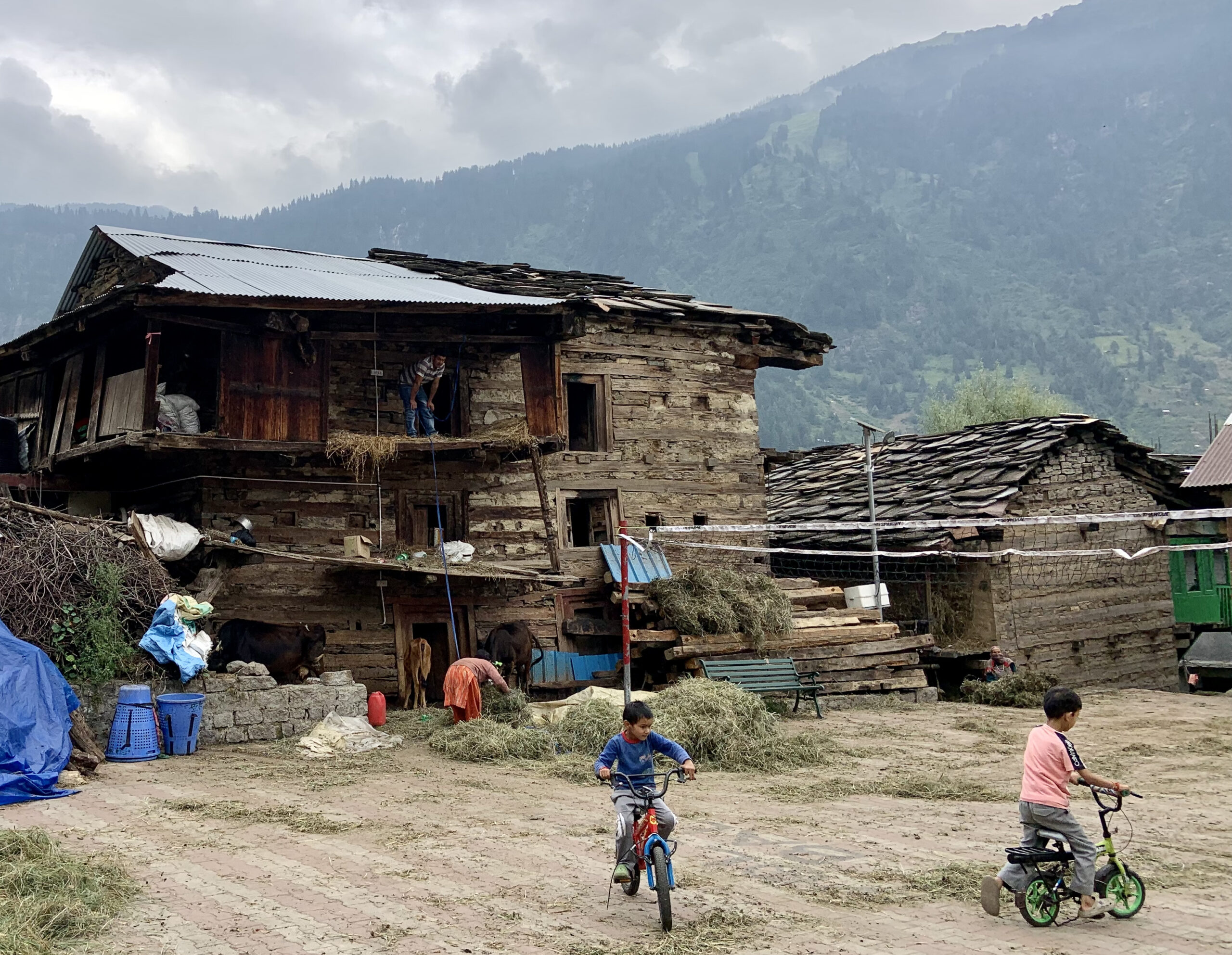
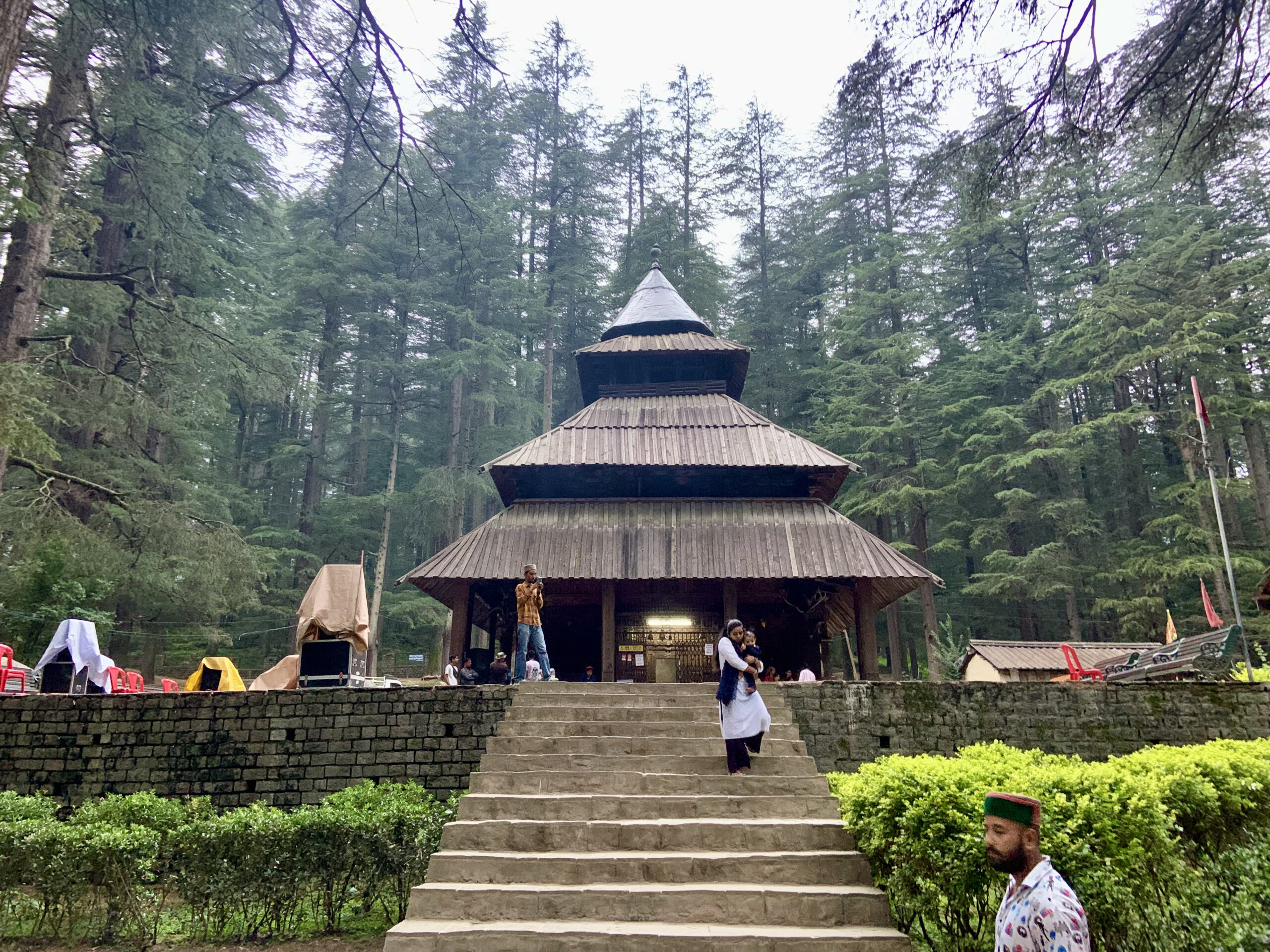
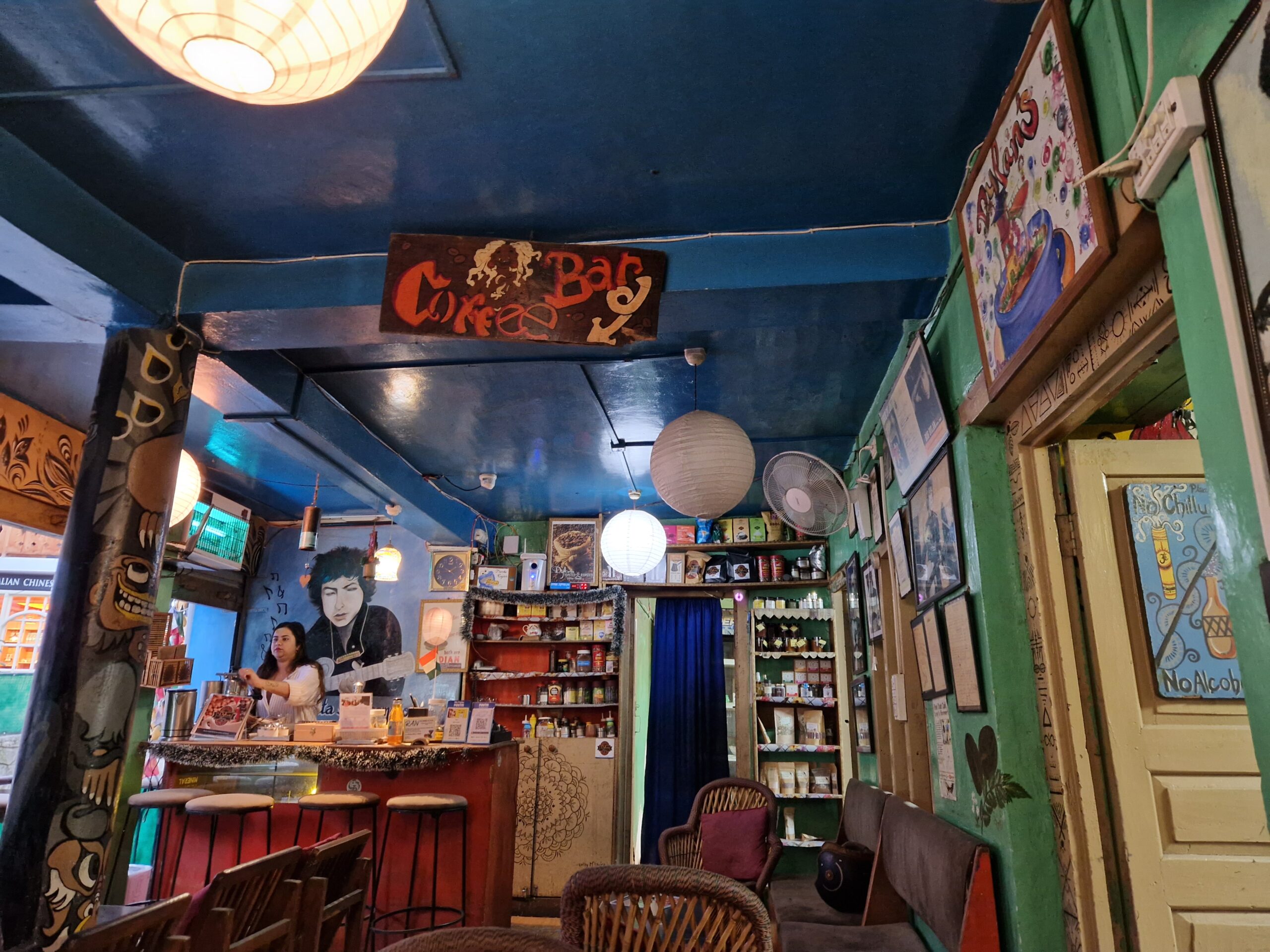
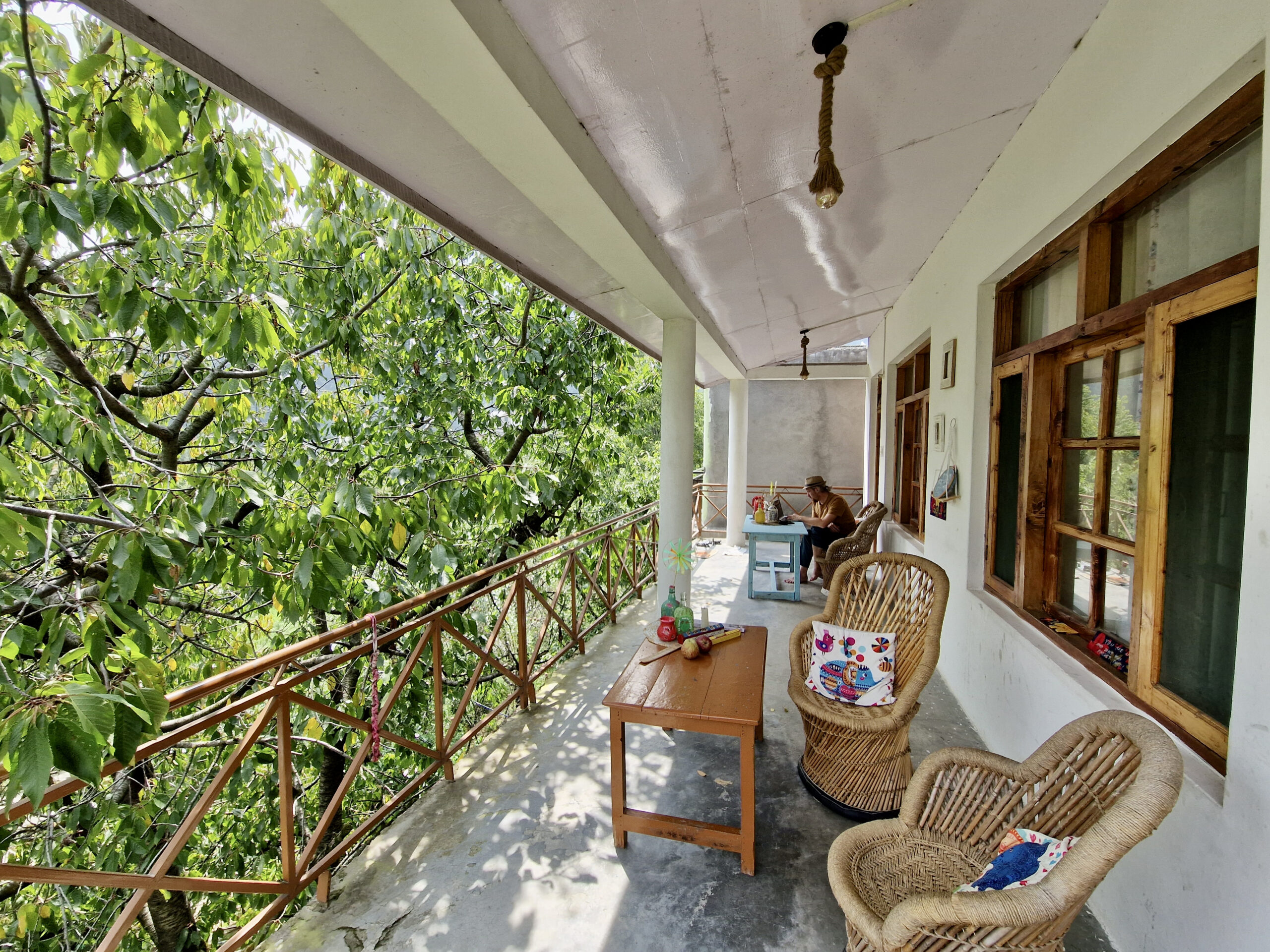
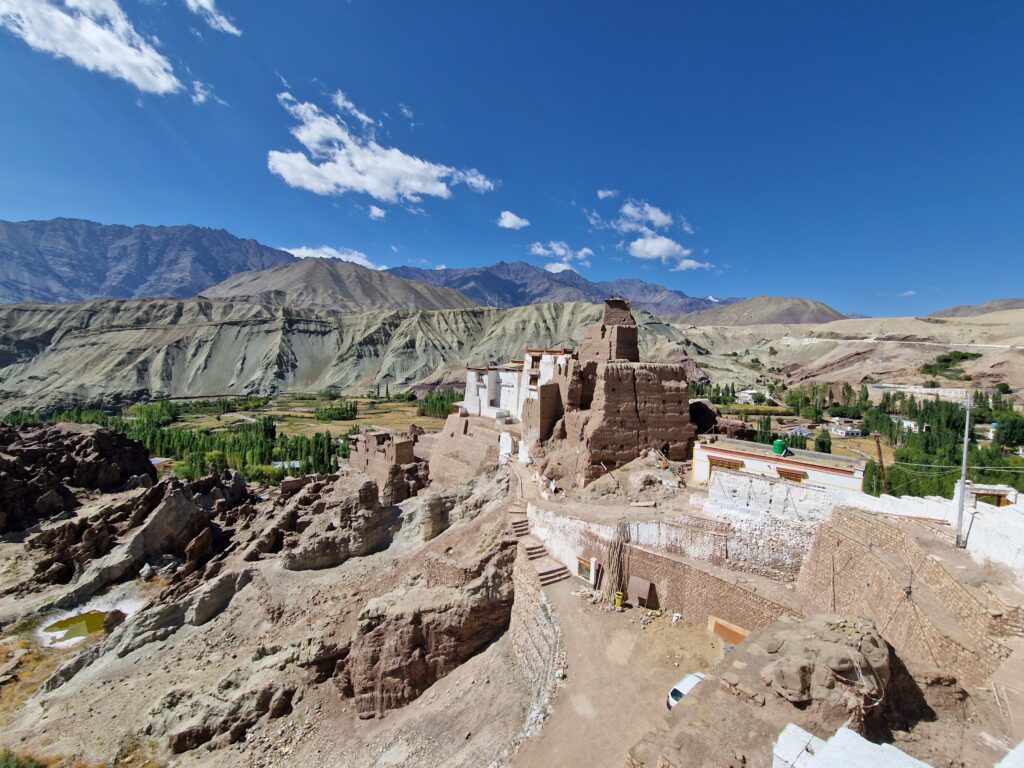
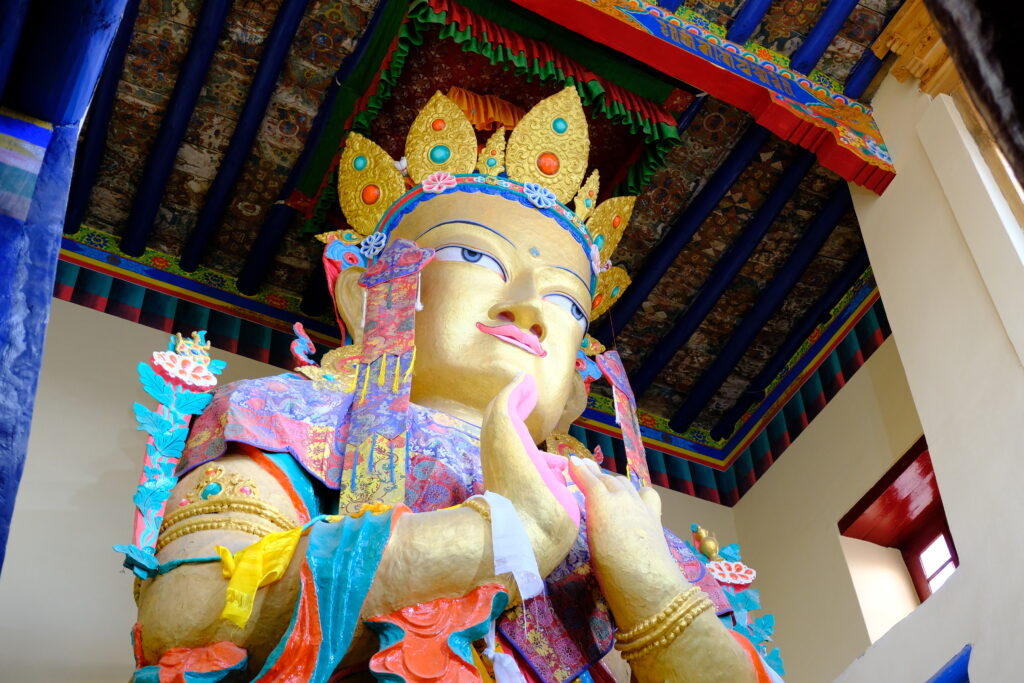
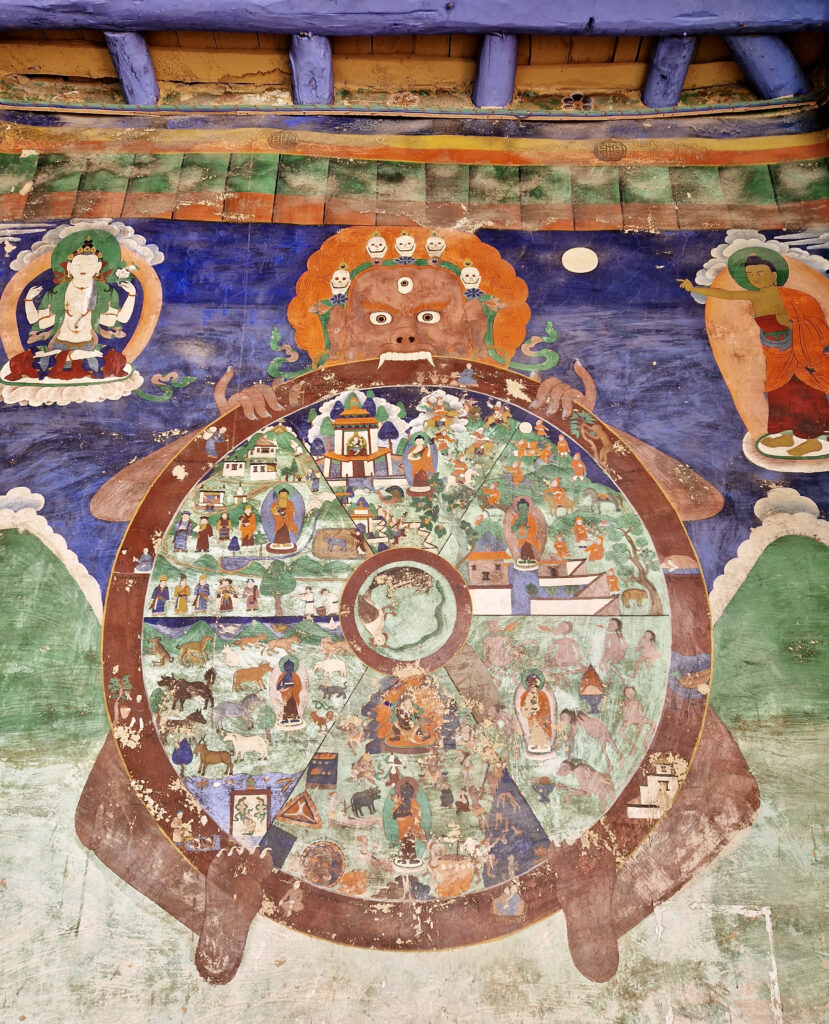
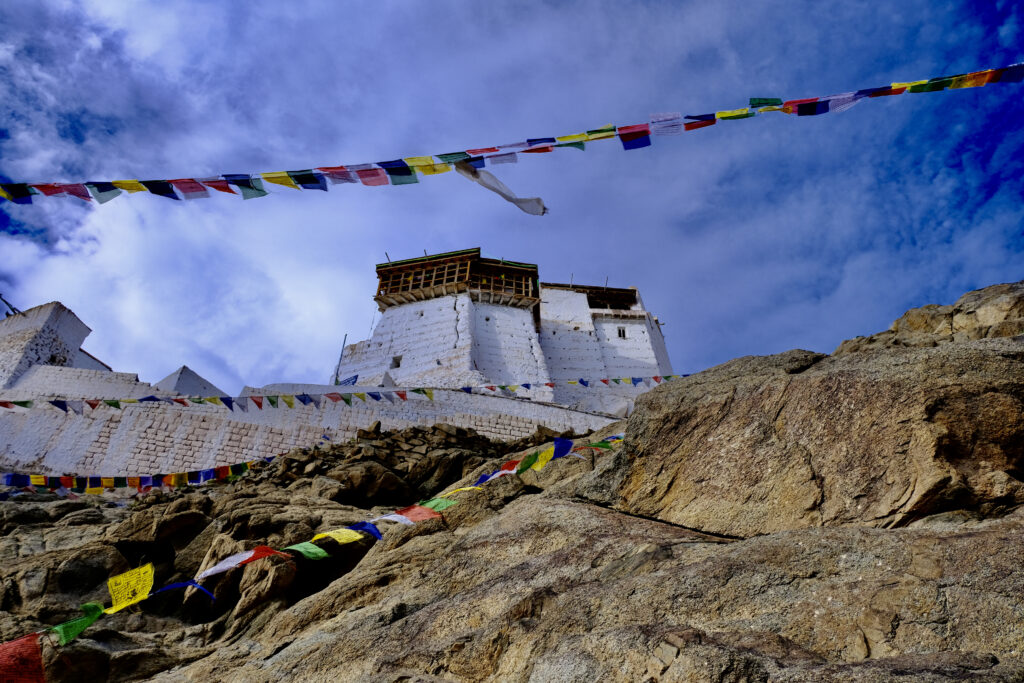
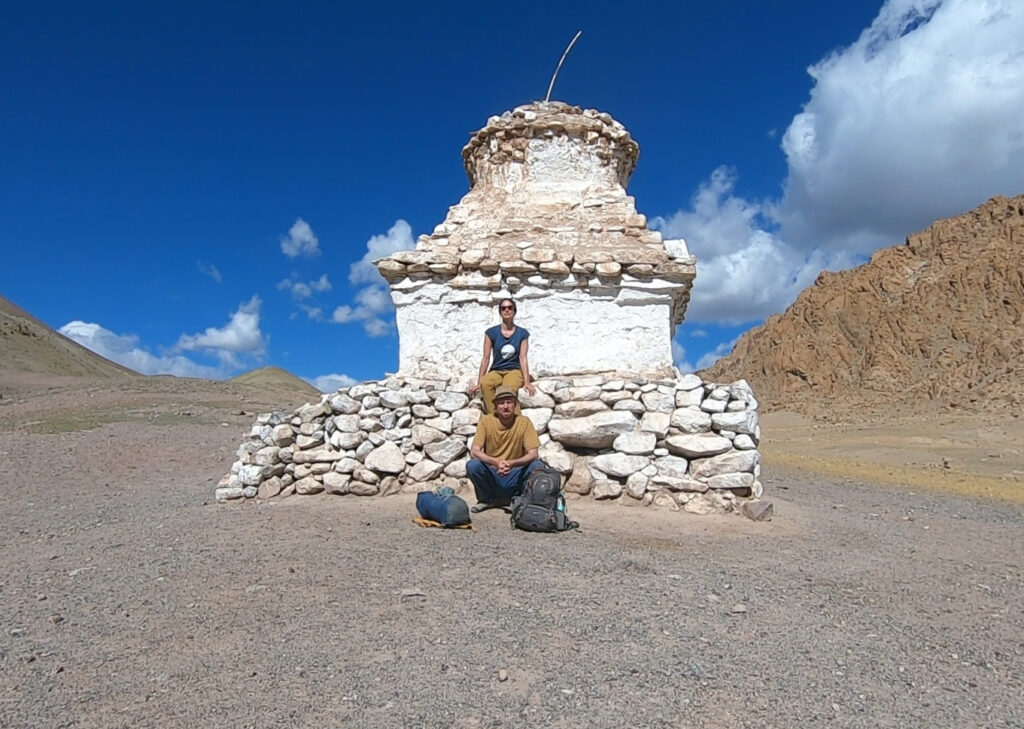
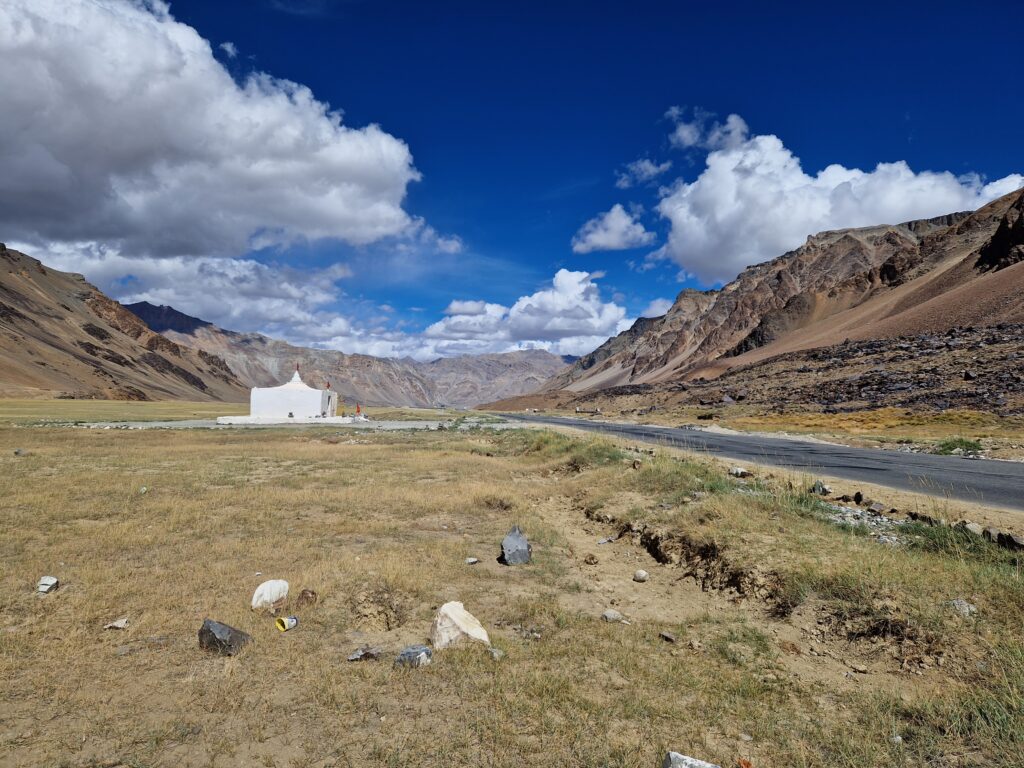
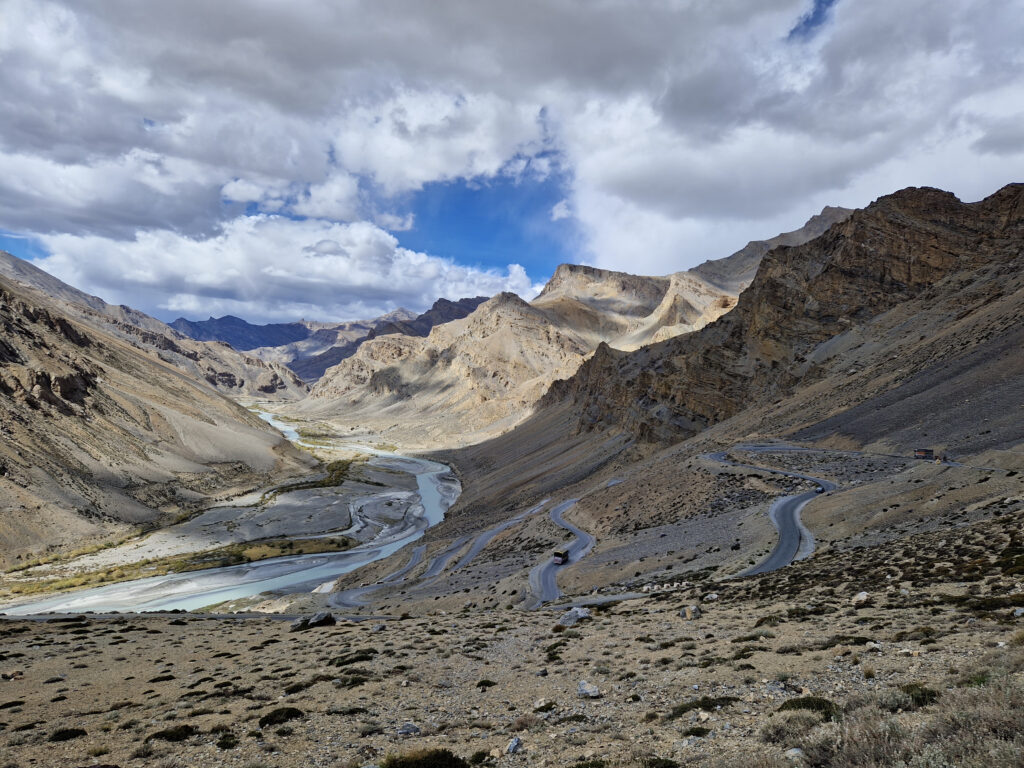


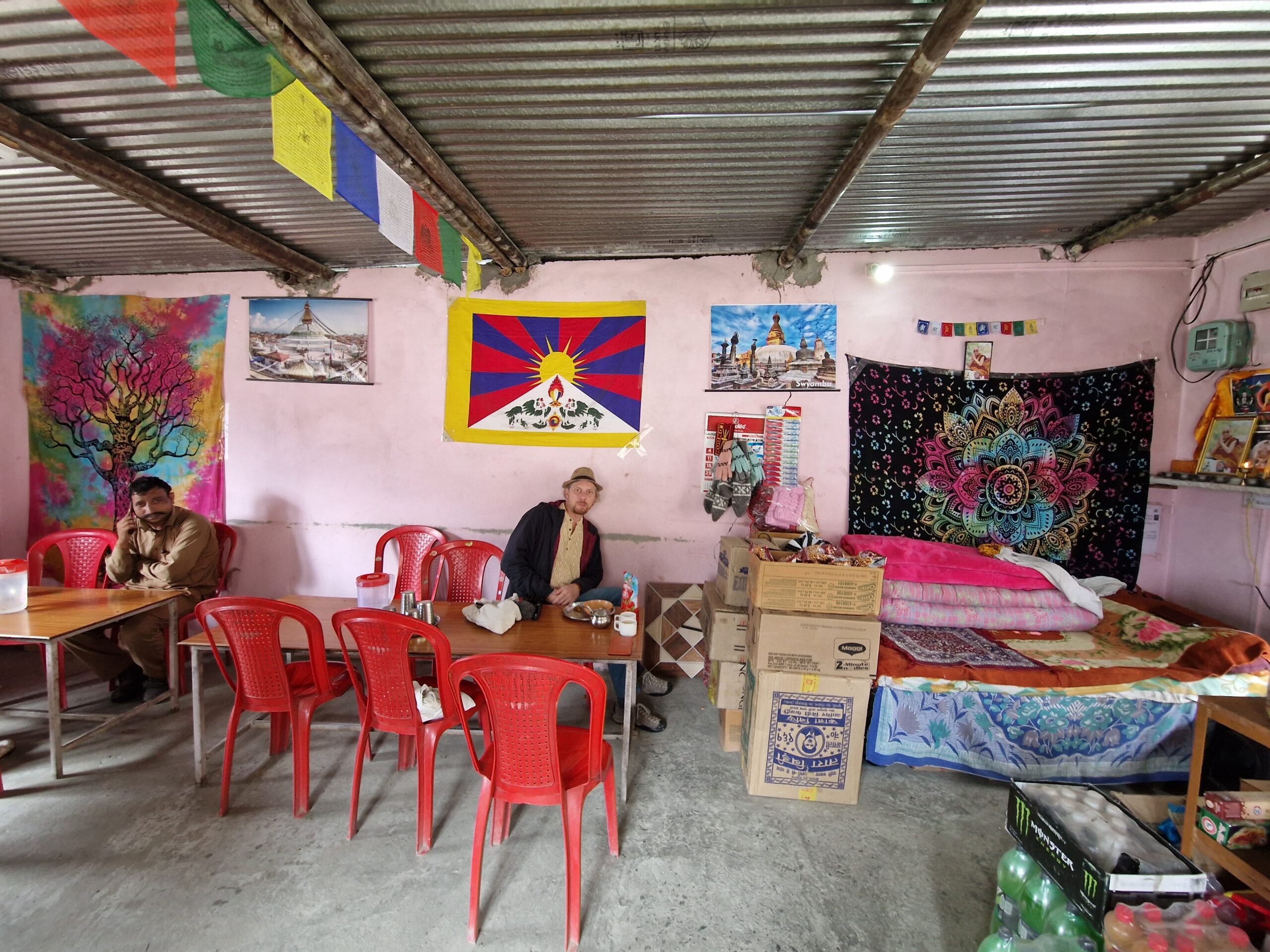
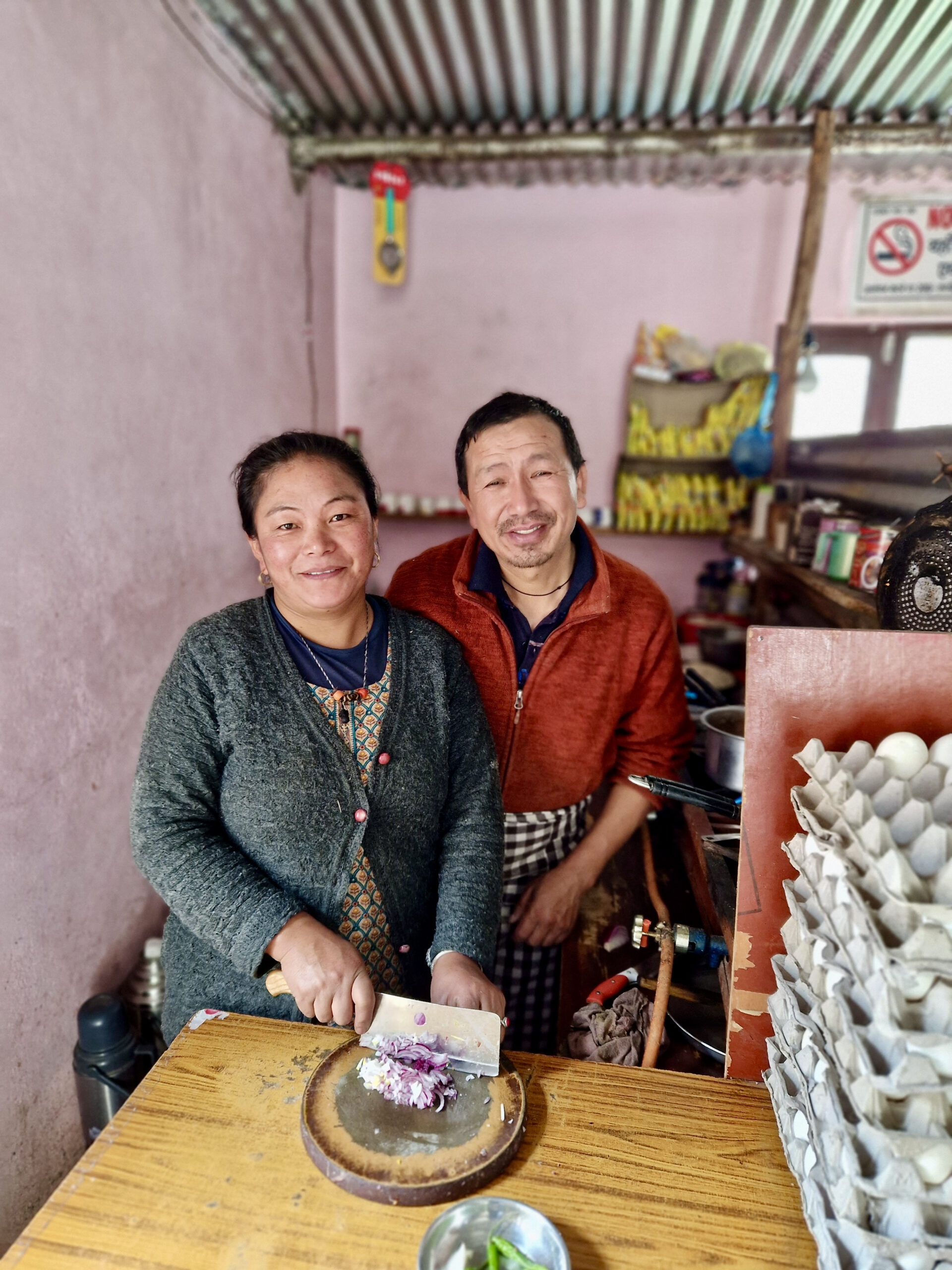
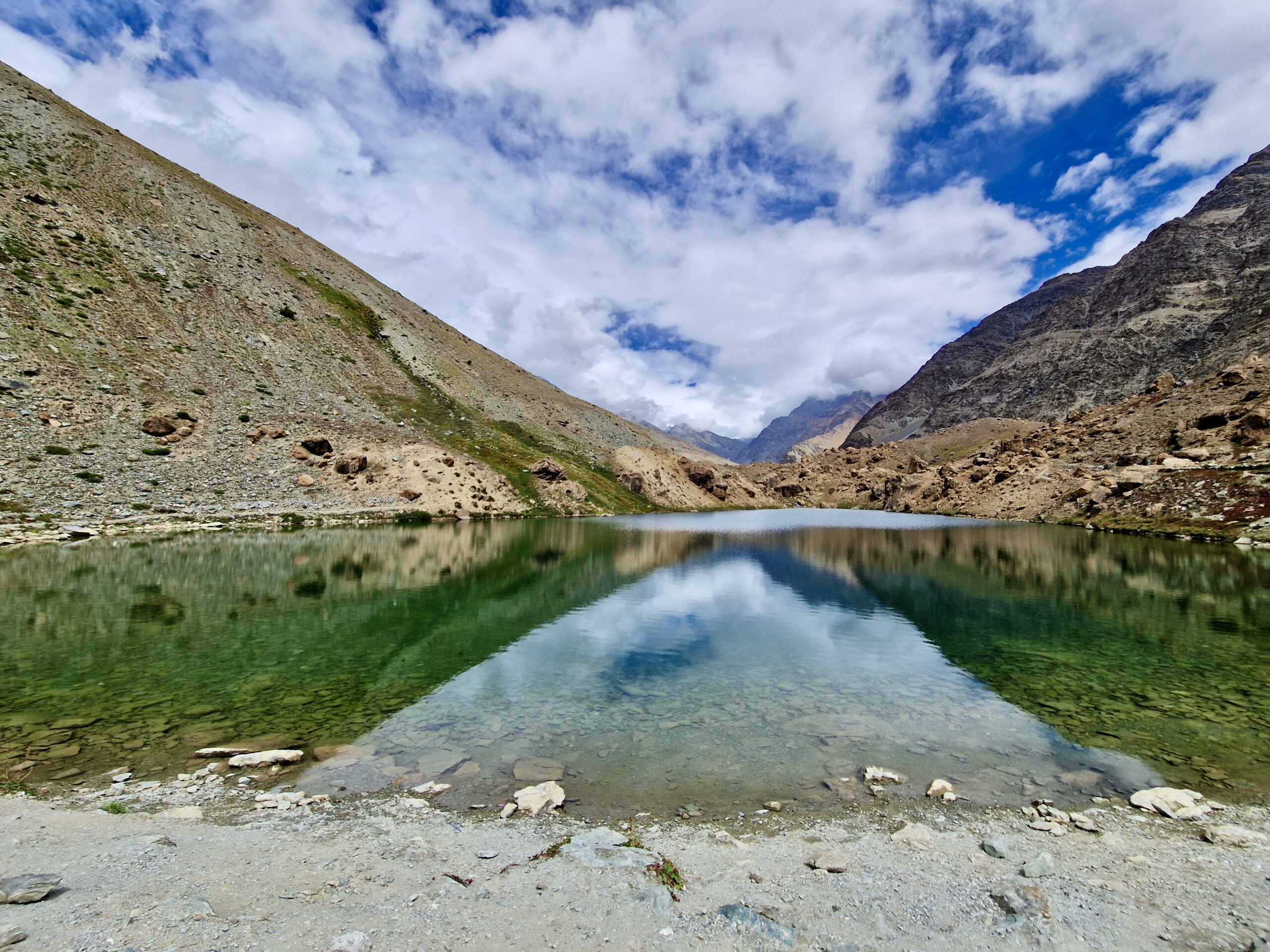
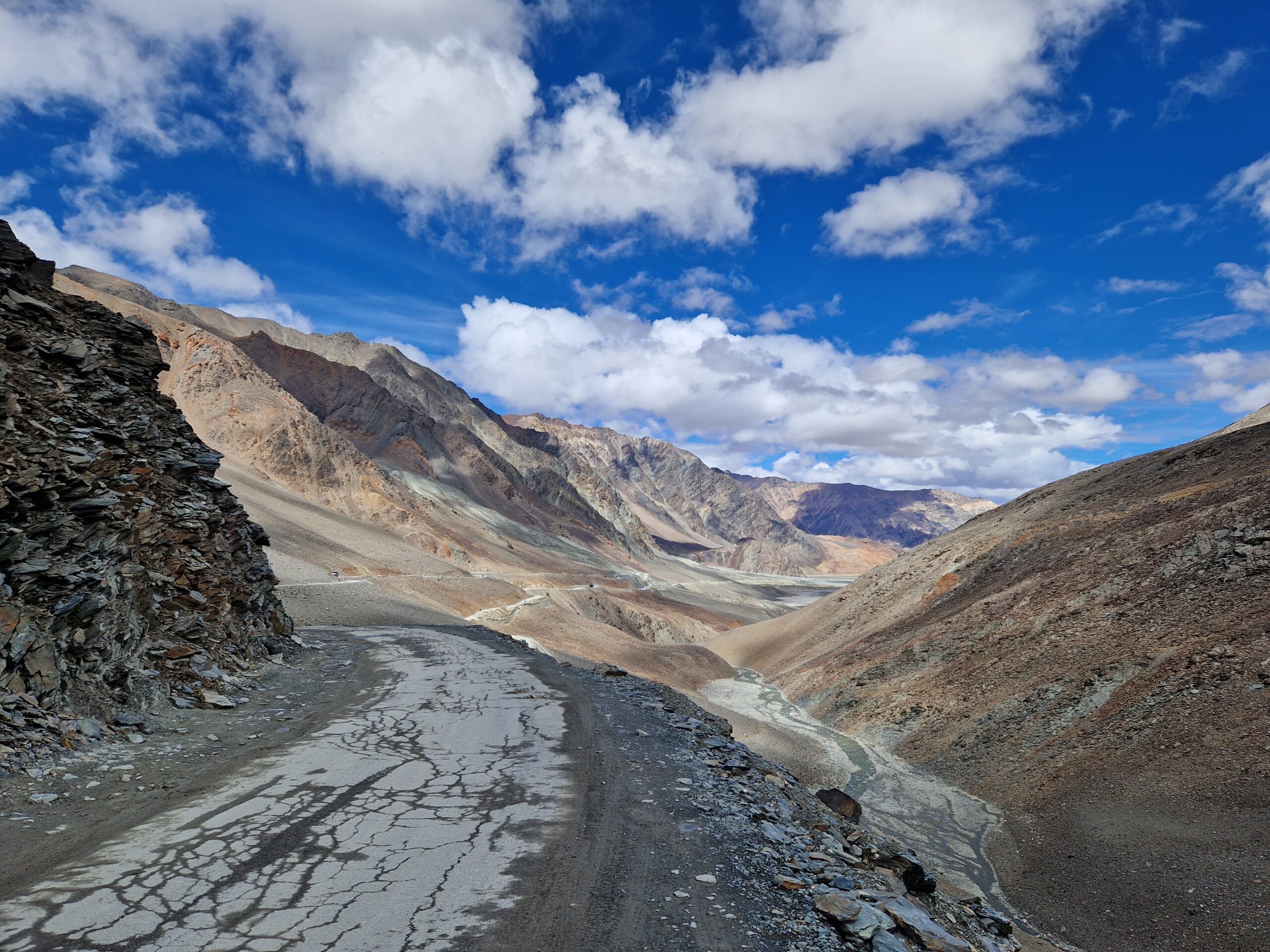
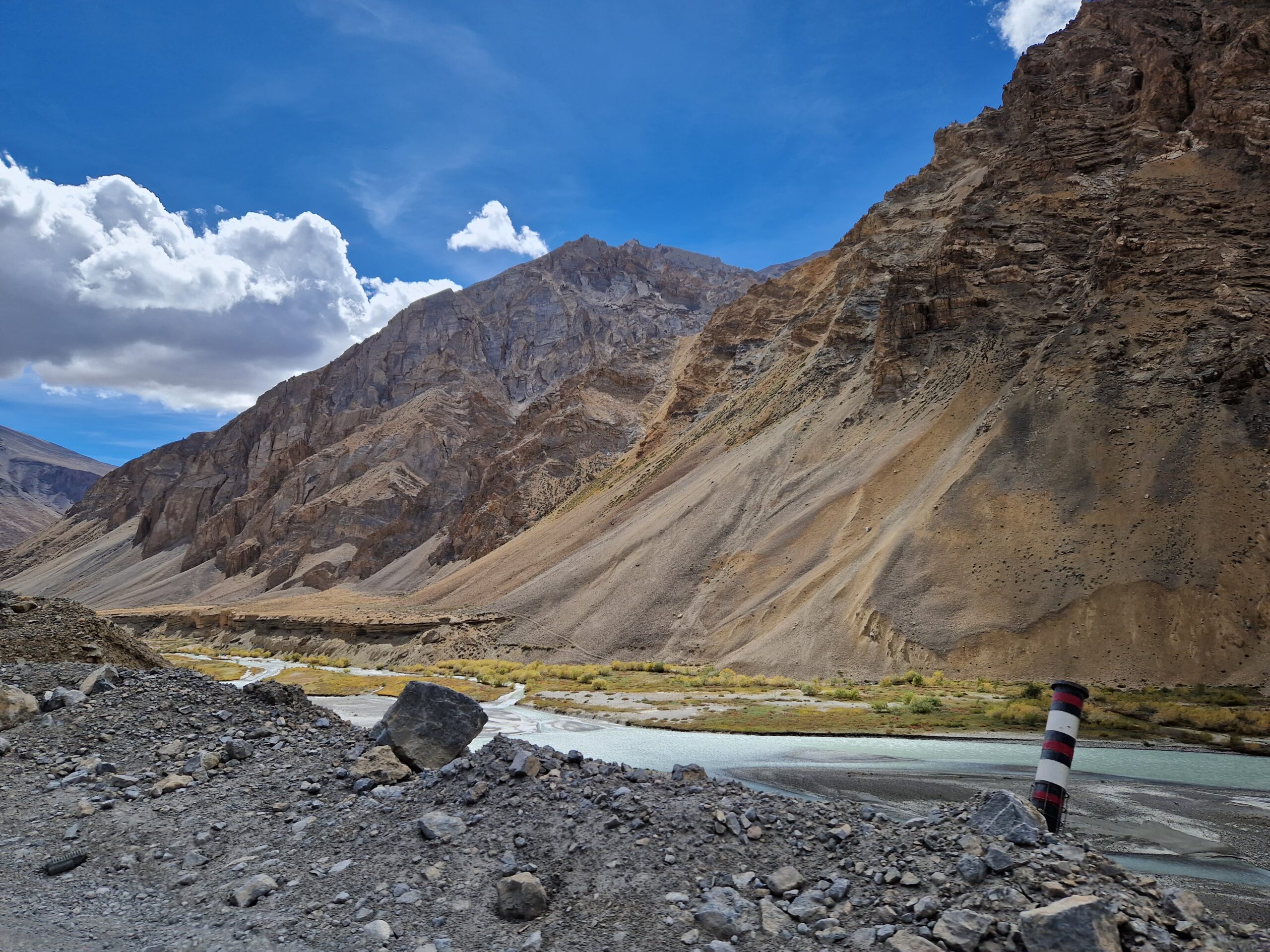
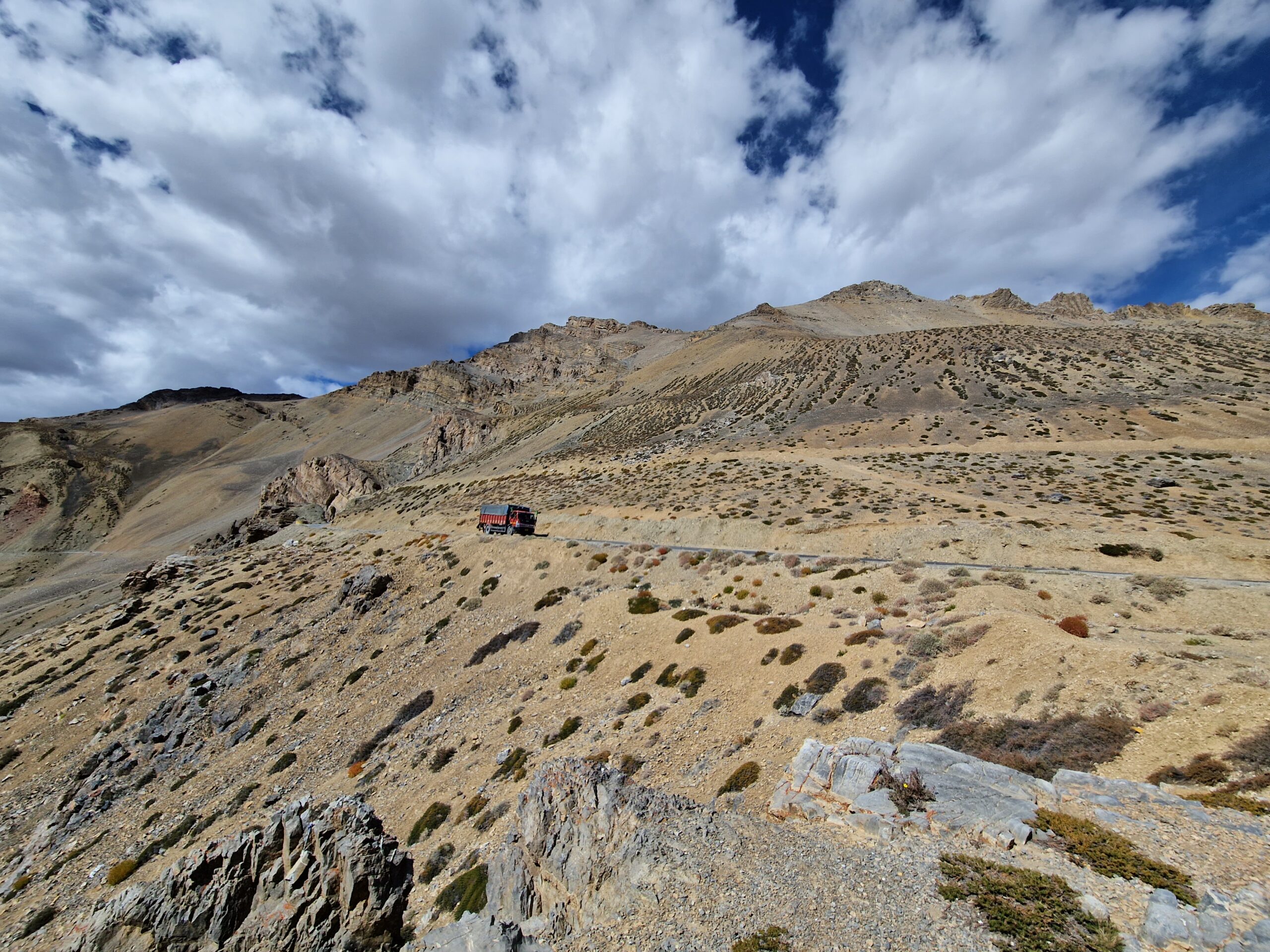
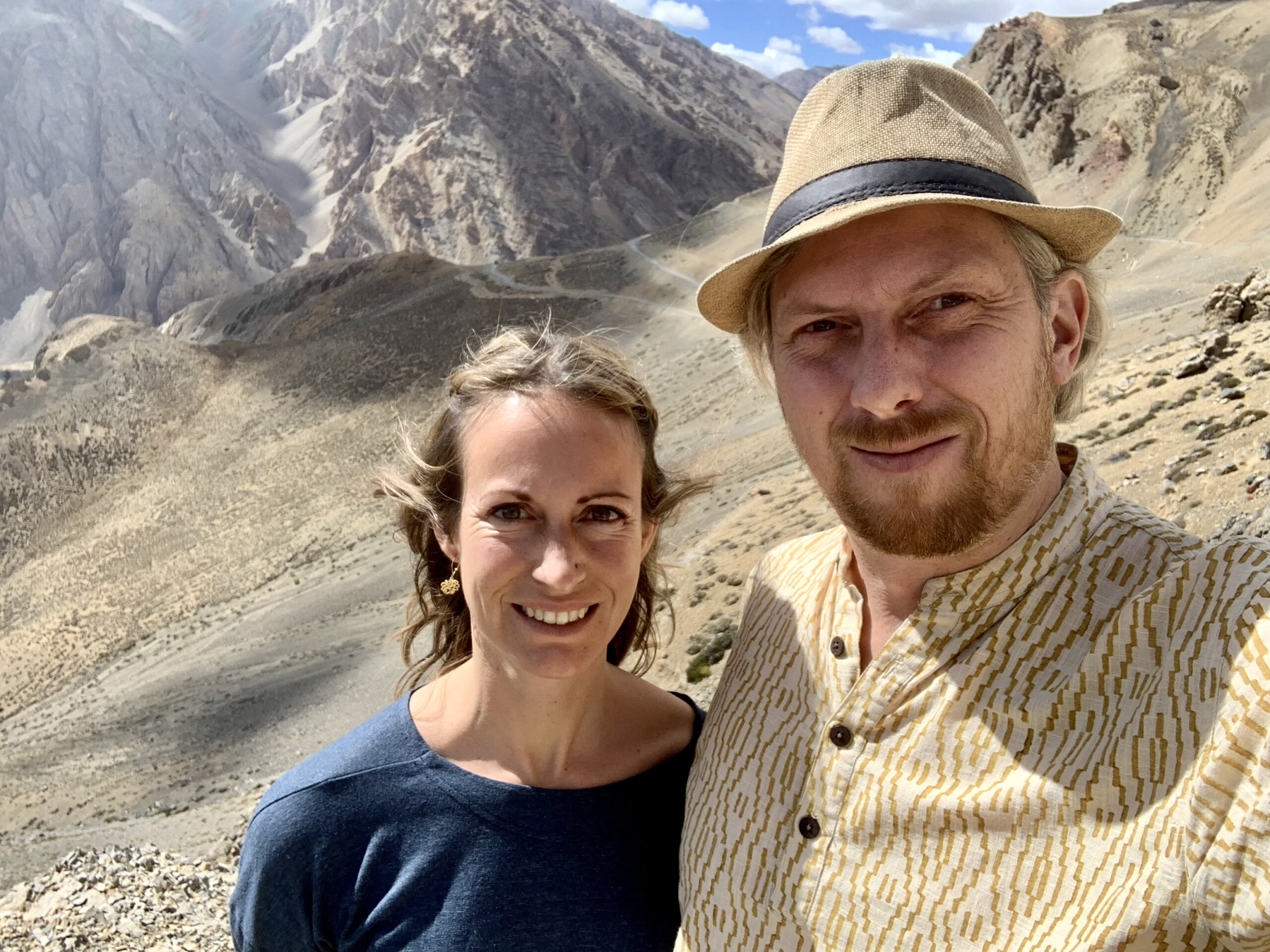
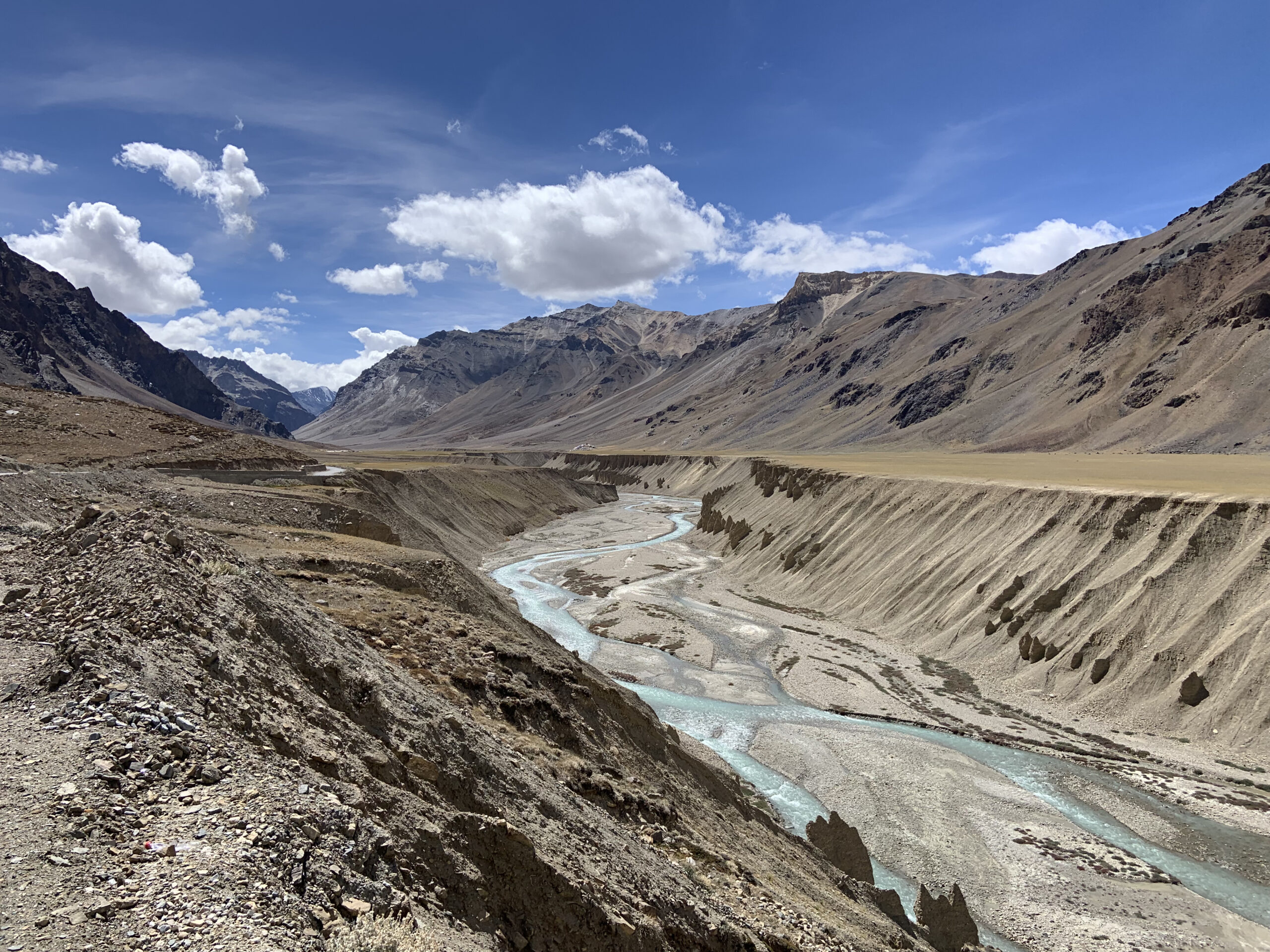
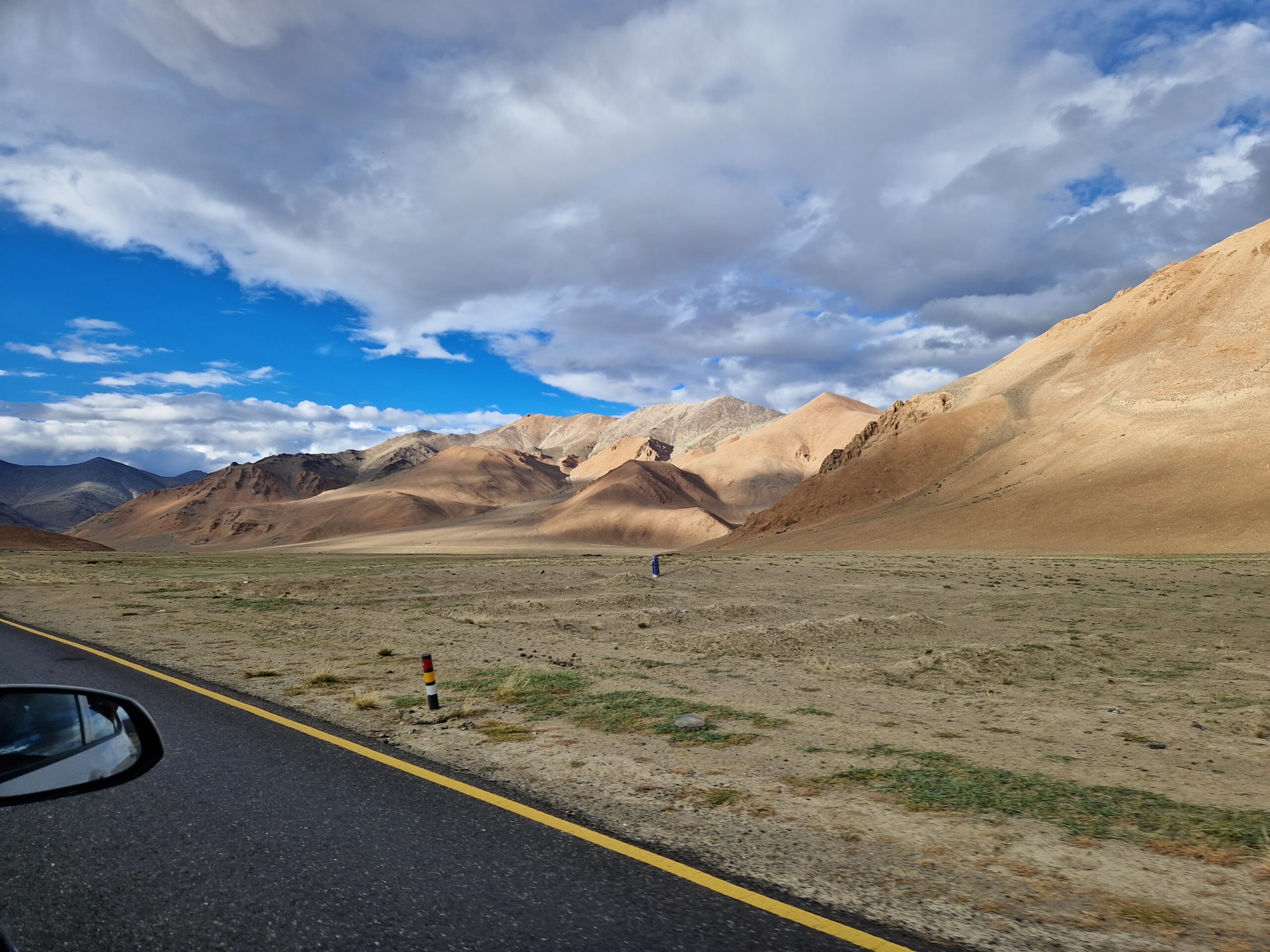
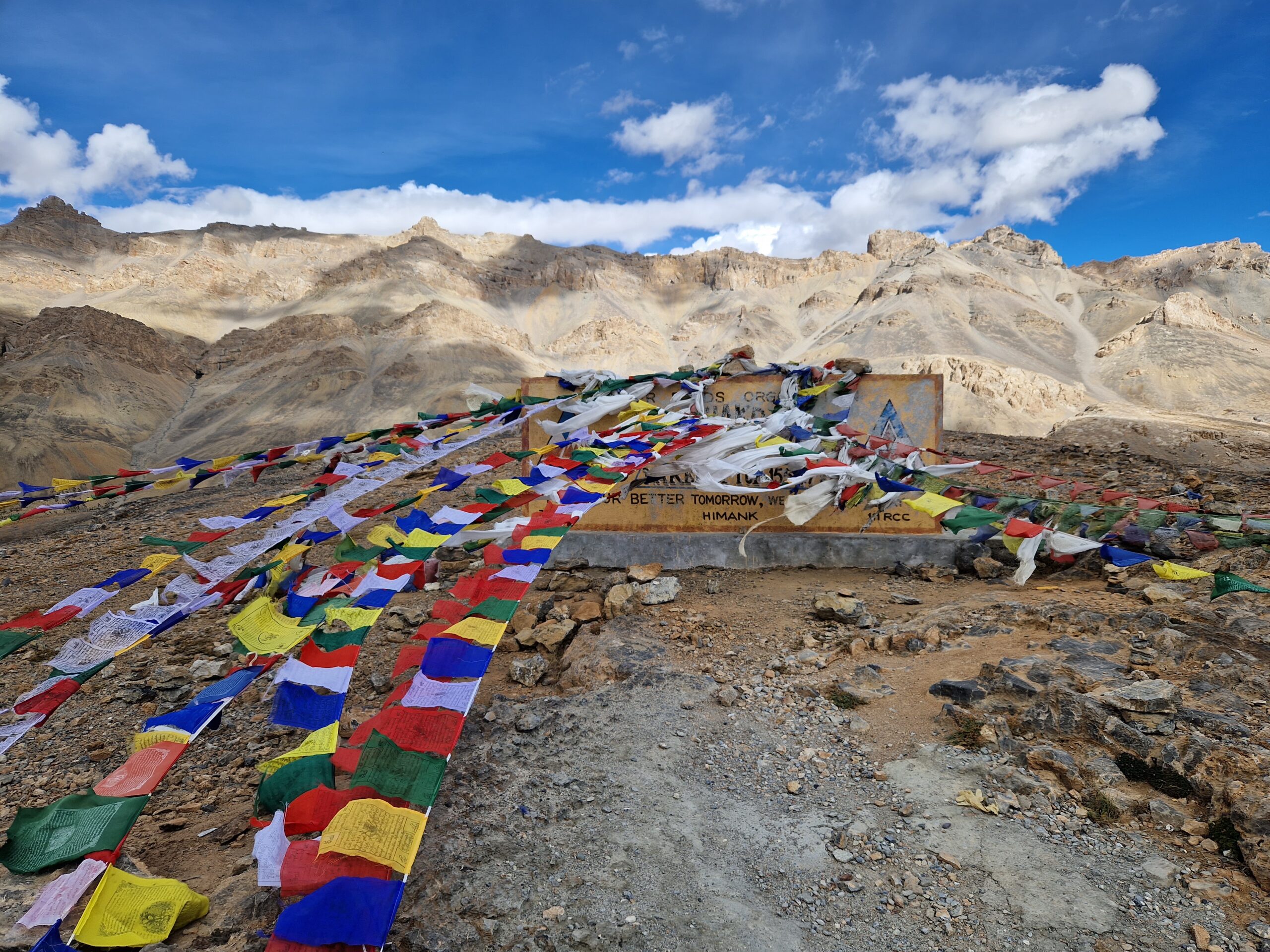
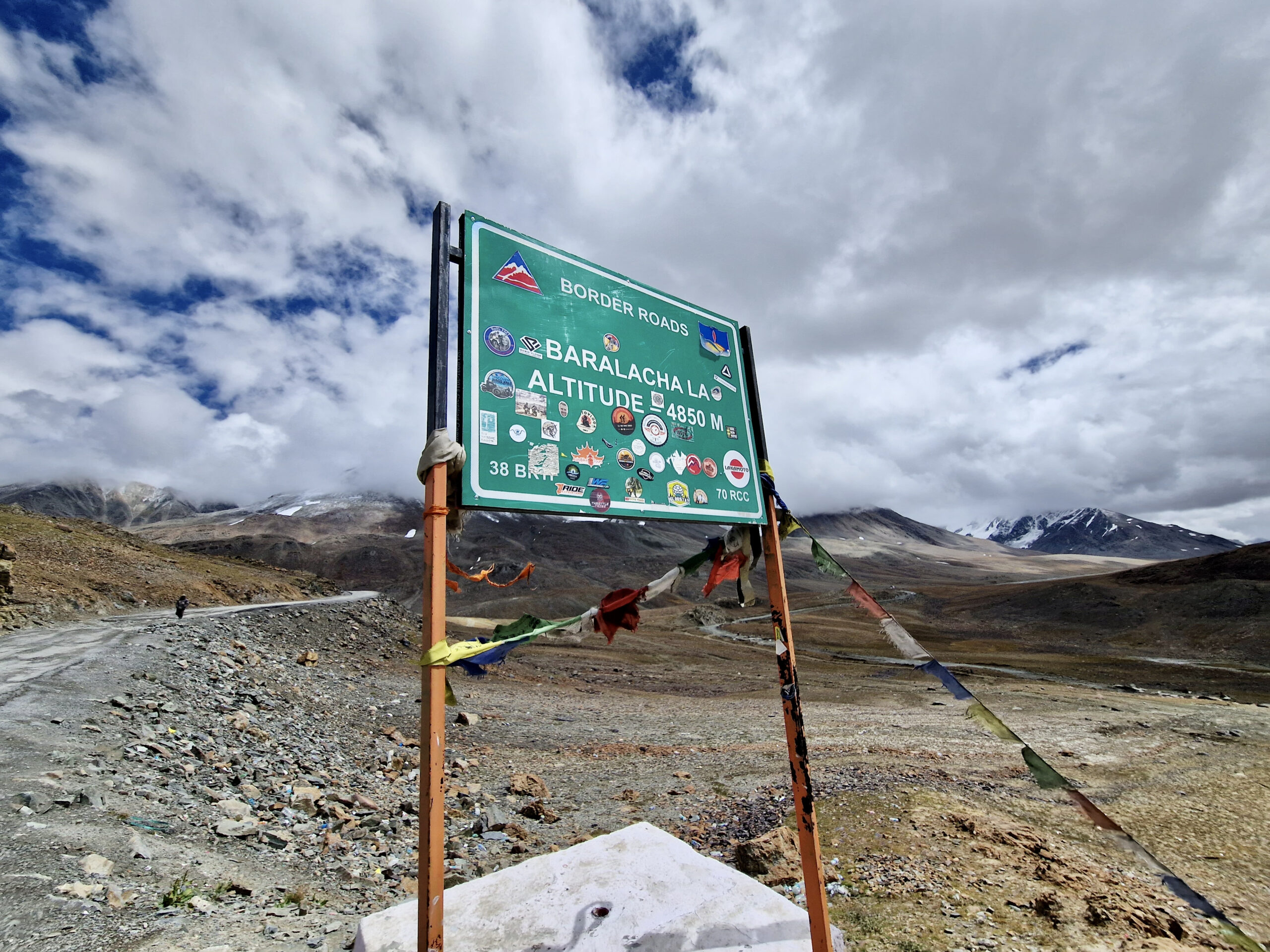

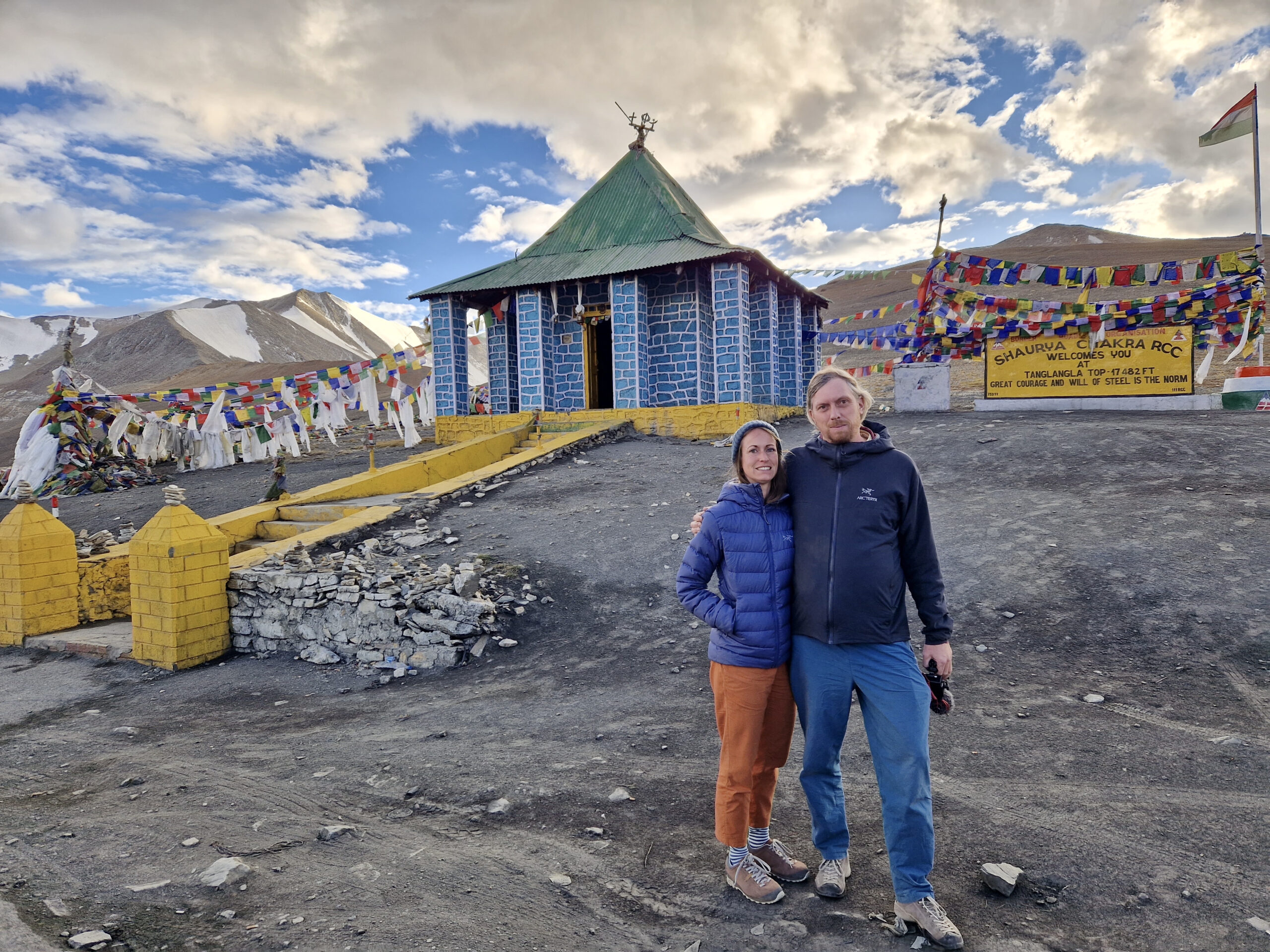
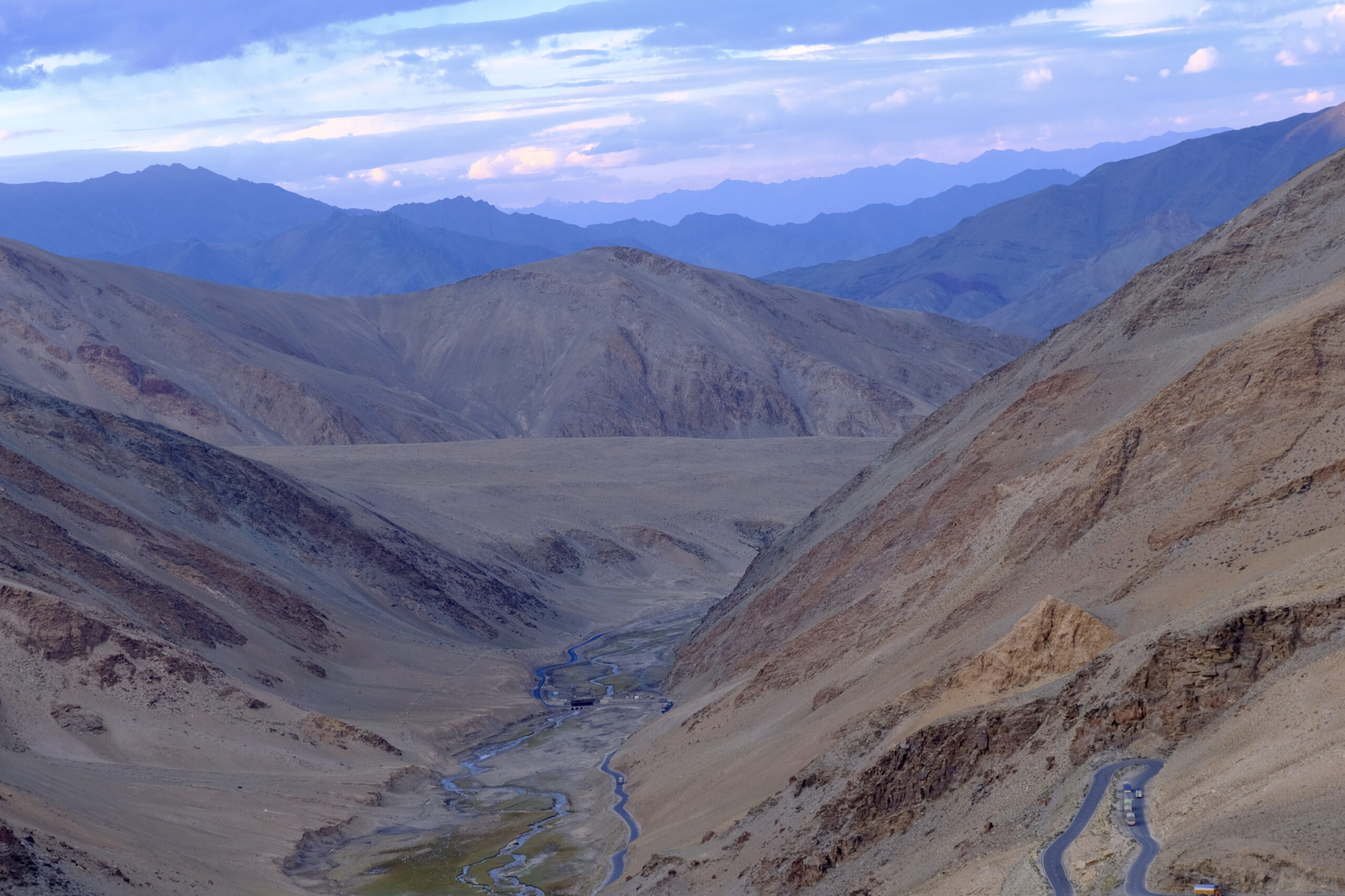
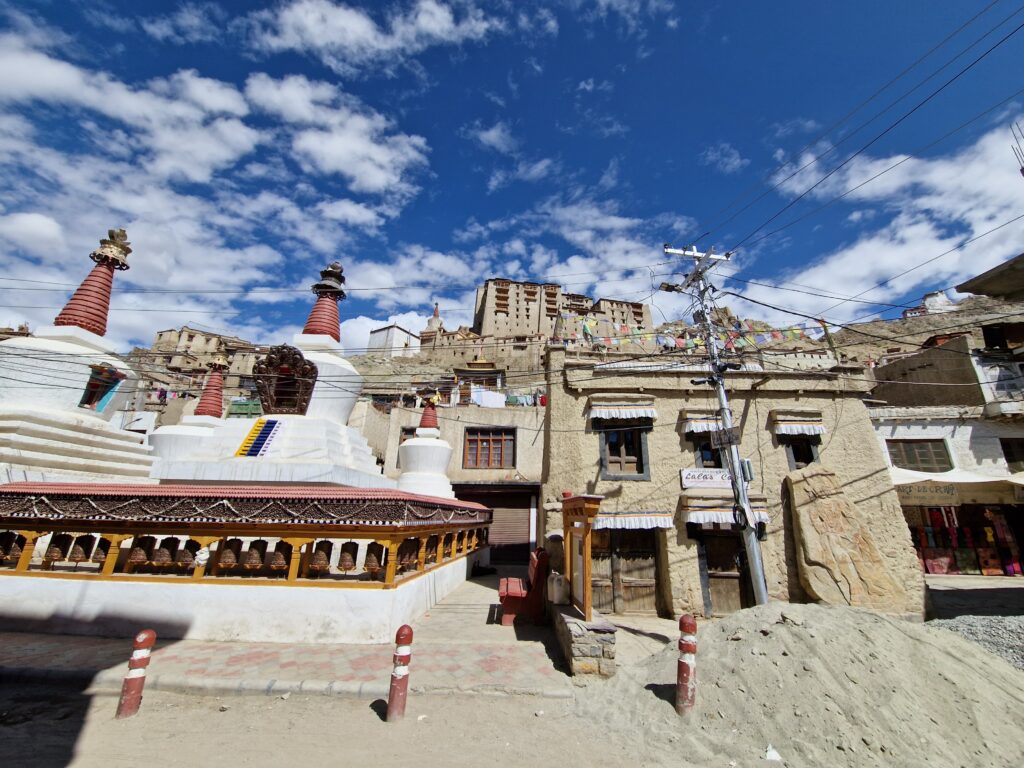

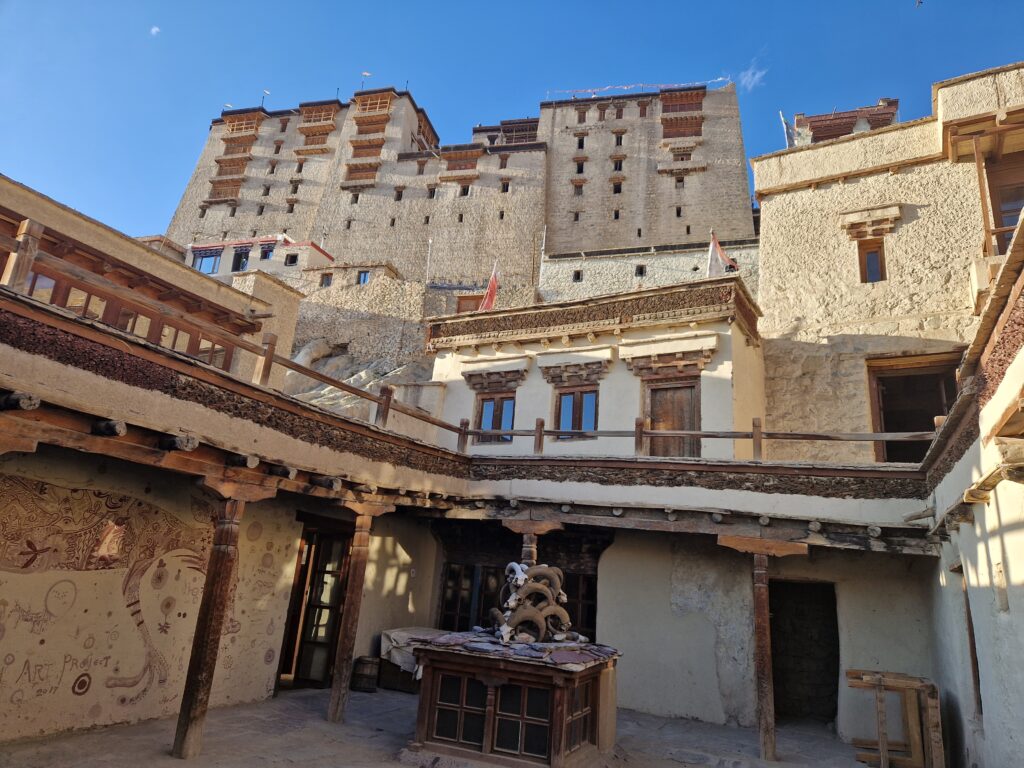
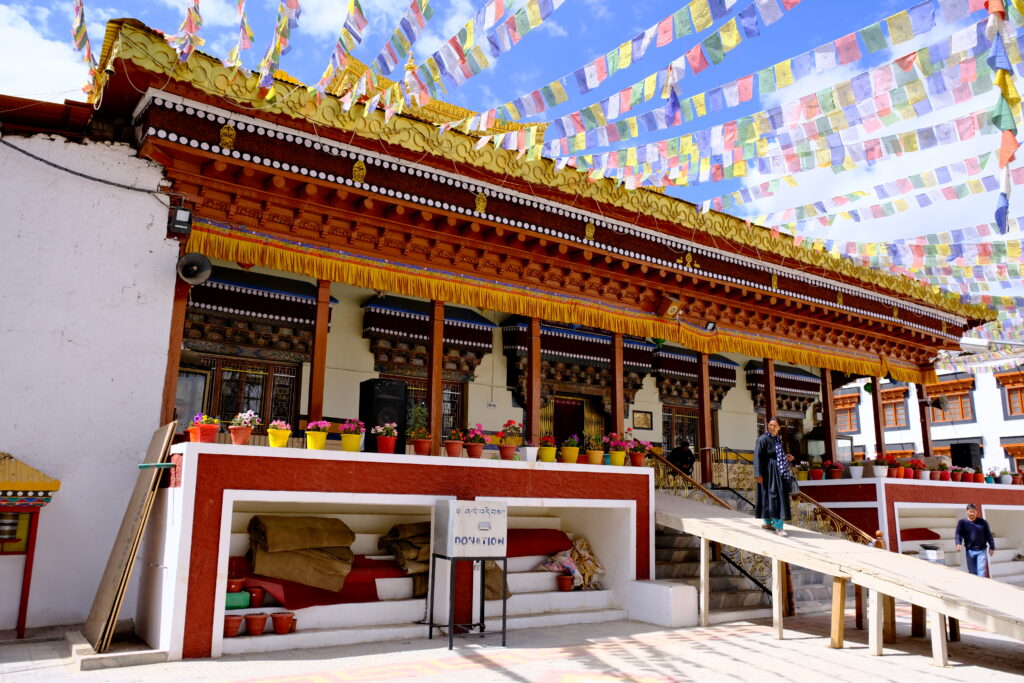
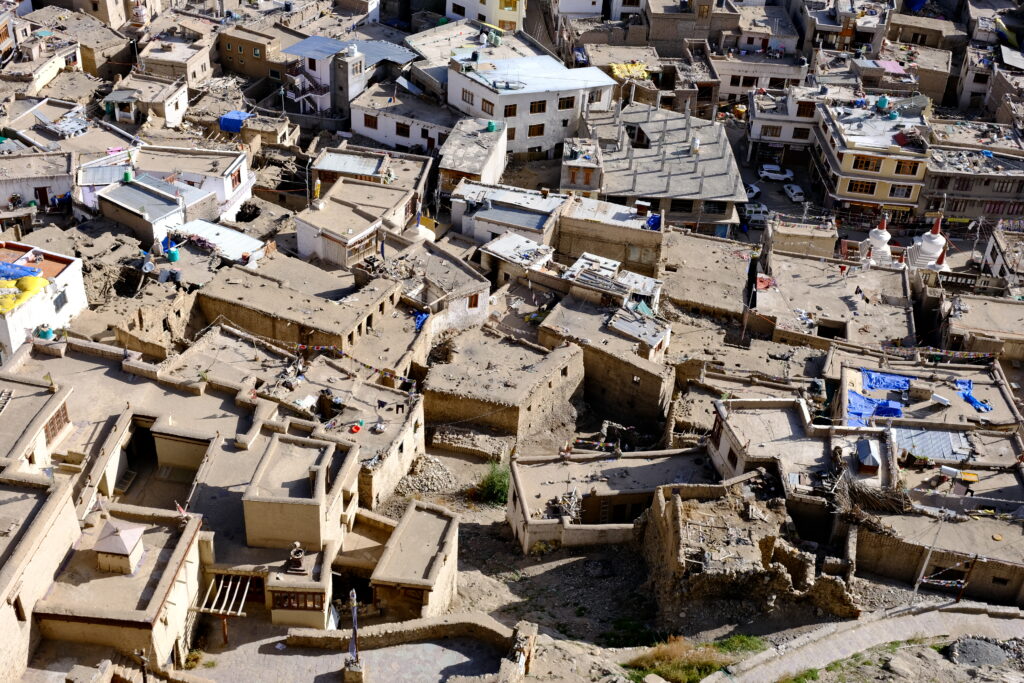


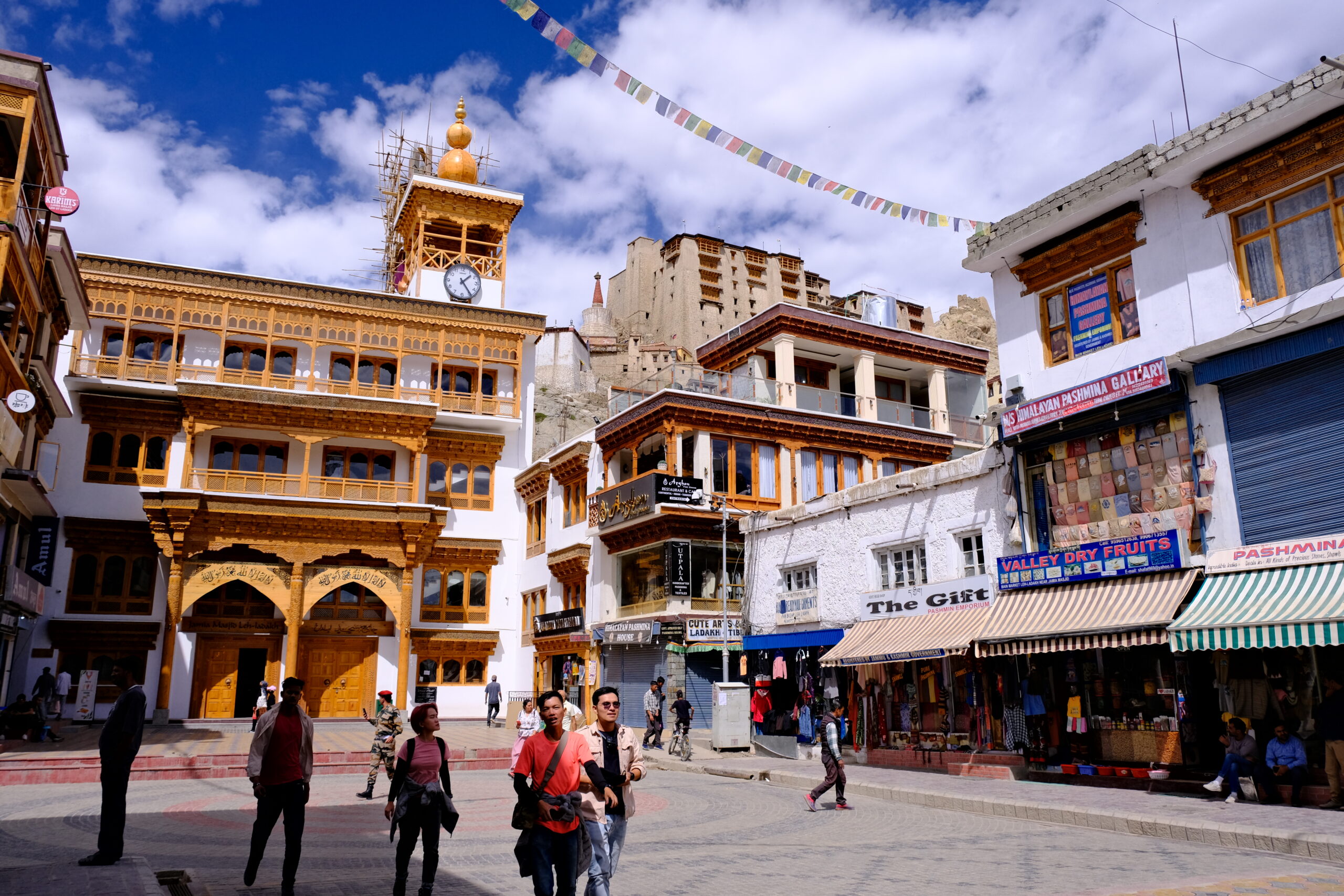
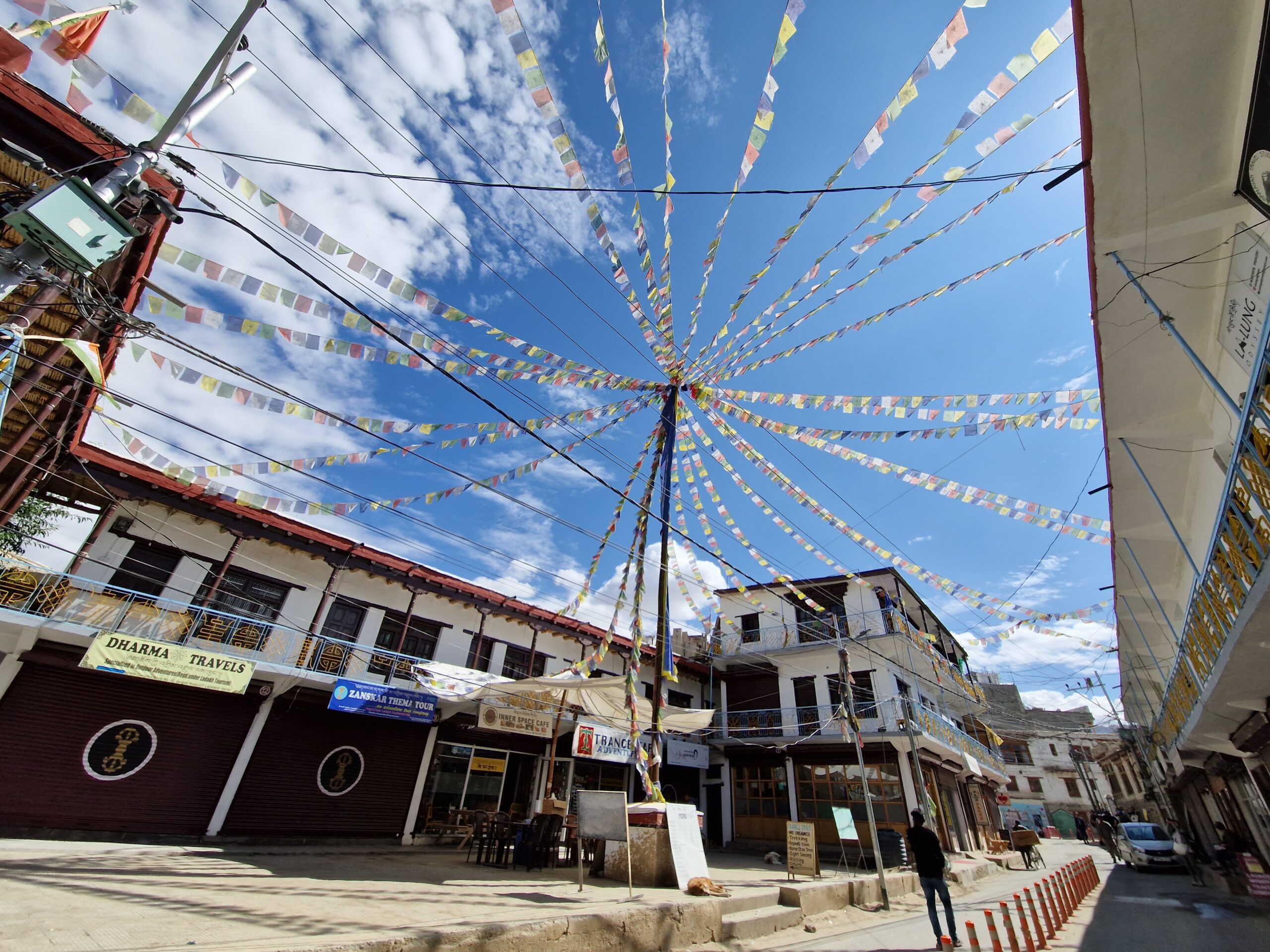

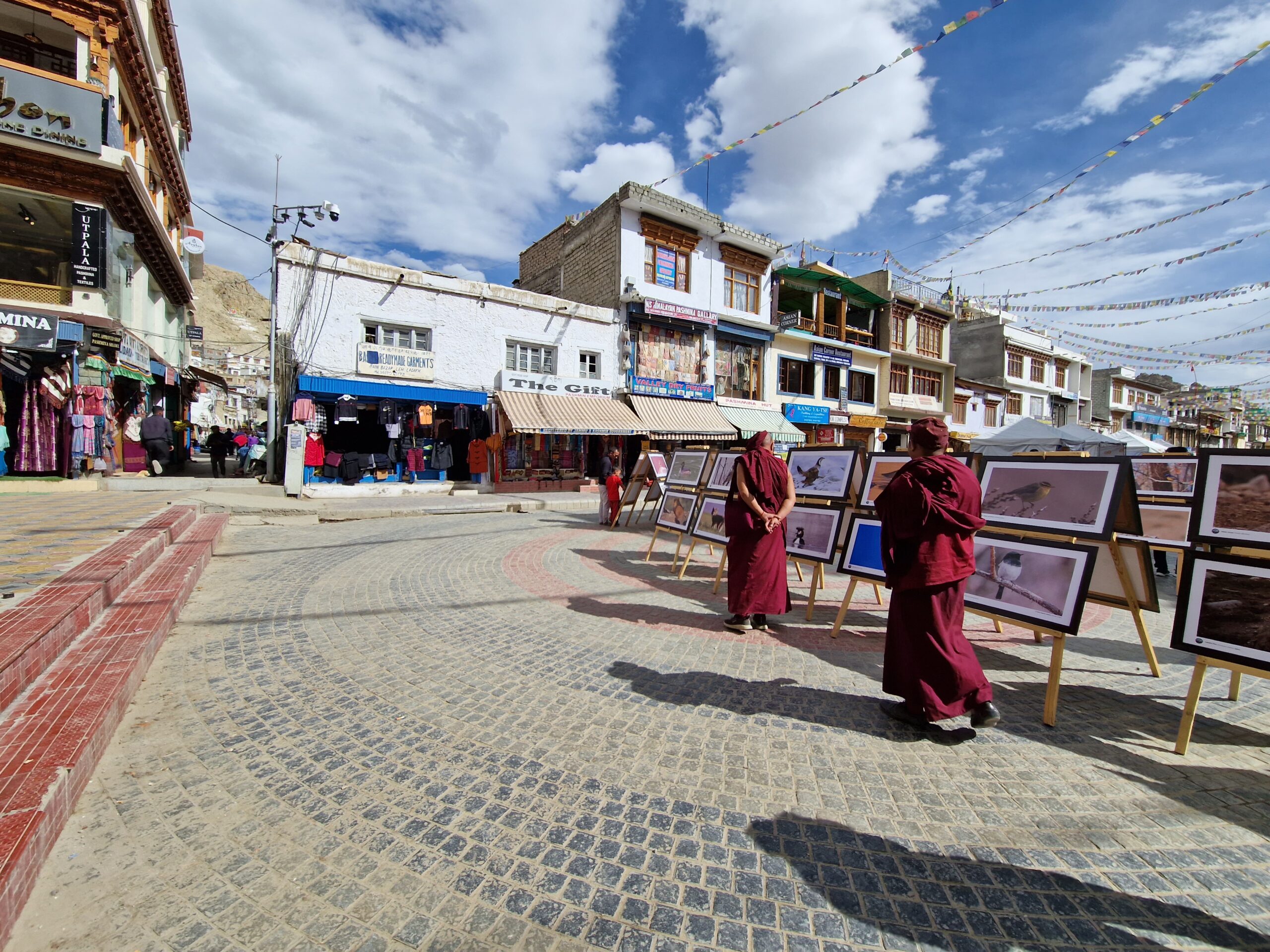
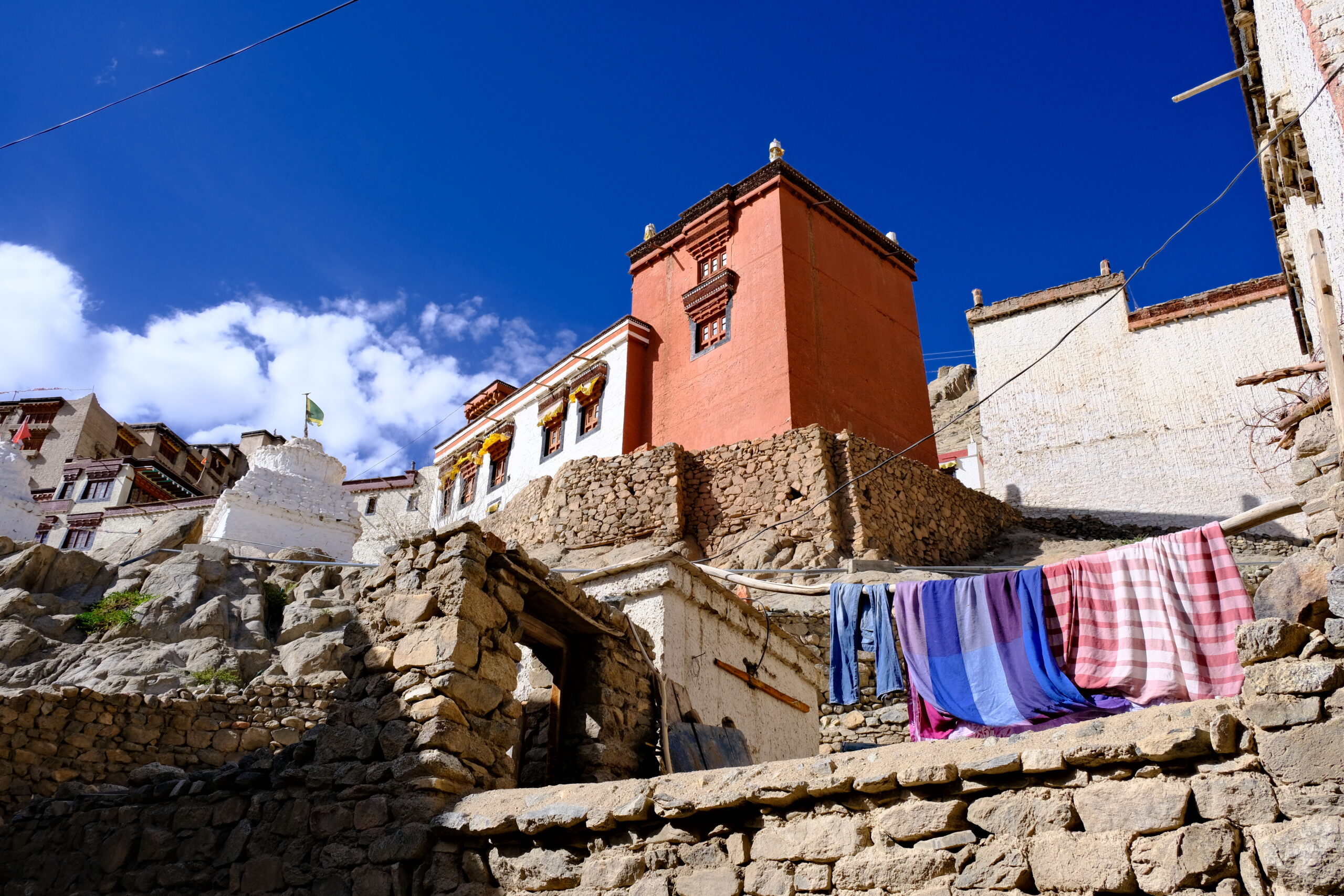
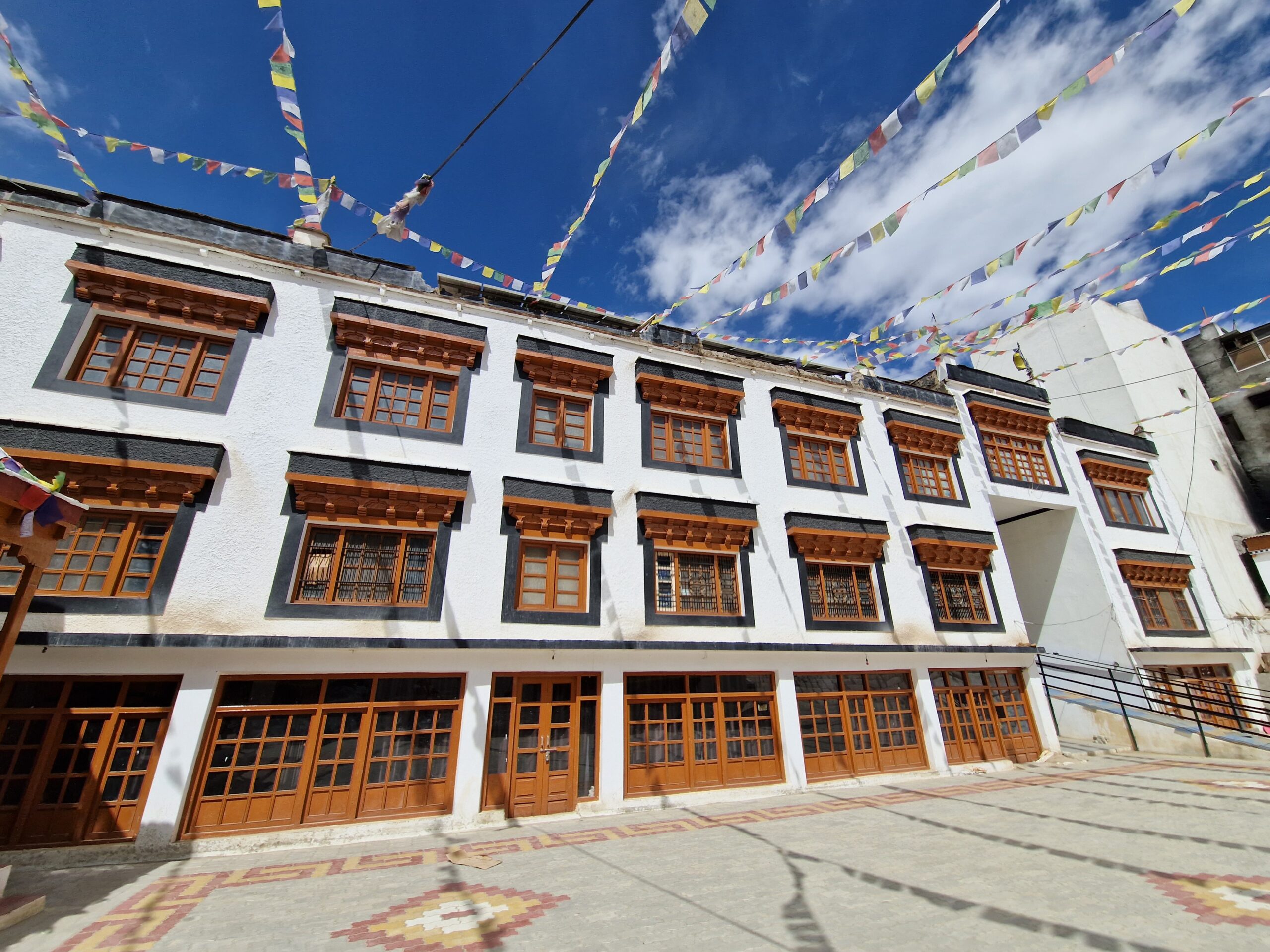
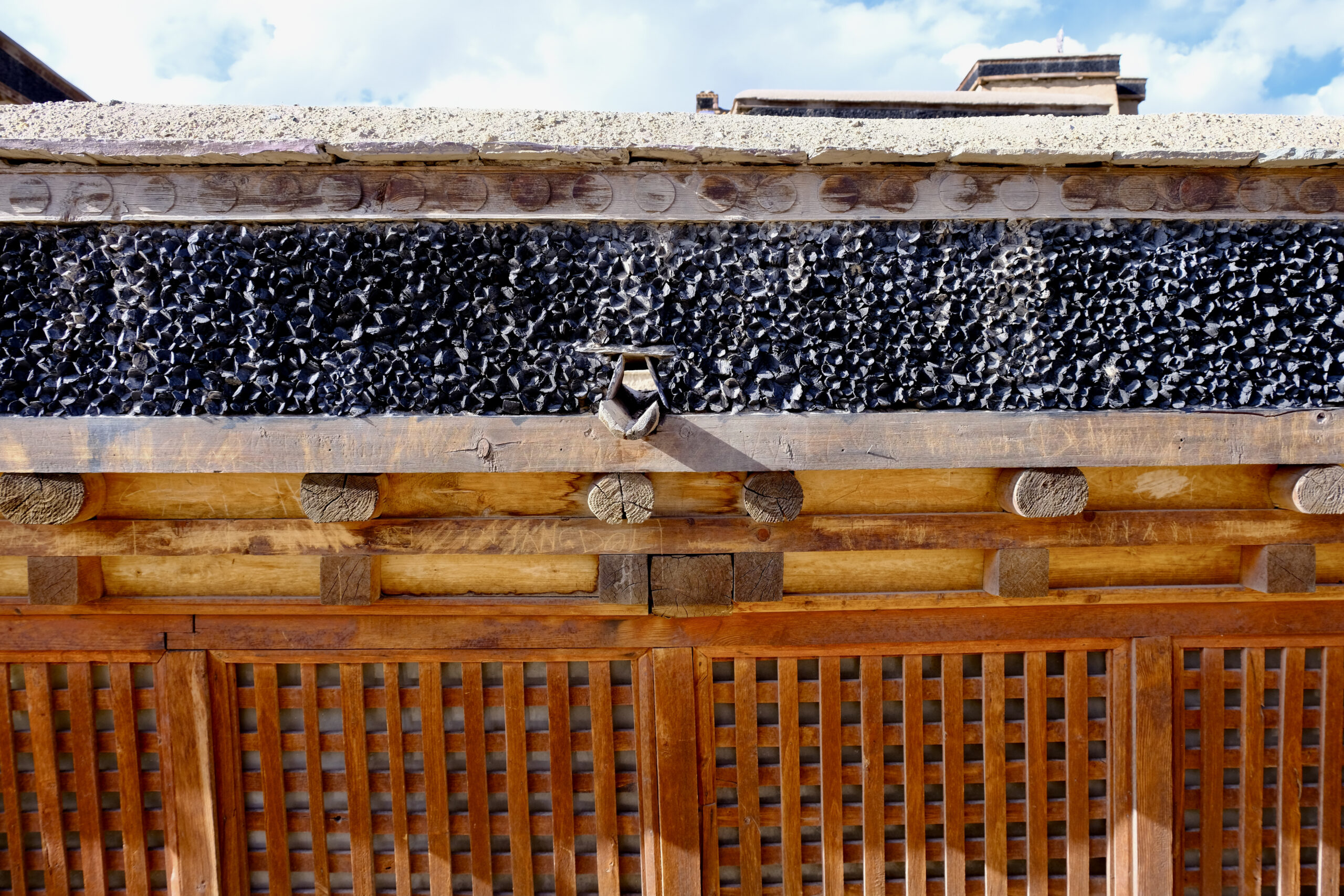
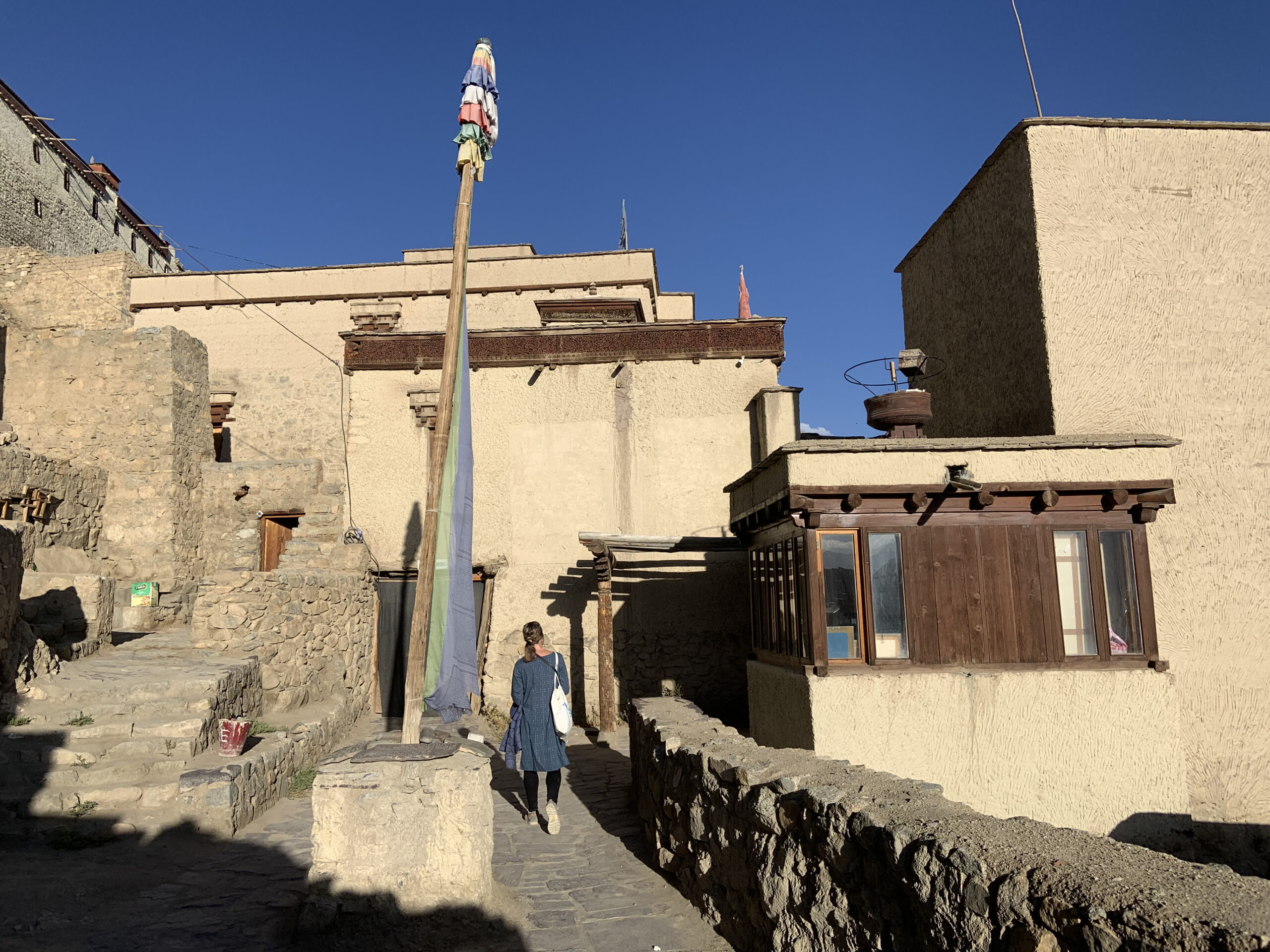
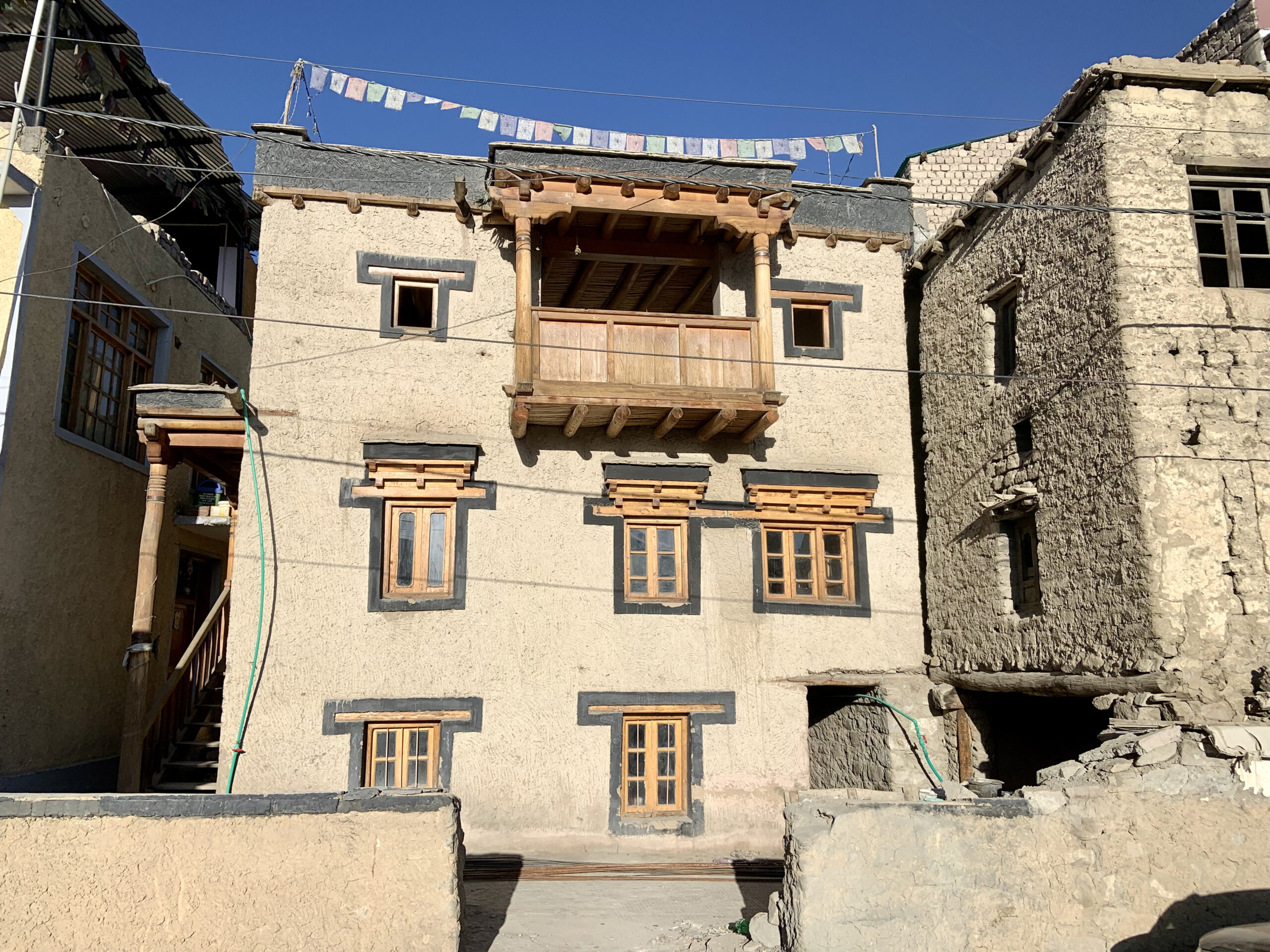
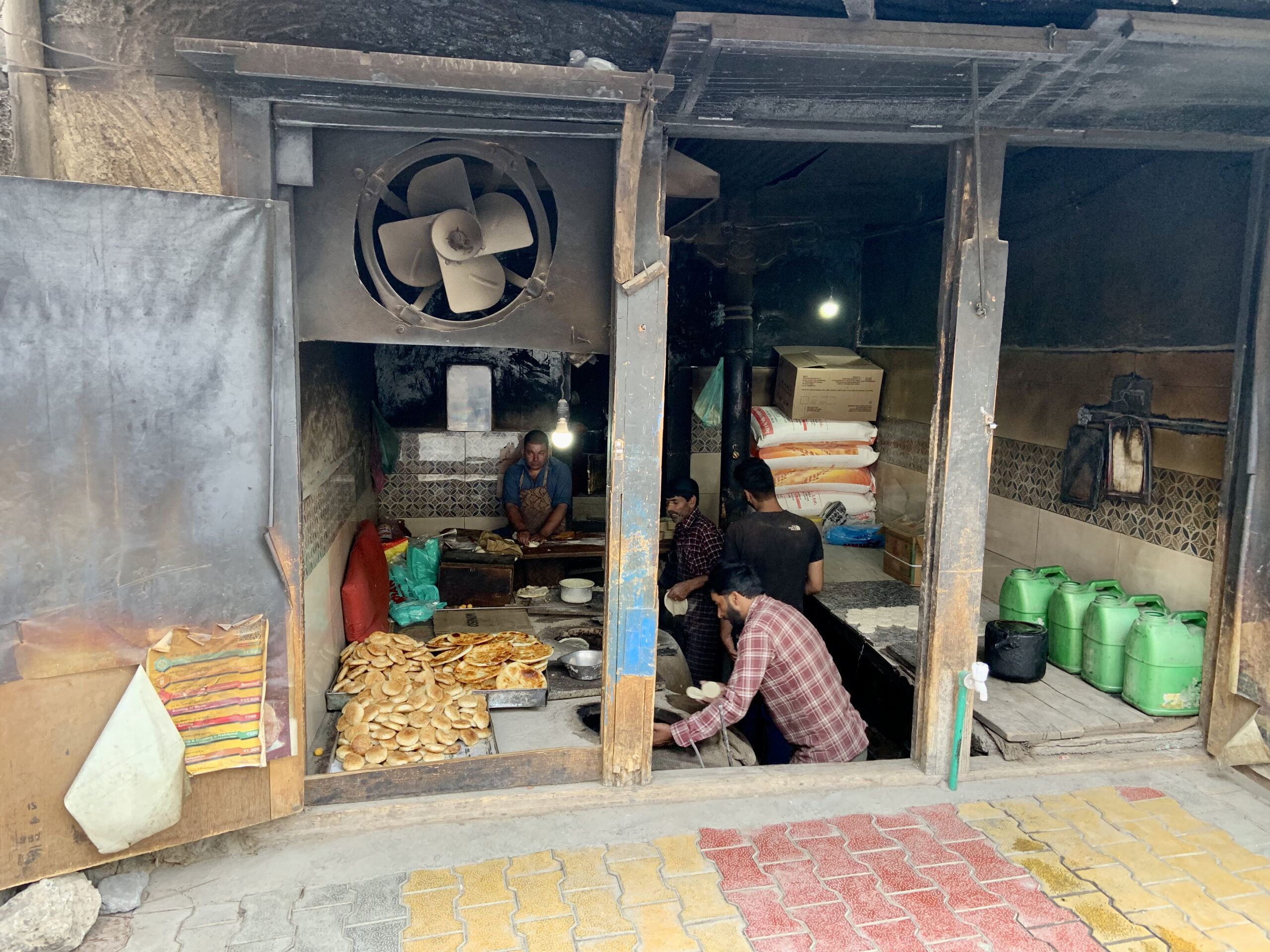
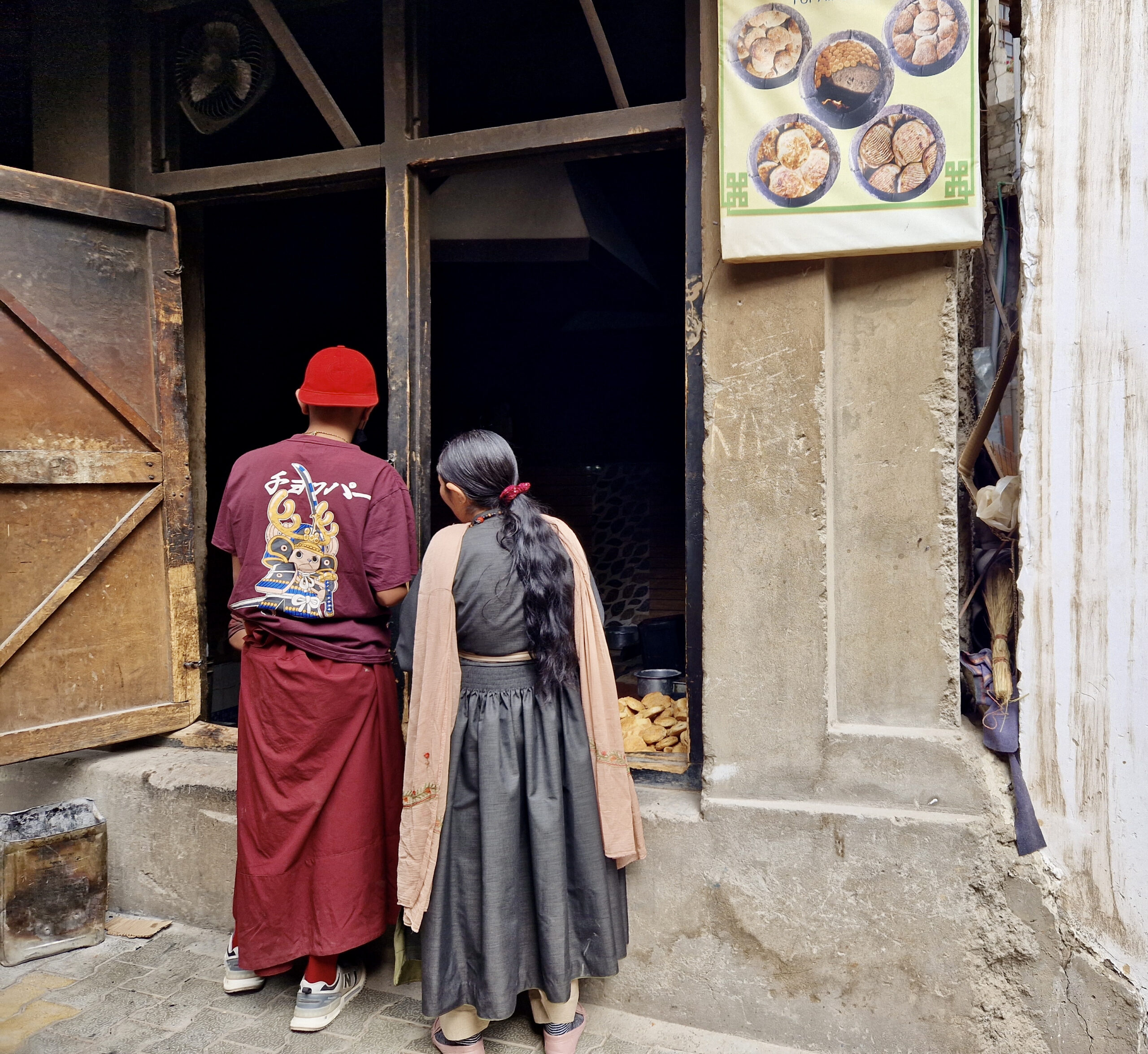
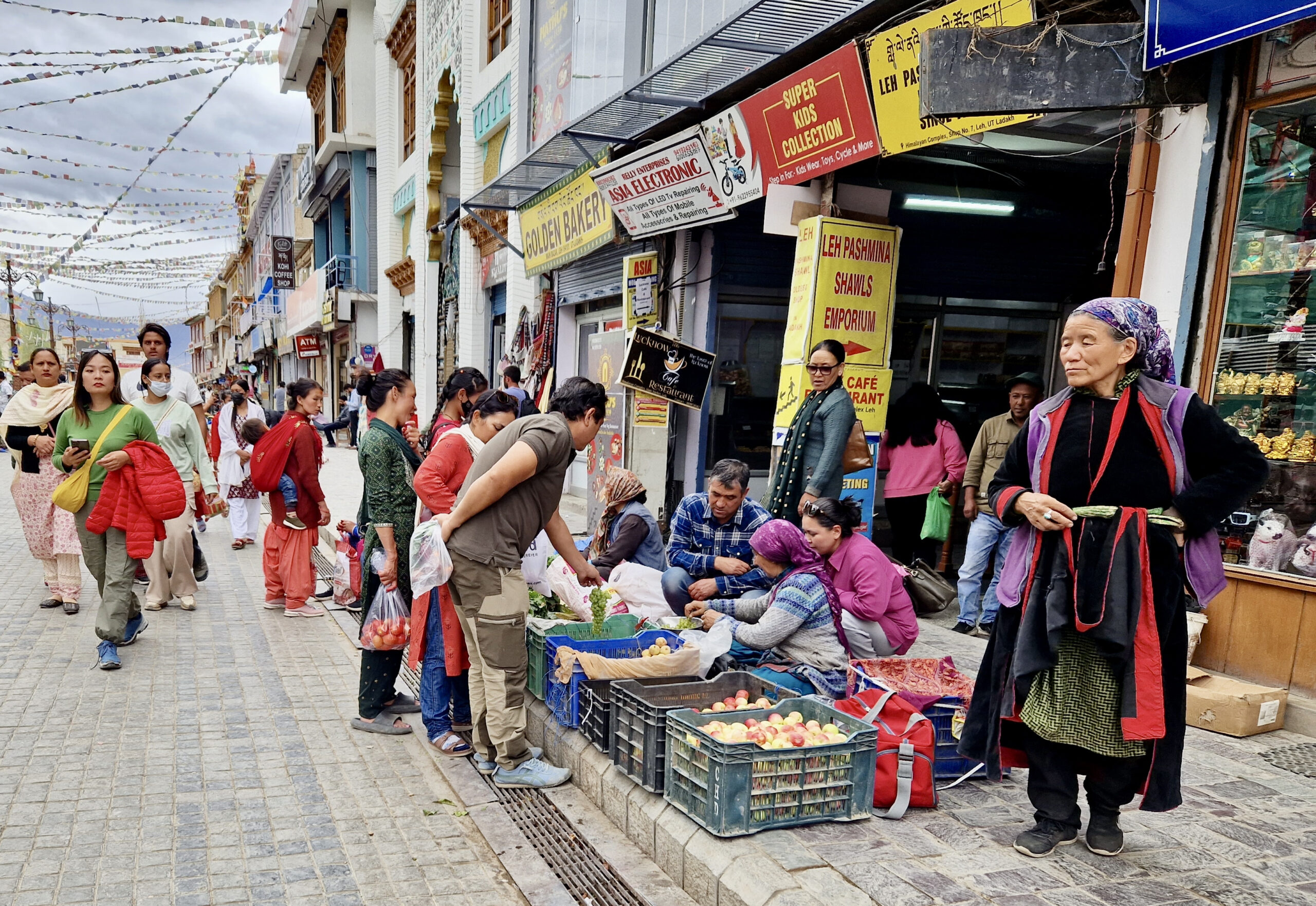

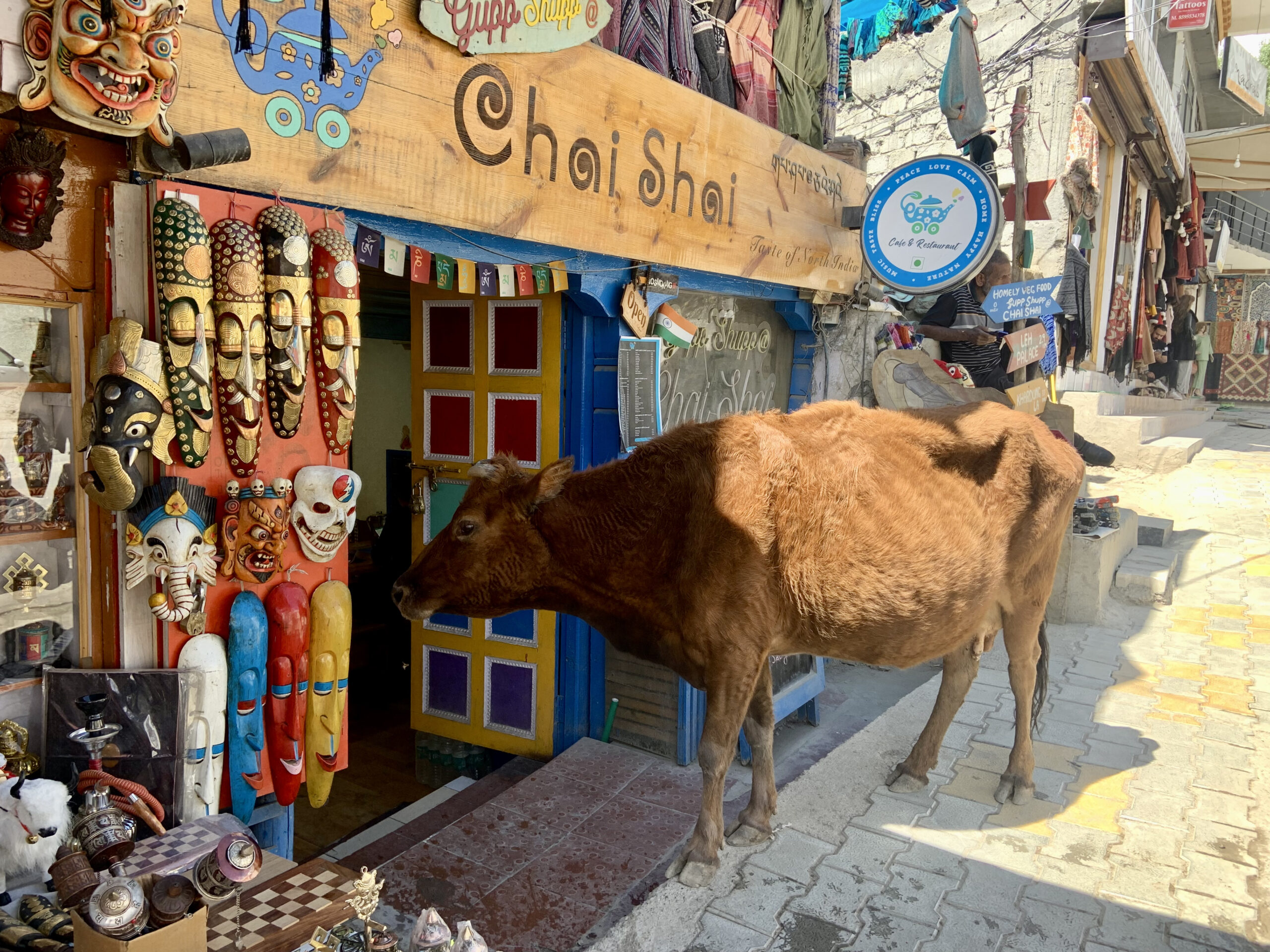
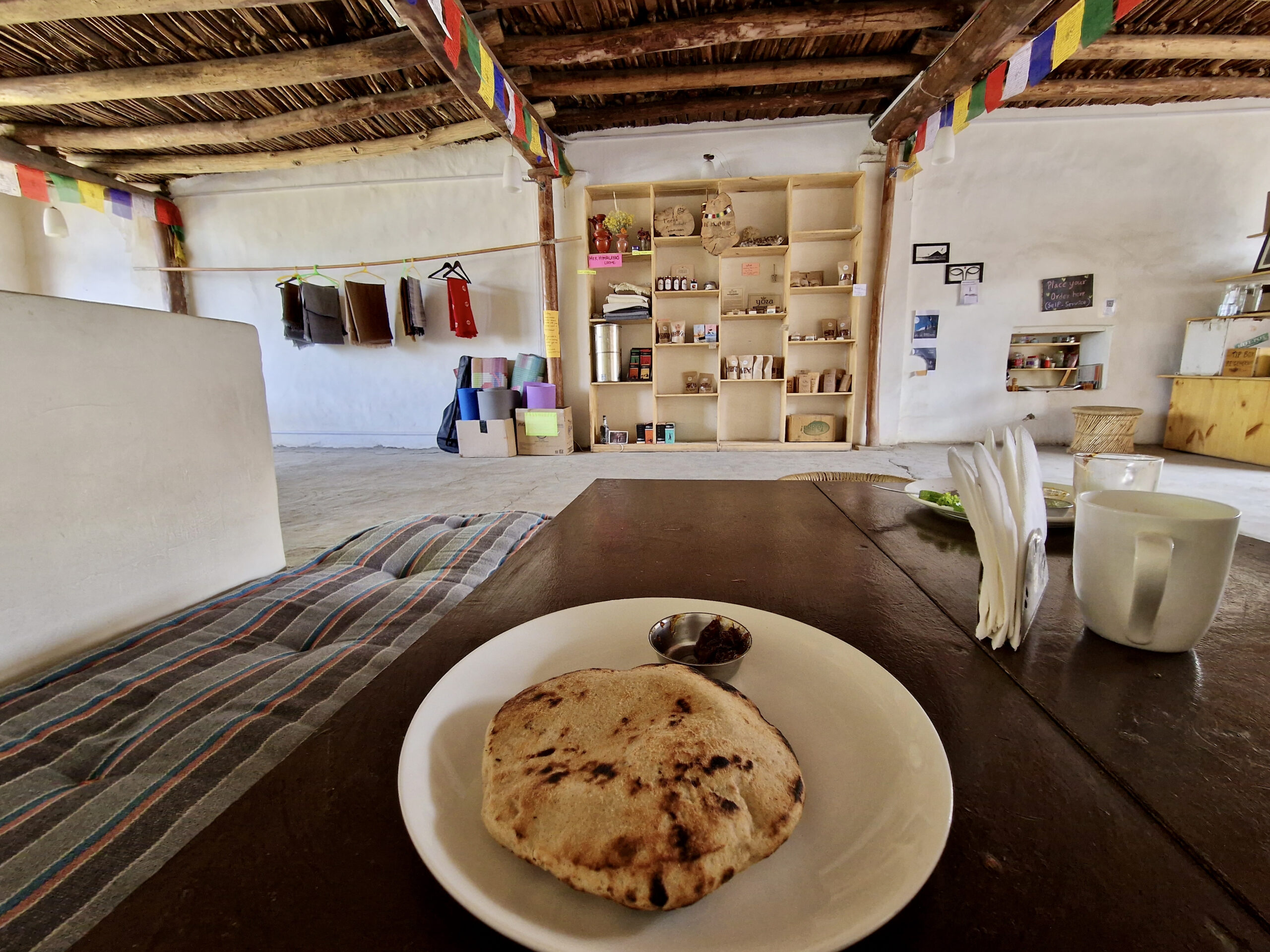
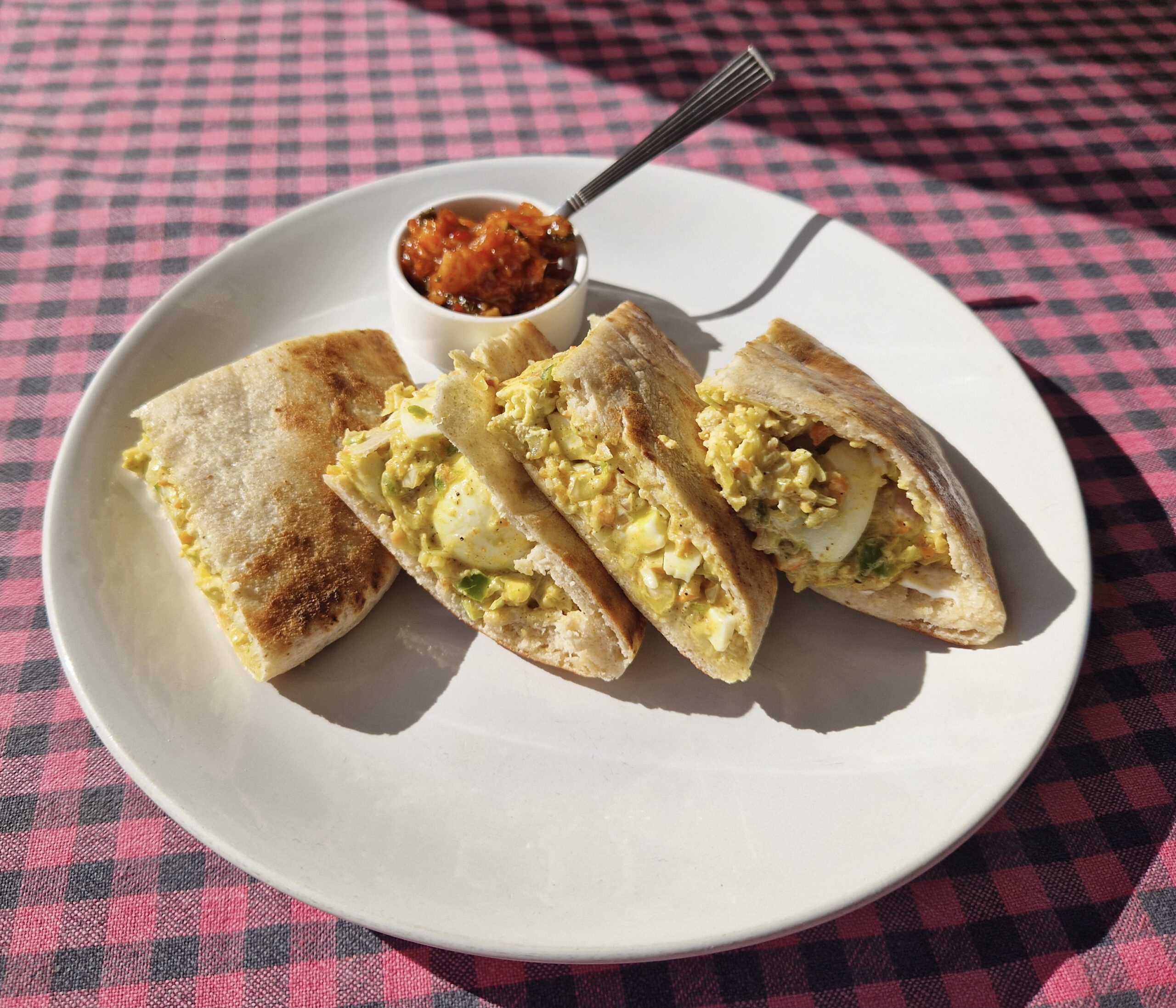
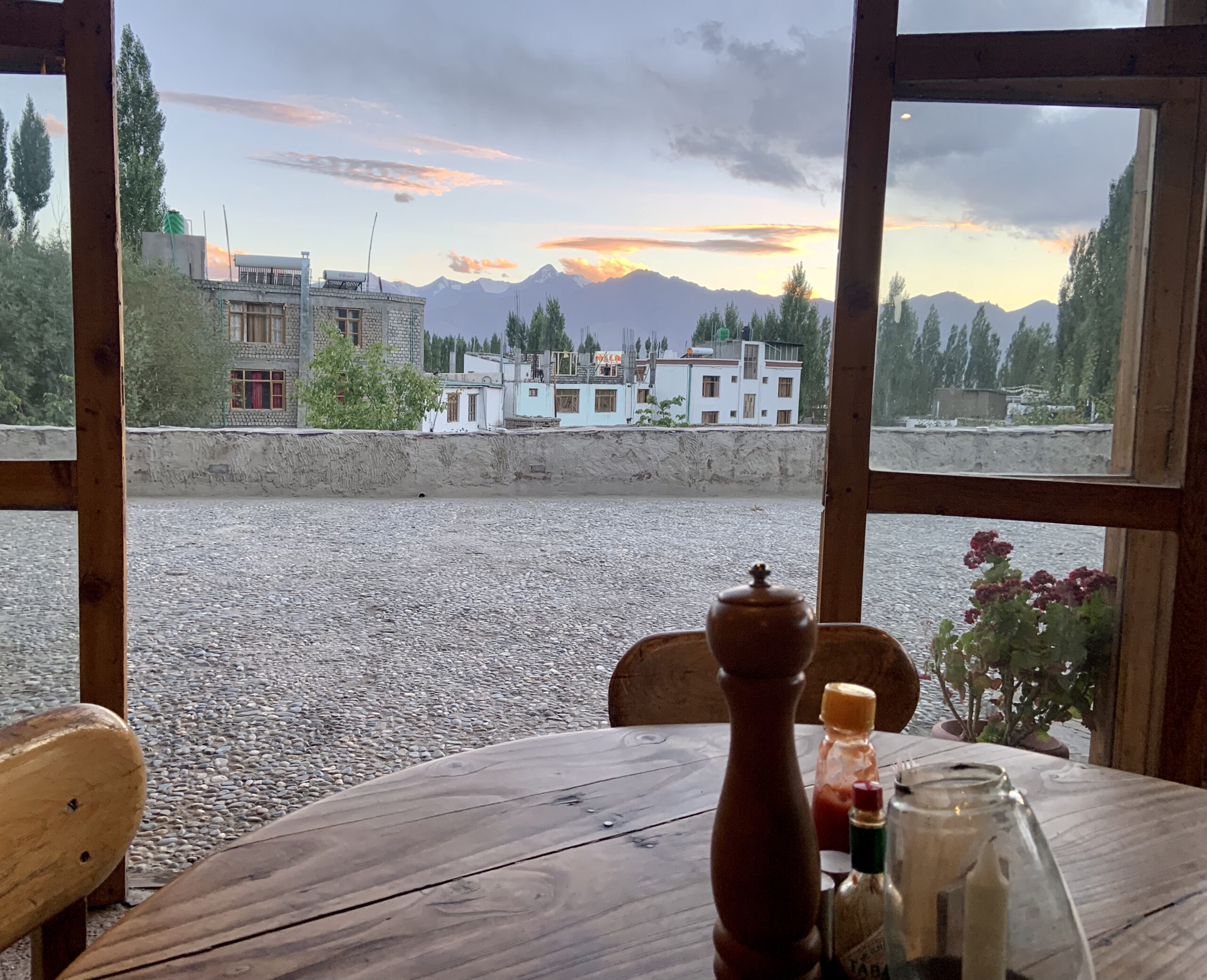
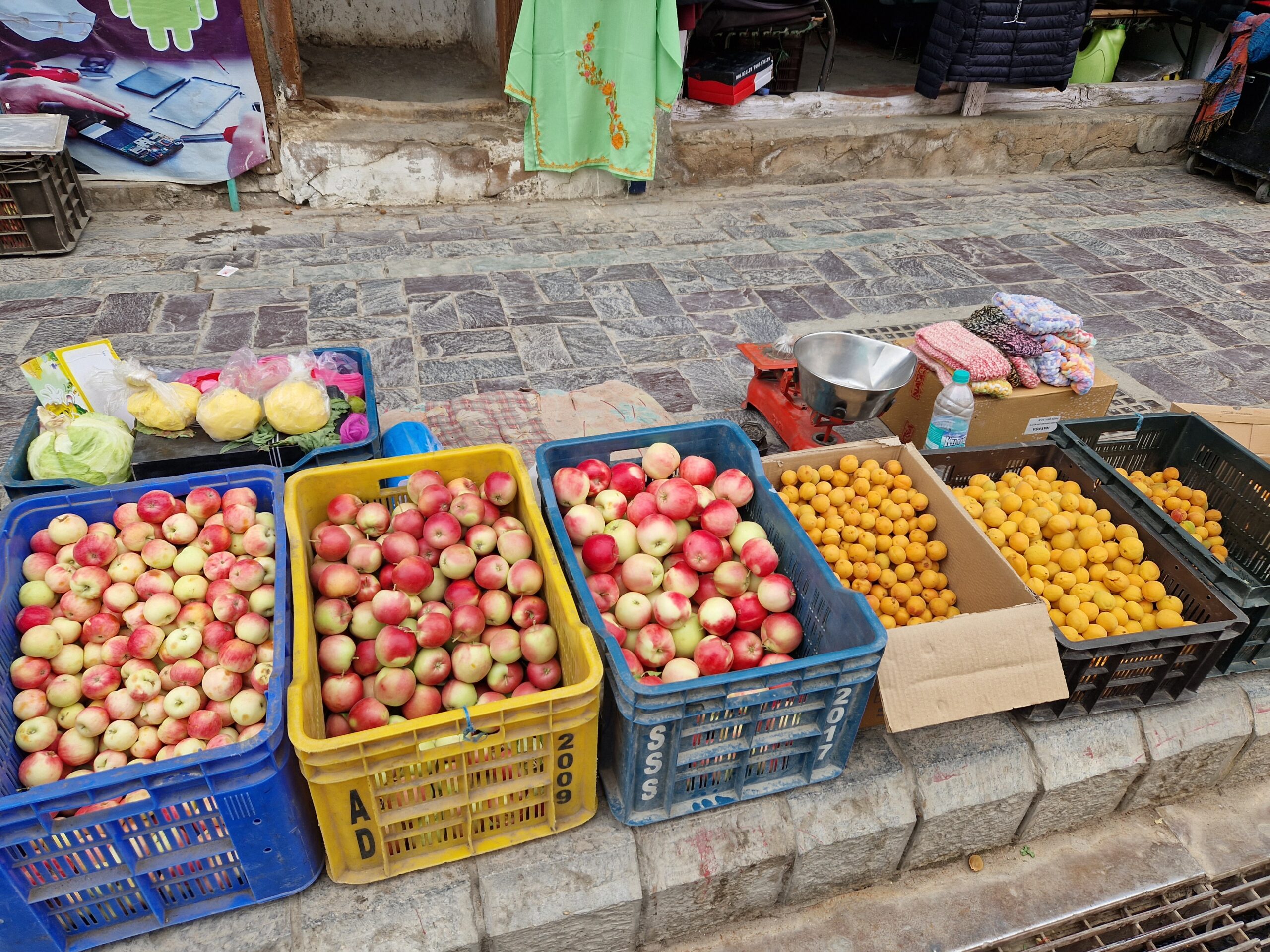
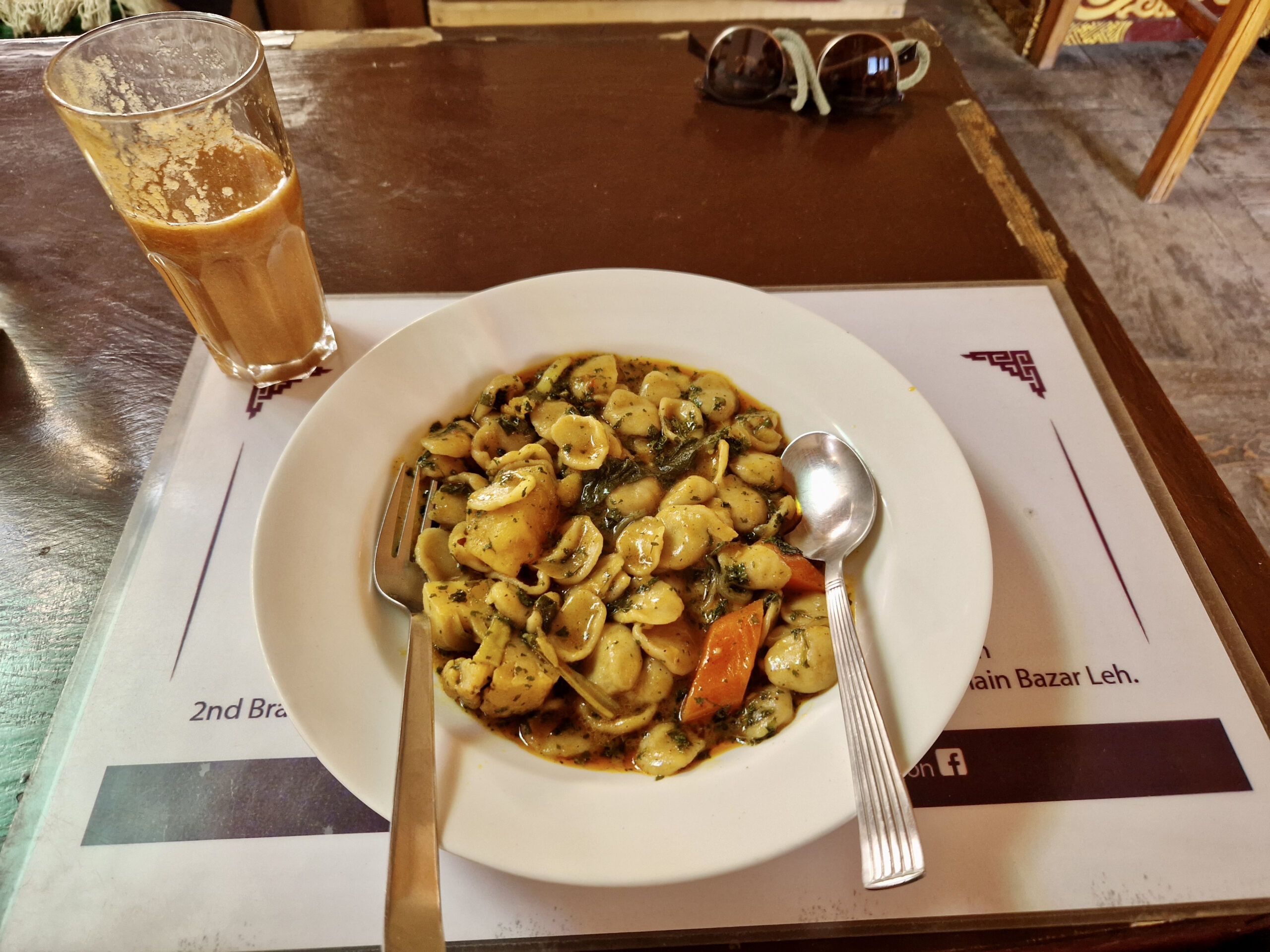
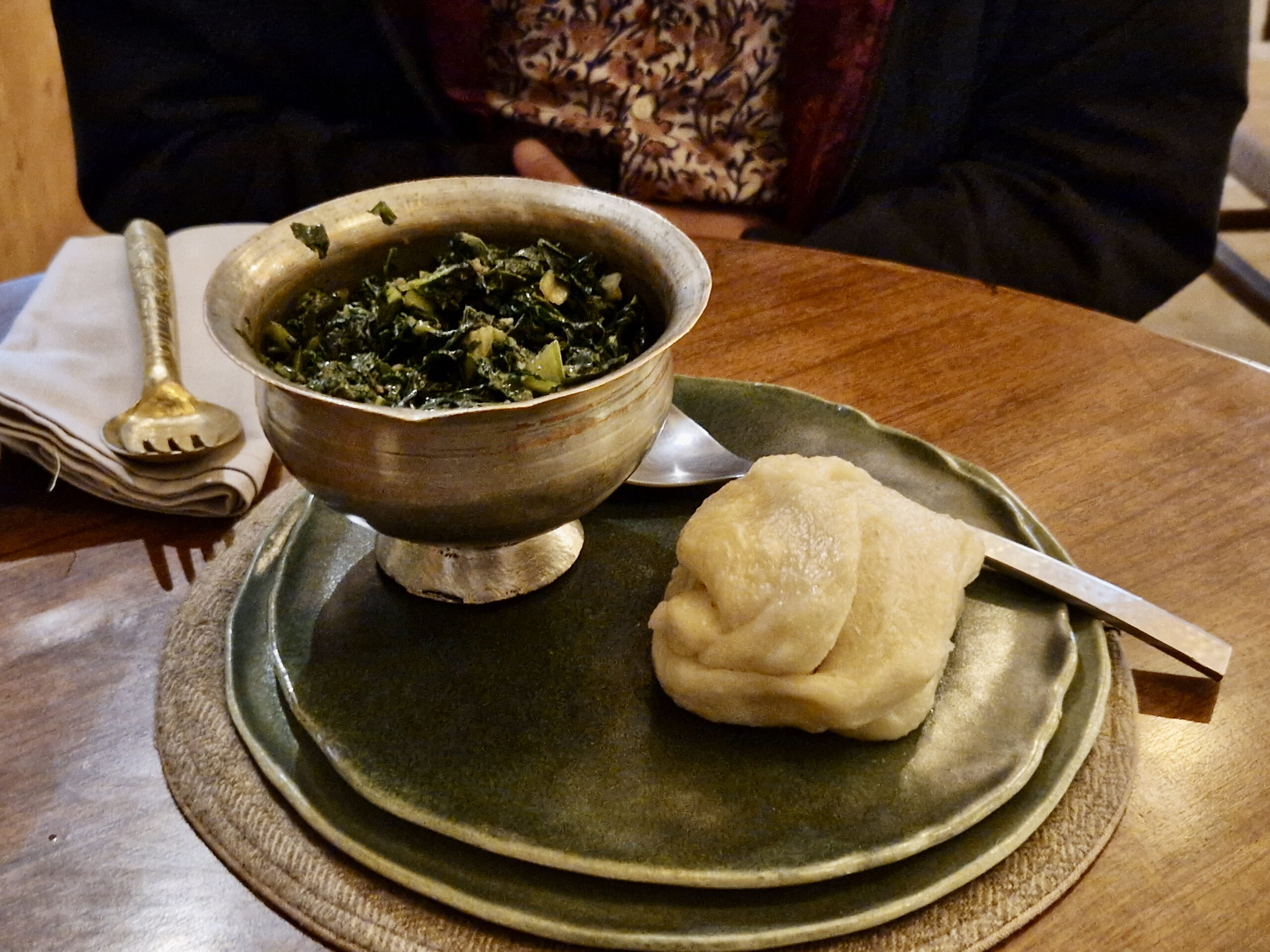

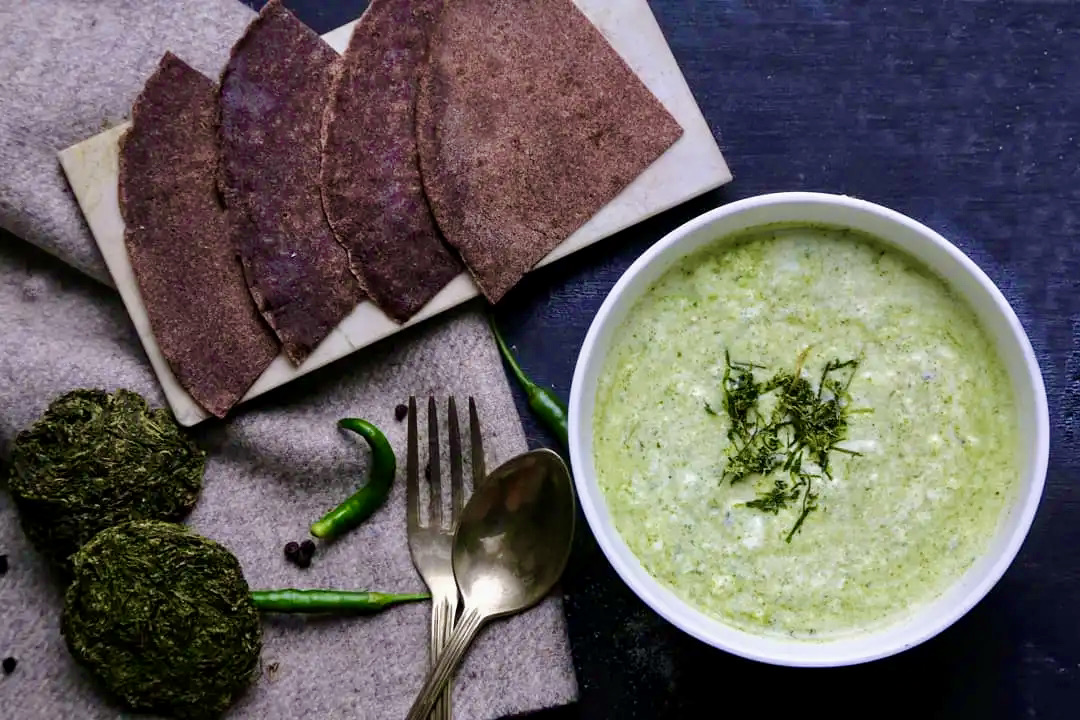
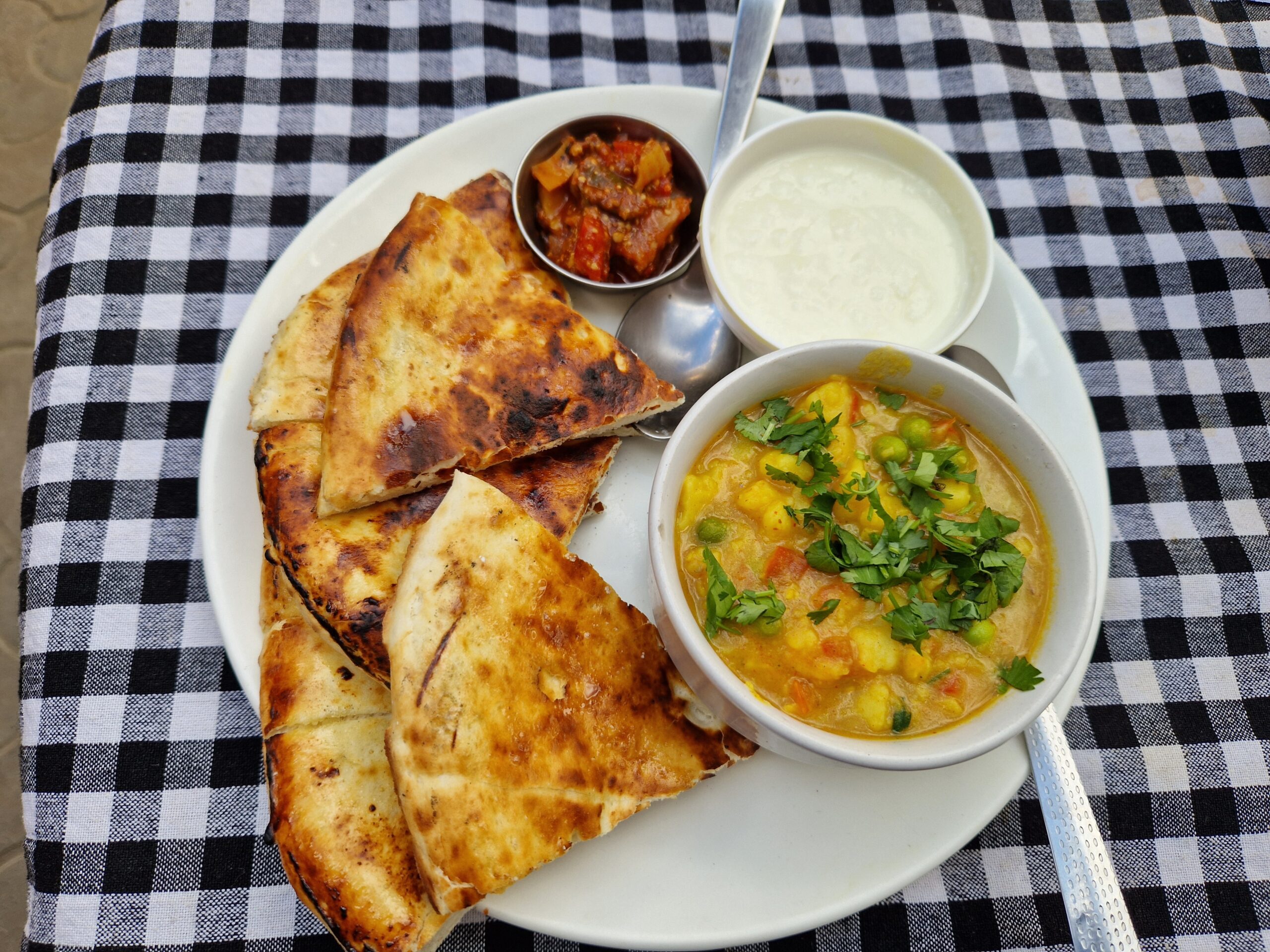
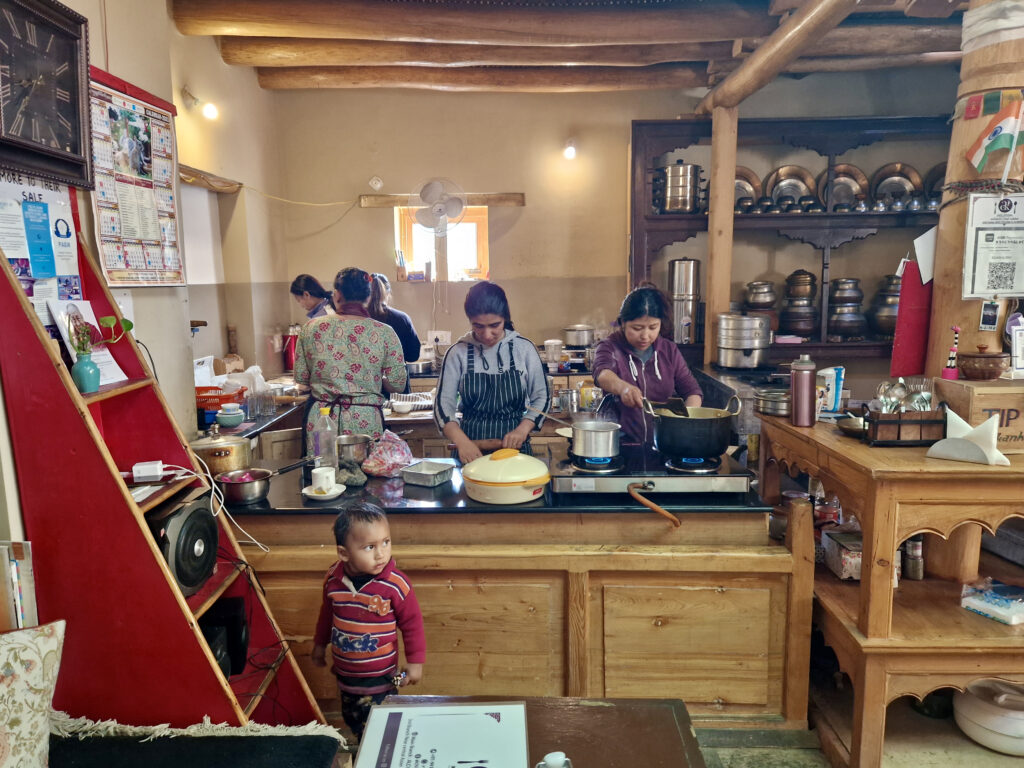


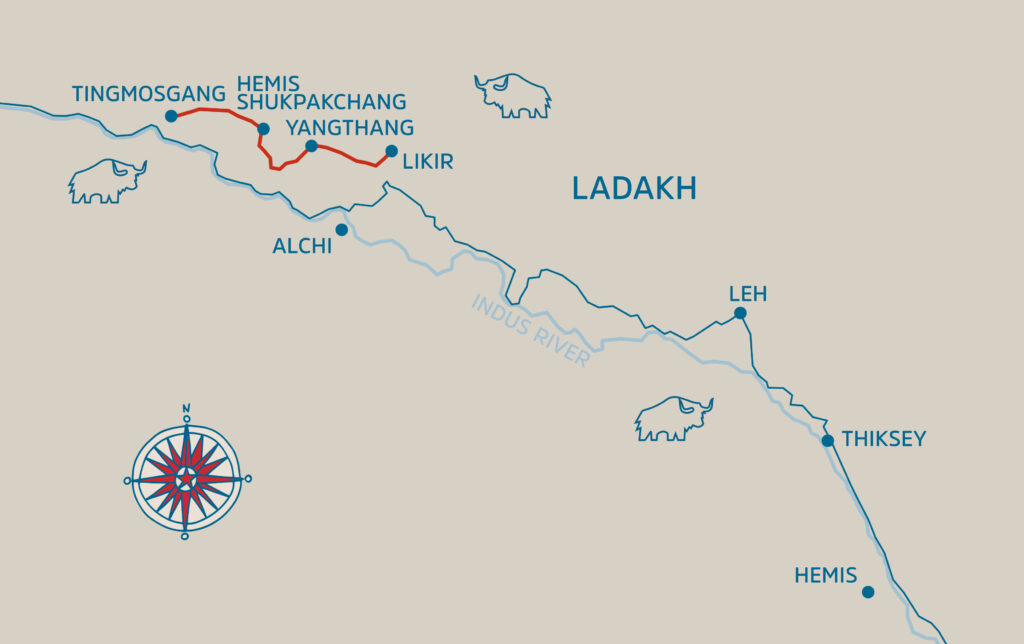
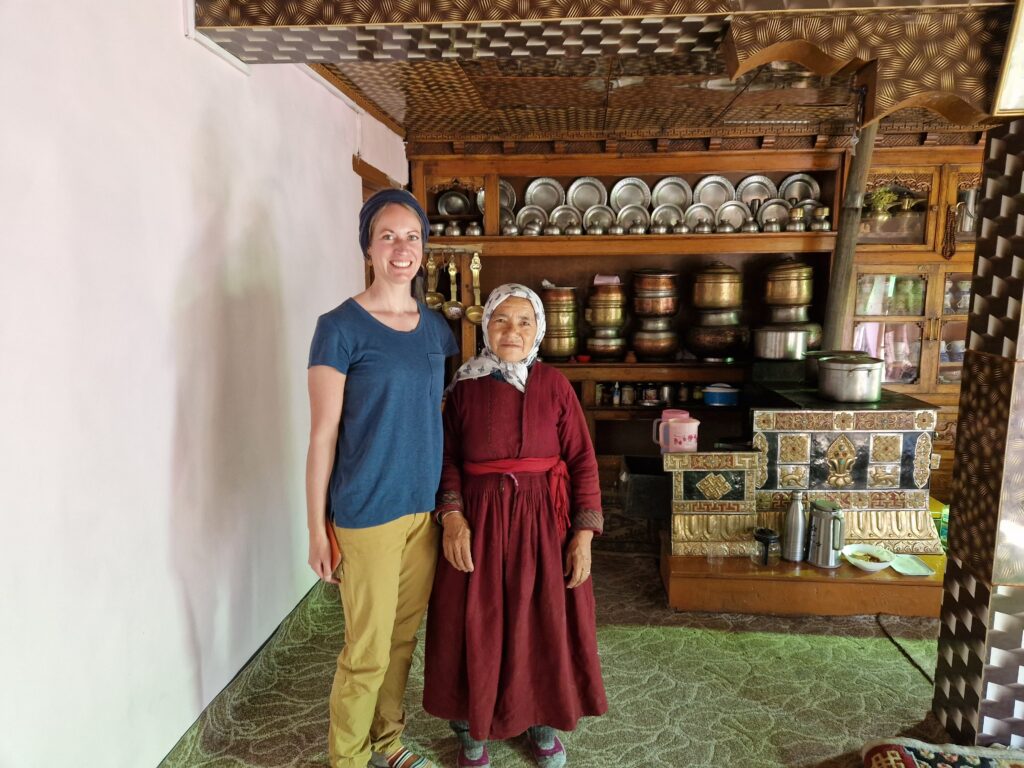
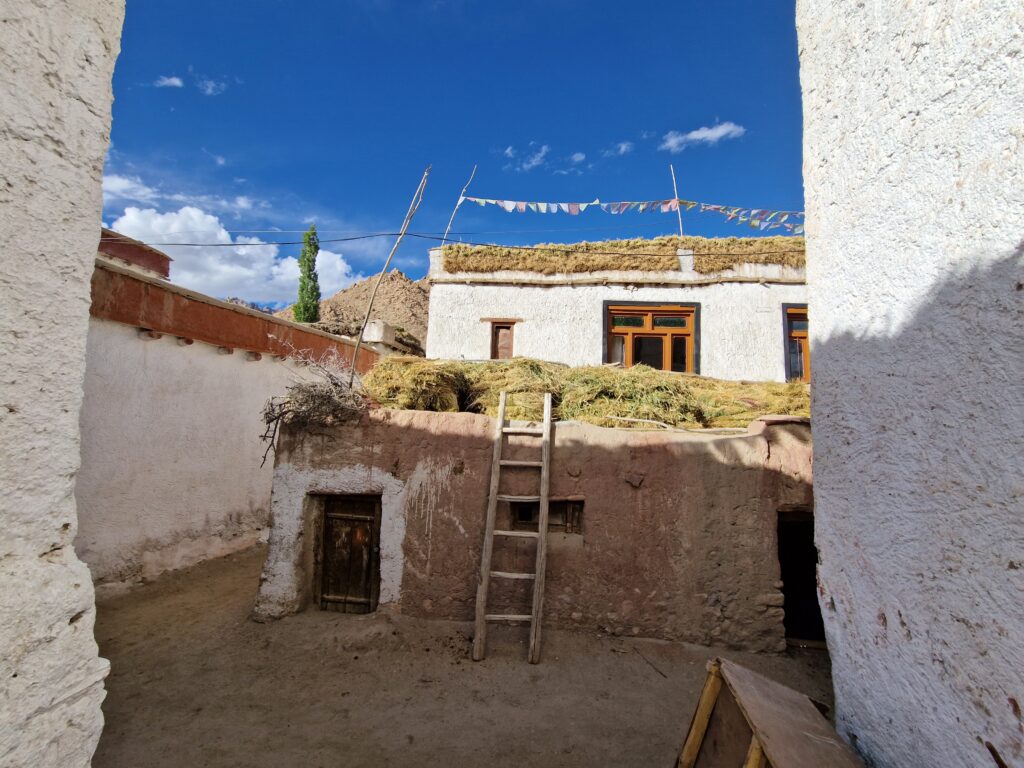
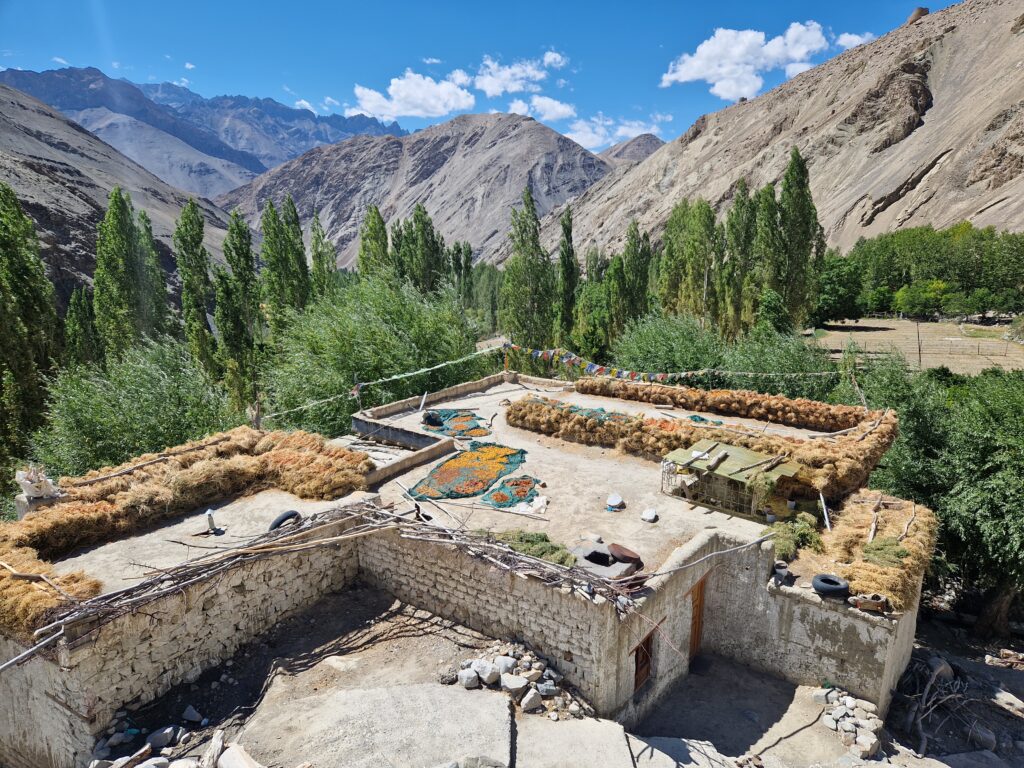
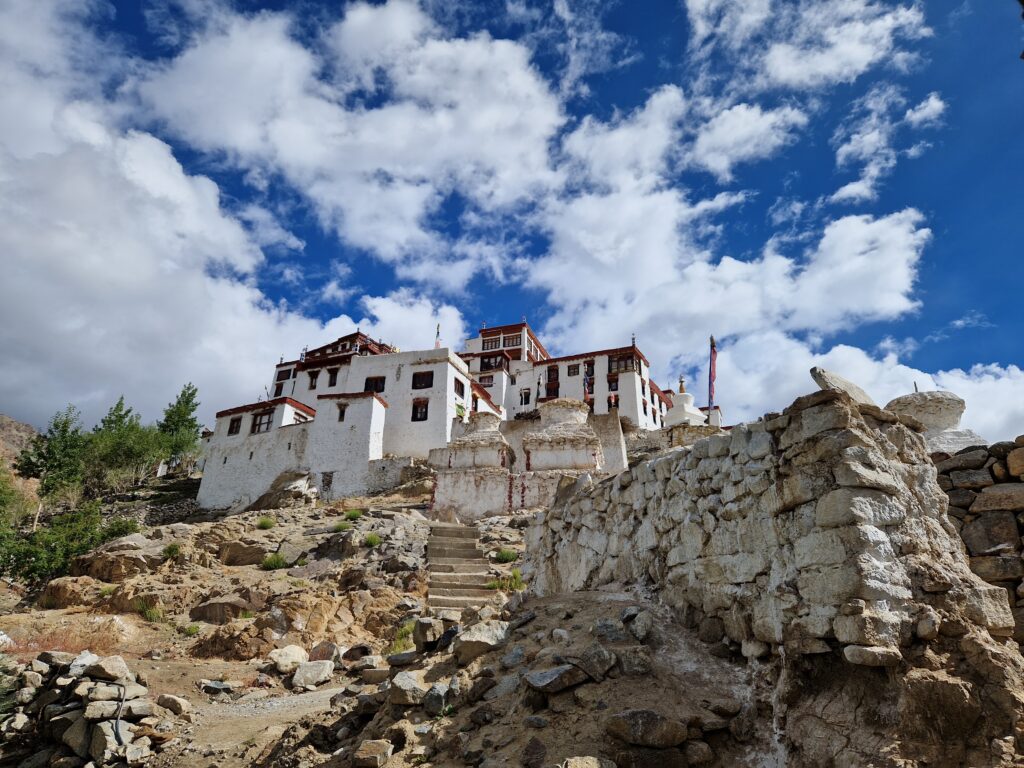
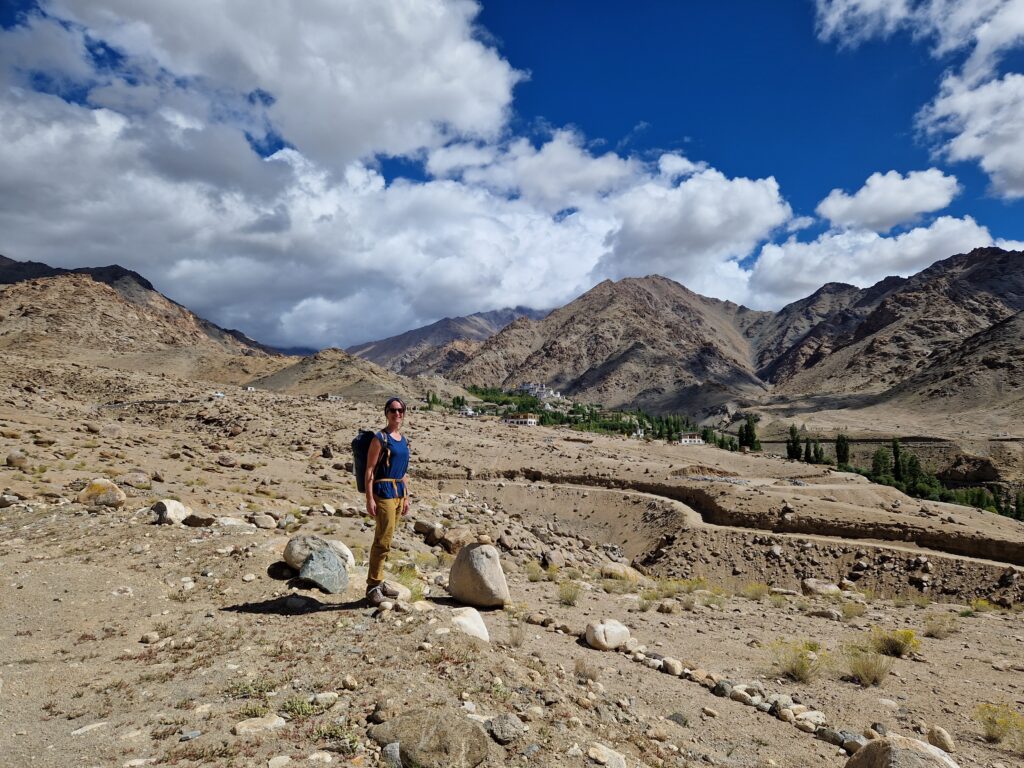
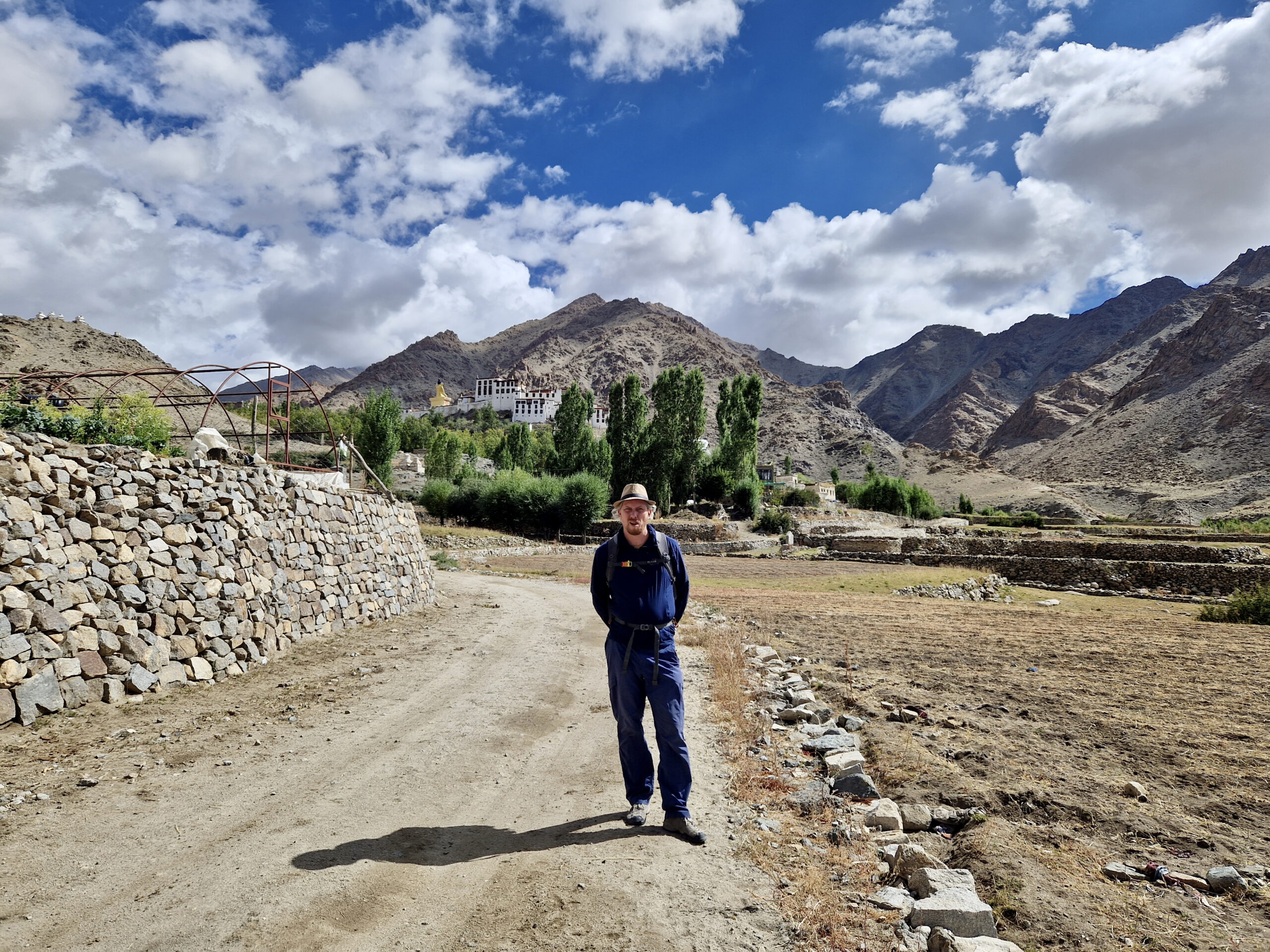
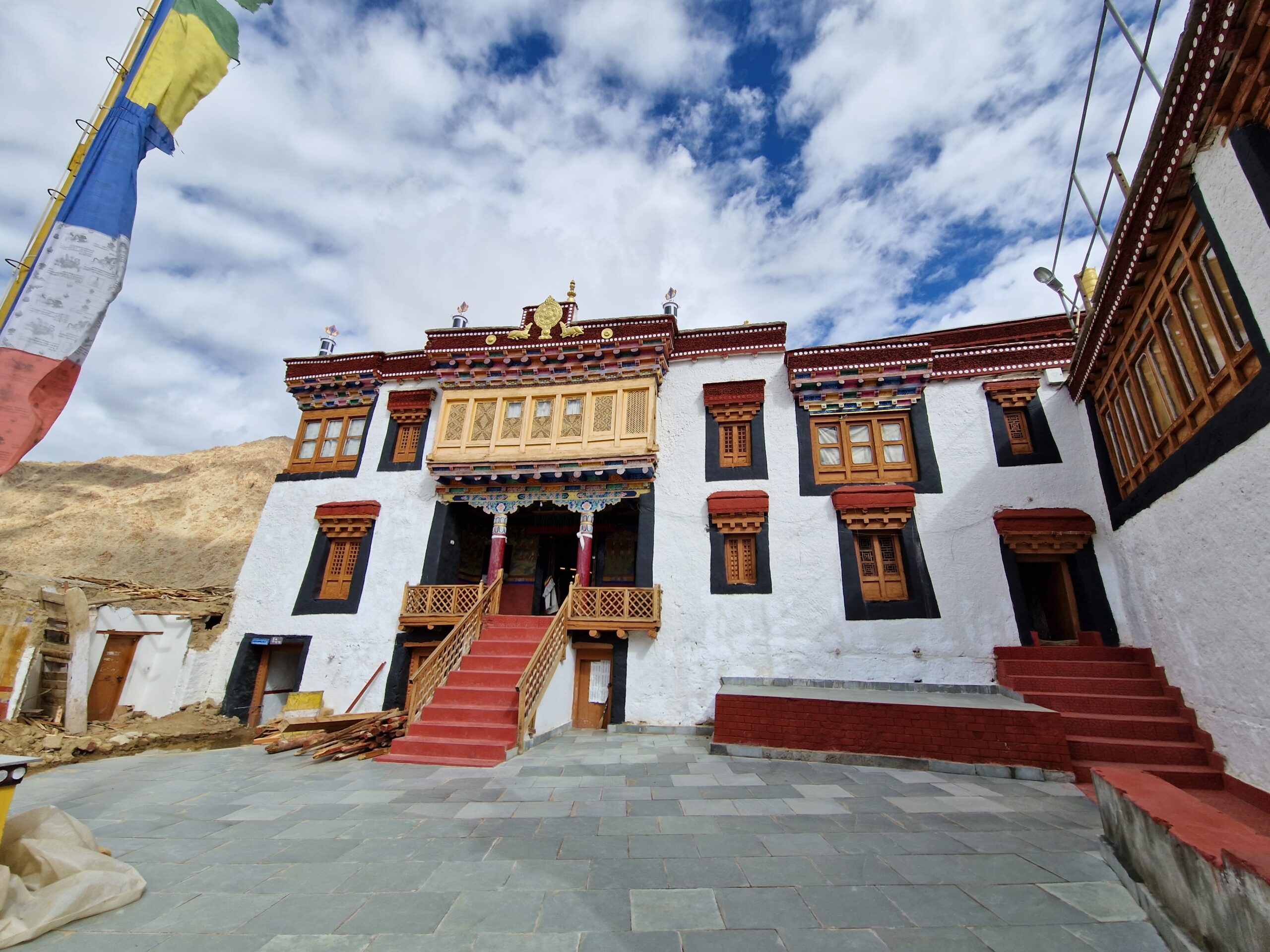
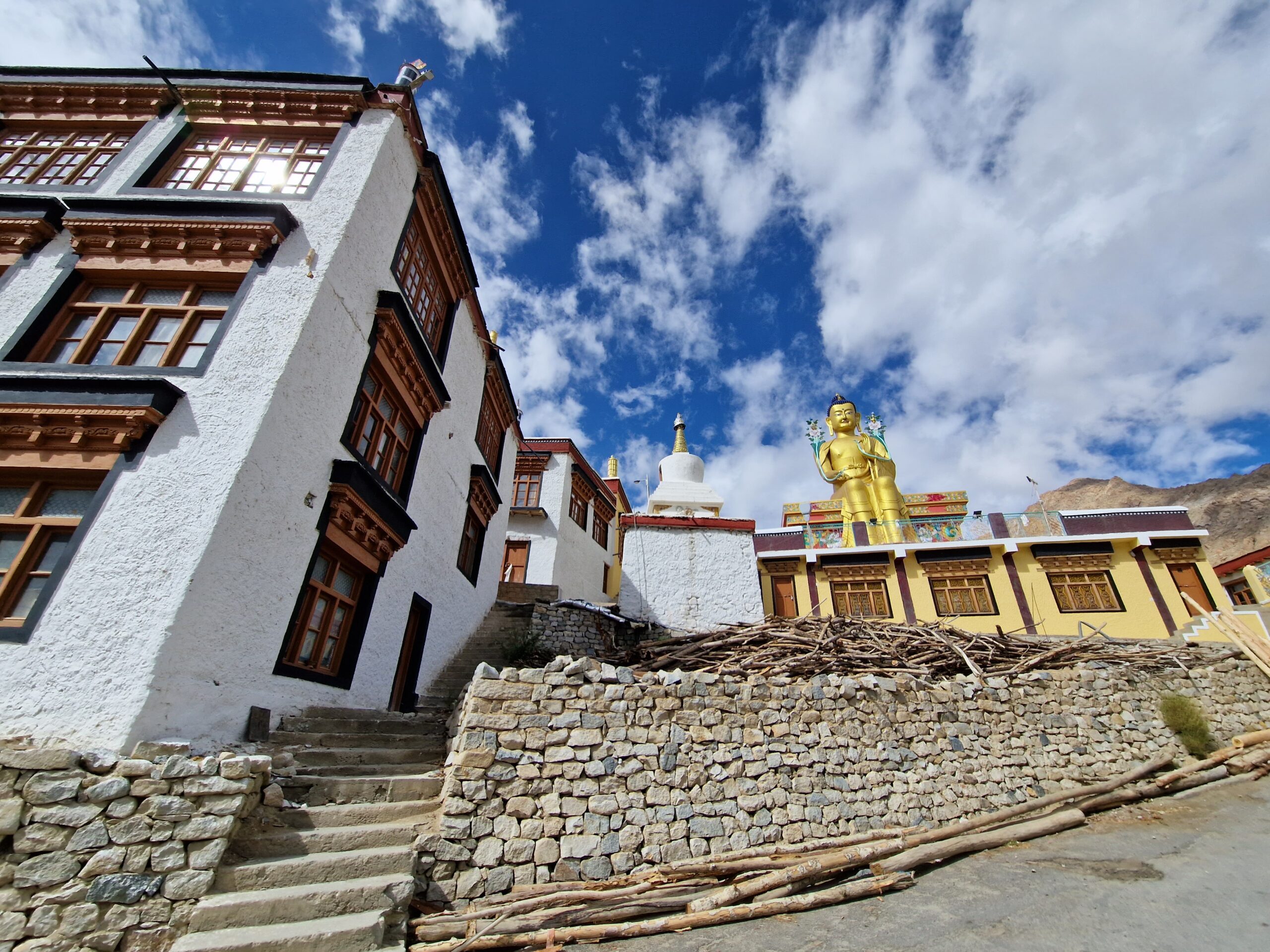
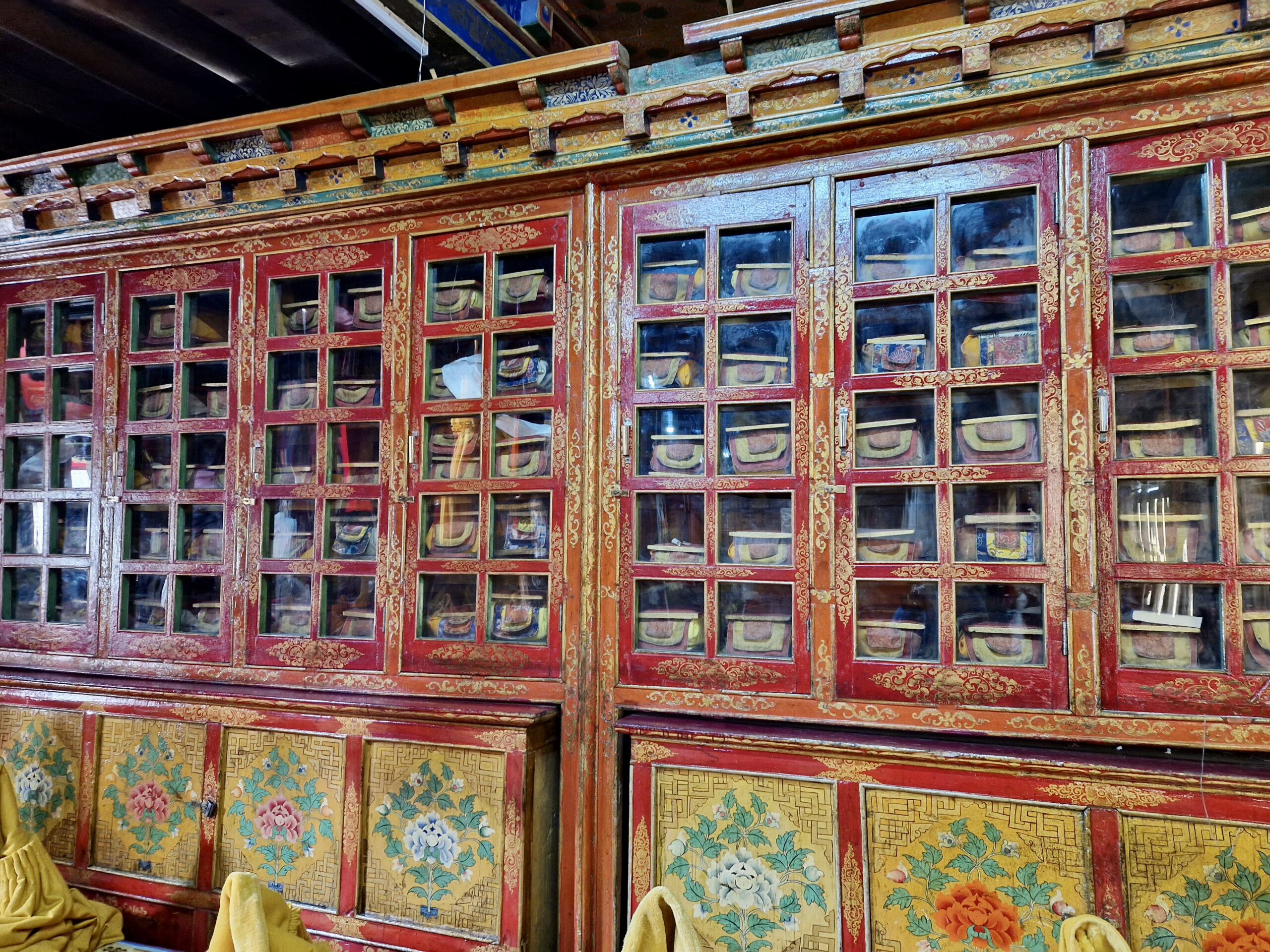
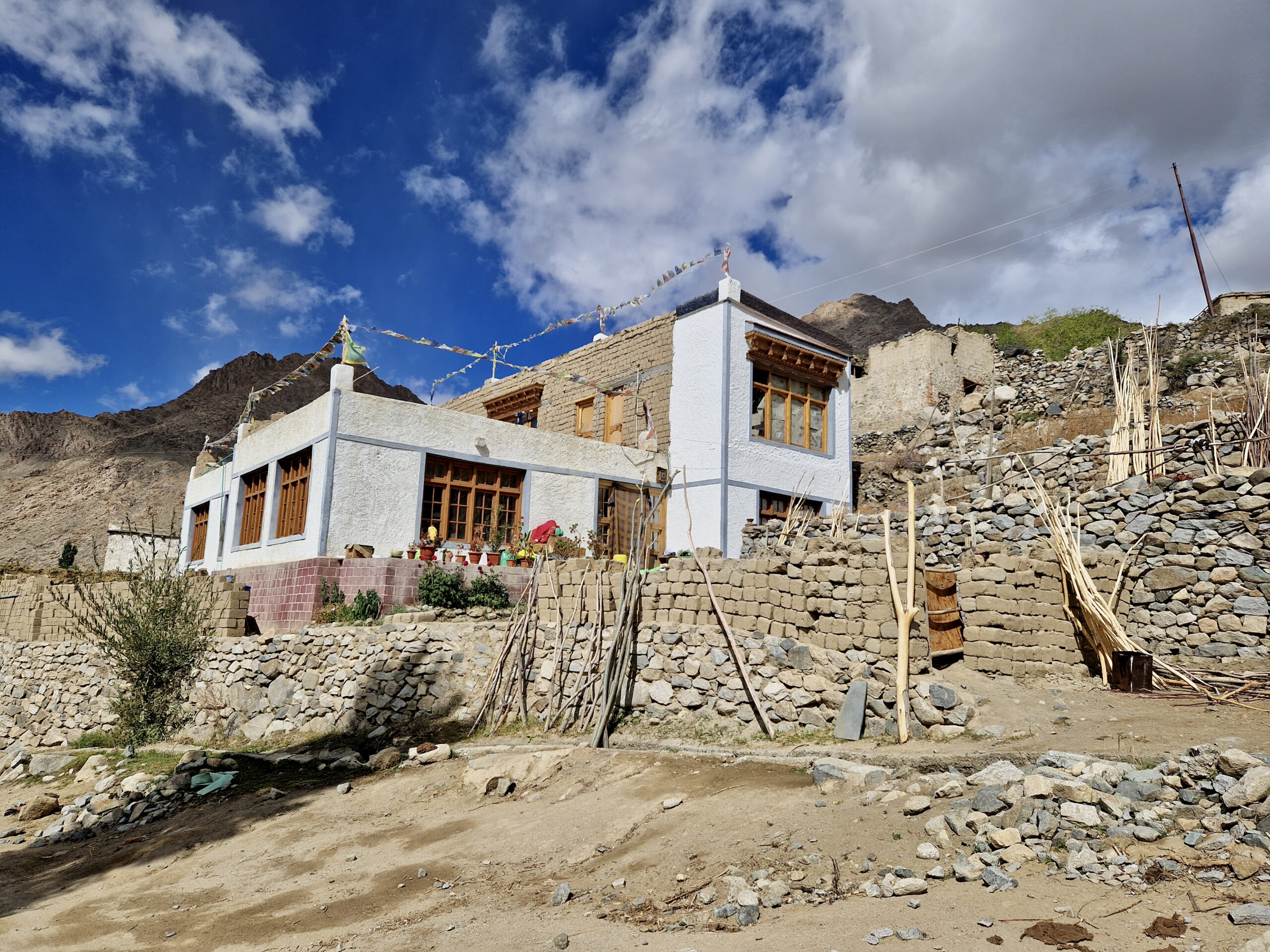
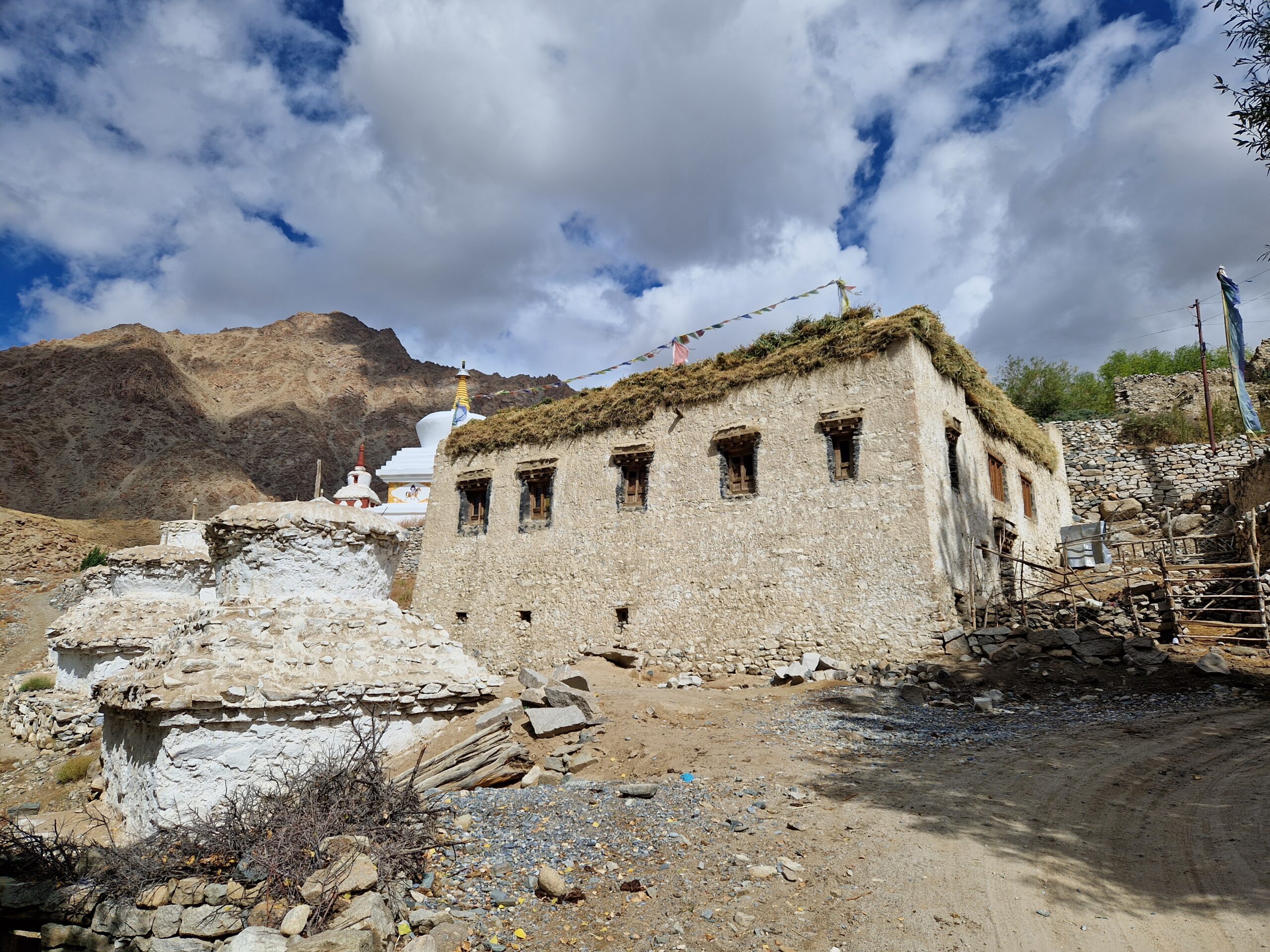
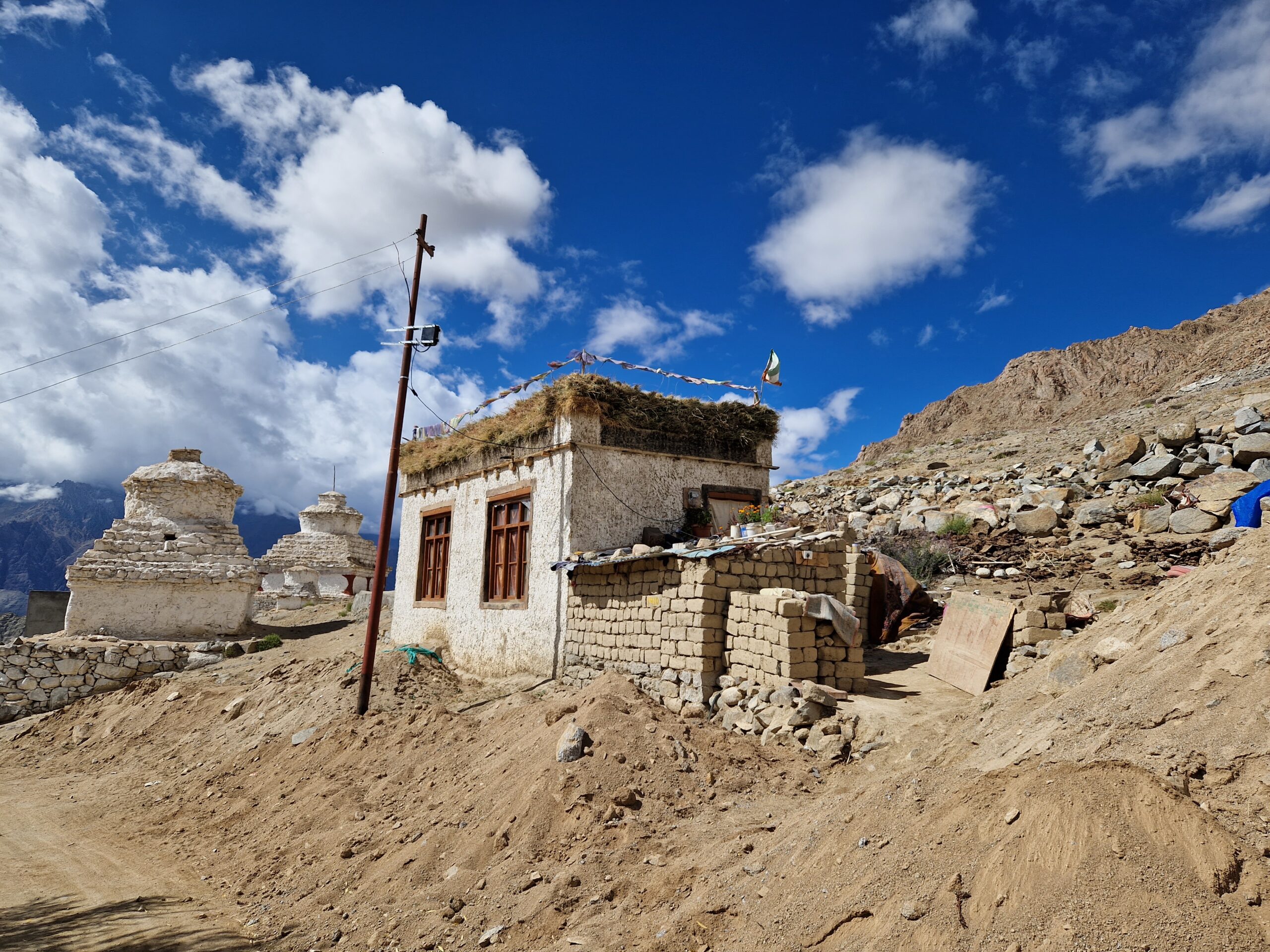
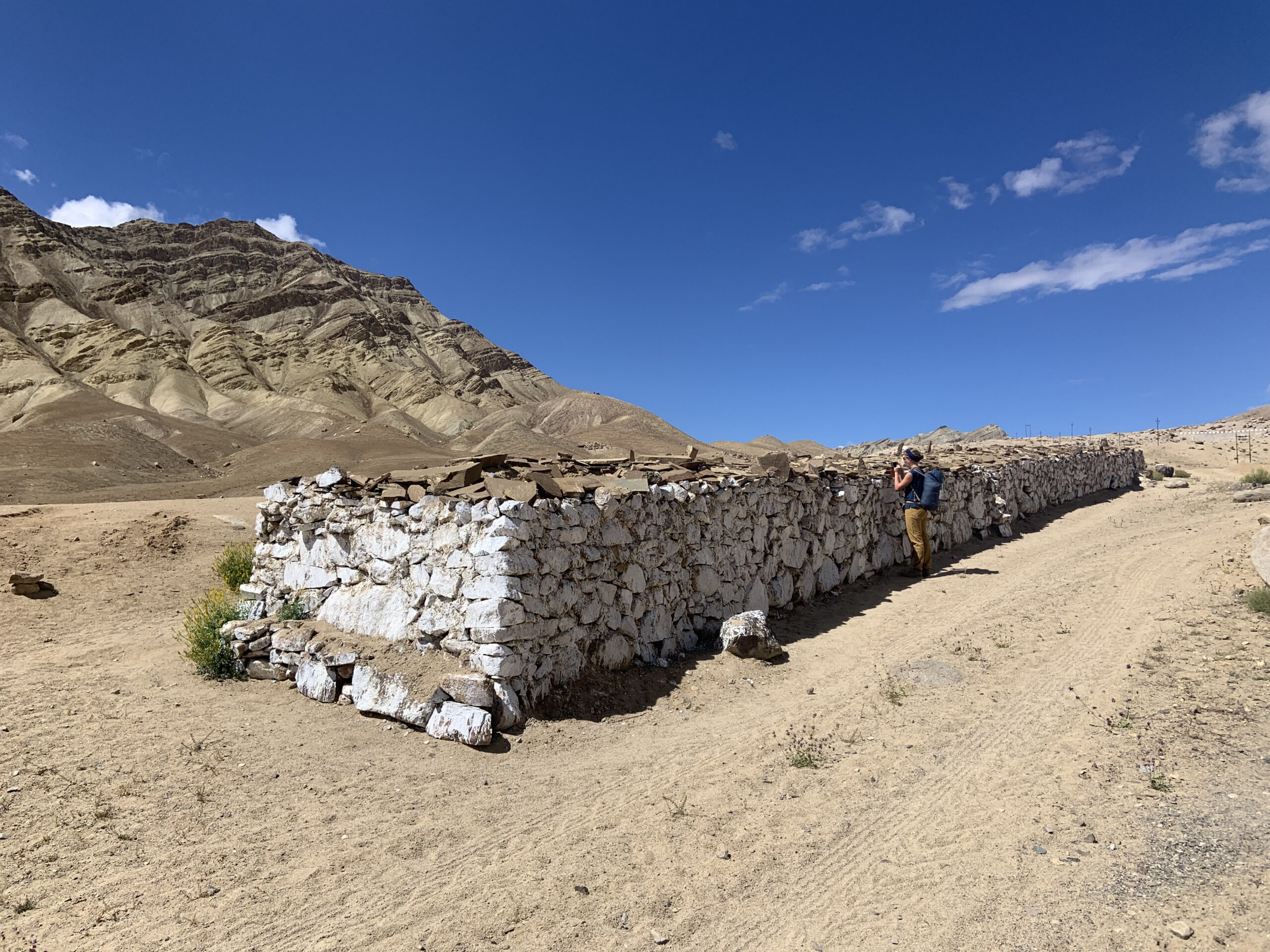
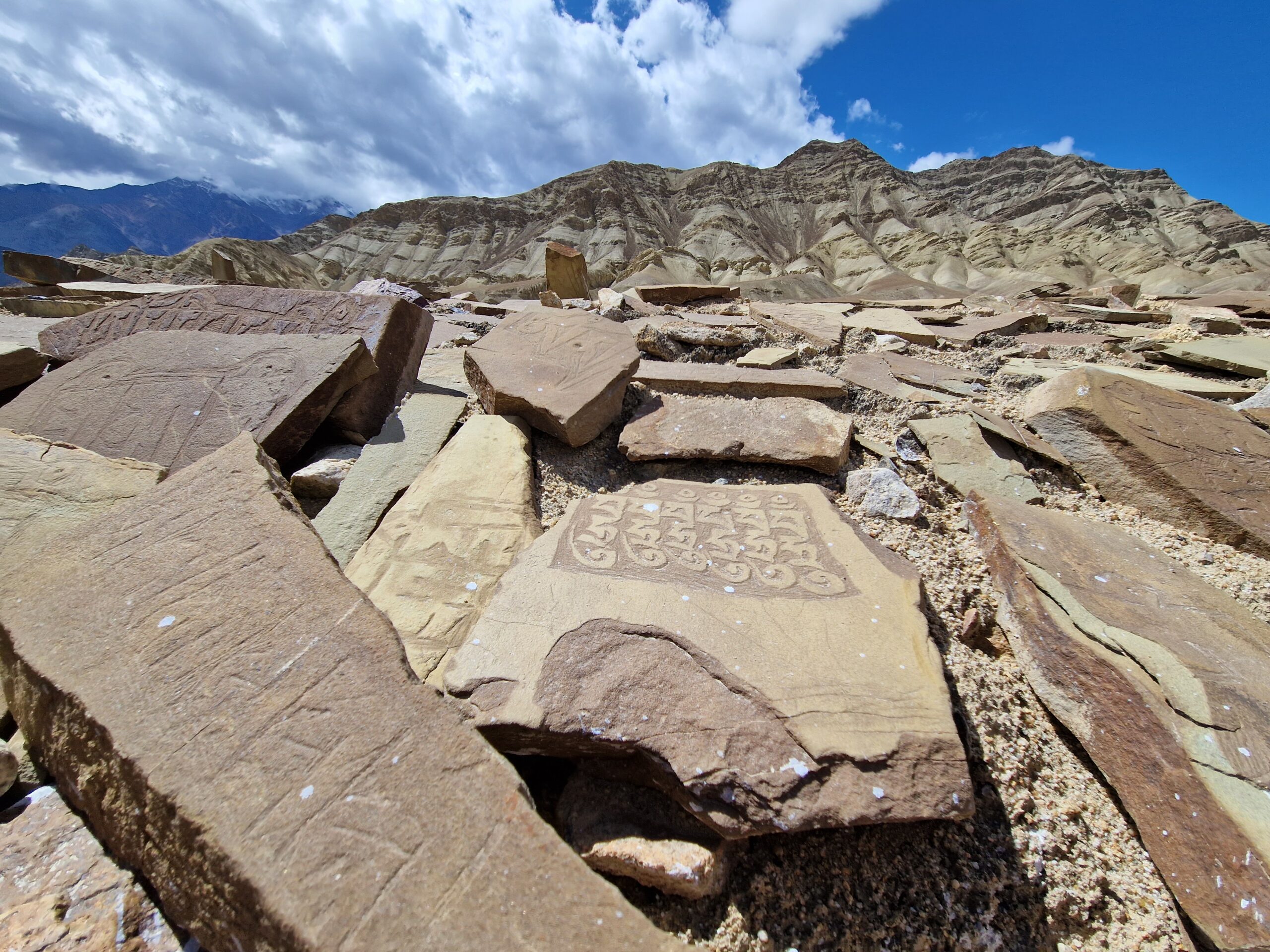

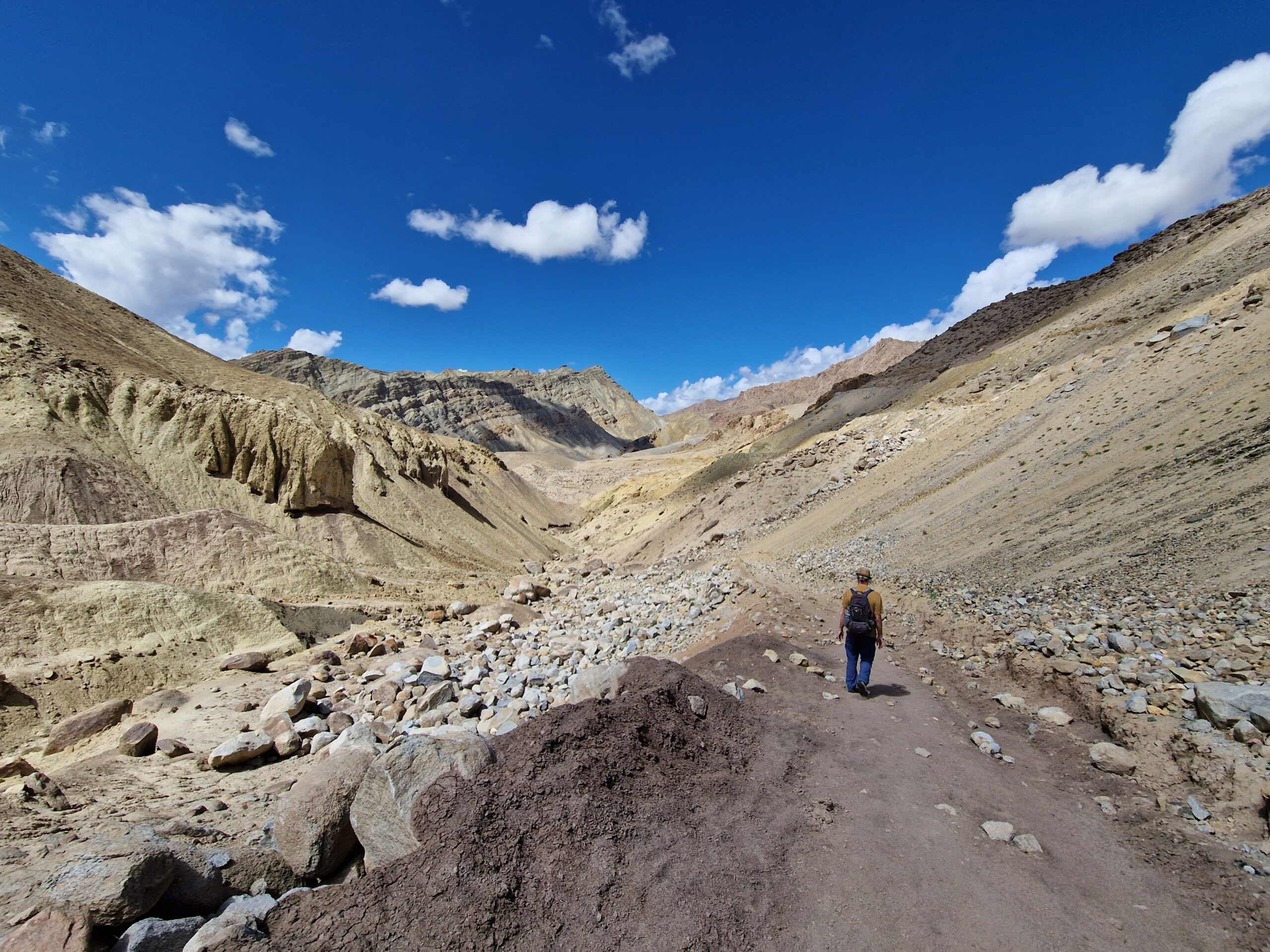
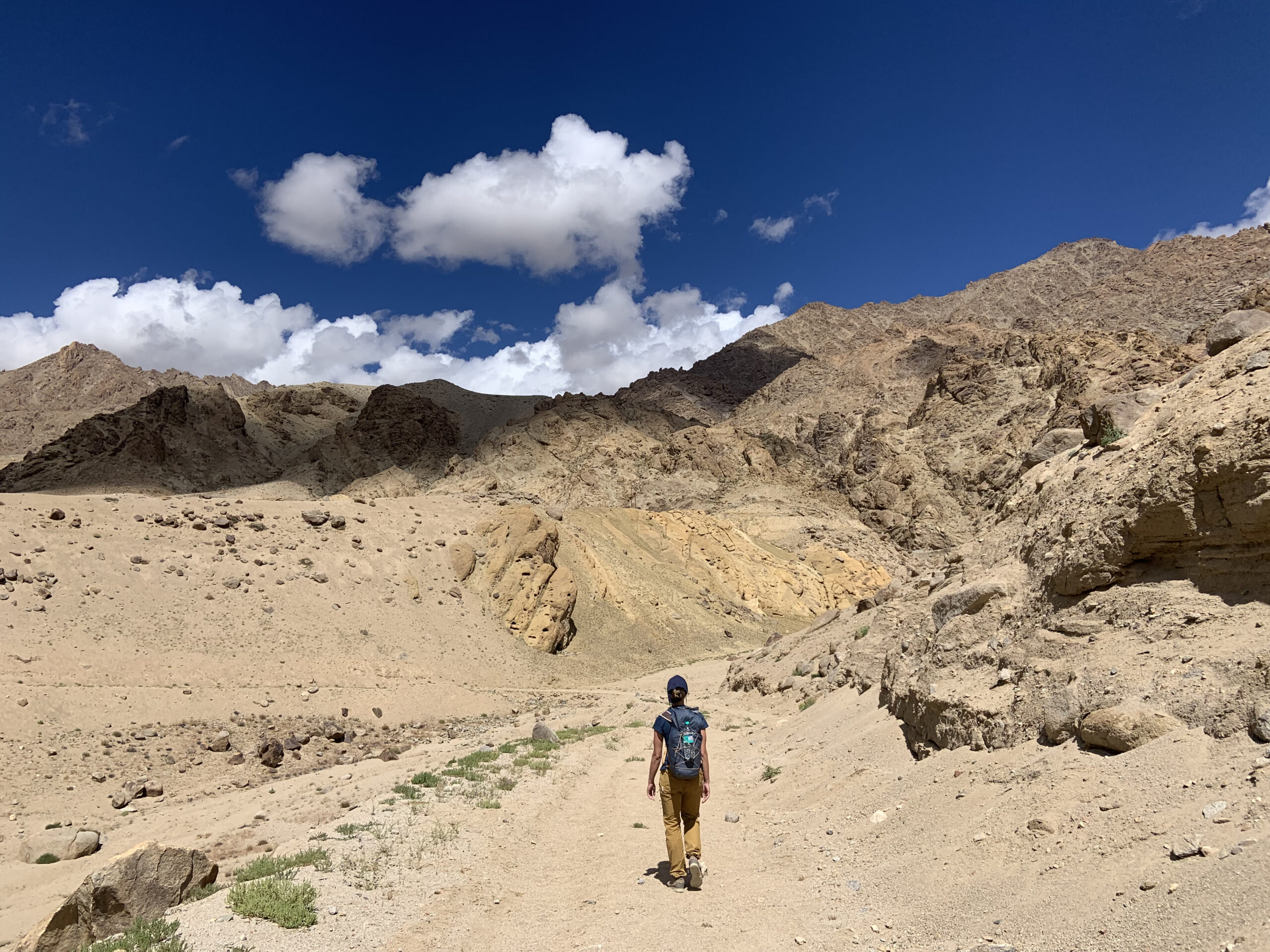
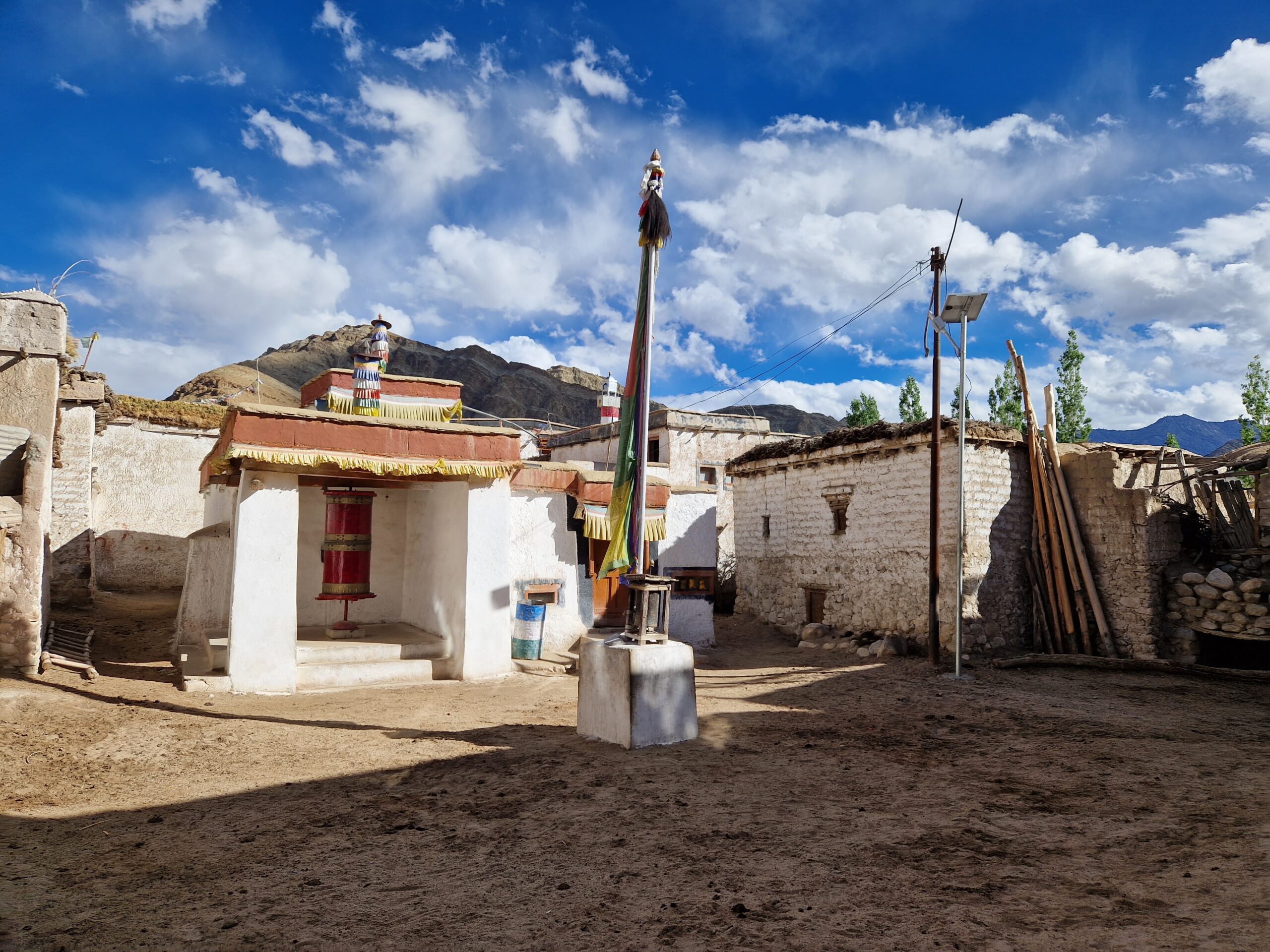
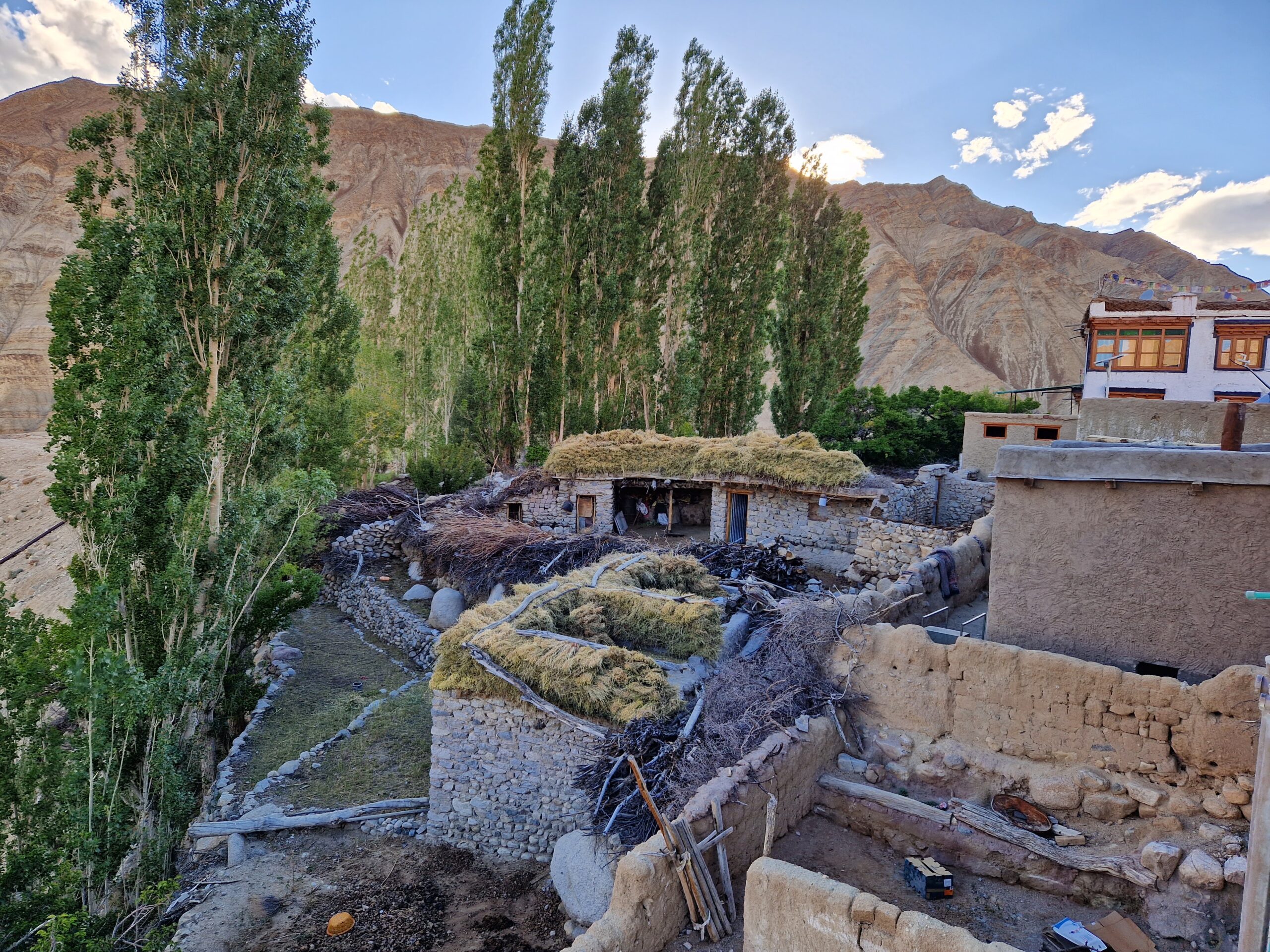
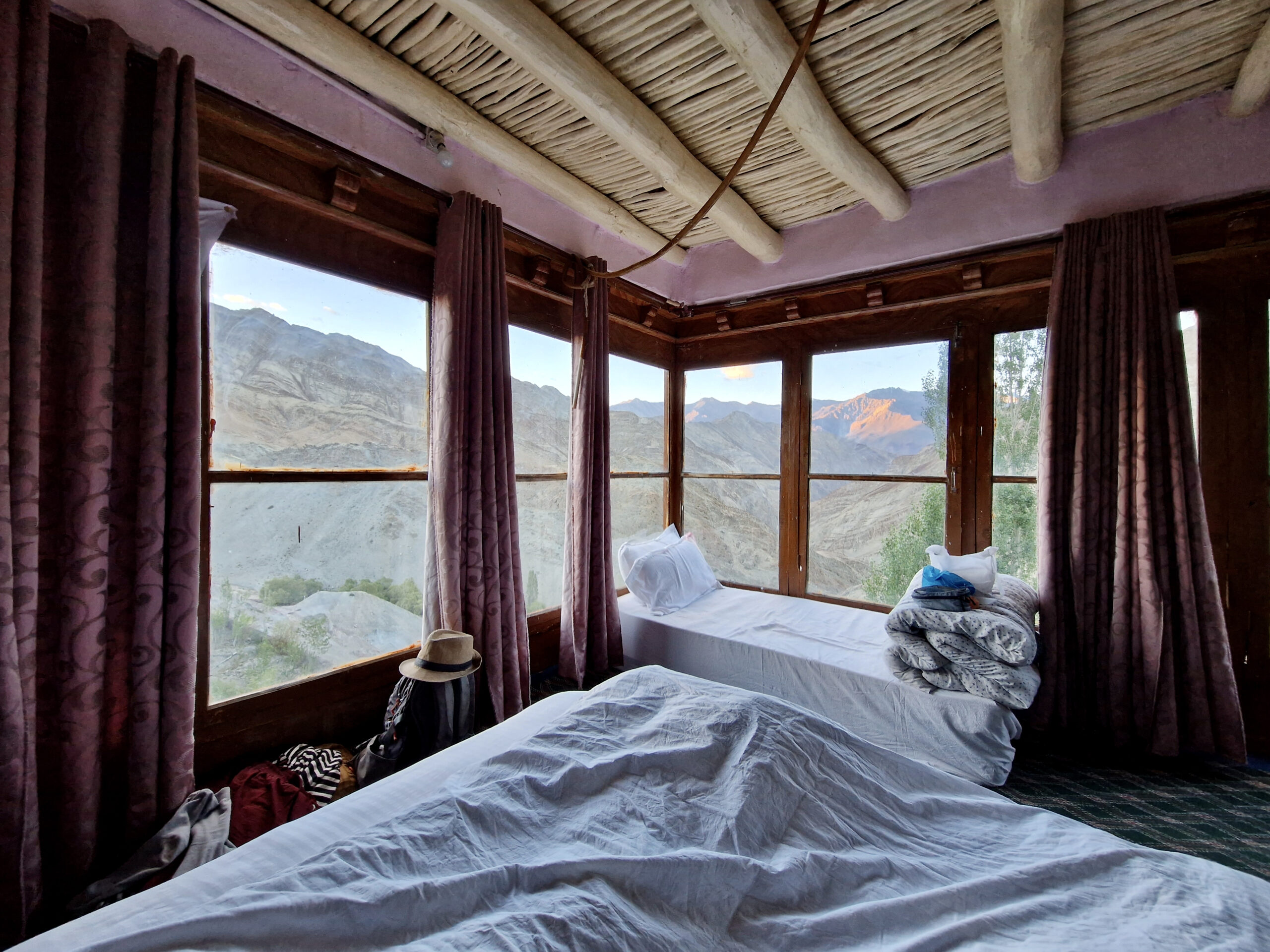
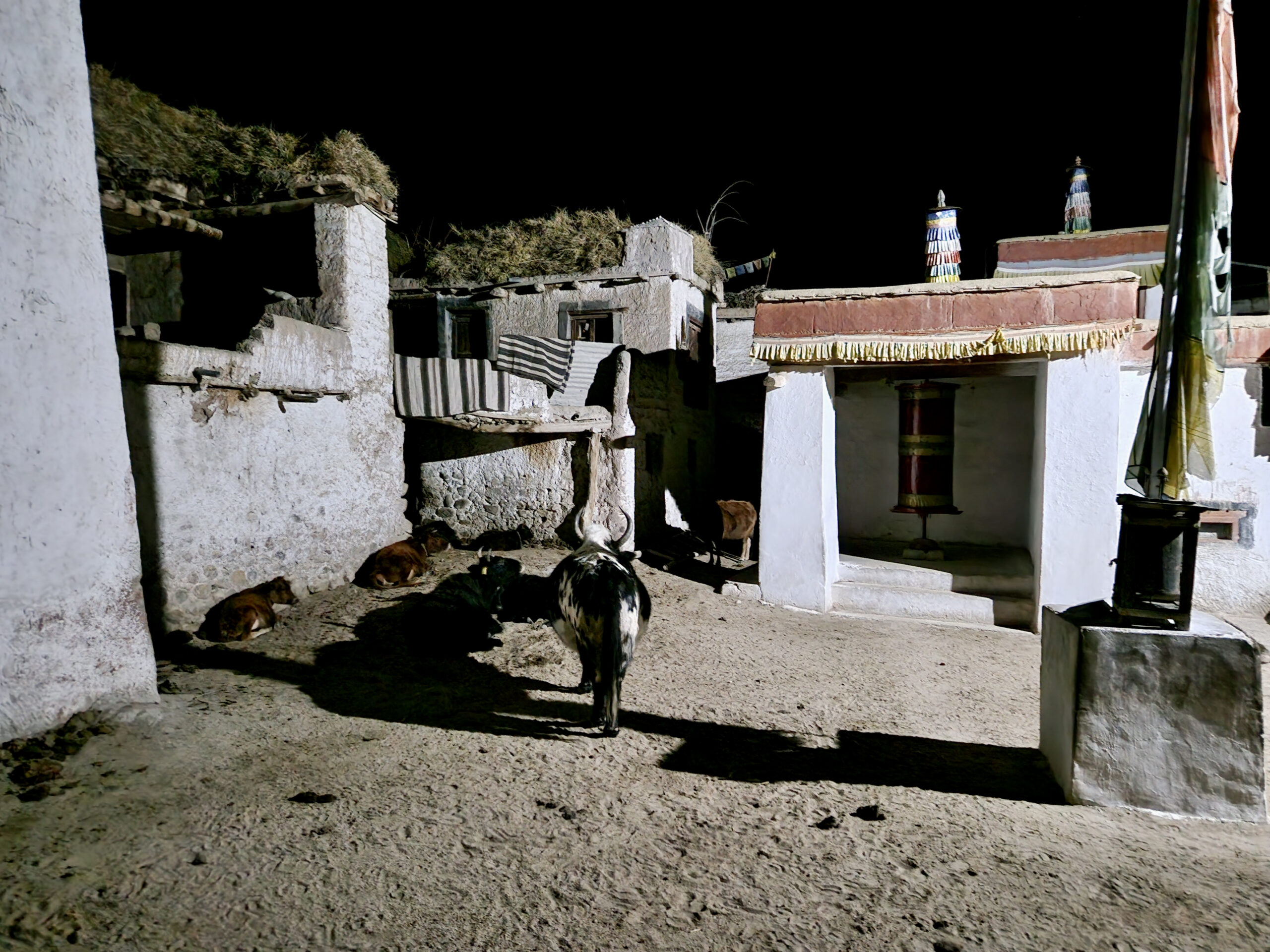
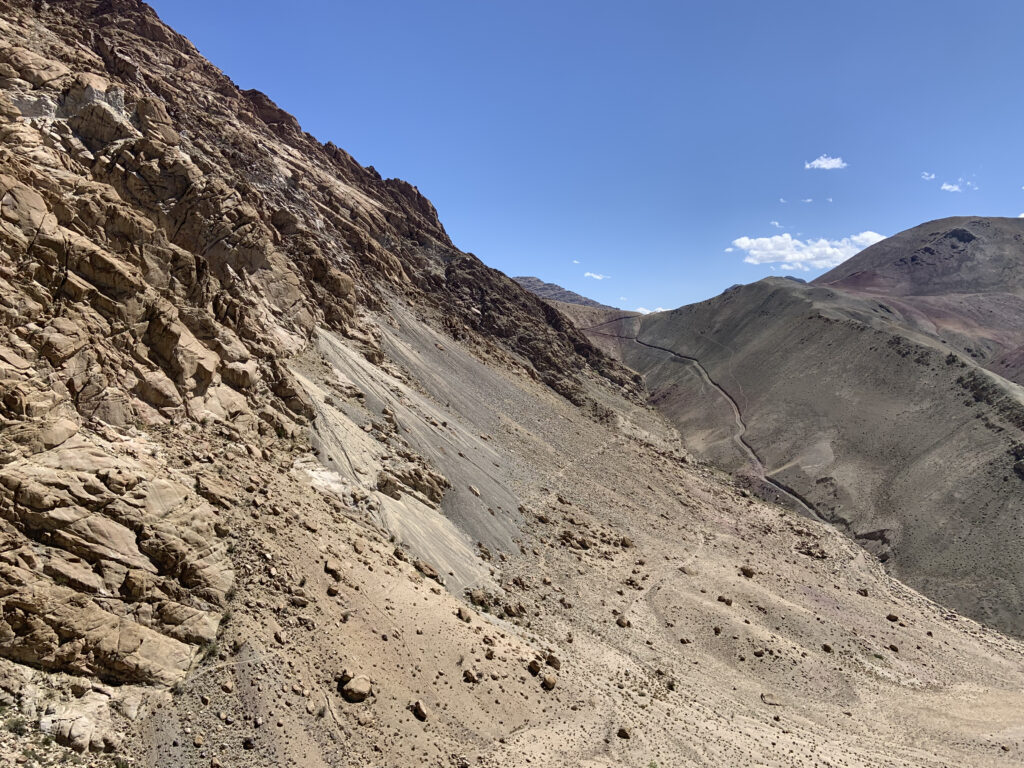
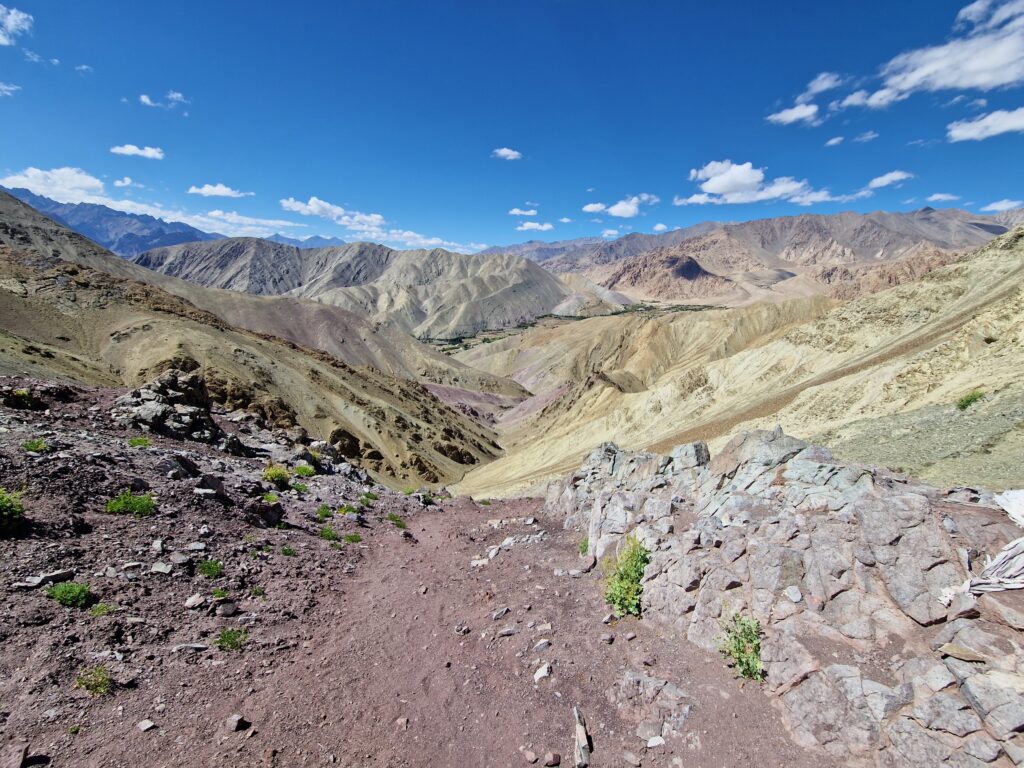
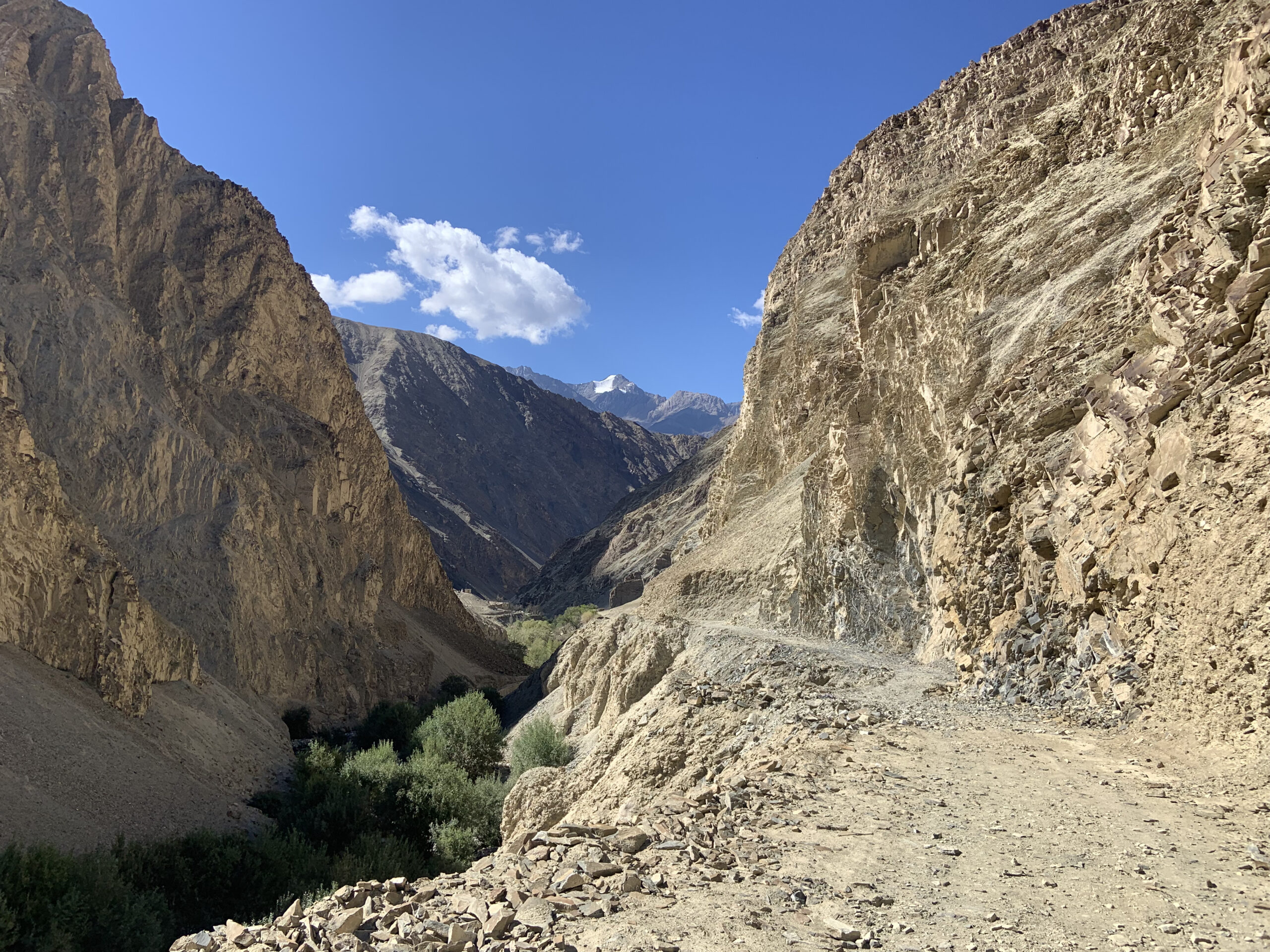


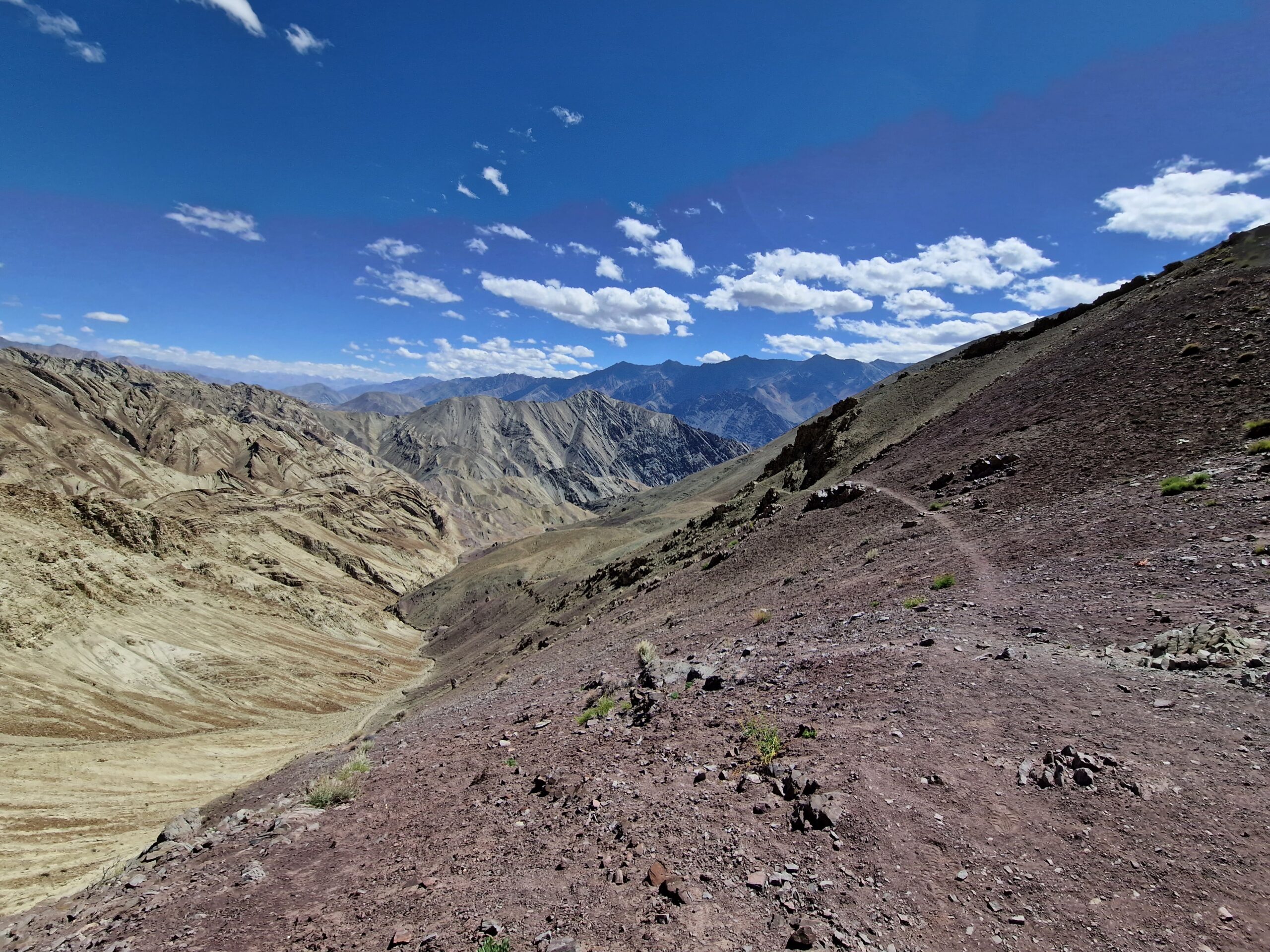
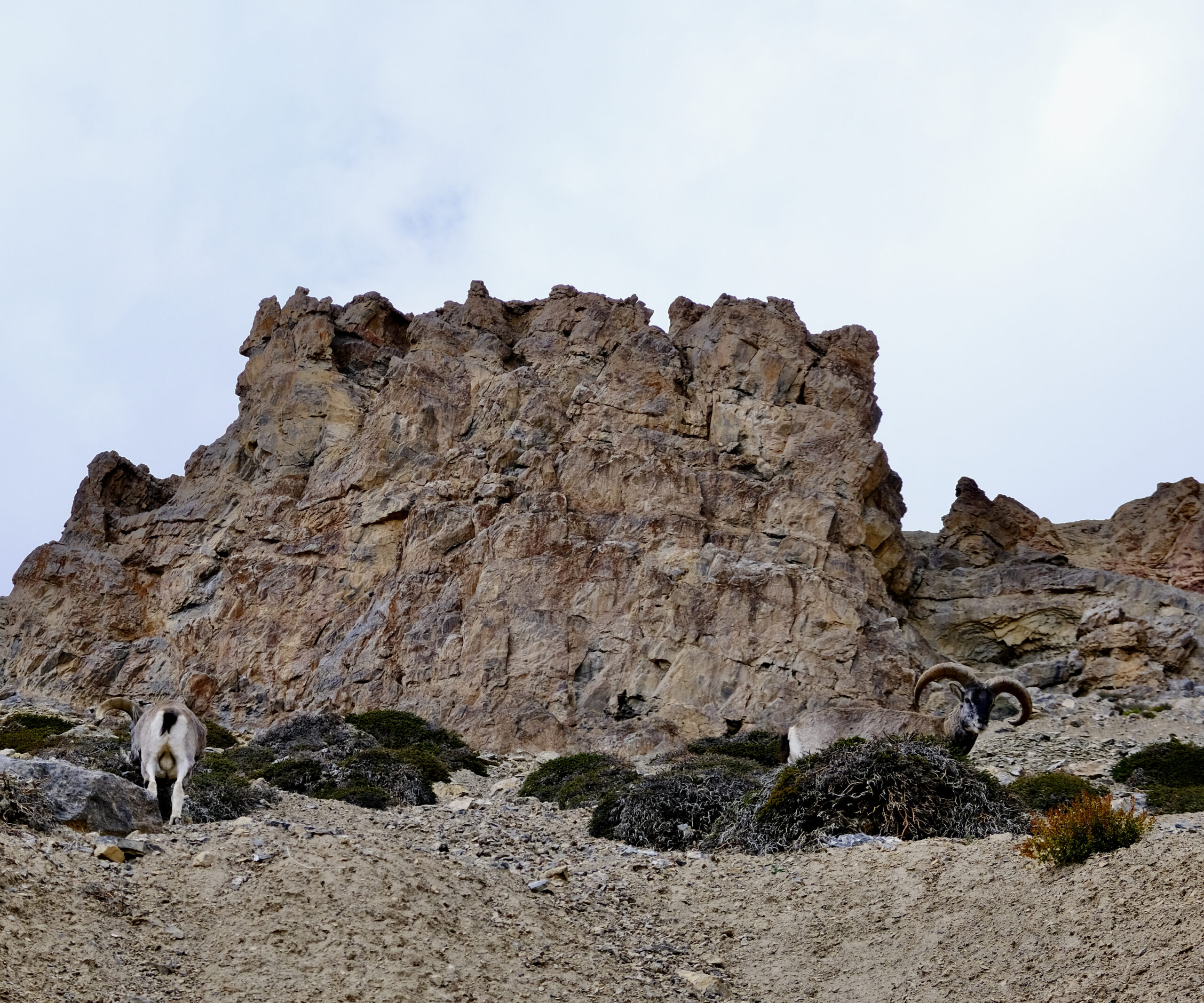

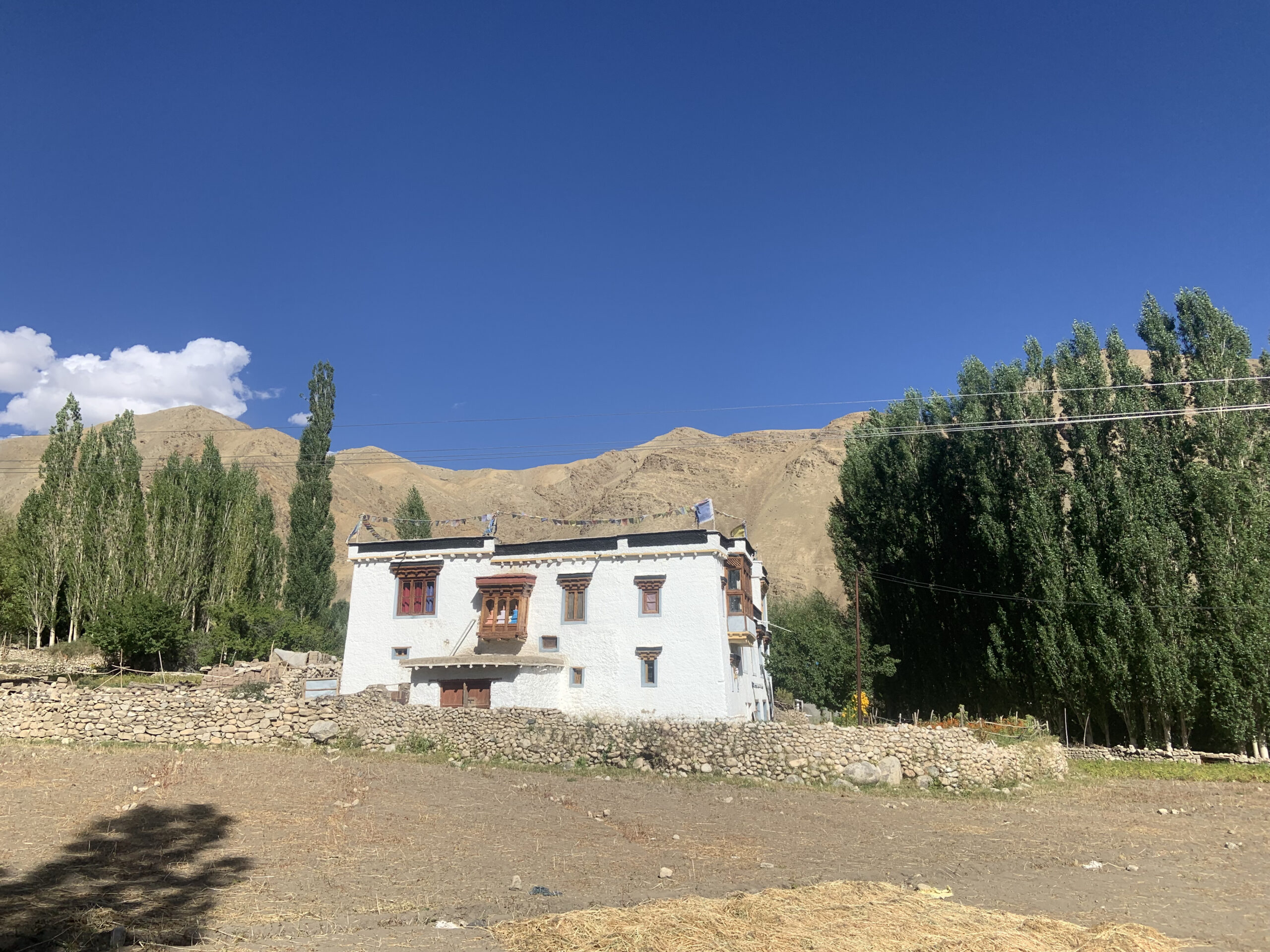
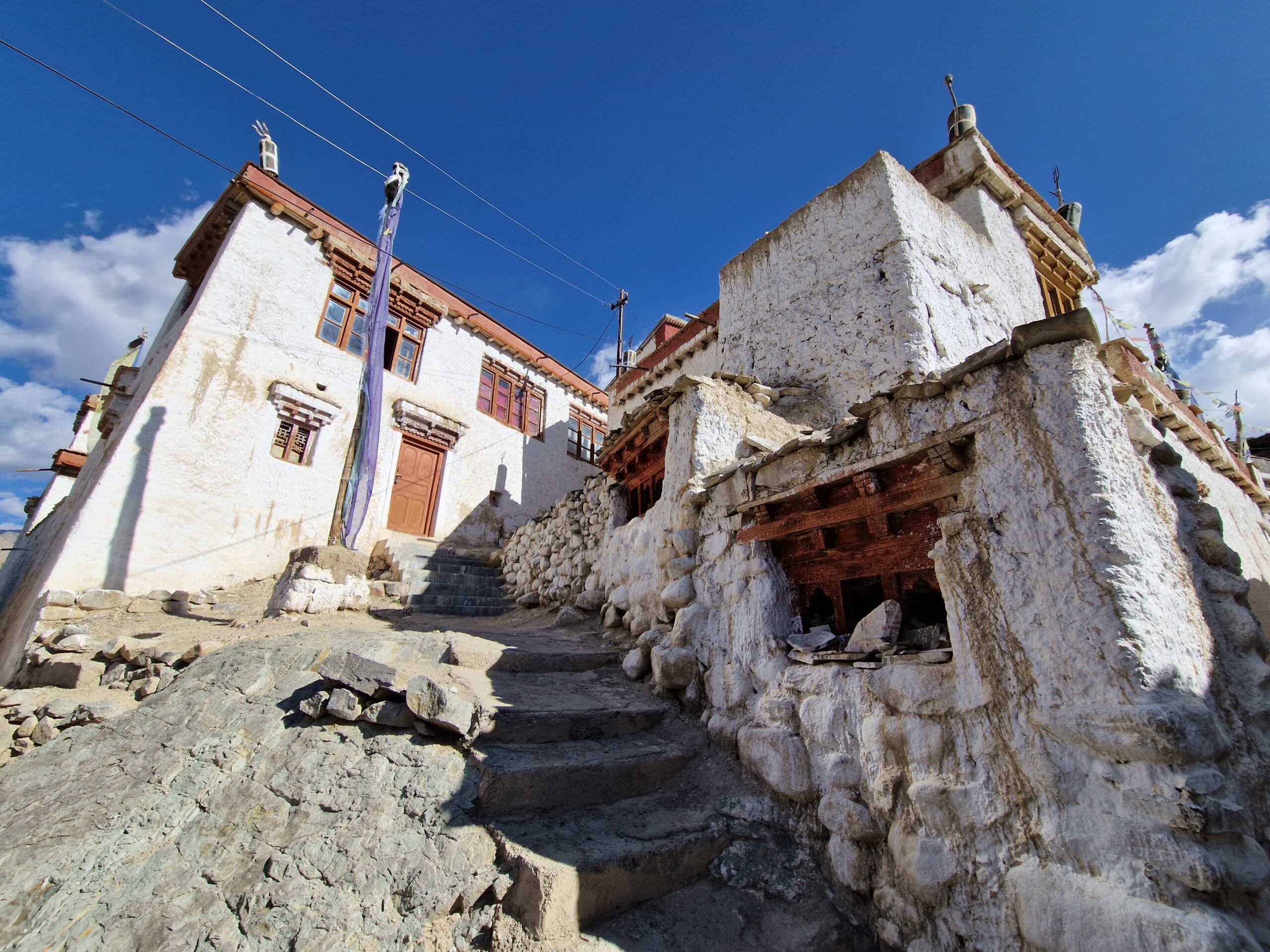
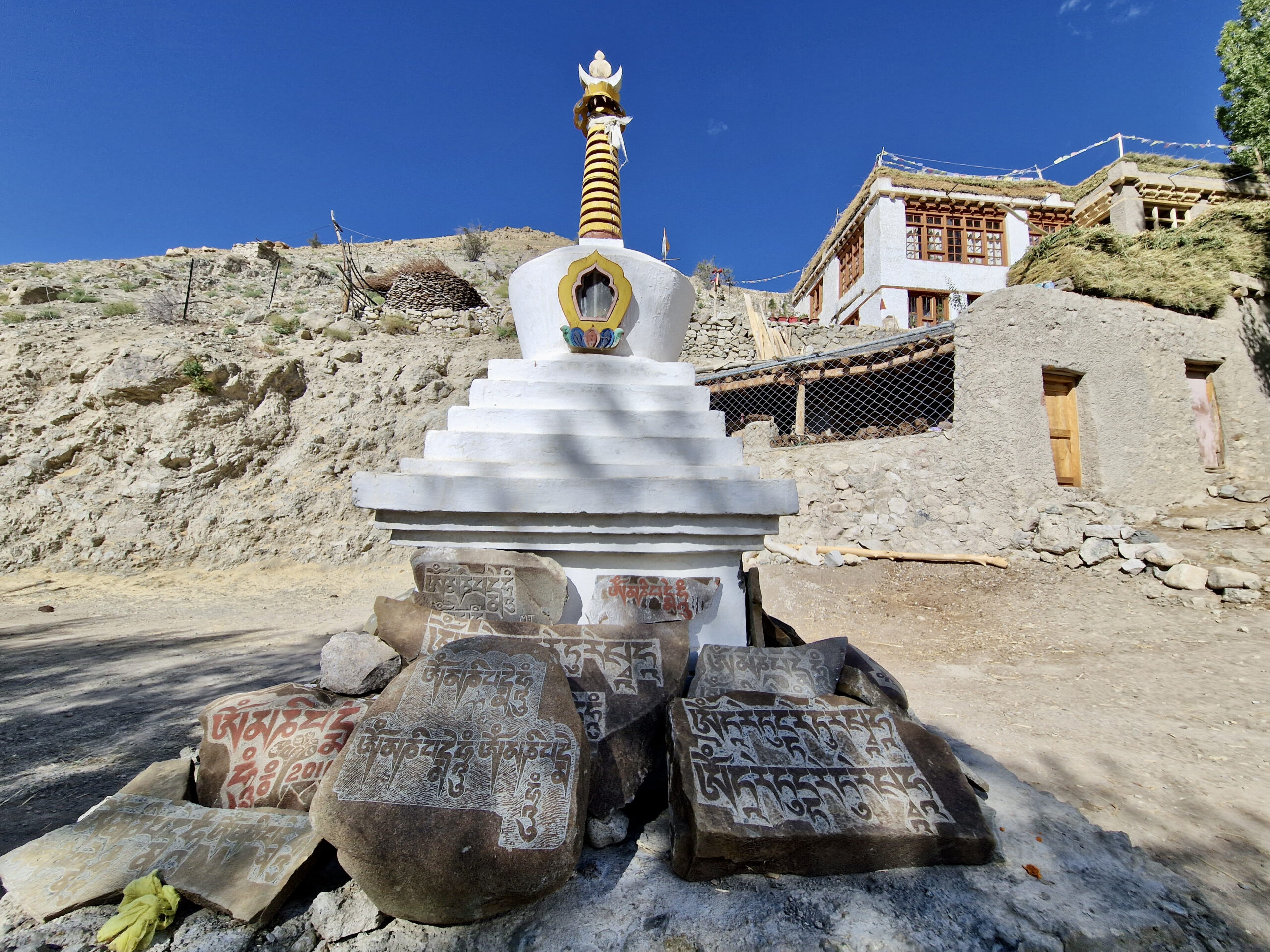
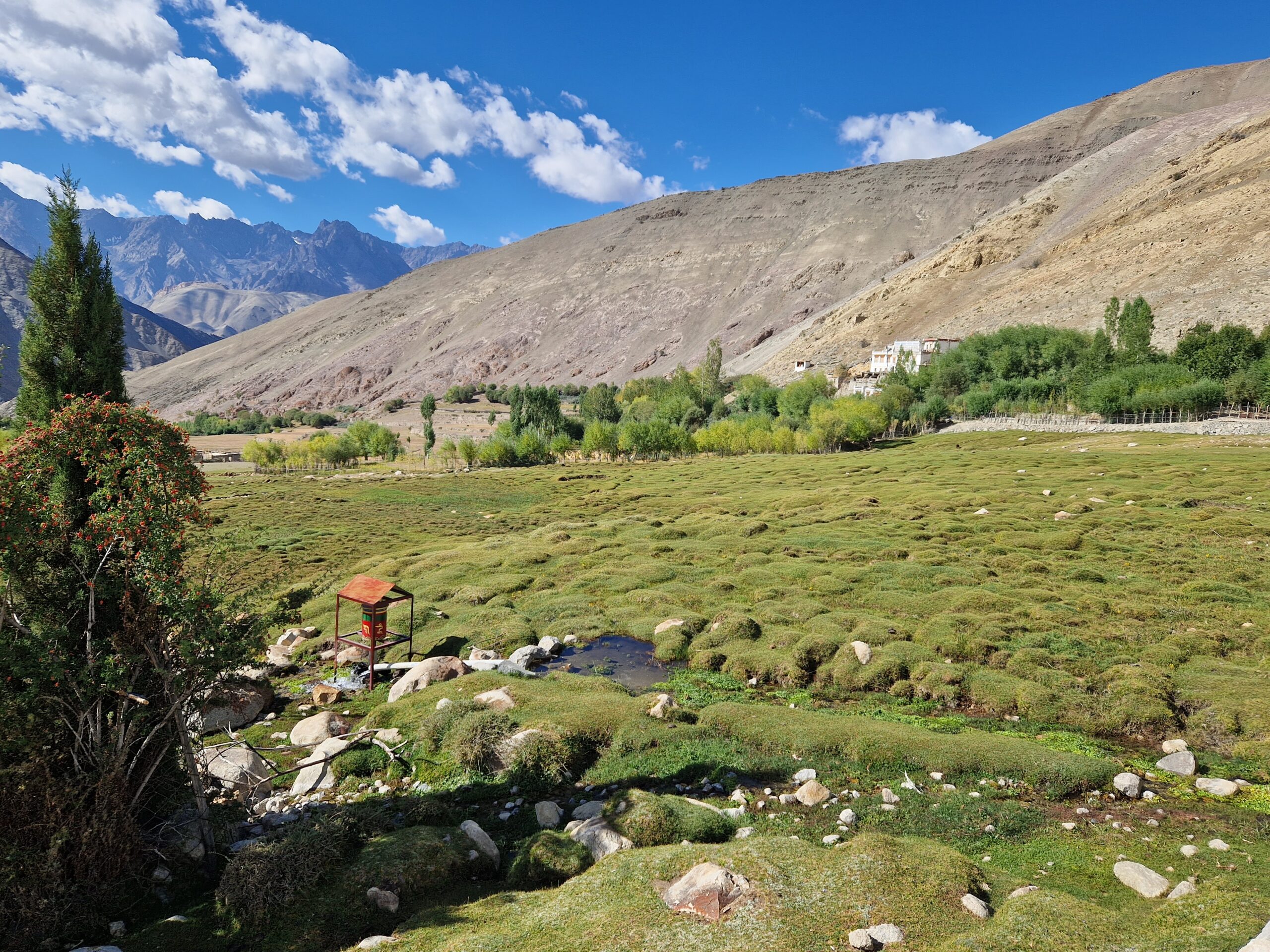

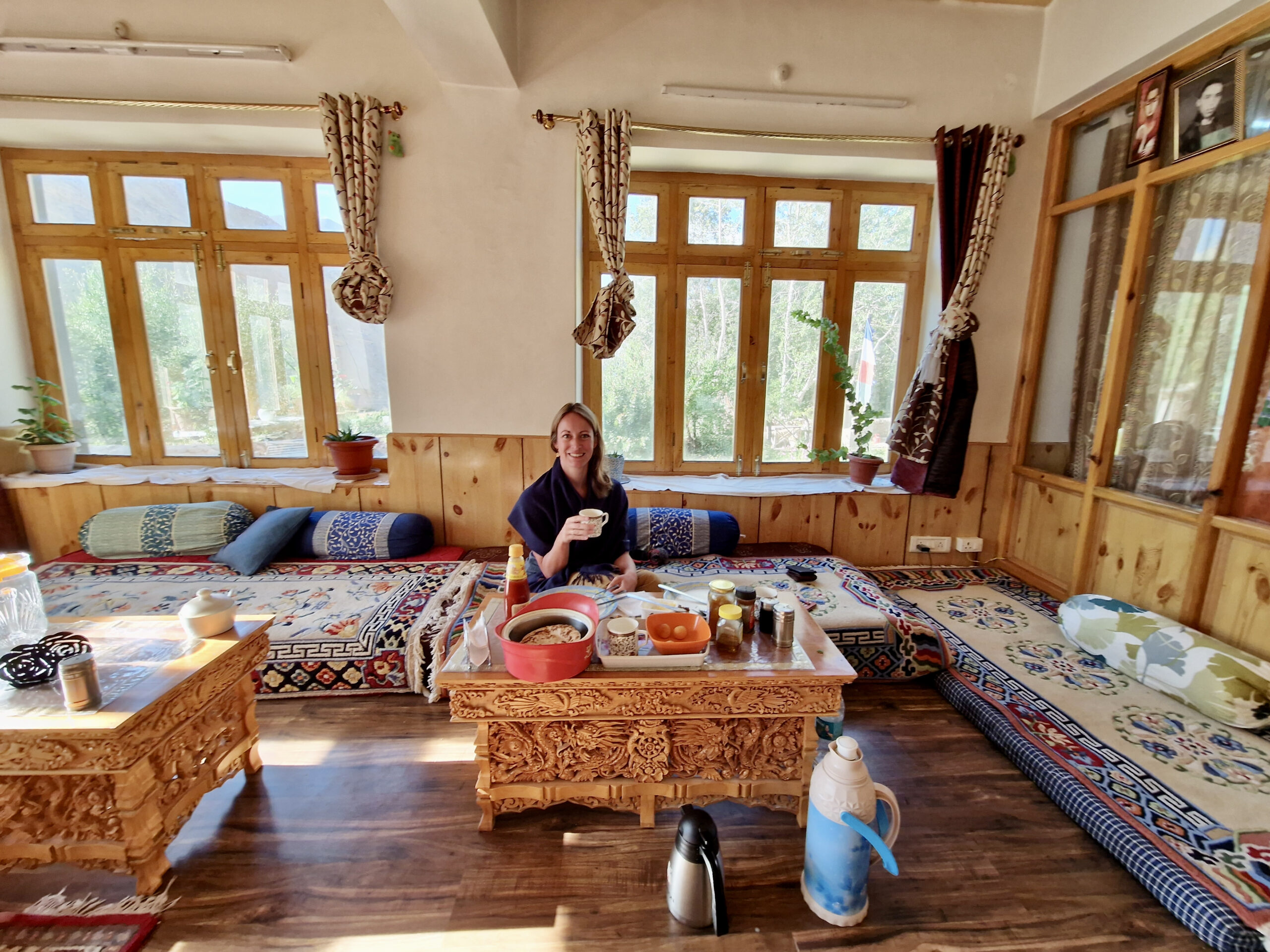
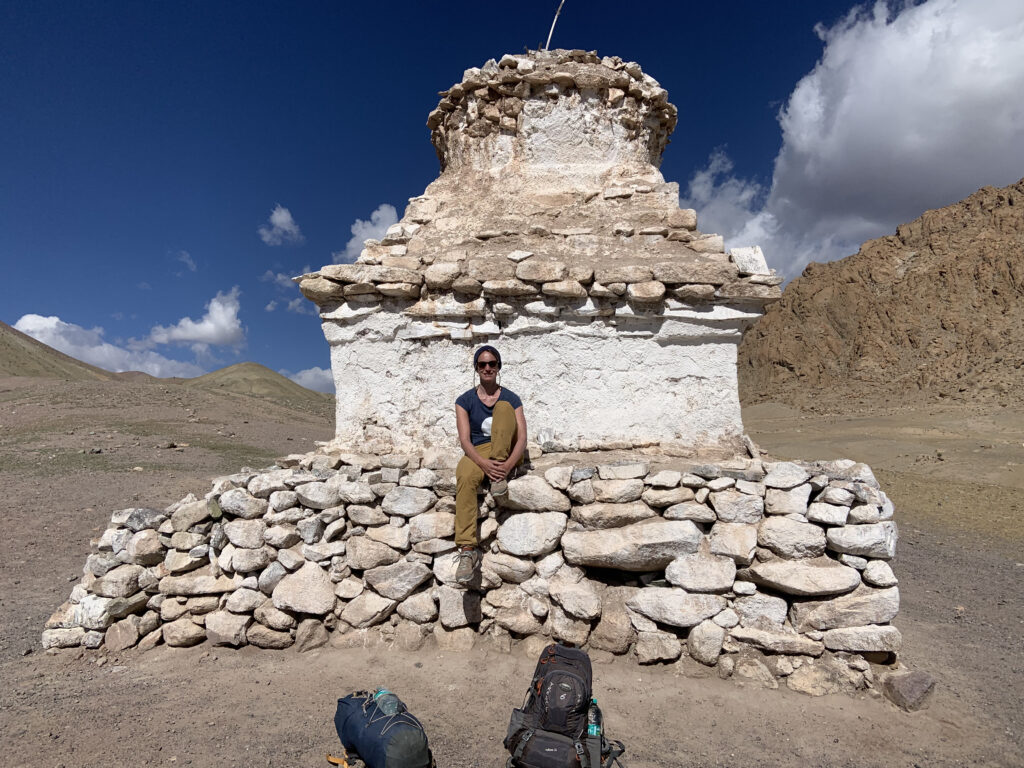
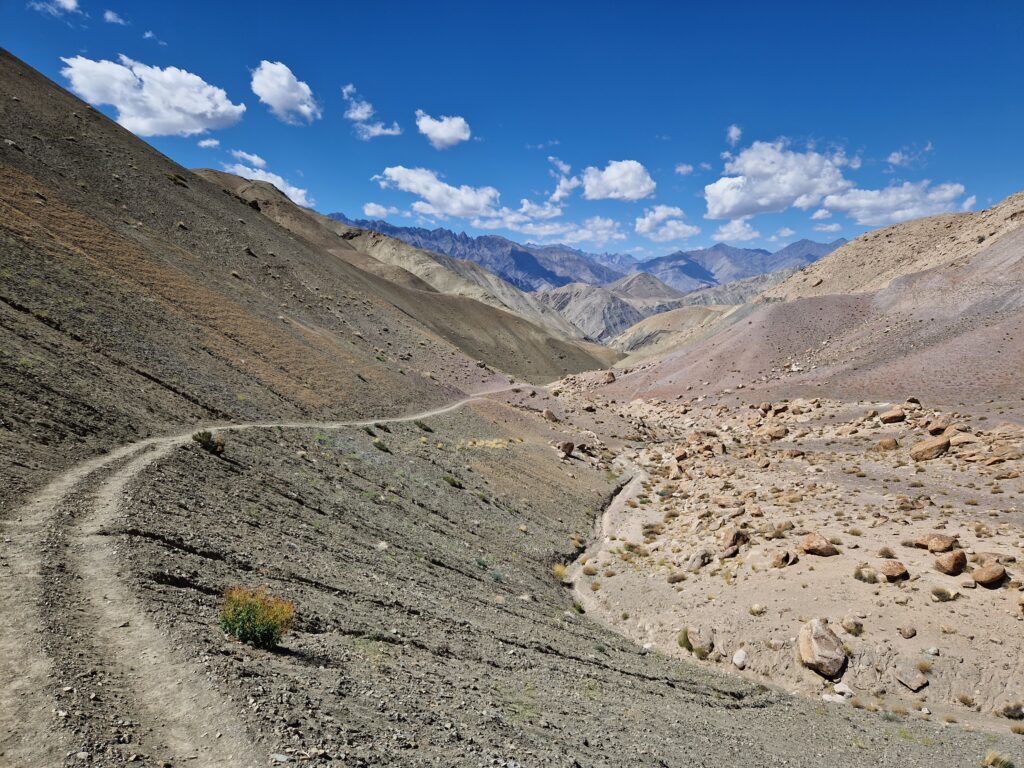

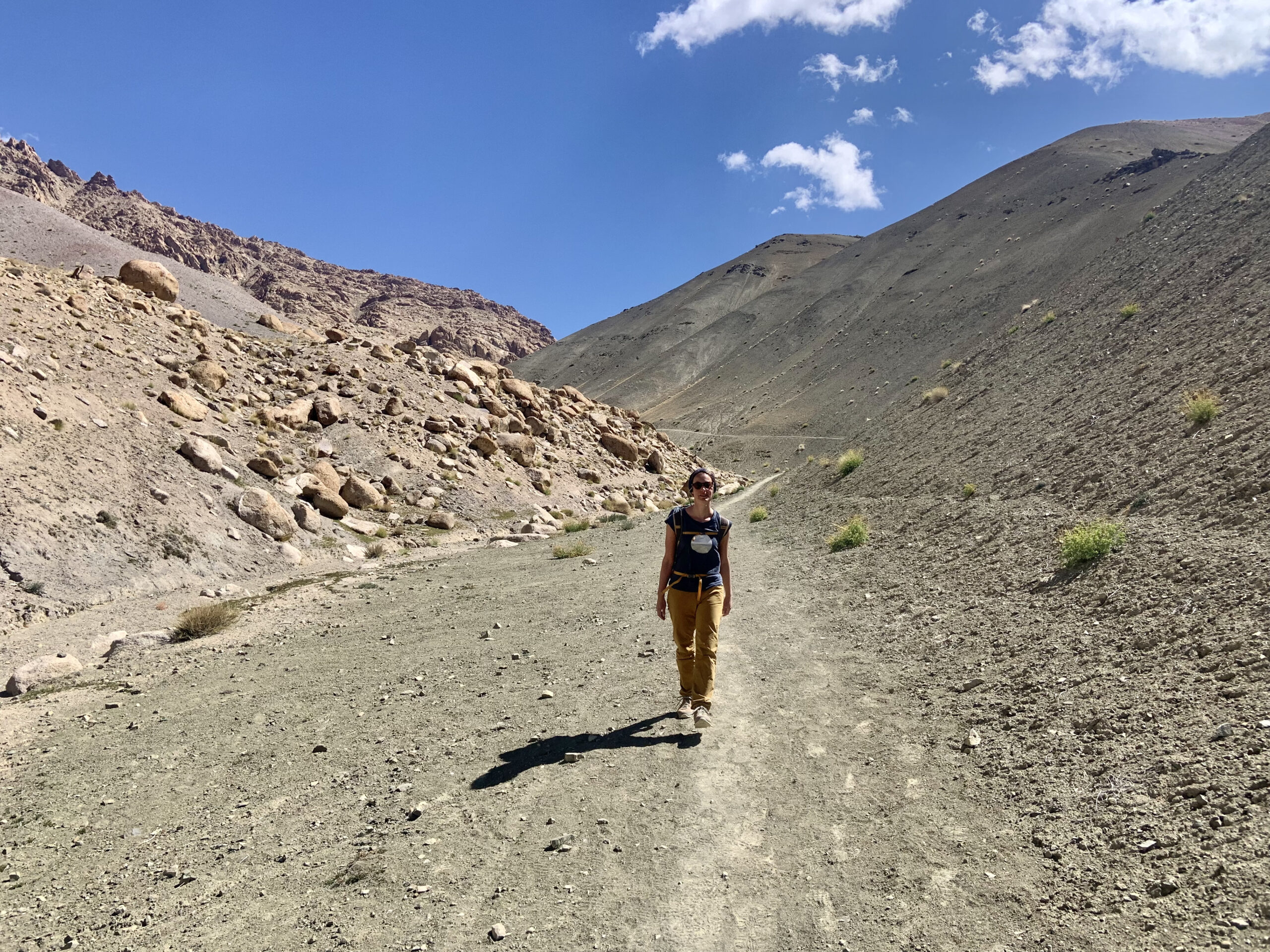
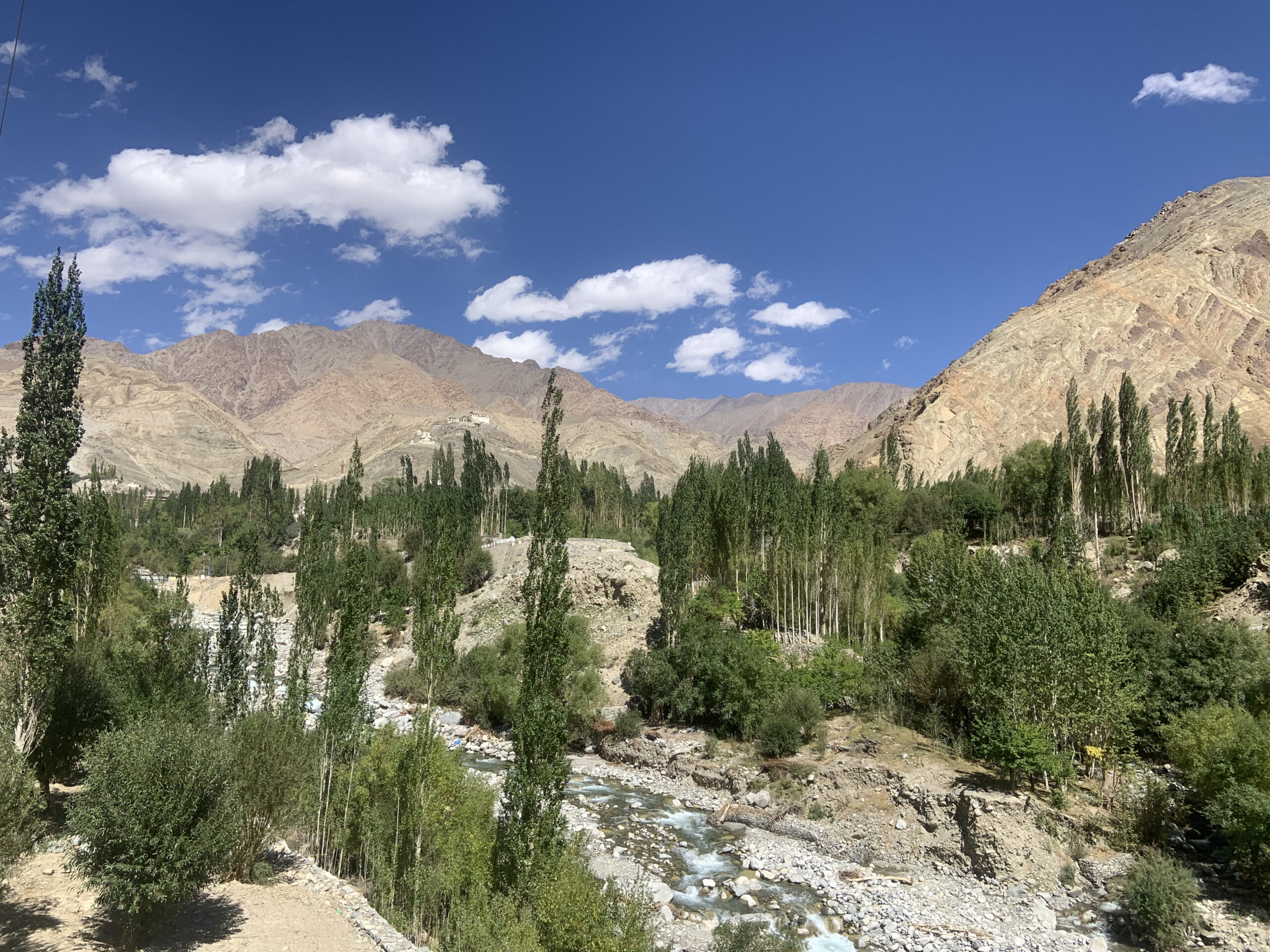
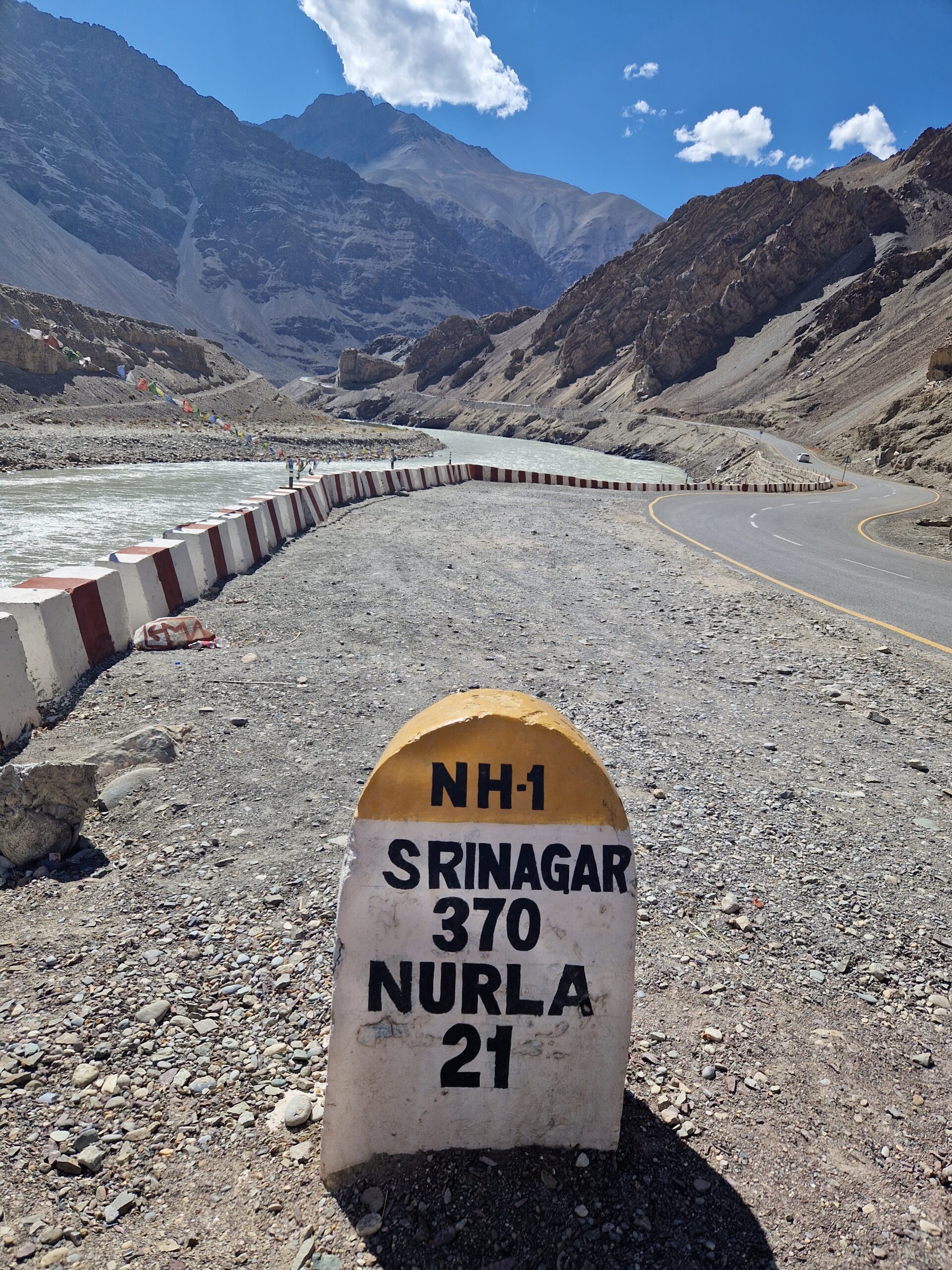

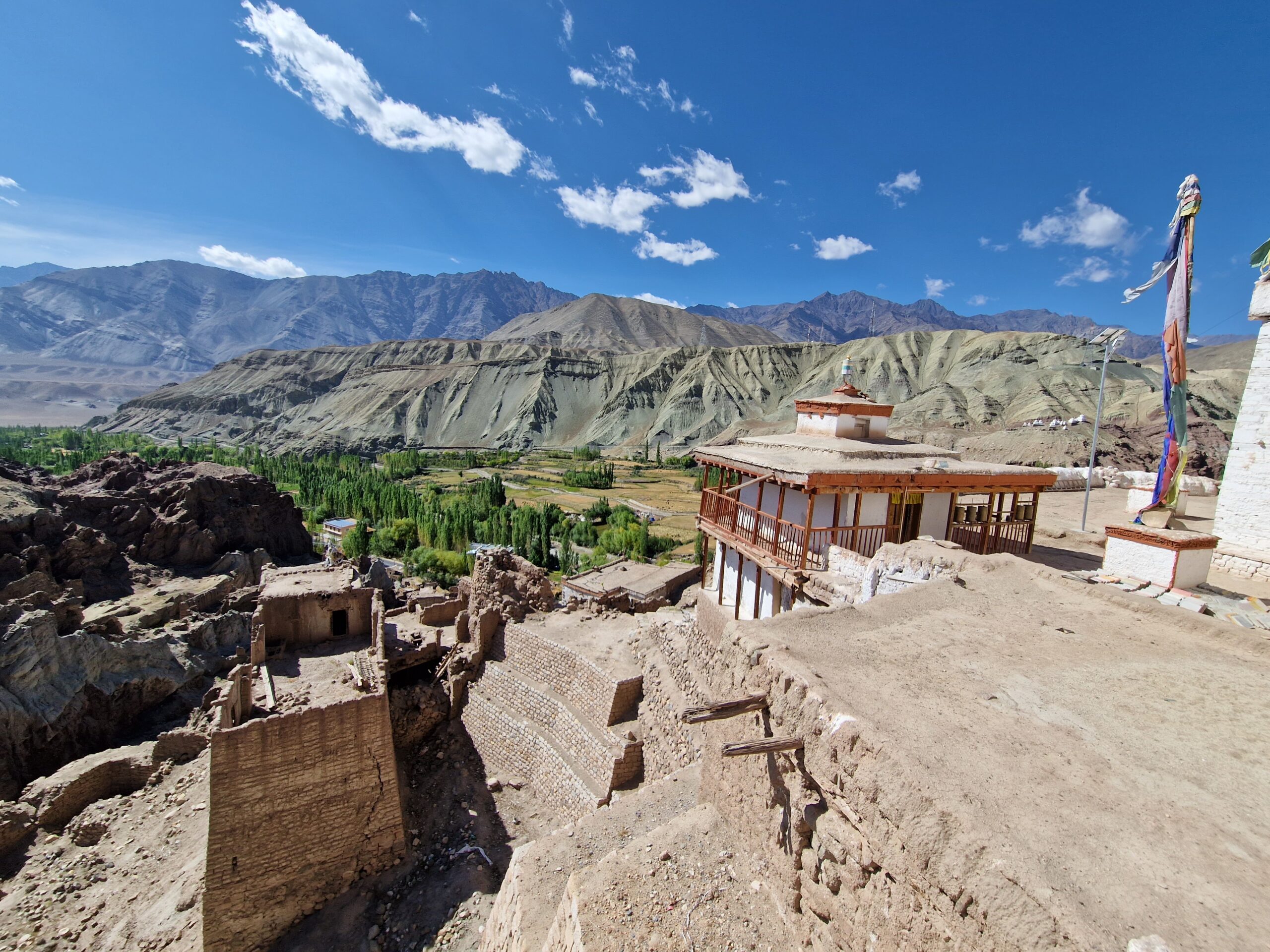
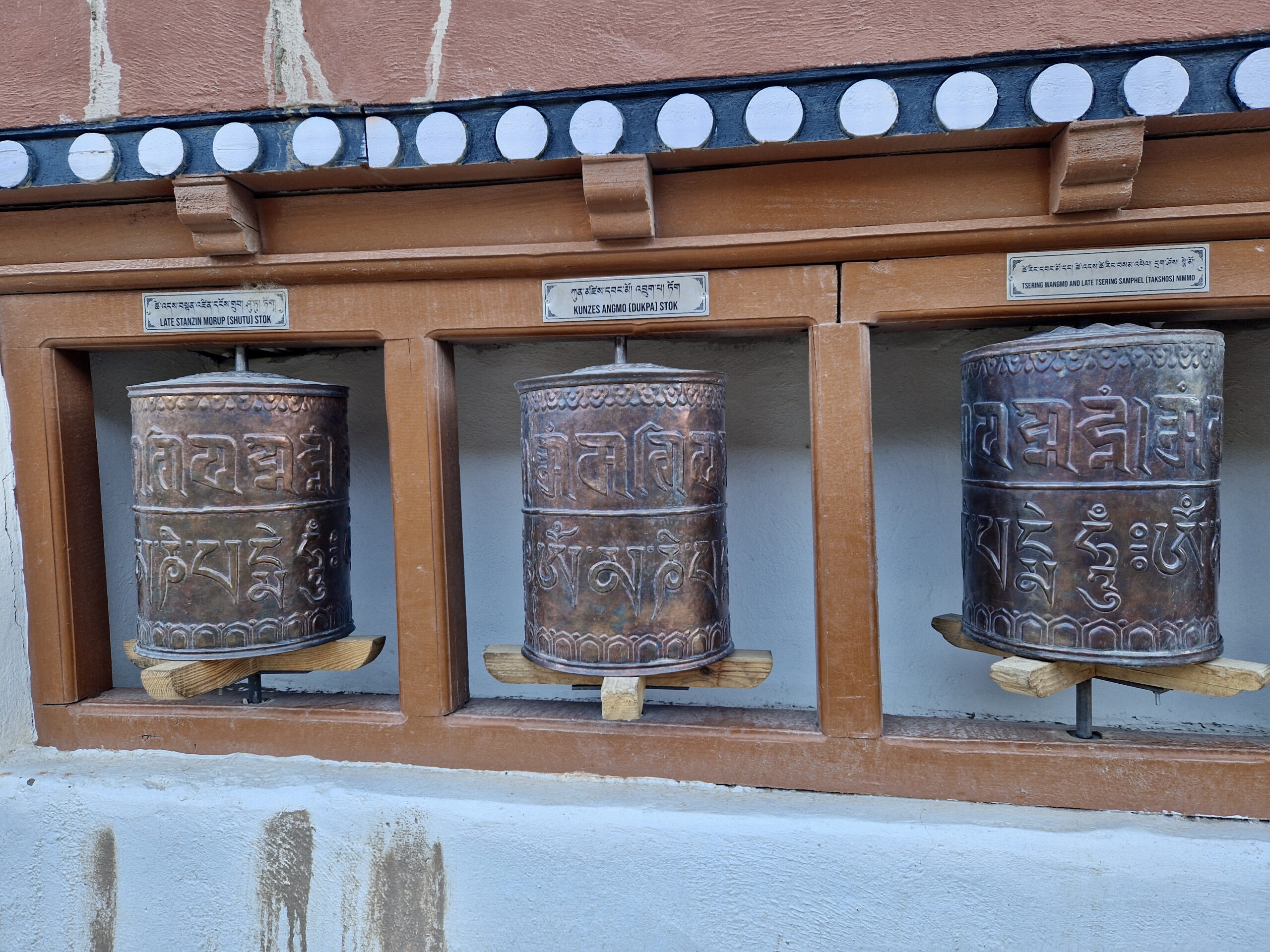
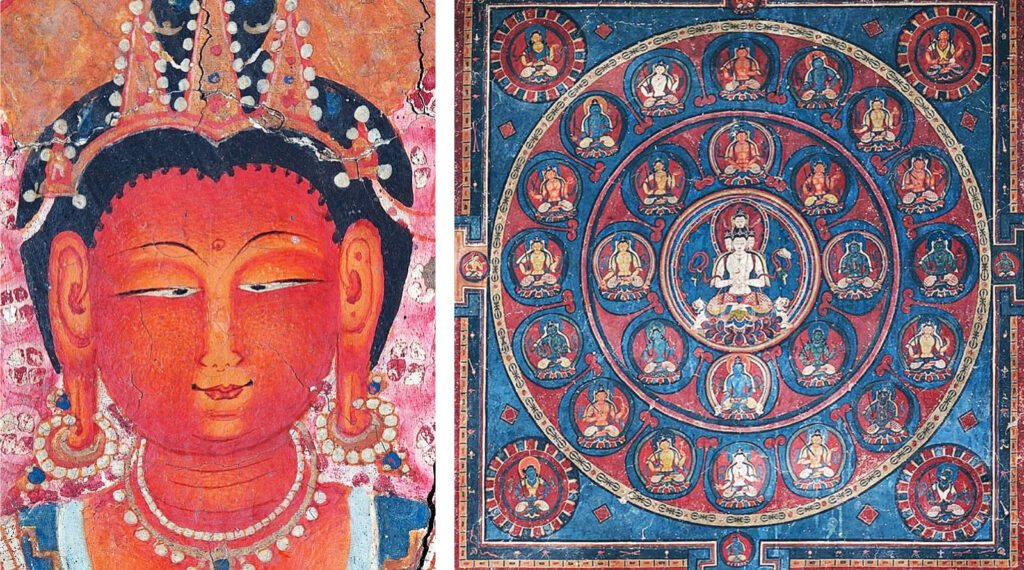

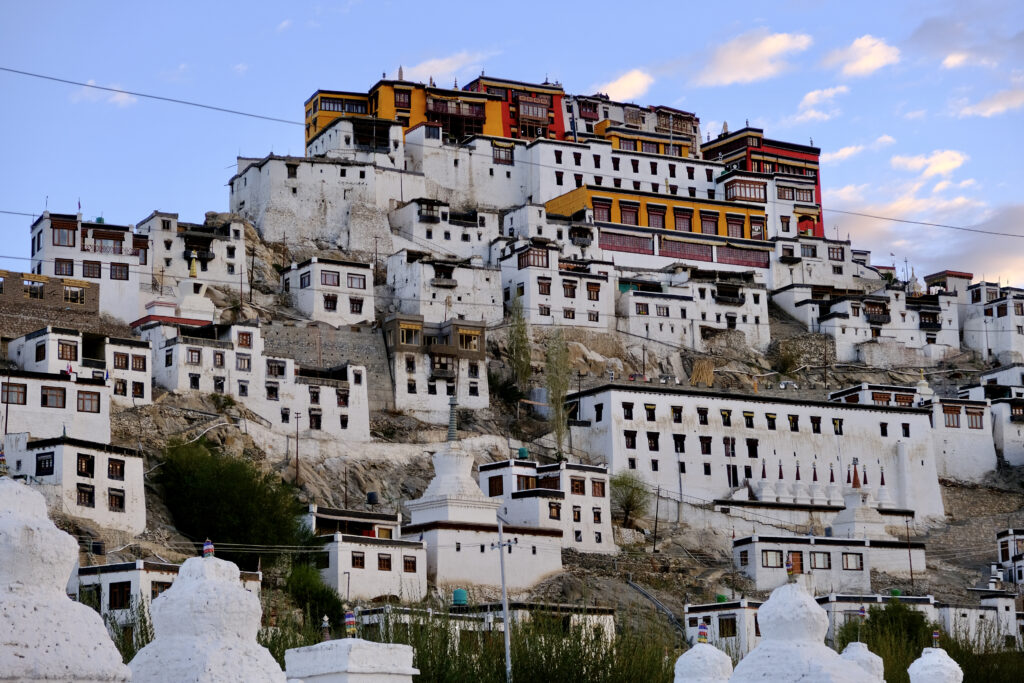
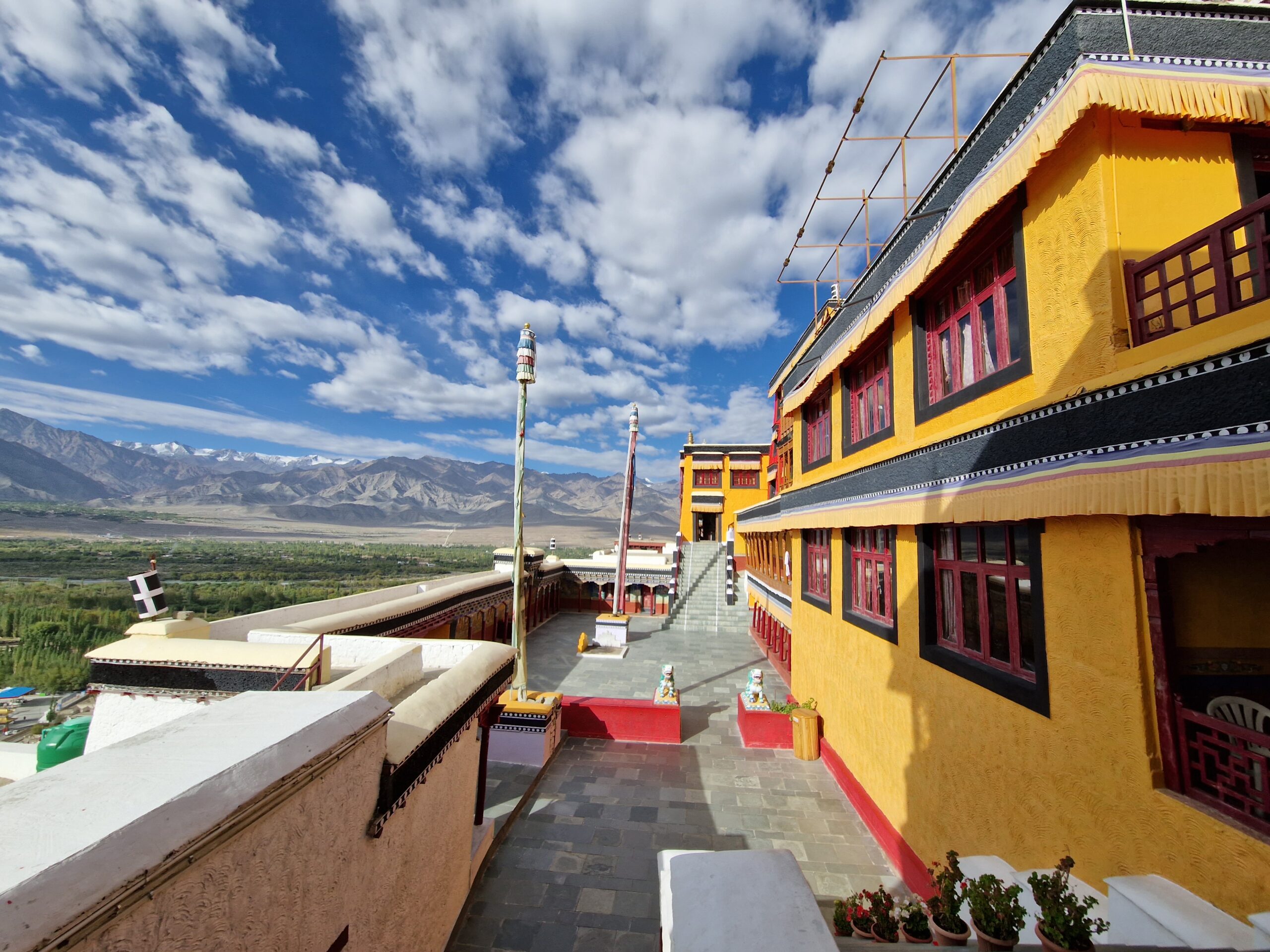
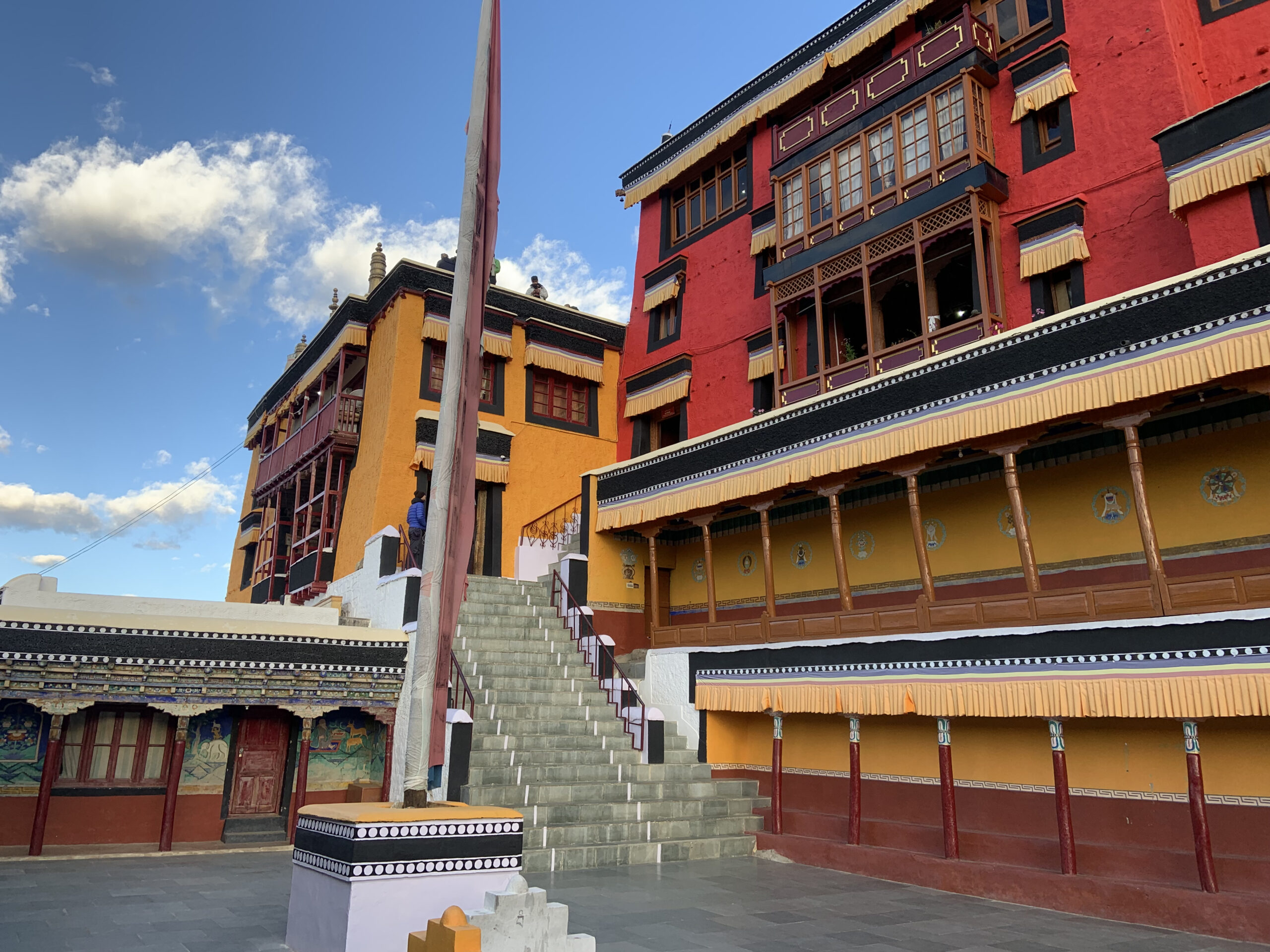
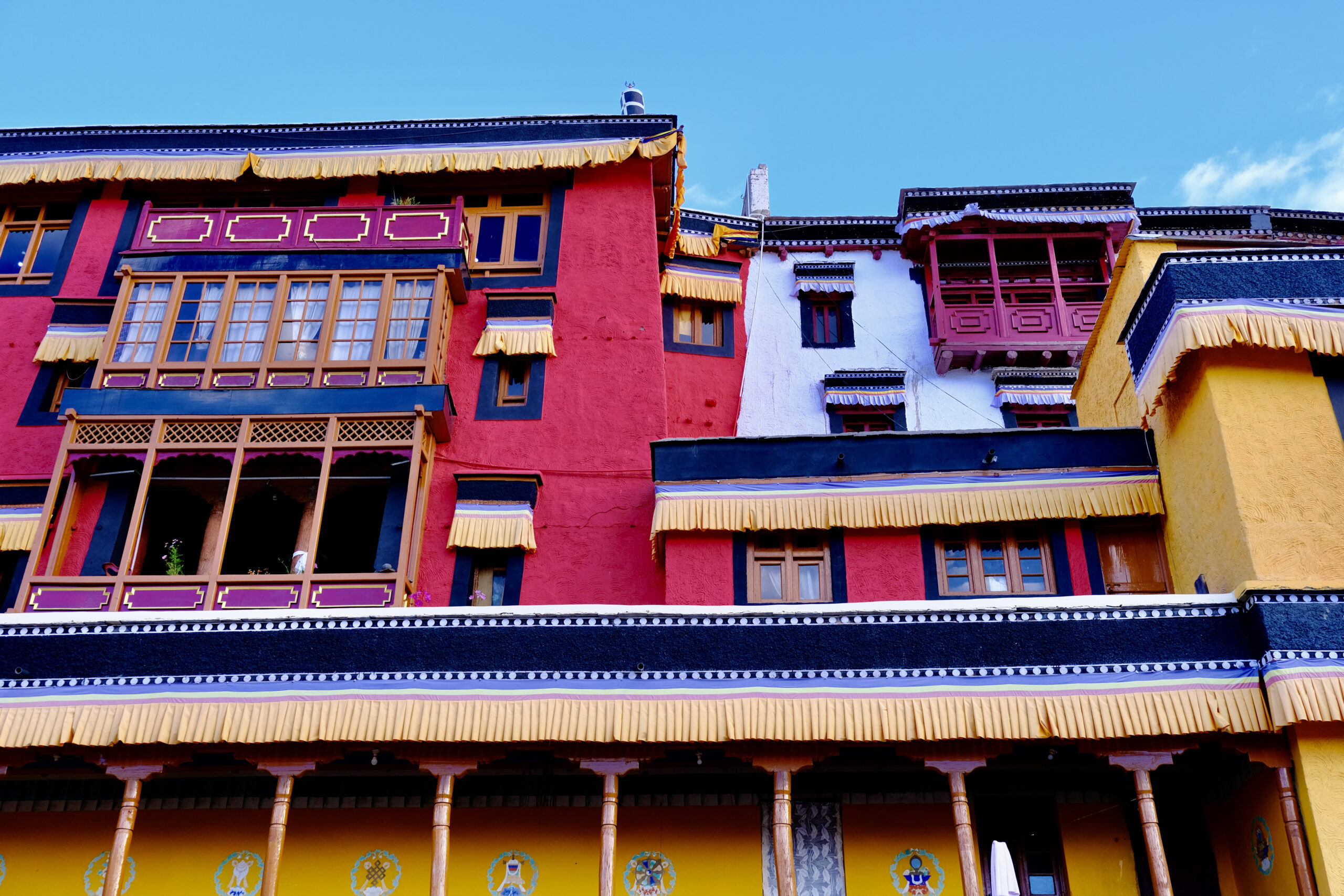
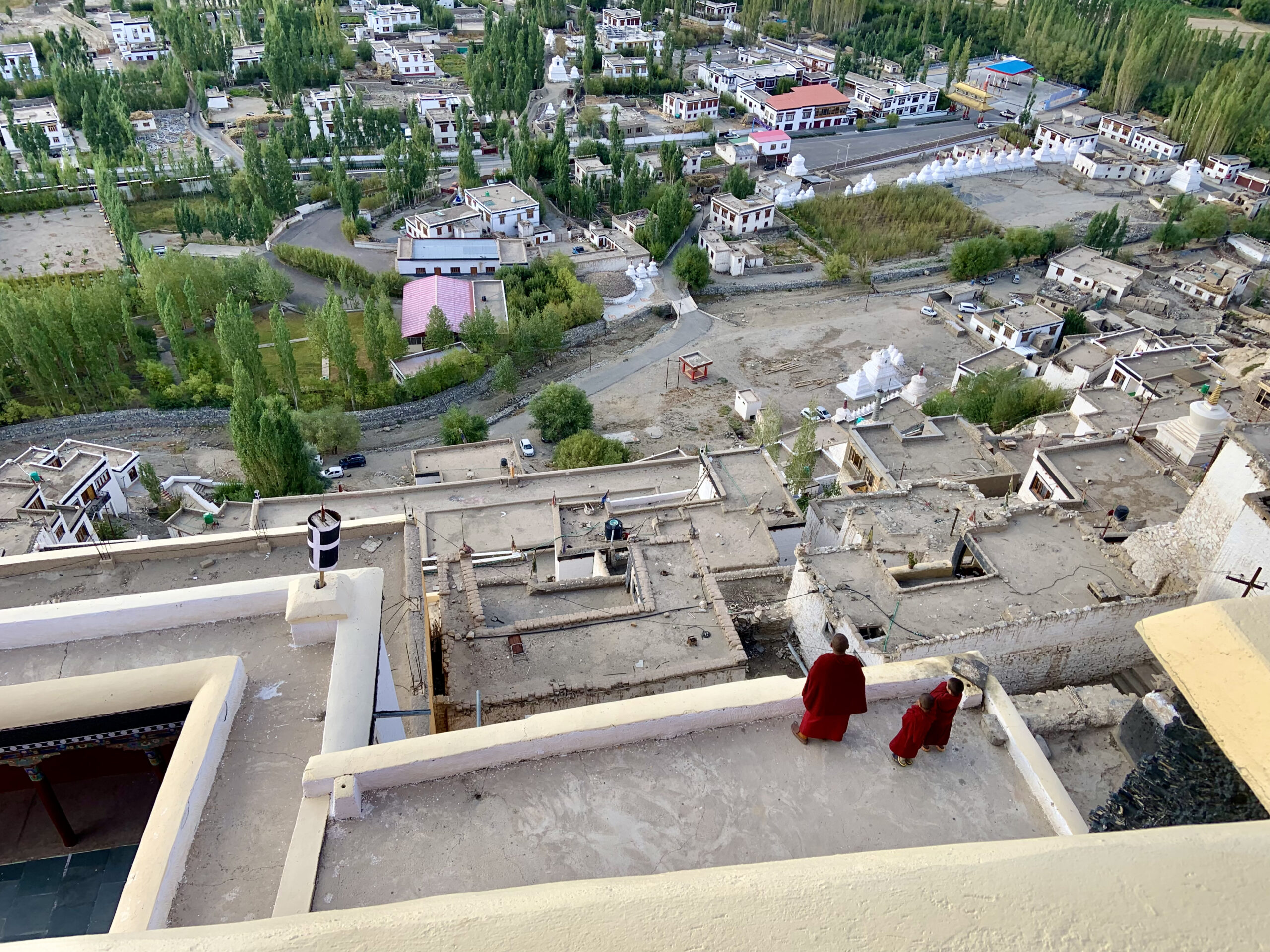
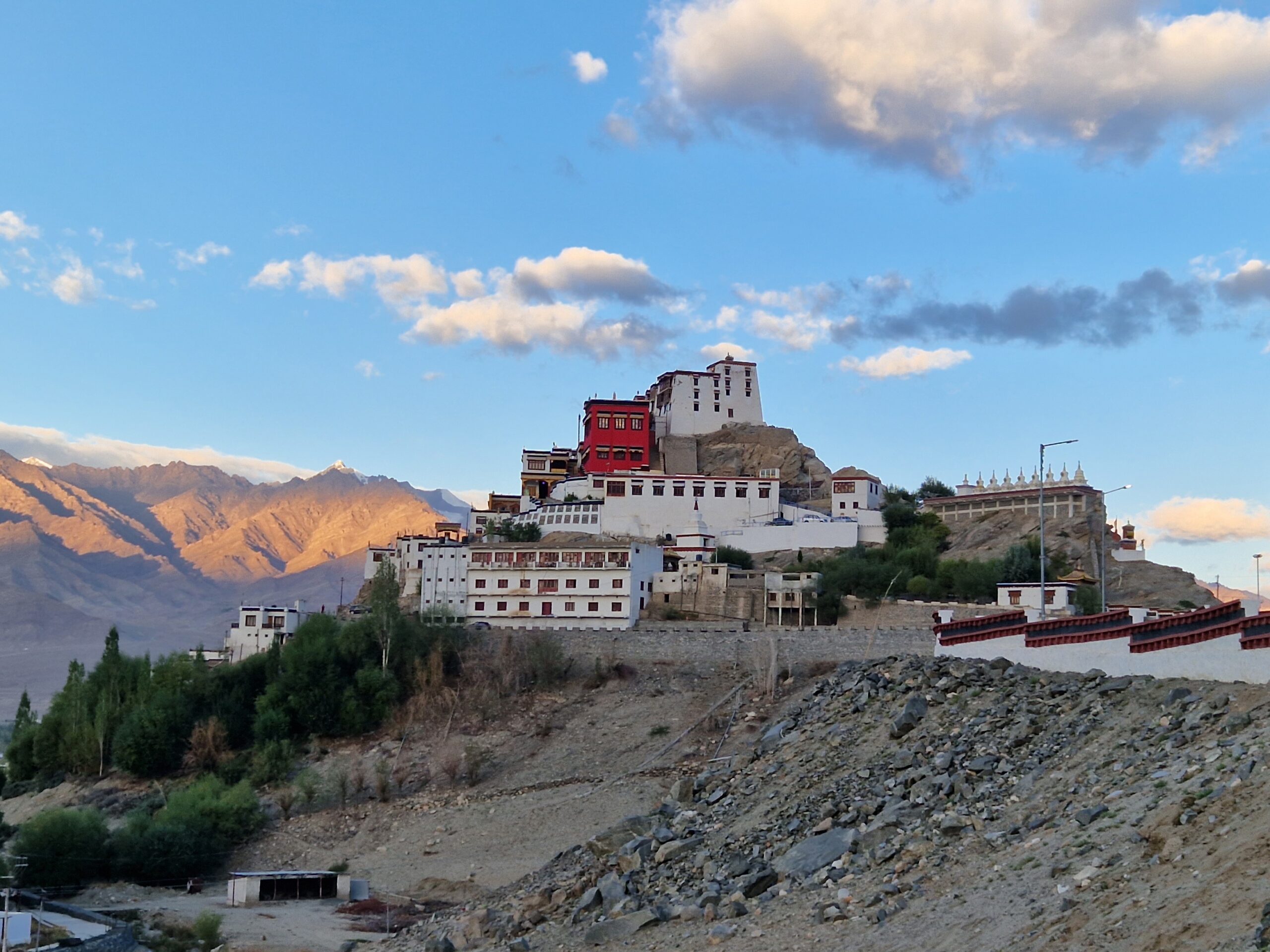
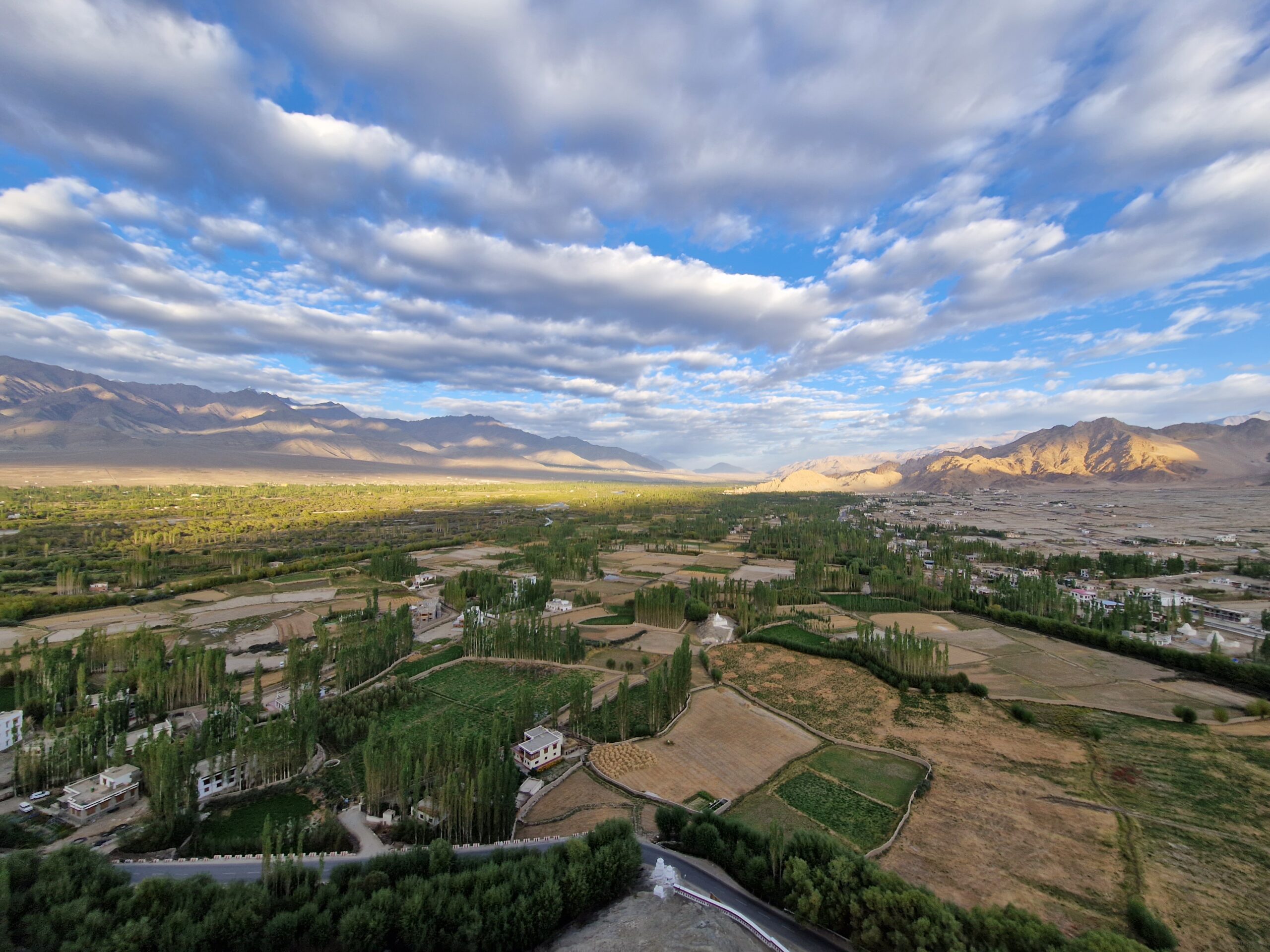
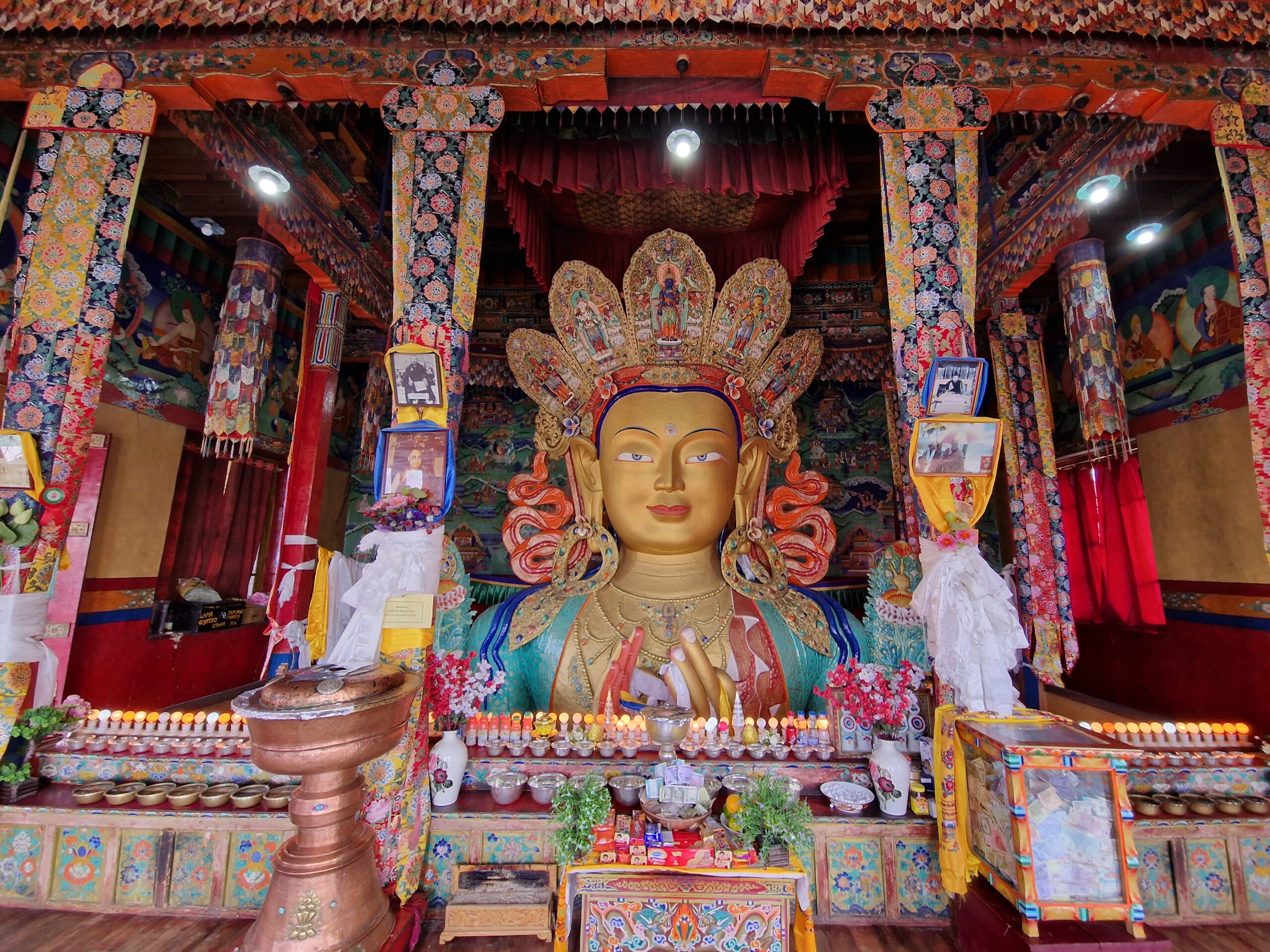
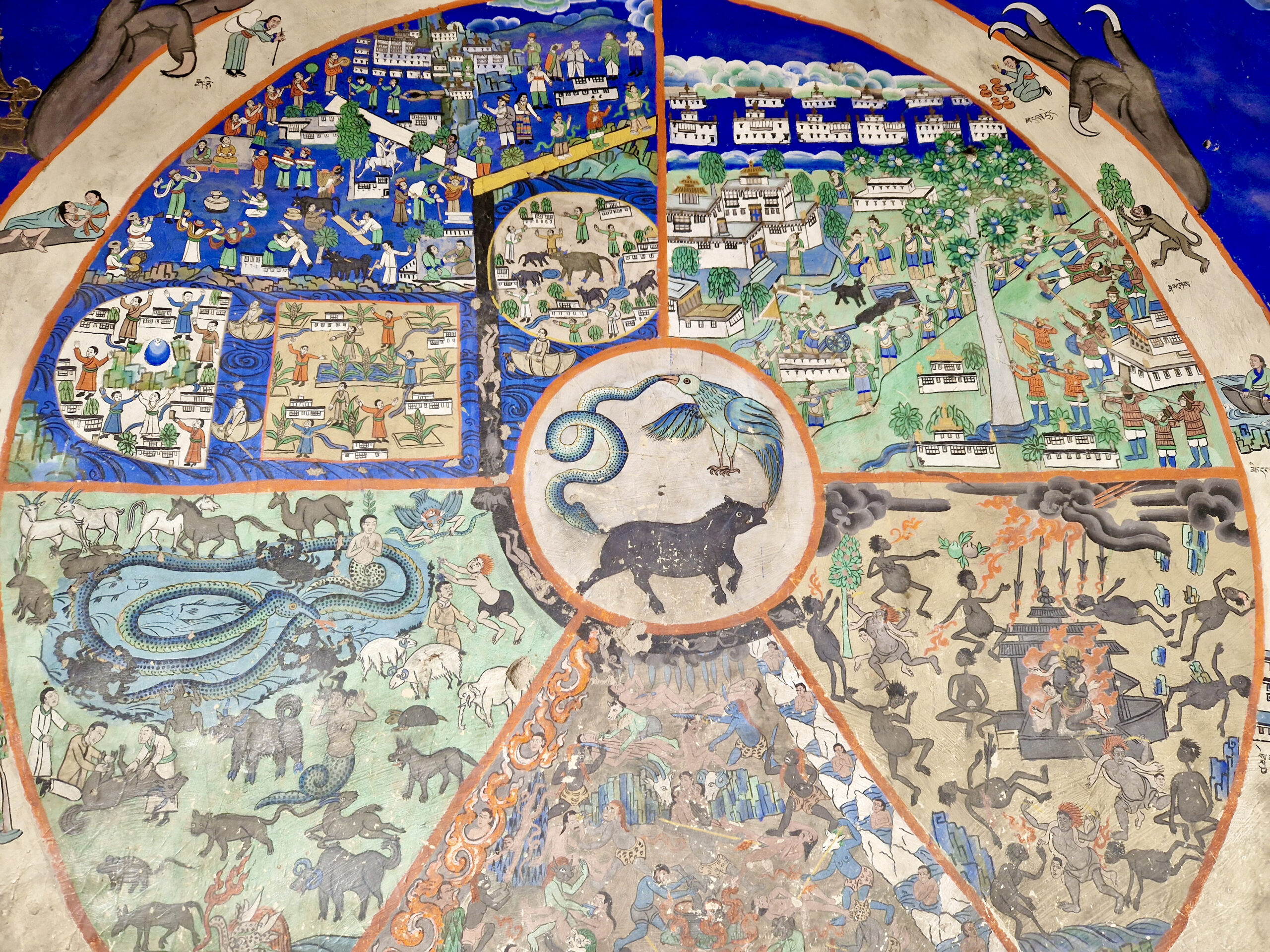
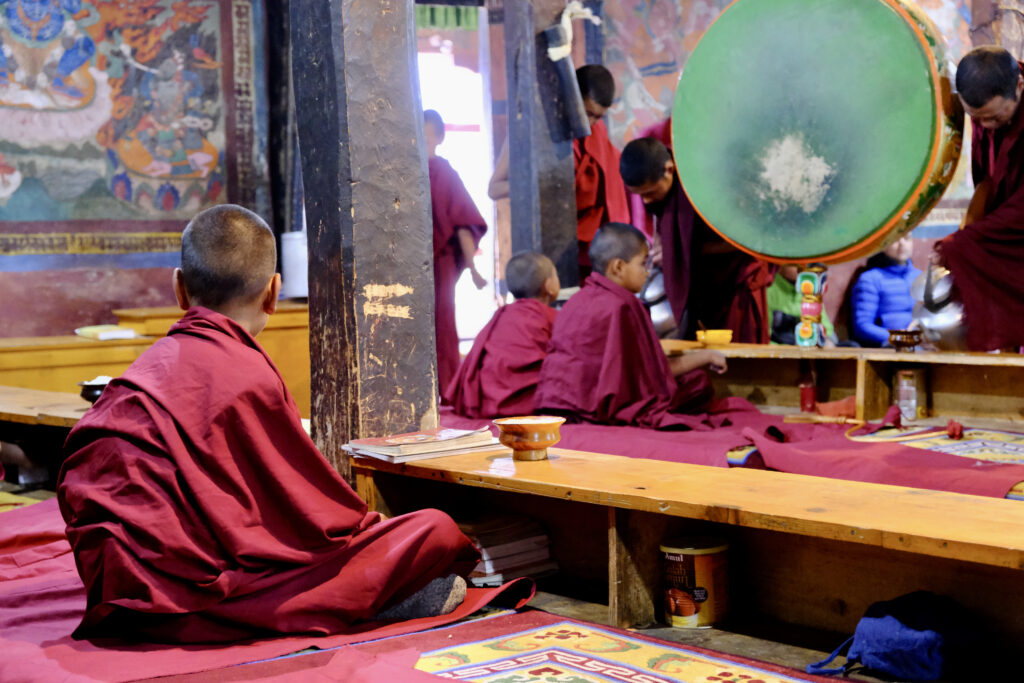
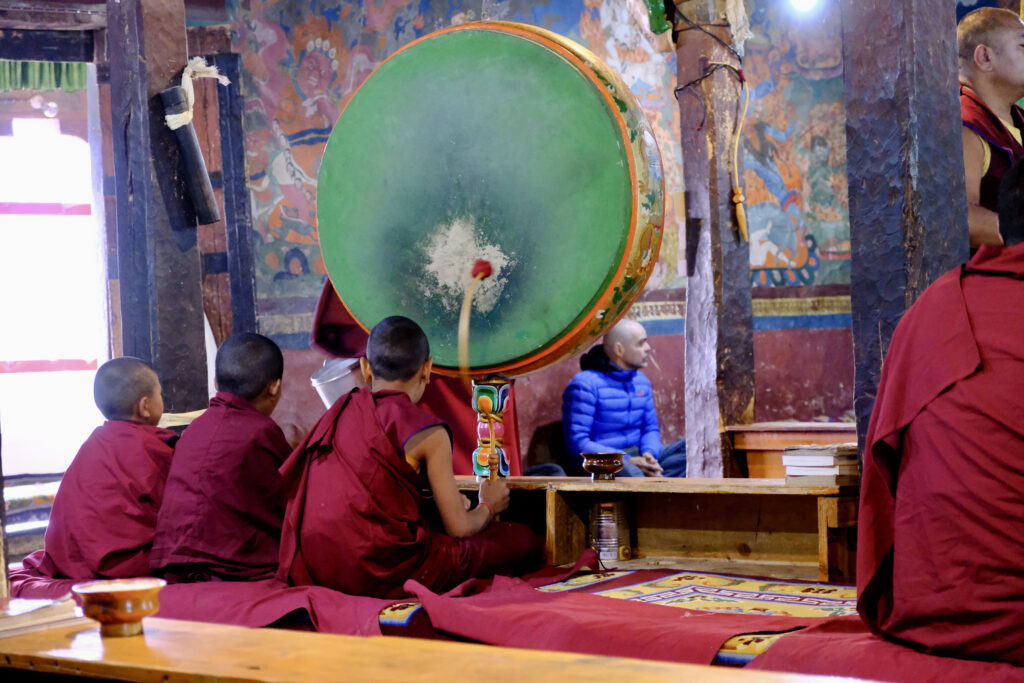
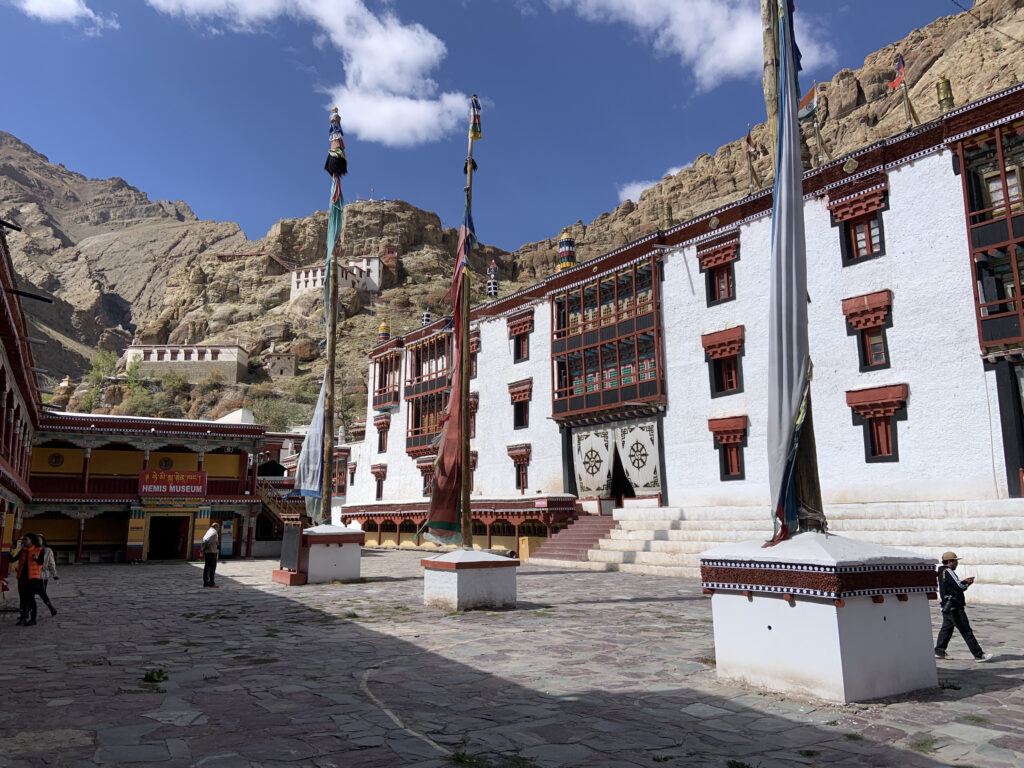
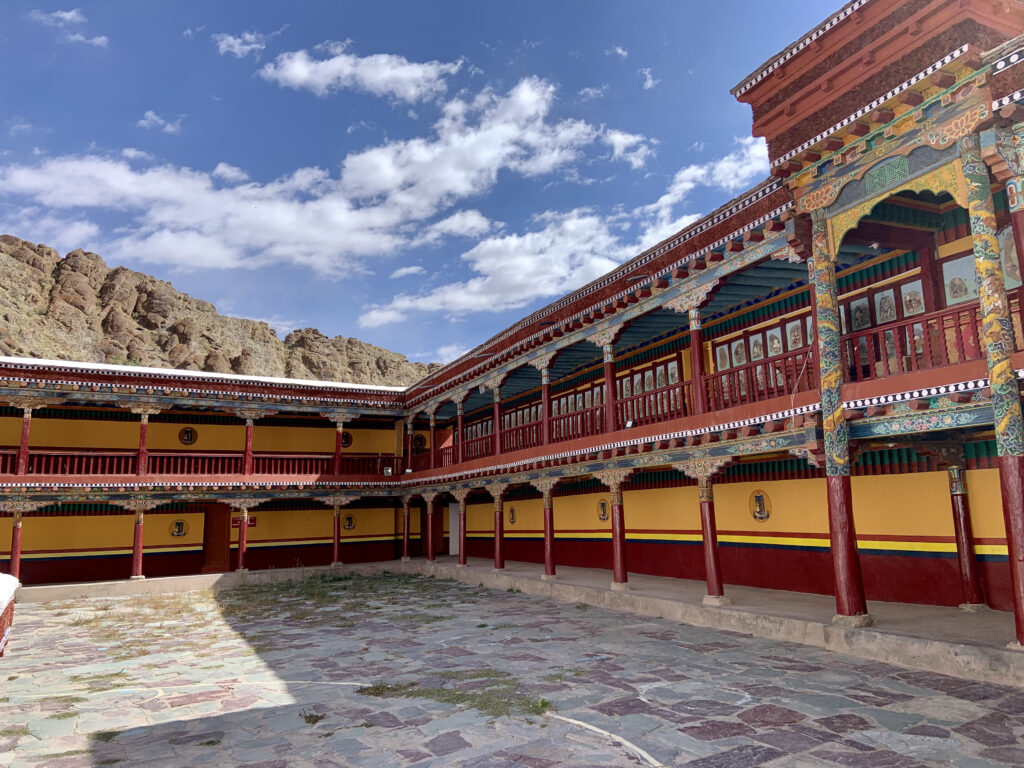
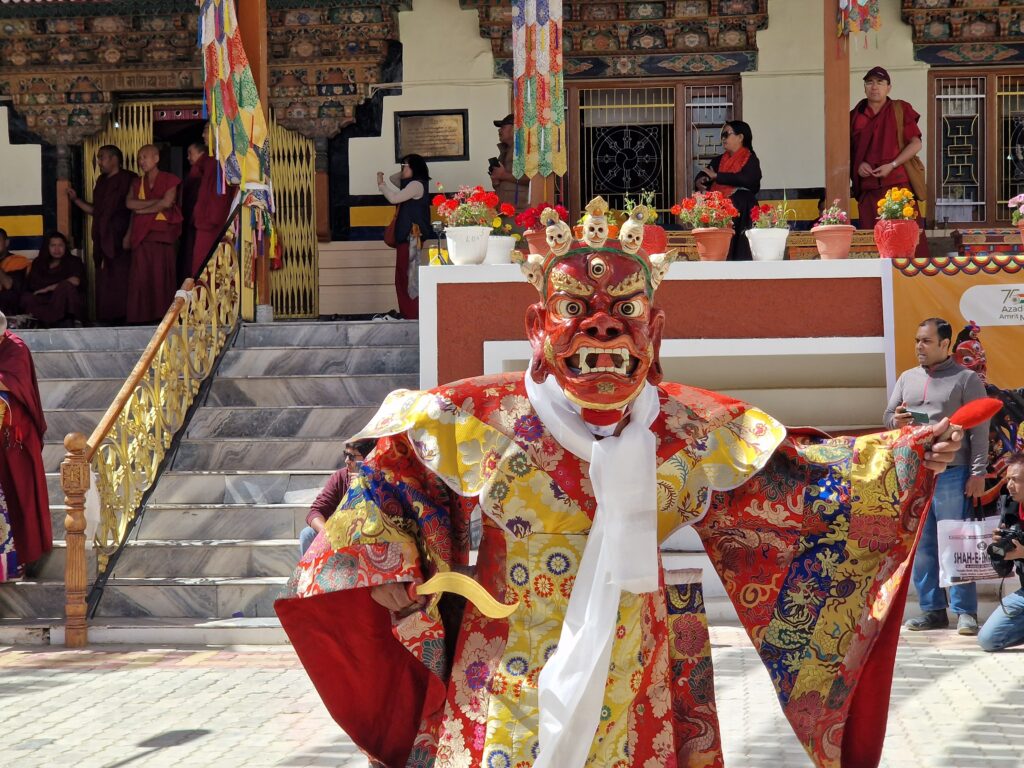


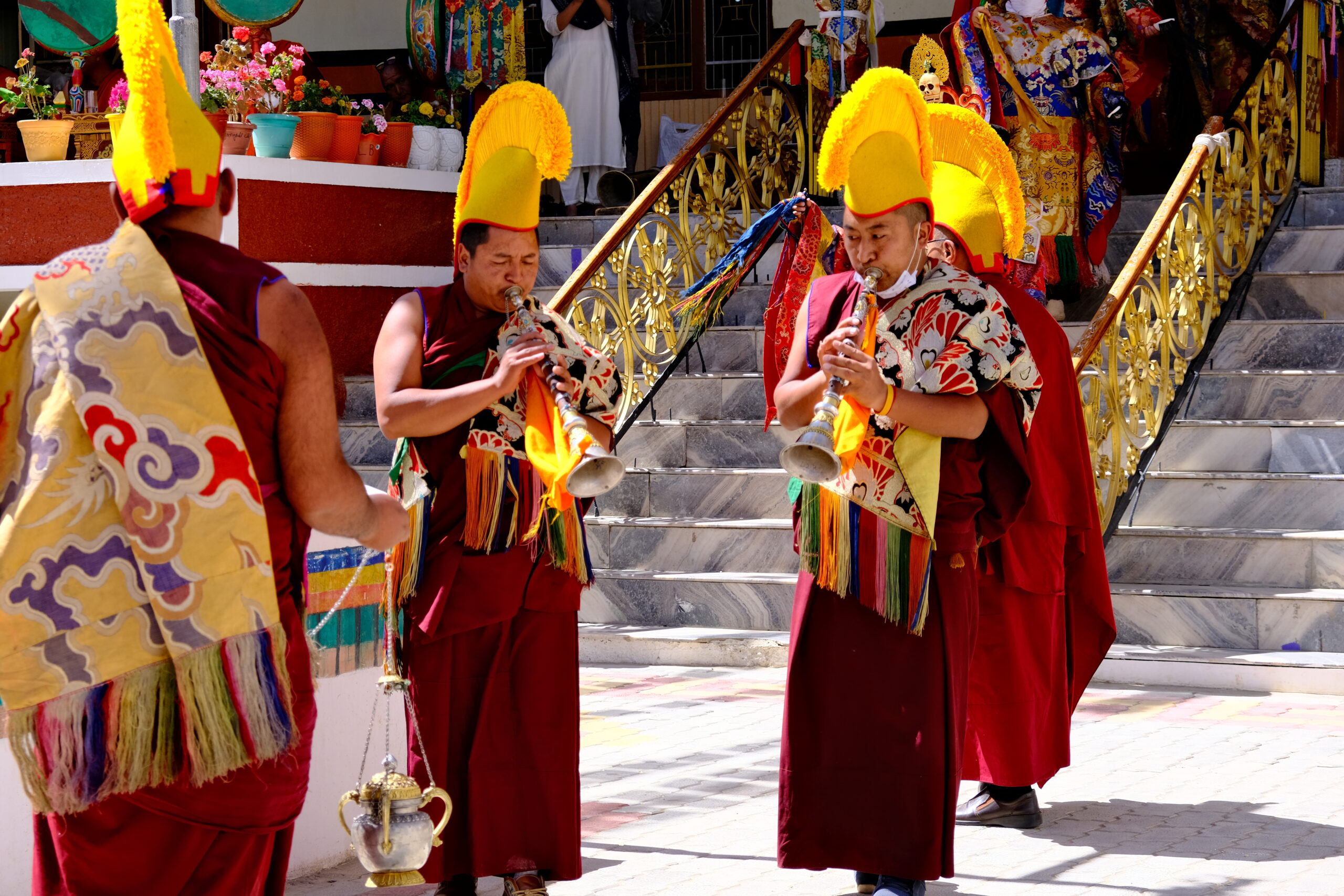
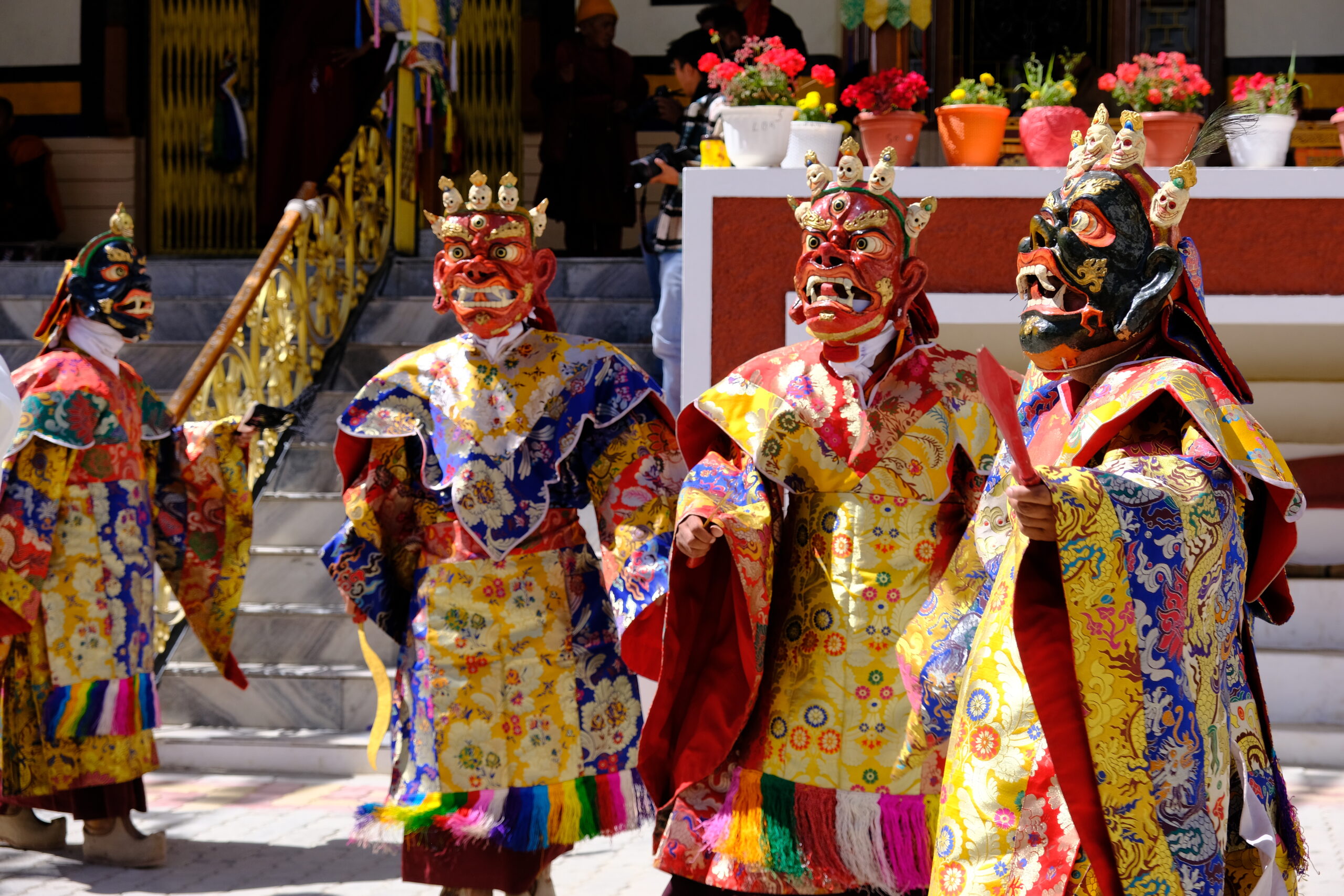
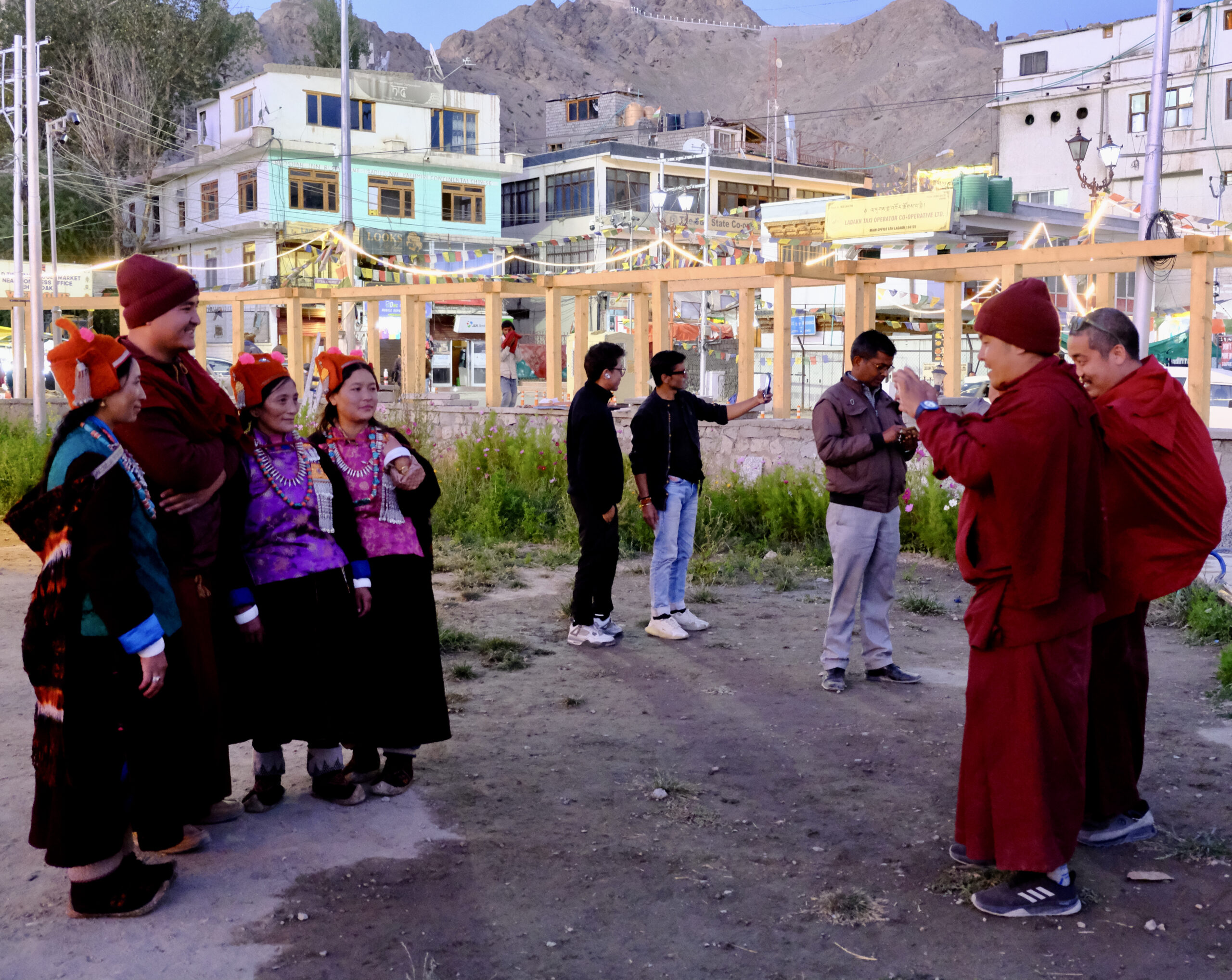
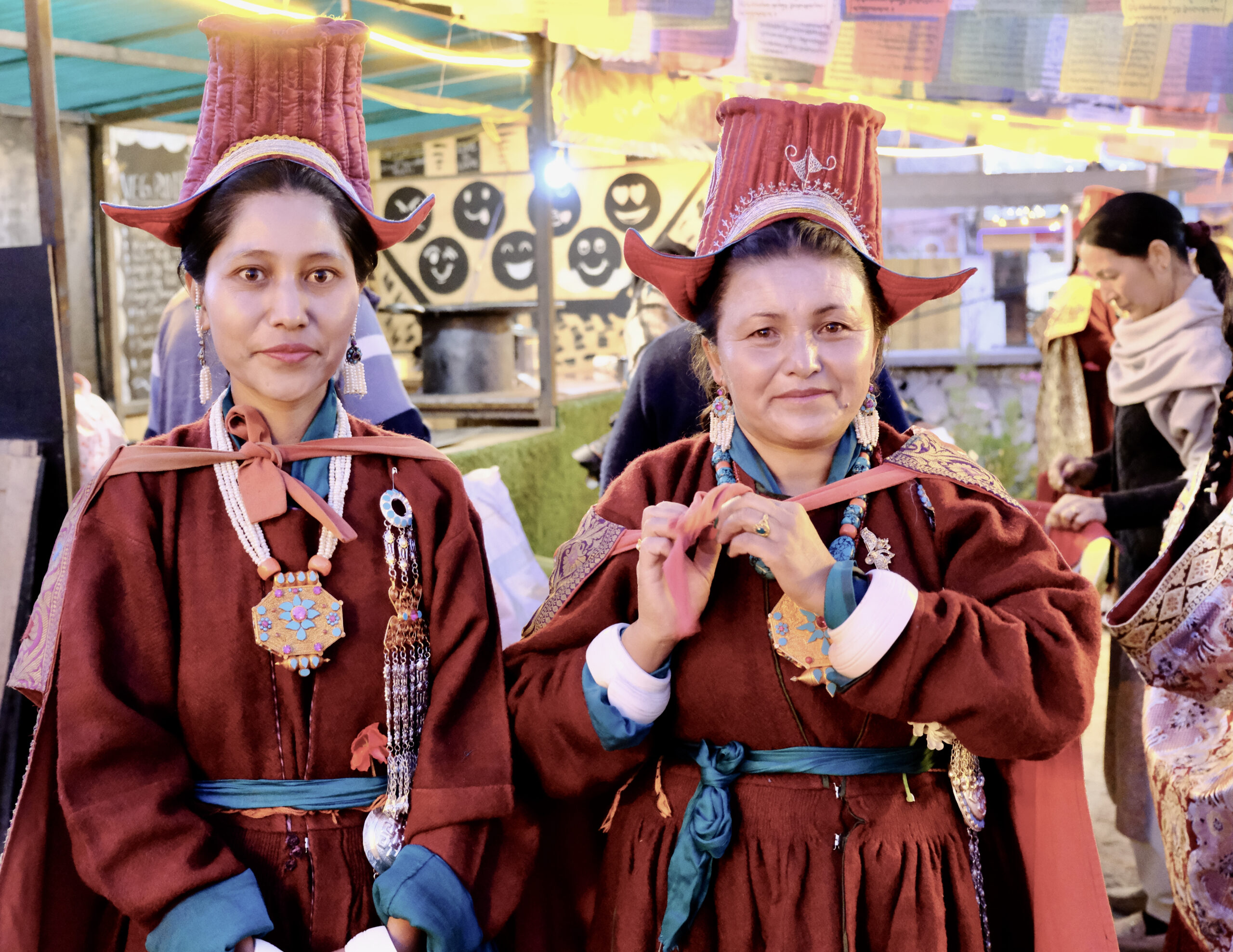
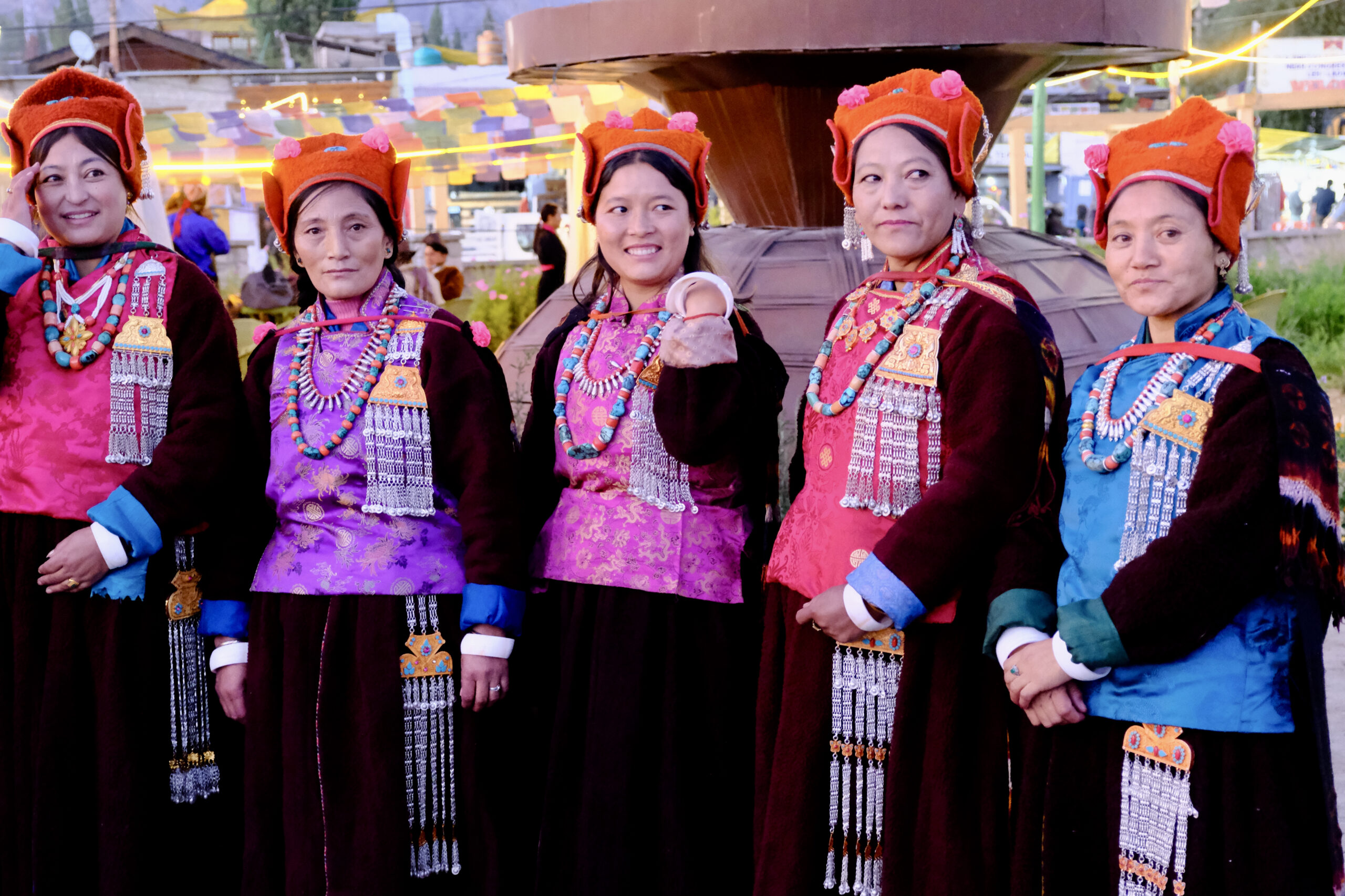
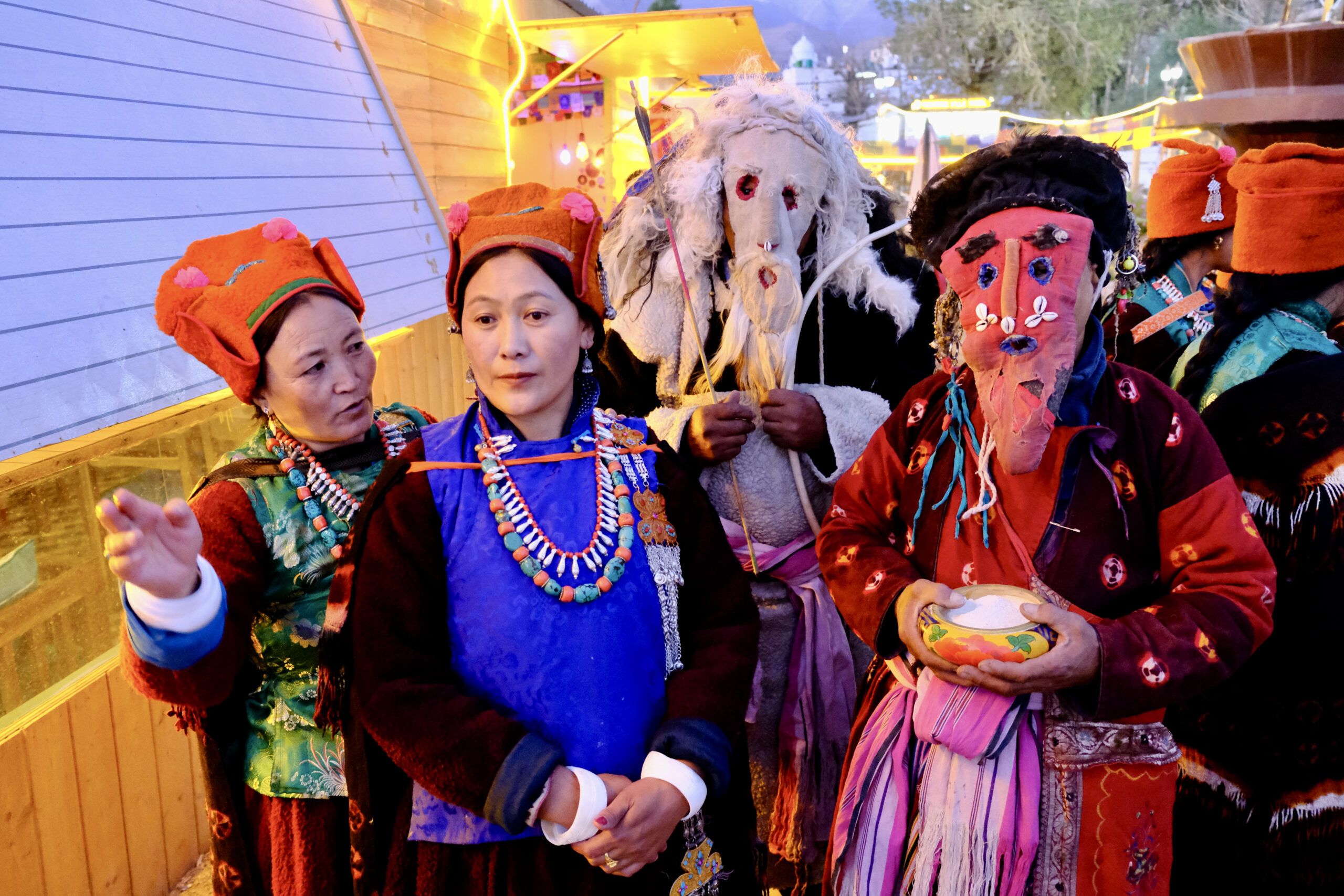
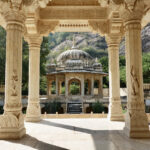
Leave a Reply